Up early and off the ship for a canal cruise on the Neva River through some of the city’s waterways. We took a short drive from the port to the canal pontoons and boarded our canal boat by 8:15 am and thankfully, this morning, the weather turned out so much better than yesterday! Cool and clear, blue skies and a lap rug… what more could you want.
The canal cruise left from right near the Kunstakamera, which is the St Petersburg science museum, also known as the Cabinet of Curiosities. It was established by Peter the Great (he seems to have done a lot of establishing), in 1727 and it hosts an enormous collection of over 2 million items of anthropological and ethnographical importance.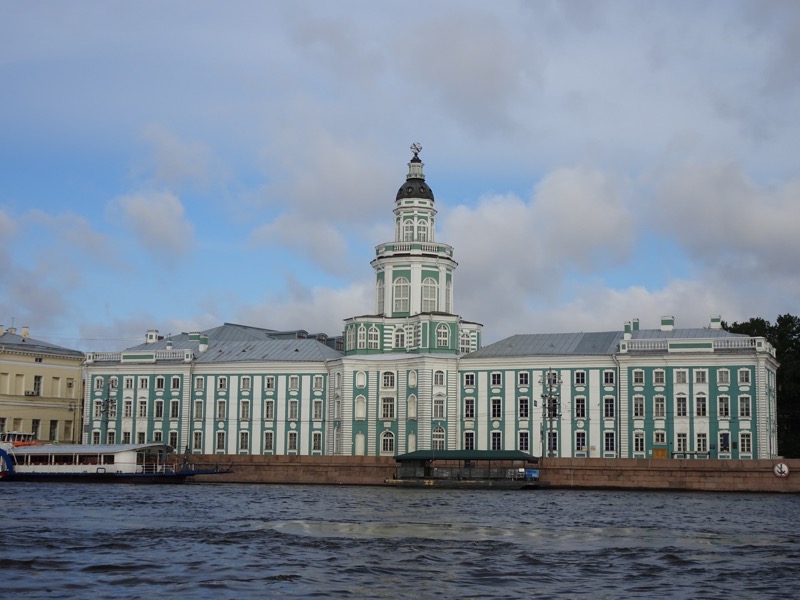 Directly opposite is the amazing Winter Palace, also known as the Hermitage Museum, which has been on my bucket list for some time now… but more on that a bit later. 🙂
Directly opposite is the amazing Winter Palace, also known as the Hermitage Museum, which has been on my bucket list for some time now… but more on that a bit later. 🙂 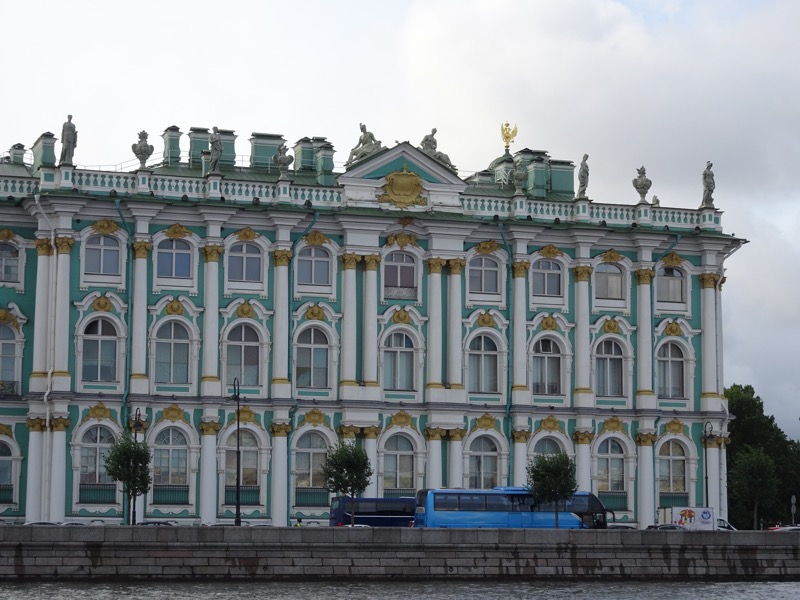 Further down the canal, we finally got a better look at the unique lighthouses that we tried to see last night in the rain – they are known as the Rostral Columns and they are placed on the square directly in front of the Stock Exchange building. At 32 meters tall, the red brick towers were used as lighthouses from 1727 until the mid 19th century, at which the Spit of Vasilyevsky was a functioning port still. They are decorated with prows of conquered ships and mythical sirens.
Further down the canal, we finally got a better look at the unique lighthouses that we tried to see last night in the rain – they are known as the Rostral Columns and they are placed on the square directly in front of the Stock Exchange building. At 32 meters tall, the red brick towers were used as lighthouses from 1727 until the mid 19th century, at which the Spit of Vasilyevsky was a functioning port still. They are decorated with prows of conquered ships and mythical sirens.

 The ‘Little Mansion’ built by Catherine to entertain her private guests along side the enormous Winter Palace.
The ‘Little Mansion’ built by Catherine to entertain her private guests along side the enormous Winter Palace. St Peter and Paul’s Fortress from the canal…
St Peter and Paul’s Fortress from the canal… St Petersburg has many beautiful bridges – over 500, according to Maria, and the widest is a huge 99m wide. St Petersburg has so many canals and bridges, that many have dubbed the city, ‘The Venice of the North’… though we are reliably informed that Russians prefer to think of Venice, as ‘The St Petersburg of the South’, because SPB has far more bridges than Venice!
St Petersburg has many beautiful bridges – over 500, according to Maria, and the widest is a huge 99m wide. St Petersburg has so many canals and bridges, that many have dubbed the city, ‘The Venice of the North’… though we are reliably informed that Russians prefer to think of Venice, as ‘The St Petersburg of the South’, because SPB has far more bridges than Venice!

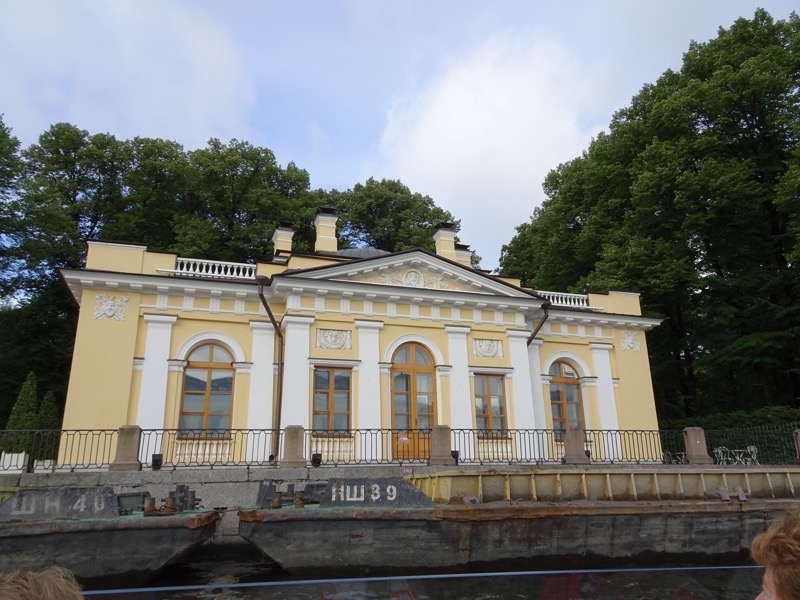 Some beautiful 18th century buildings… the names and purpose of each, now completely escape me barely 12 hours later!
Some beautiful 18th century buildings… the names and purpose of each, now completely escape me barely 12 hours later!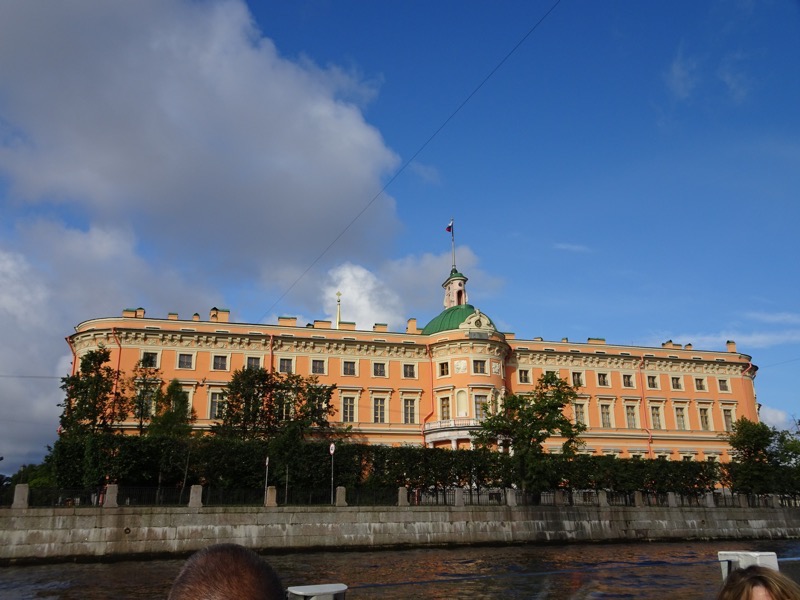 The Stock Exchange building.
The Stock Exchange building.
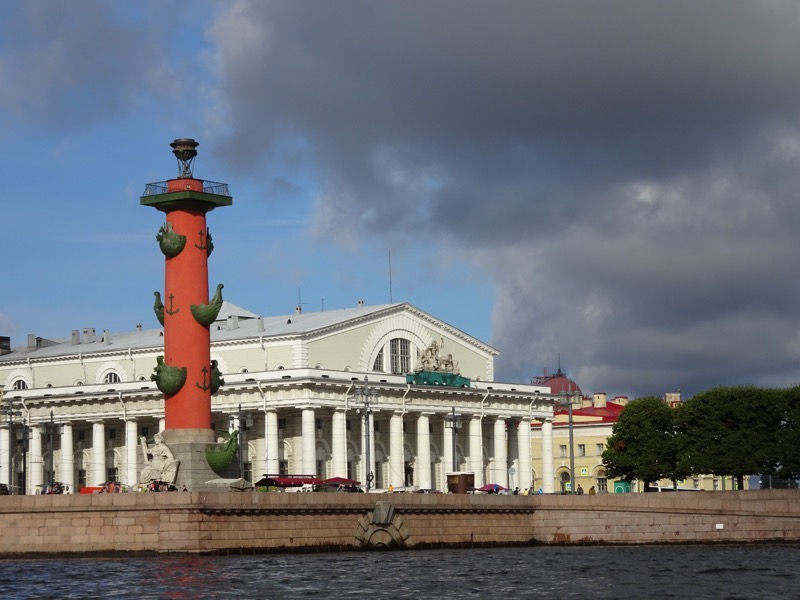 One of the many statues lining the canal.
One of the many statues lining the canal.
Next stop was the State Hermitage Museum, which is one of the largest and most prestigious museums of art and culture in the world, let alone just Russia. It was started in 1764 when Empress Catherine the Great acquired an impressive number of paintings and objet d’art from a Berlin art merchant by the name of Johann Gotzkowsky. The museum has been open to the public since 1852, and other than the taint from it featuring heavily in an unfortunate and completely traumatizing piece of cinematic ‘art’, “The Russian Ark”, the Hermitage has been somewhere I have been wanting to visit since studying visual arts in the mid-90s.

The Hermitage gets its name from, a ‘dwelling of a hermit or recluse’… Because naturally, this elaborate palace is the type of place you build when you want to withdraw from society and spend some time on your own! The building was originally given this name because of its exclusivity – Catherine only allowed her family, and her favourite grand duke courtiers to visit.

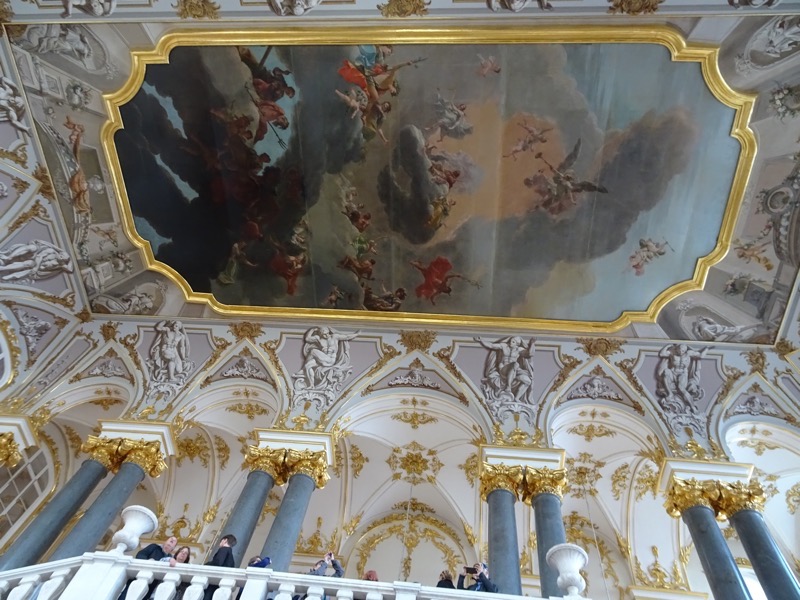 Of its extensive collections (Egyptians antiquities, classical antiquities, pre historic artworks, jewellery and decorative arts, Italian Renaissance paintings, Spanish fine art, Dutch Golden Age works, Flemish masters, Russian Art, French Neoclassical art, Impressionists, Modernists, German Romantics, and Lord knows what else!), only a very small portion is on permanent display. The collection, which contains the largest collection of paintings in the world, is comprised of over three million items, of which one-third of that is made up of coins, historical documents, and medals. The palace itself is spectacular…
Of its extensive collections (Egyptians antiquities, classical antiquities, pre historic artworks, jewellery and decorative arts, Italian Renaissance paintings, Spanish fine art, Dutch Golden Age works, Flemish masters, Russian Art, French Neoclassical art, Impressionists, Modernists, German Romantics, and Lord knows what else!), only a very small portion is on permanent display. The collection, which contains the largest collection of paintings in the world, is comprised of over three million items, of which one-third of that is made up of coins, historical documents, and medals. The palace itself is spectacular…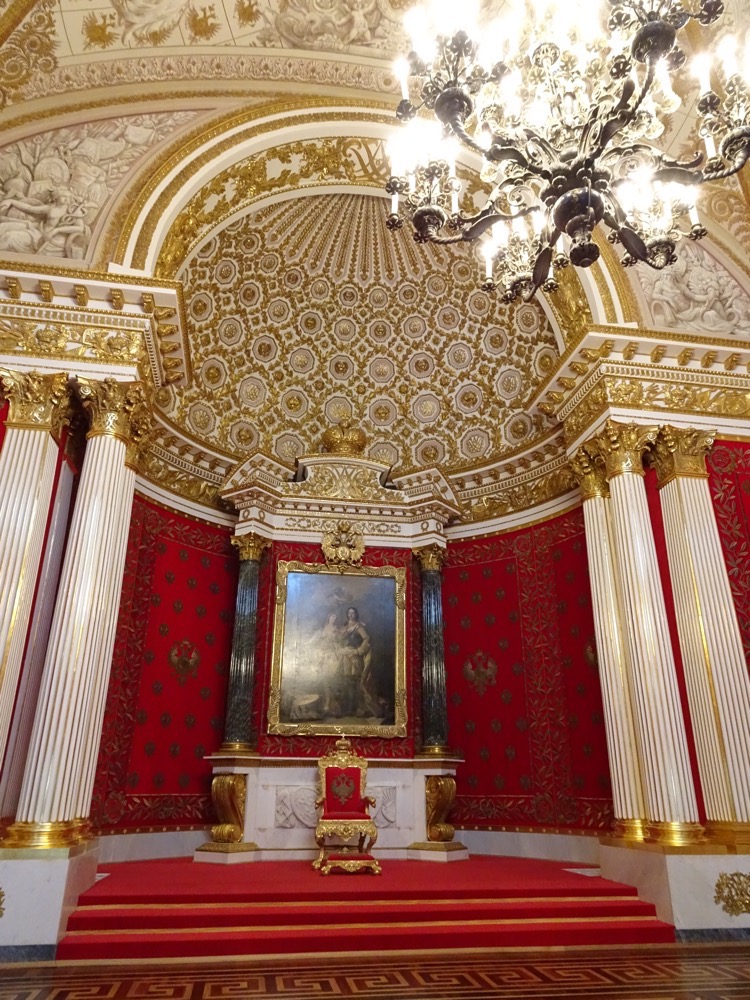
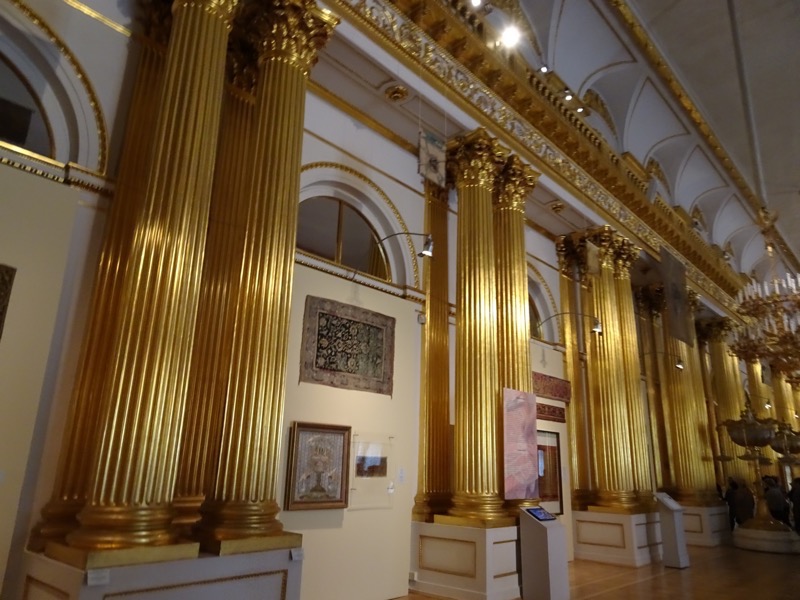 The Military Gallery – contains 330 portraits of generals who took part in the Patriotic War of 1812, all were painted by English artist, George Dawe and his assistants.
The Military Gallery – contains 330 portraits of generals who took part in the Patriotic War of 1812, all were painted by English artist, George Dawe and his assistants. Regalia of a member of the Order of the Garter.
Regalia of a member of the Order of the Garter.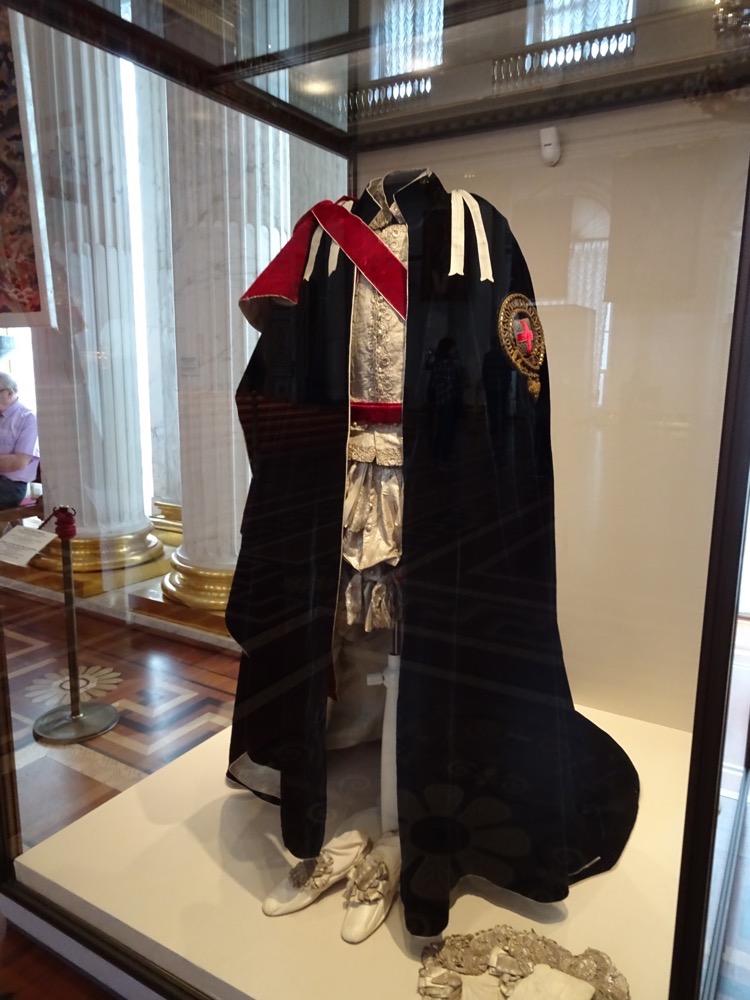
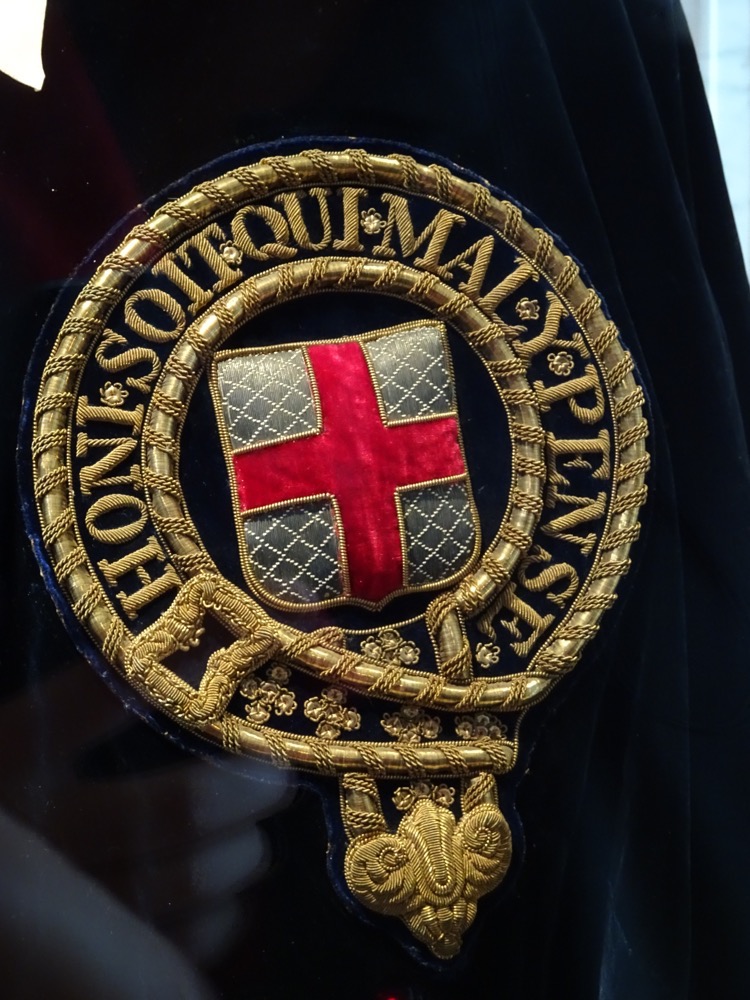 German herald’s tabard, c.1520.
German herald’s tabard, c.1520.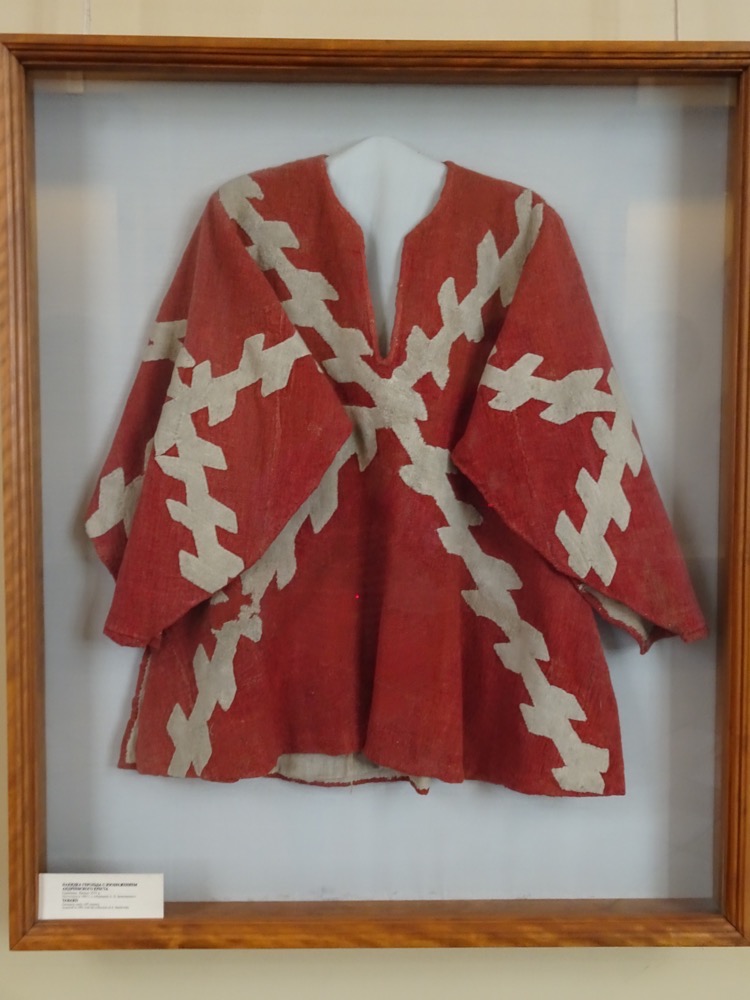 11th century ivory mirror case.
11th century ivory mirror case.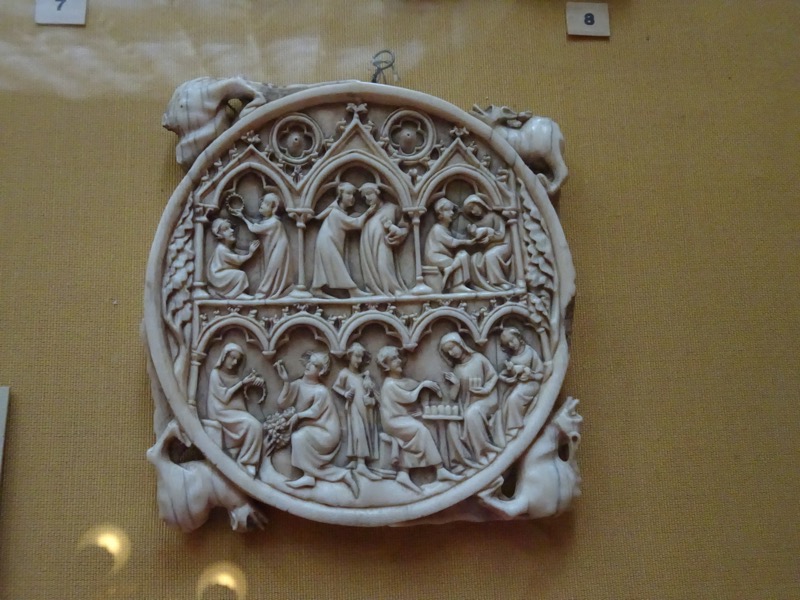 Limoge enamels.
Limoge enamels.
 Mosaic floor panel, done in the Italian style copied from the Vatican.
Mosaic floor panel, done in the Italian style copied from the Vatican.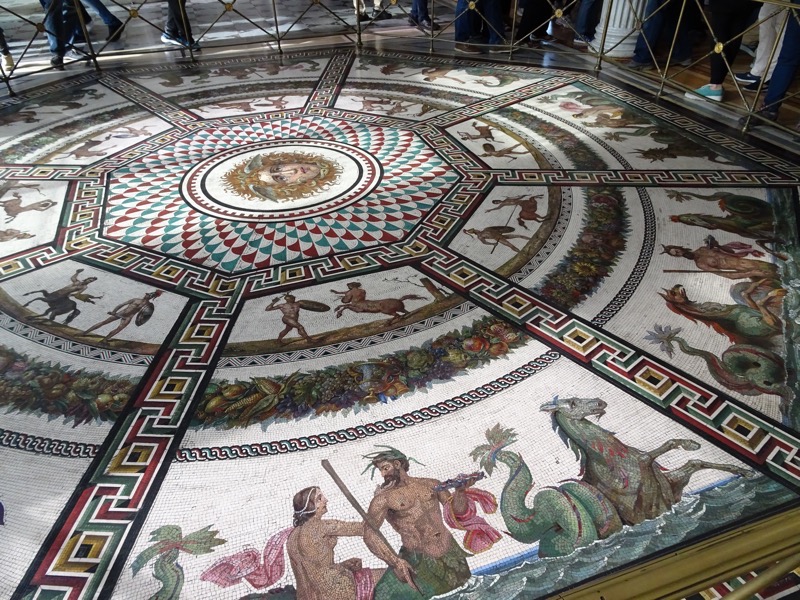
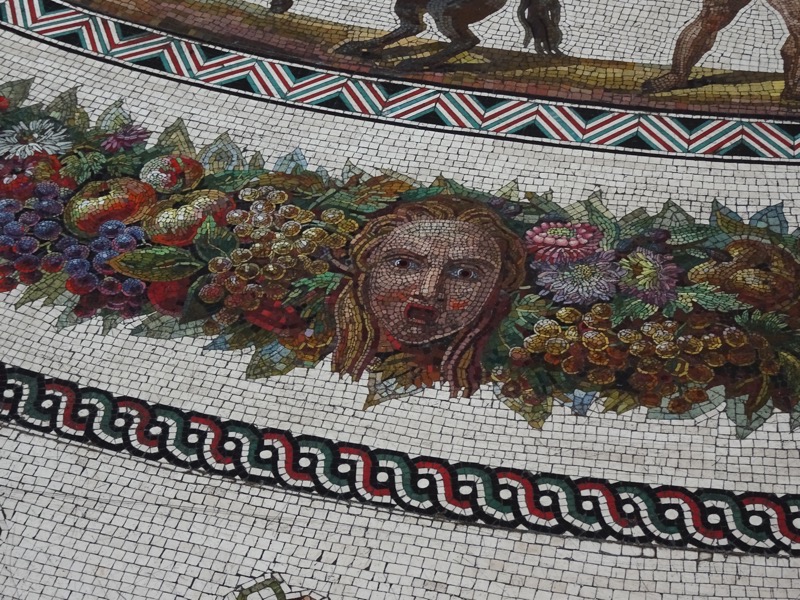 The private courtyard of Catherine the Great.
The private courtyard of Catherine the Great. Medieval chairs, 12th-13th century.
Medieval chairs, 12th-13th century.
A Raphaelo here…
 Another one there…
Another one there…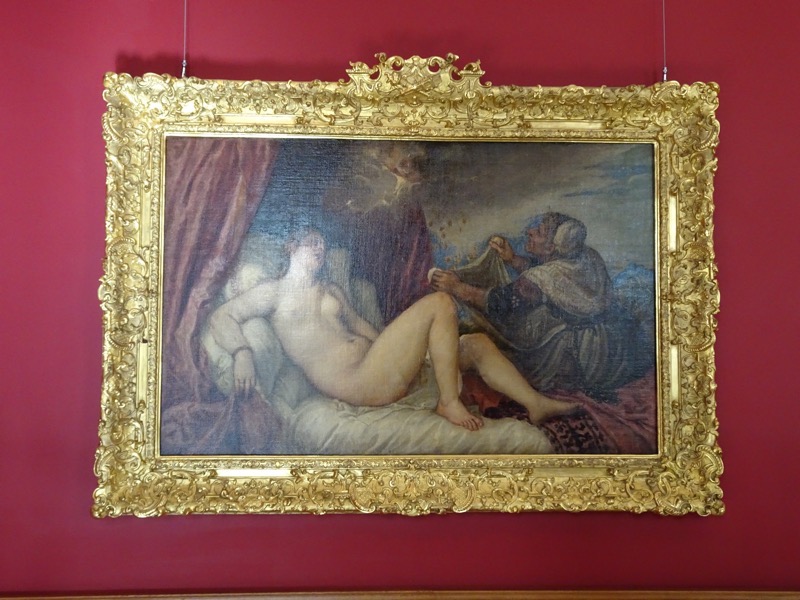 As we gallop on through the museum, Maria points out a ‘disciple-ah of zee school-a ova fine-a artses’ who ees painting-a zee copy-a of one-a of zee paintings’, but somehow she fails to mention that the lady is painting from an original van der Weyden as we skip on by! Masterpieces at every turn!
As we gallop on through the museum, Maria points out a ‘disciple-ah of zee school-a ova fine-a artses’ who ees painting-a zee copy-a of one-a of zee paintings’, but somehow she fails to mention that the lady is painting from an original van der Weyden as we skip on by! Masterpieces at every turn! Some 16th century textiles…
Some 16th century textiles…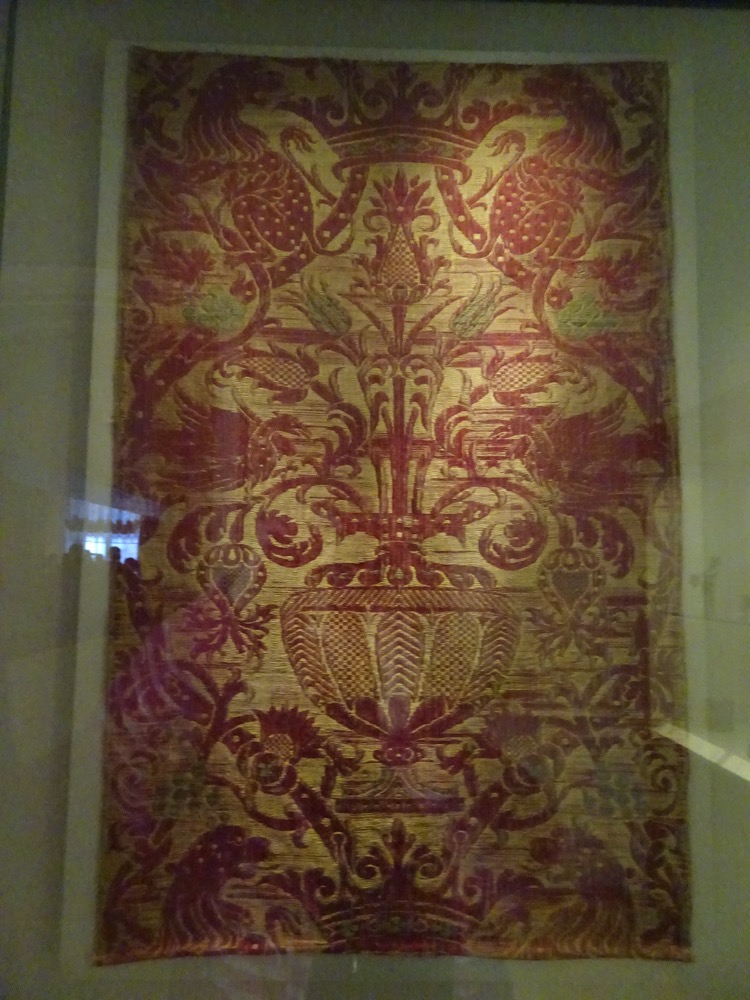 Games box. Ebony, with silver and ivory inlay. c1620.
Games box. Ebony, with silver and ivory inlay. c1620.
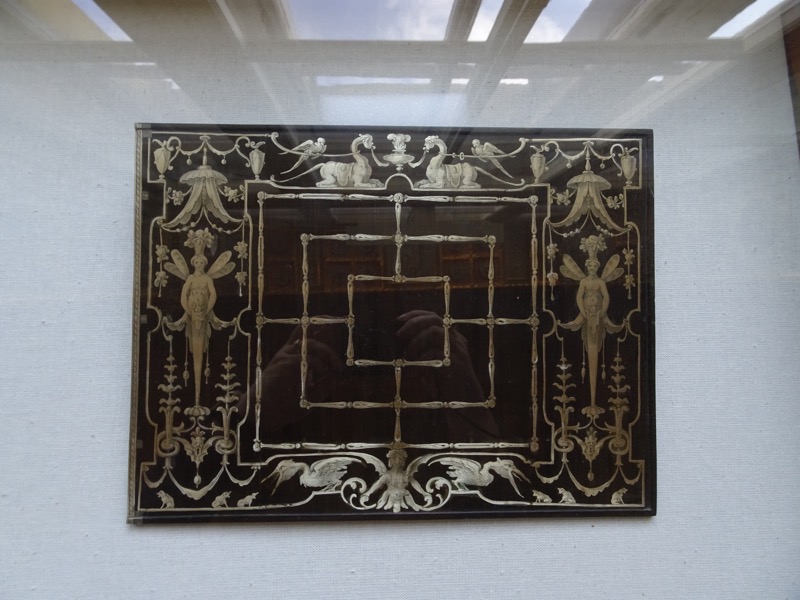 Passageway elaborately painted in the style of the Vatican’s Passeto di Borgo… seriously, this is uncanny. I was at the Vatican in July last year, and the style is very very similar.
Passageway elaborately painted in the style of the Vatican’s Passeto di Borgo… seriously, this is uncanny. I was at the Vatican in July last year, and the style is very very similar.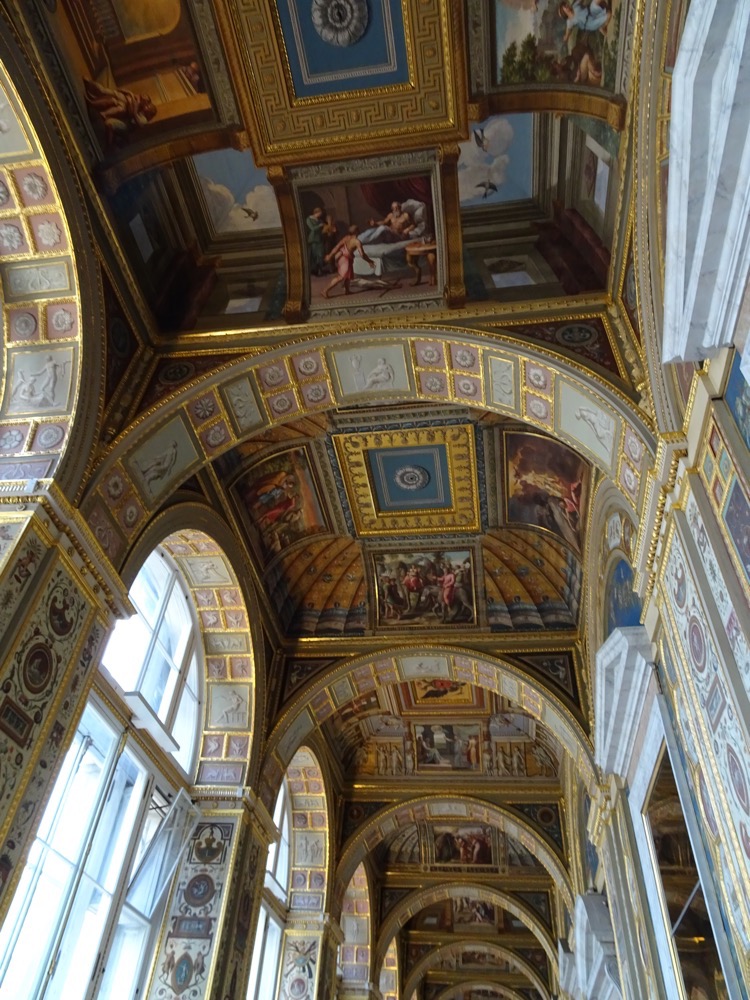 Skipped through an entire room of Majolica ware (can email more pics to anyone who is interested).
Skipped through an entire room of Majolica ware (can email more pics to anyone who is interested).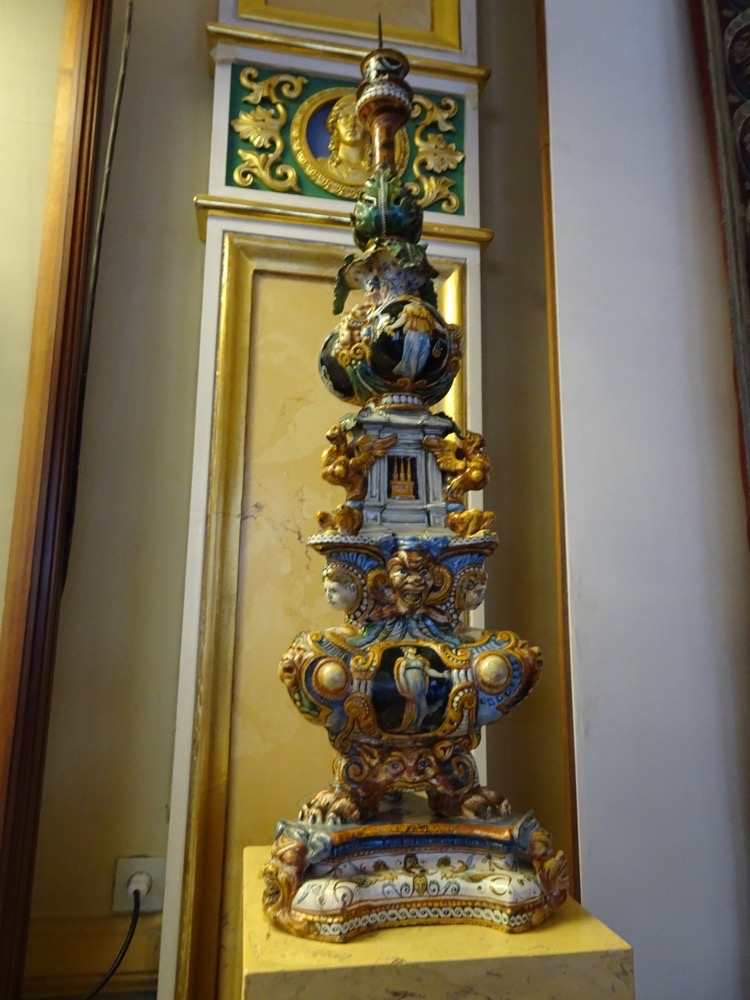
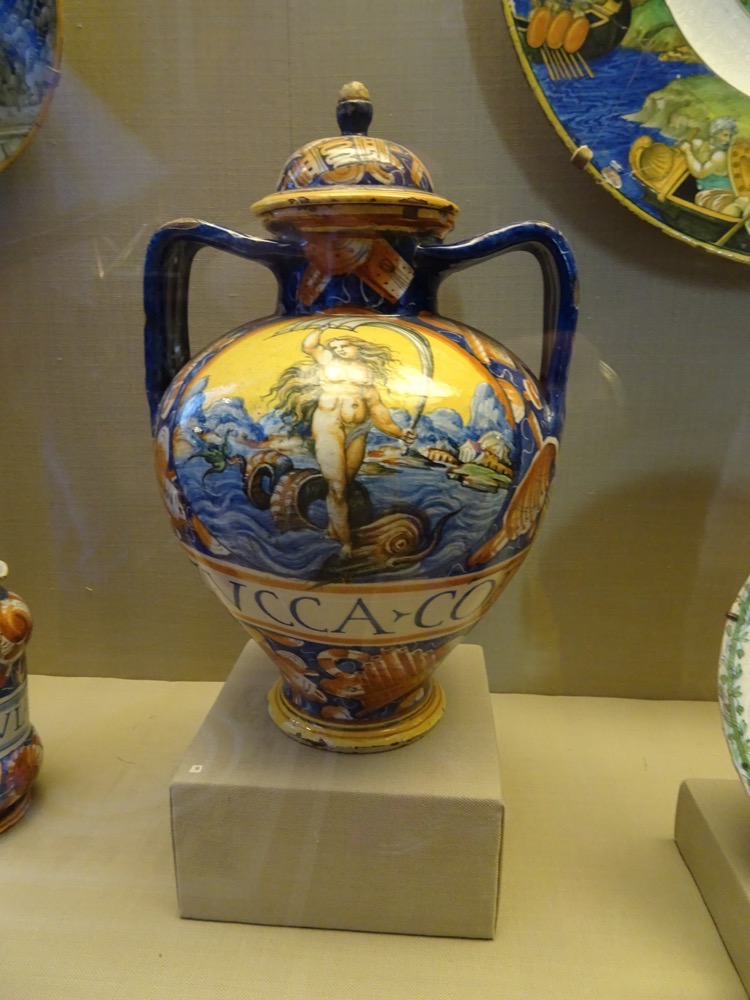
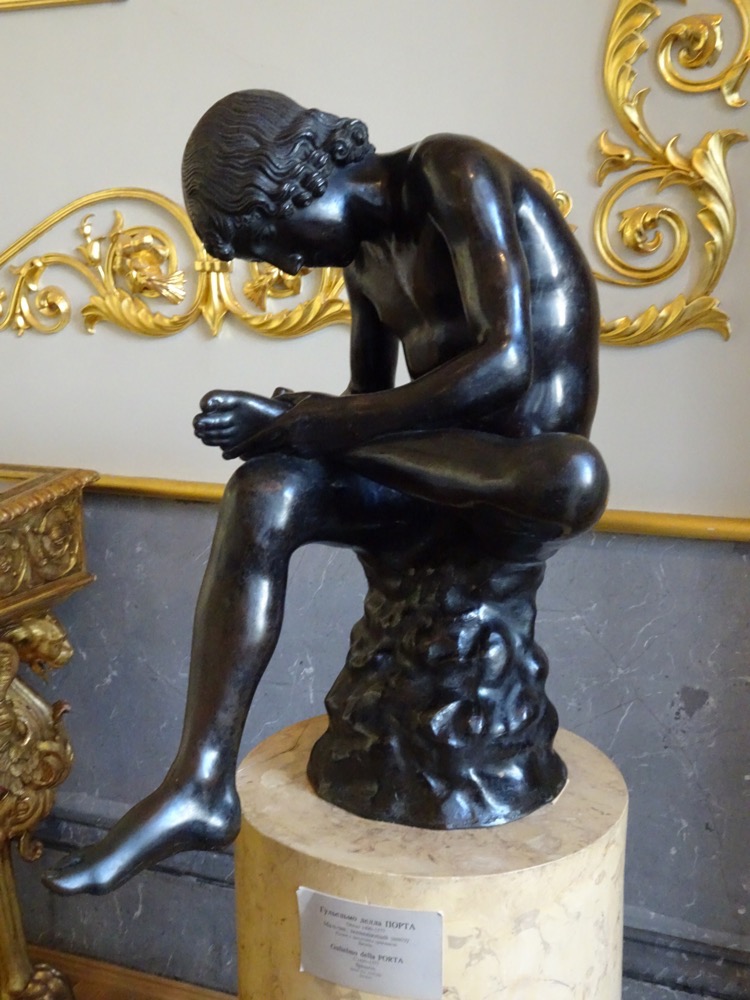 Michelangelo’s, ‘Crouching Boy’
Michelangelo’s, ‘Crouching Boy’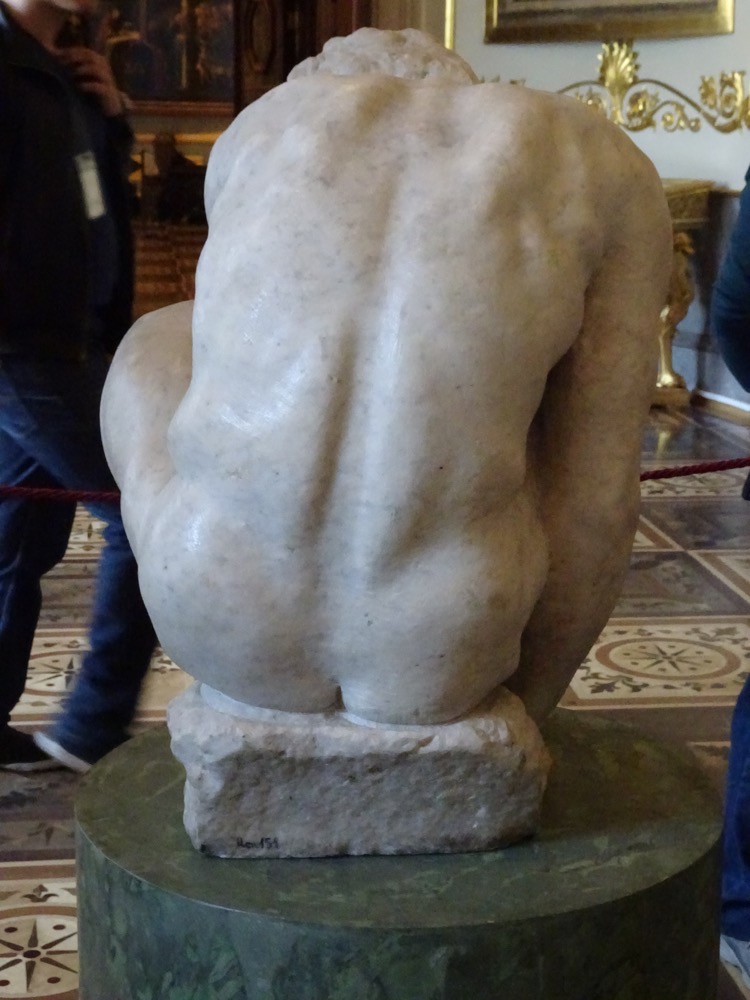
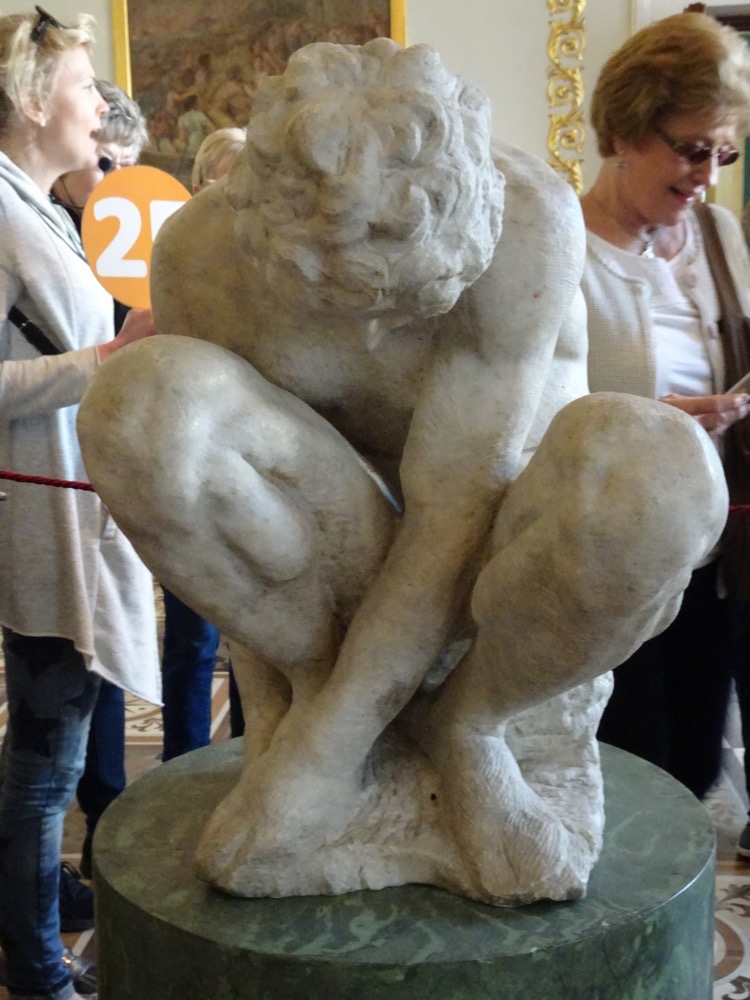 Malachite urn in the Spanish masters room.
Malachite urn in the Spanish masters room.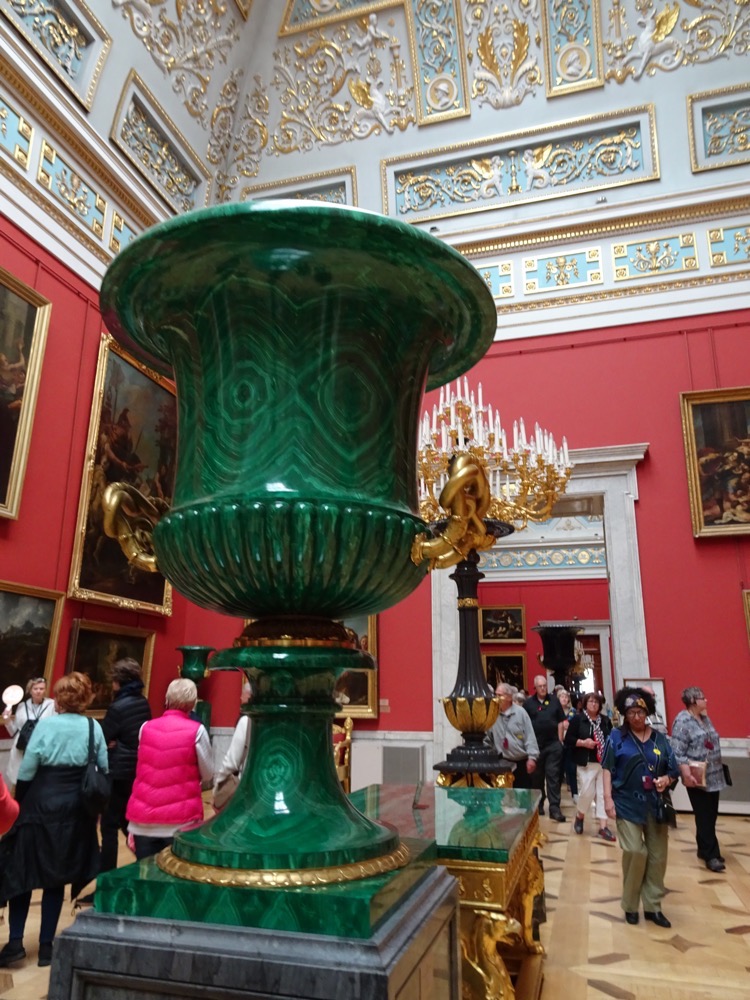
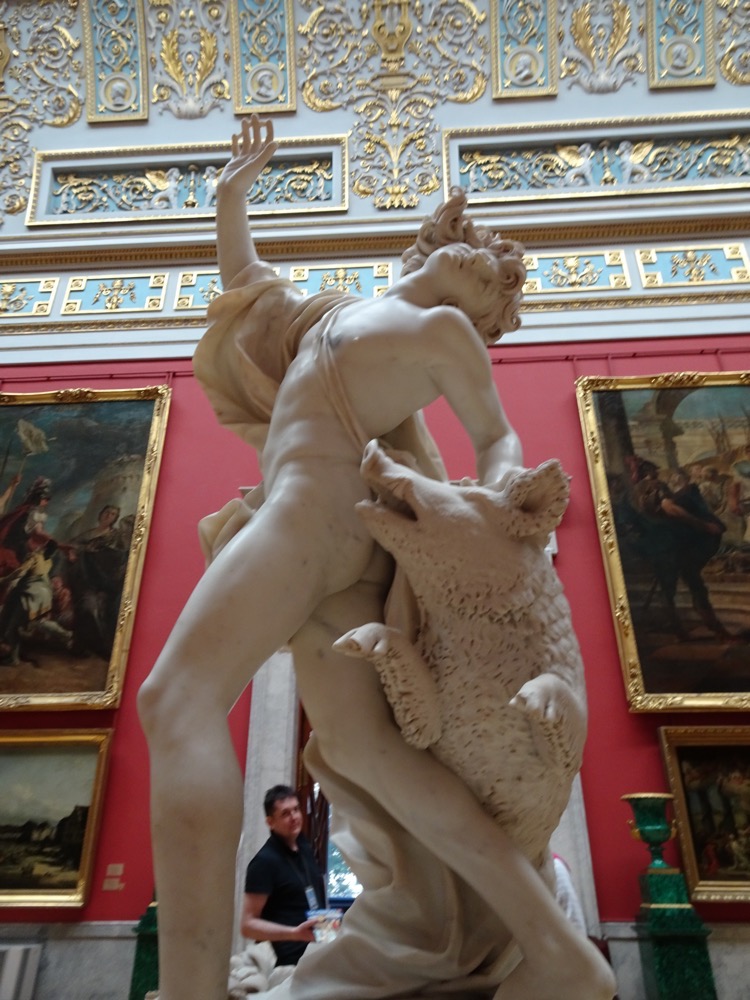

 I simply include all the photographs of individual artefacts, so I have focused here on including the spaces in the Palace. I have already determined that I will have to come back to St Petersburg one day and do the Hermitage at my leisure. They say that if you stood in front of every piece on public display at the Hermitage for barely one minute, it would take you three years to see everything – and I well believe it. I imagine a week in St Petersburg is probably going to end up on the schedule at some point in the next few years.
I simply include all the photographs of individual artefacts, so I have focused here on including the spaces in the Palace. I have already determined that I will have to come back to St Petersburg one day and do the Hermitage at my leisure. They say that if you stood in front of every piece on public display at the Hermitage for barely one minute, it would take you three years to see everything – and I well believe it. I imagine a week in St Petersburg is probably going to end up on the schedule at some point in the next few years.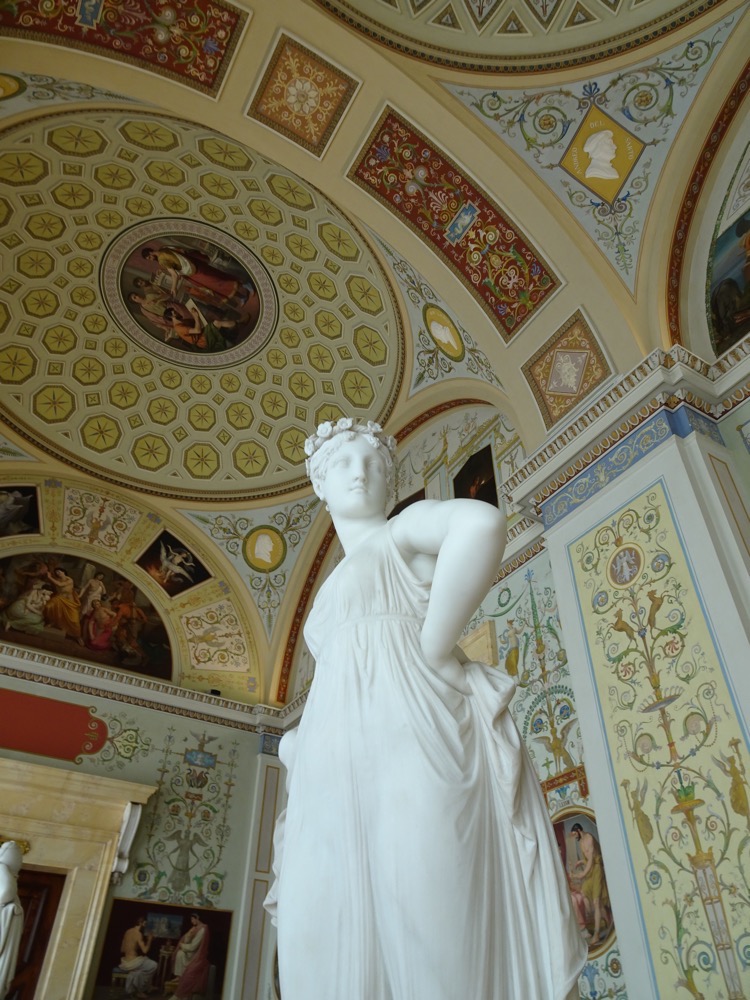

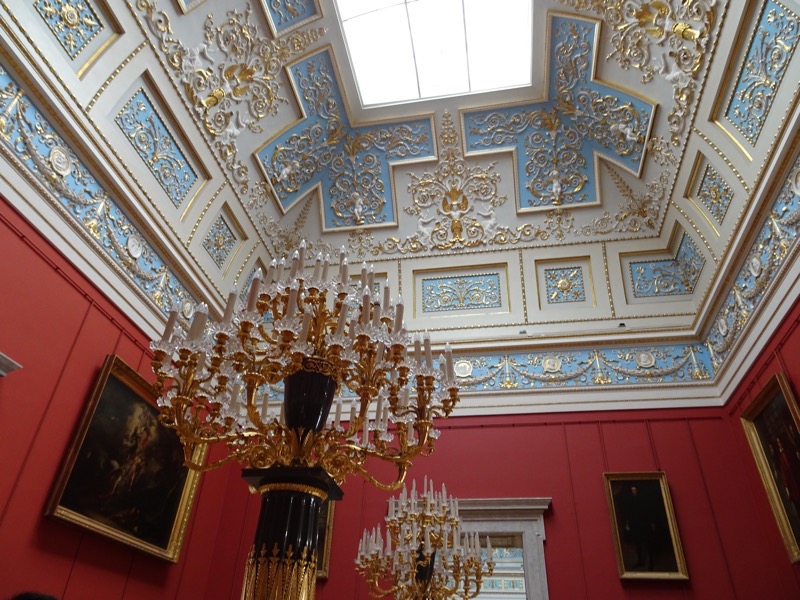 Oh and look, here is one of the twenty-four Rembrandts in the collection! If but one of them were appropriated? relocated? to an Australian museum, it would probably cause an entire wing re-named, the “Northern Renaissance Gallery”… and here? Here they have twenty-four. Greedy, if you ask me. 😉 They could share them around with the rest of the world, don’t you think?
Oh and look, here is one of the twenty-four Rembrandts in the collection! If but one of them were appropriated? relocated? to an Australian museum, it would probably cause an entire wing re-named, the “Northern Renaissance Gallery”… and here? Here they have twenty-four. Greedy, if you ask me. 😉 They could share them around with the rest of the world, don’t you think?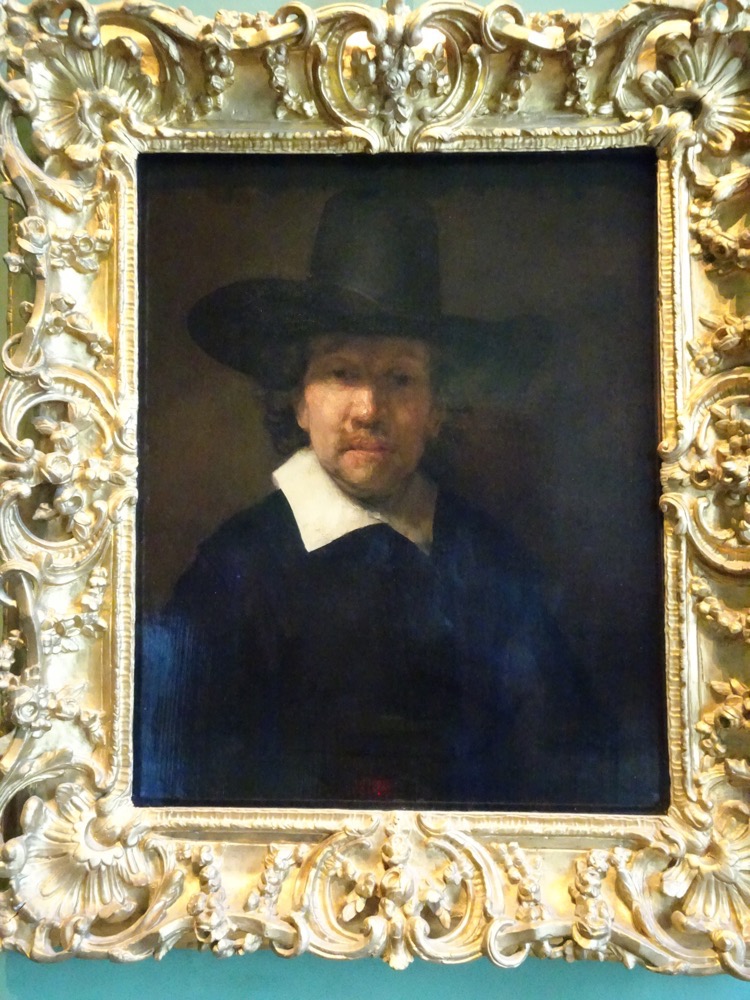 Stunning sweeping central staircases are a feature of all the palaces it would seem.
Stunning sweeping central staircases are a feature of all the palaces it would seem.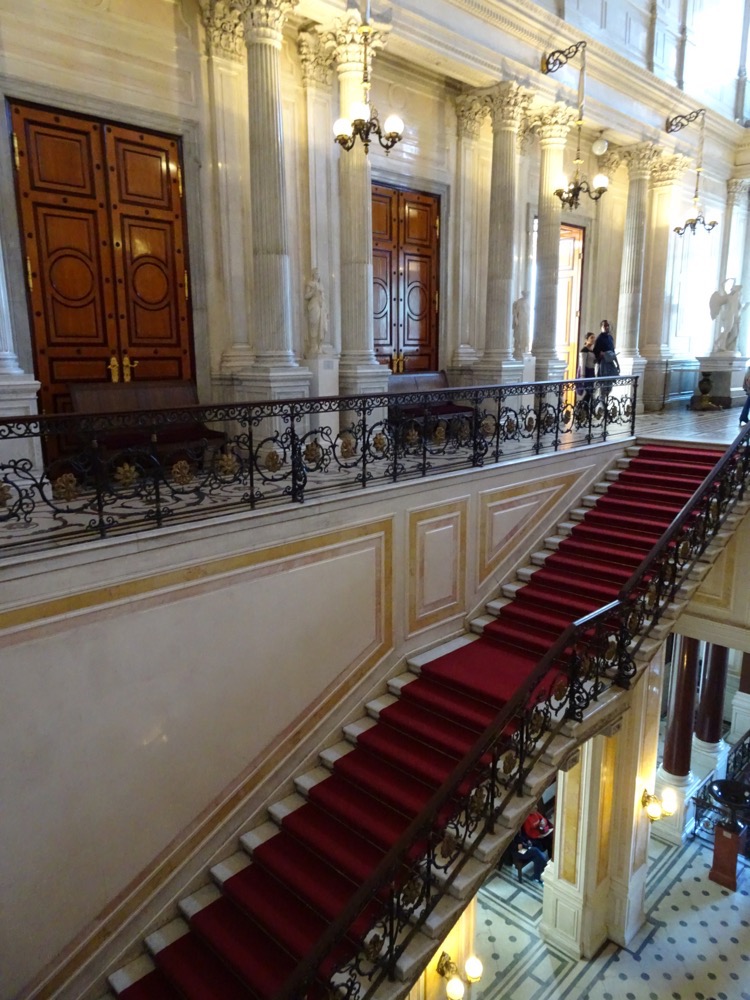
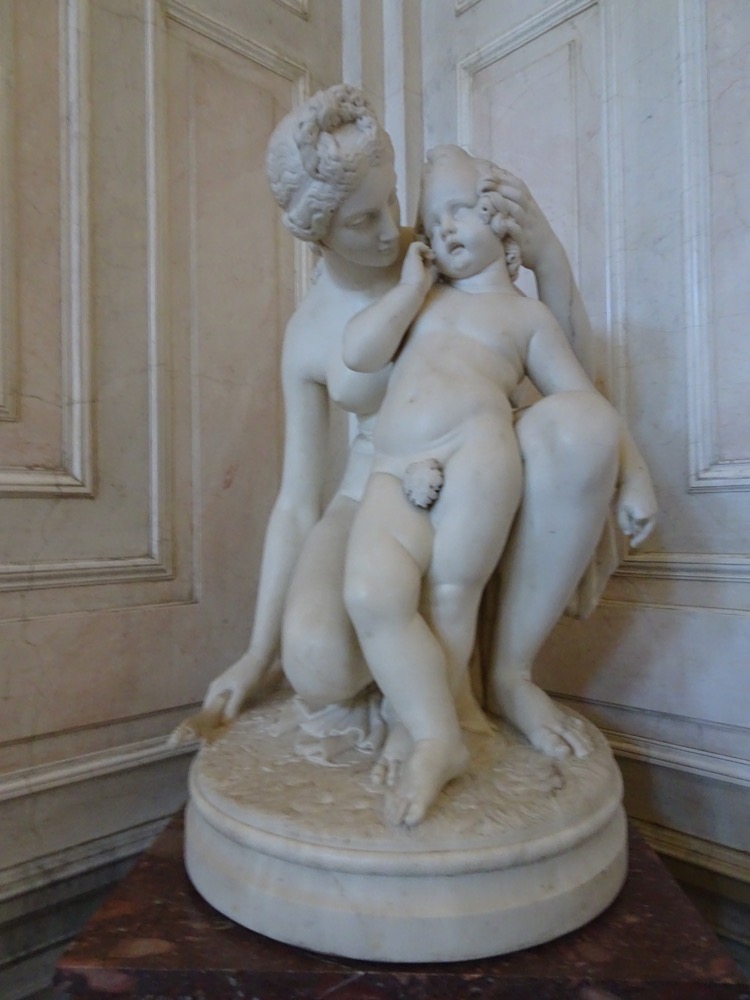
The Malachite Room.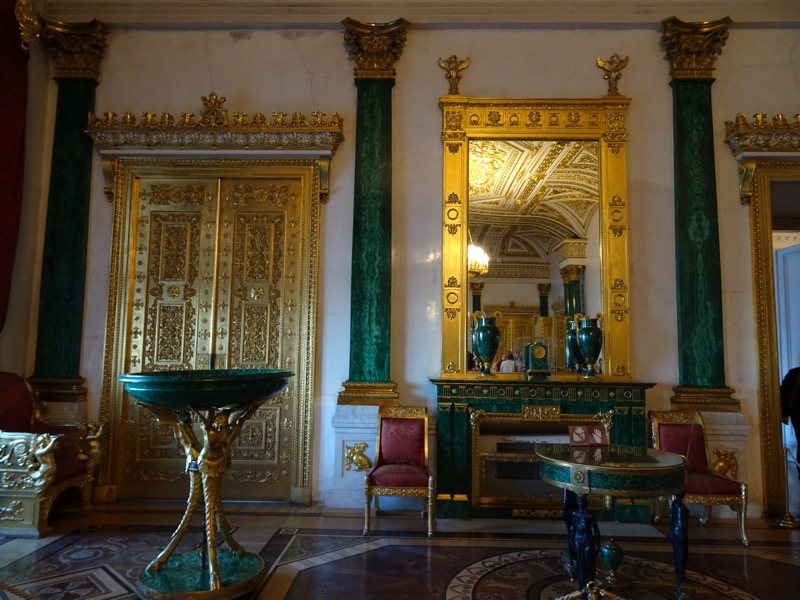

I took many, many more photographs of items in the museums, but they are too numerous to include here, I may make a separate post on the Hermitage when I get home (ship internet is dreadful for blogging… it’s dreadful full stop really, but particularly so for uploading images and blogging).
The Menshevik party, (literally meaning, ‘the Minority’, who were moderate socialists) had formed a Provisional Government after Tsar Nicholas abdicated in 1917. They maintained power for only eight months but were apparently moving too slowly for the Bolshevik party (hard-core lefty communists) with their prevaricating over the electoral processes and legislation associated with elections – so the more radical Bolsheviks decided to depose them. Below is the actual dining room in the Winter Palace where the Bolshevik party overthrew the Menshevik Provisional Government which started the Soviet era.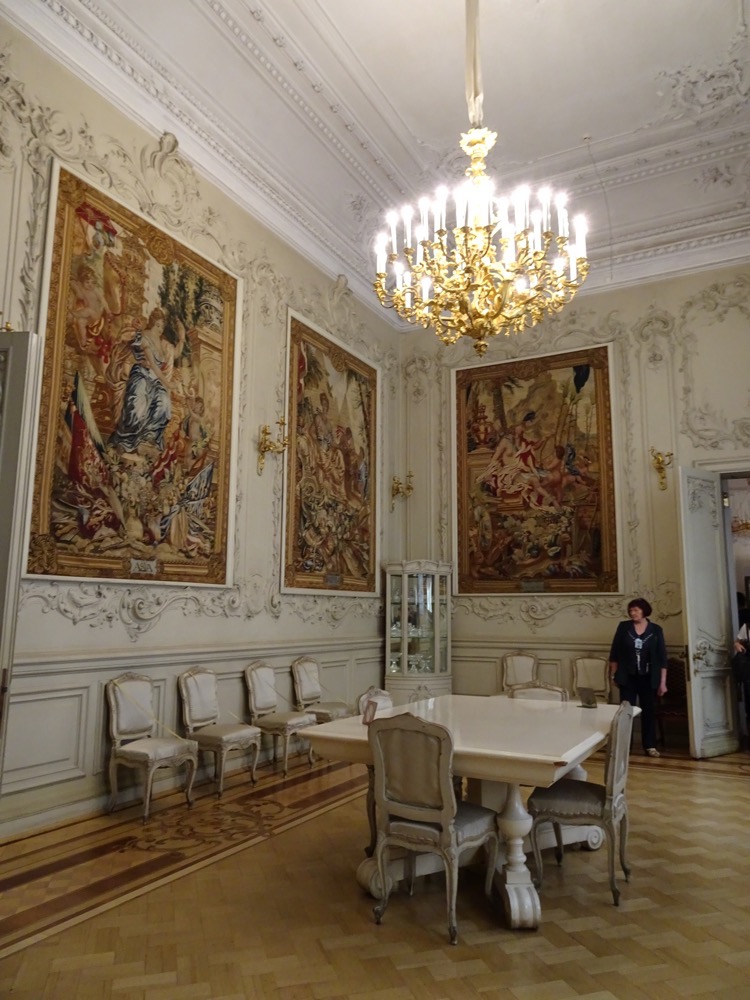 On temporary display – these ‘flowers’ are entirely ceramic.
On temporary display – these ‘flowers’ are entirely ceramic.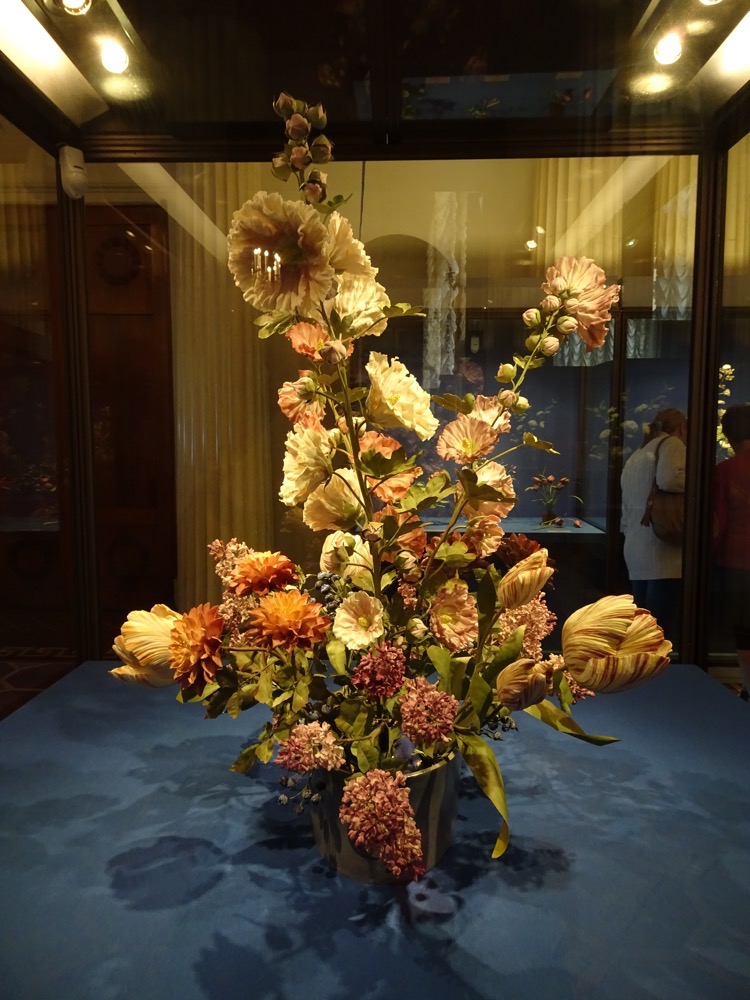

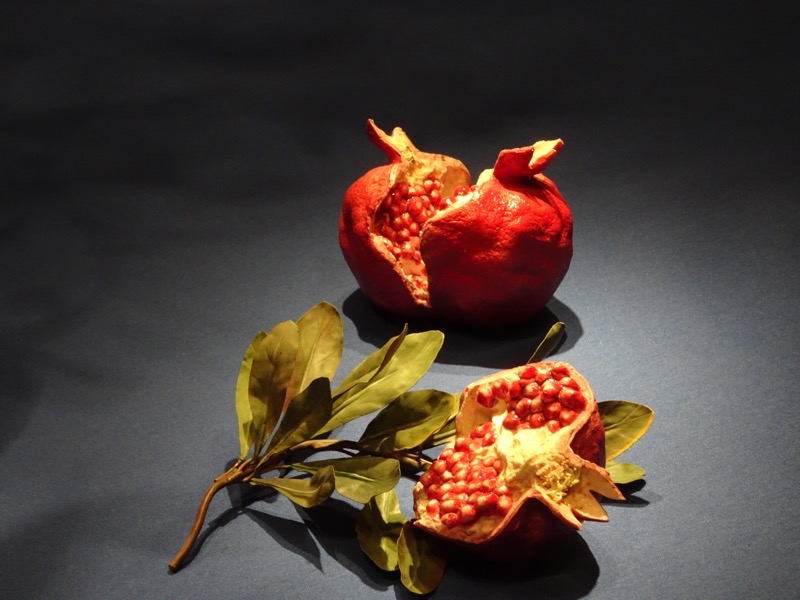
After we left the Hermitage, we bundled back into our little bus and head over to the most iconic of St Petersburg landmarks – the Church of the Savior on Spilled Blood (aka the Church of the Spilled Blood, or the Temple of the Spilled Blood or the Cathedral of the Resurrection of Christ.
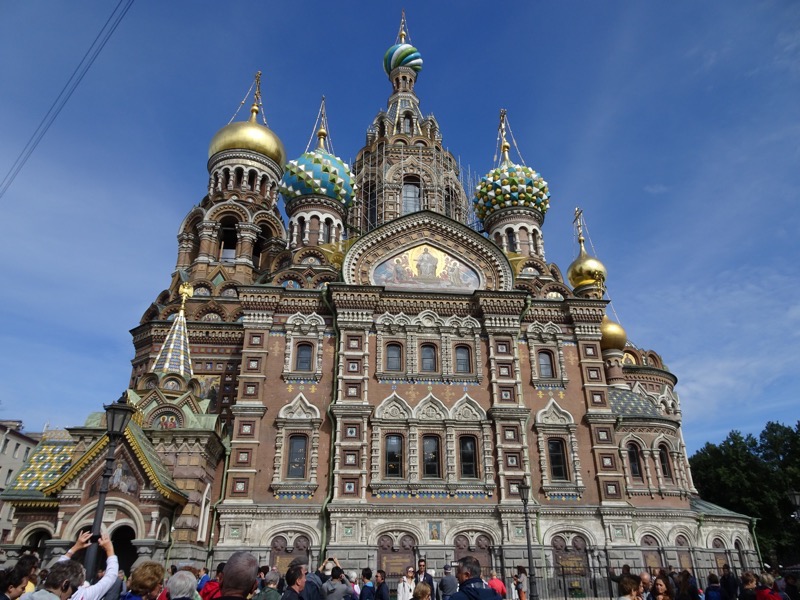

 Construction began on this church in 1883, during the reign of Tsar Alexander III, it was intended to be a memorial to his father, Alexander II – as this was the exact site where Emperor Alexander II was killed by political nihilists in March 1881. Maria claimed that the construction cost was somewhere in the realm of 4.5 million rubles, funded by the Imperial family and many wealthy donors. The Cathedral was not completed until 1907 during the reign of Nicholas II.
Construction began on this church in 1883, during the reign of Tsar Alexander III, it was intended to be a memorial to his father, Alexander II – as this was the exact site where Emperor Alexander II was killed by political nihilists in March 1881. Maria claimed that the construction cost was somewhere in the realm of 4.5 million rubles, funded by the Imperial family and many wealthy donors. The Cathedral was not completed until 1907 during the reign of Nicholas II.

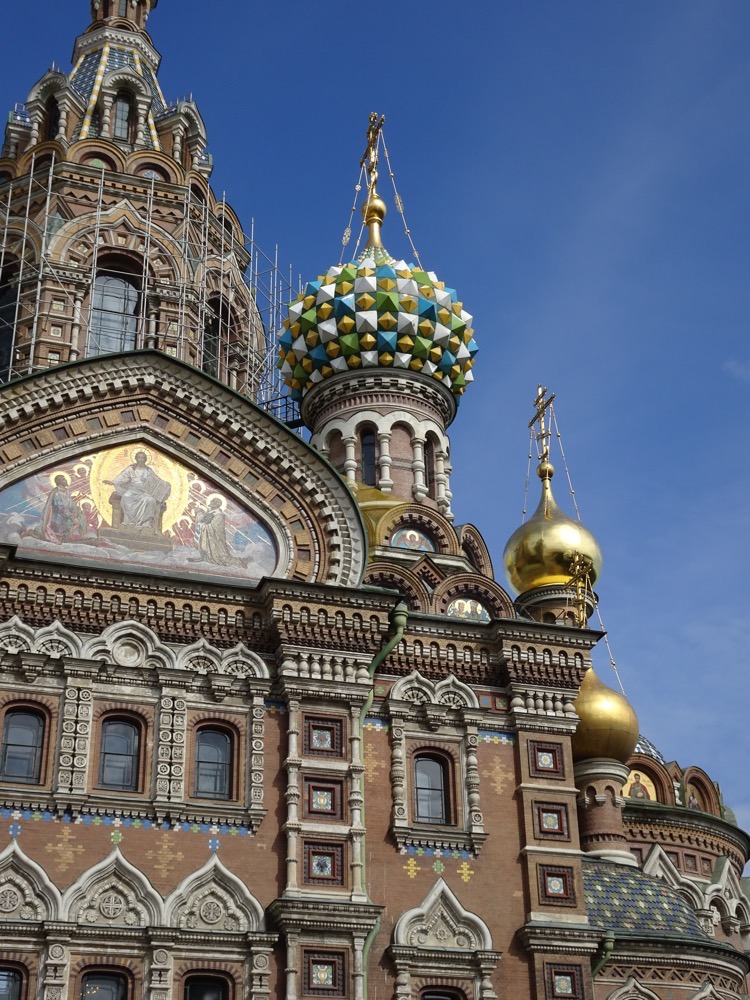
Being in a Medieval Russian style, the Cathedral is very different from the rest of St Petersburg’s other architectural wonders, which are mainly baroque and neoclassical. The Church of the Spilled Blood was created in the Russian romantic nationalism style, and with its onion domes and ceramic tiled roofs, it deliberately mimics the 17th century Yaroslavl churches and the famous St Basil’s Cathedral in Moscow (Been there!).
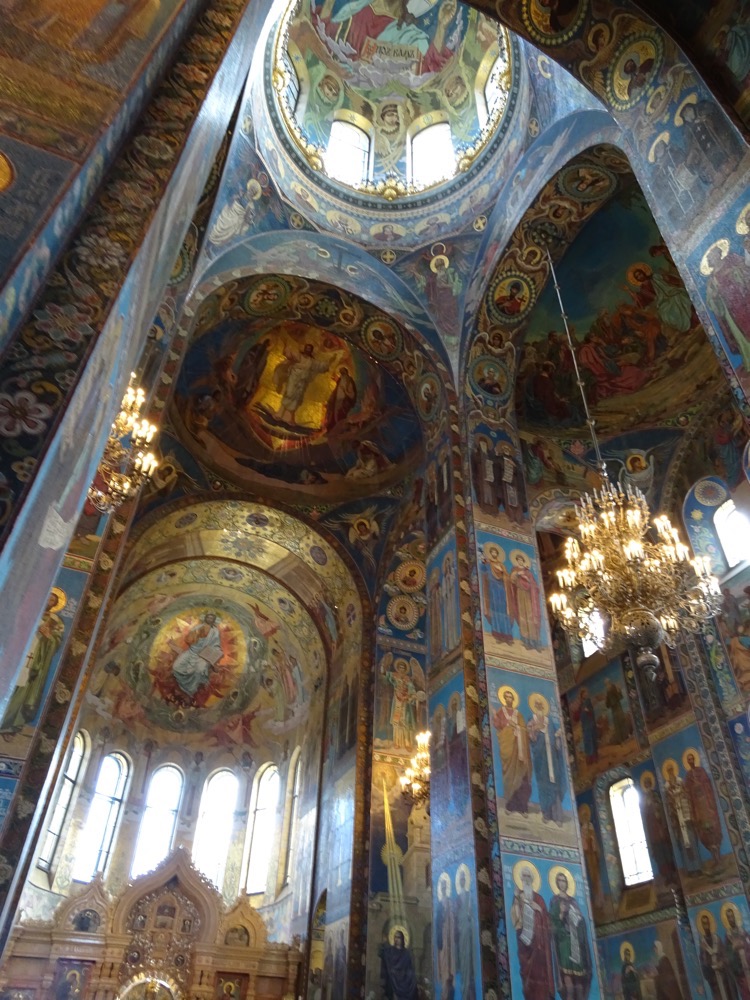 The interior is inimitable… it contains over 7500 square meters of detailed mosaics, which according to the restorers, is more than any other building in the world. The walls and ceilings are completely covered in mosaics depicting biblical scenes and figures, surrounded by decorated borders and motifs.
The interior is inimitable… it contains over 7500 square meters of detailed mosaics, which according to the restorers, is more than any other building in the world. The walls and ceilings are completely covered in mosaics depicting biblical scenes and figures, surrounded by decorated borders and motifs.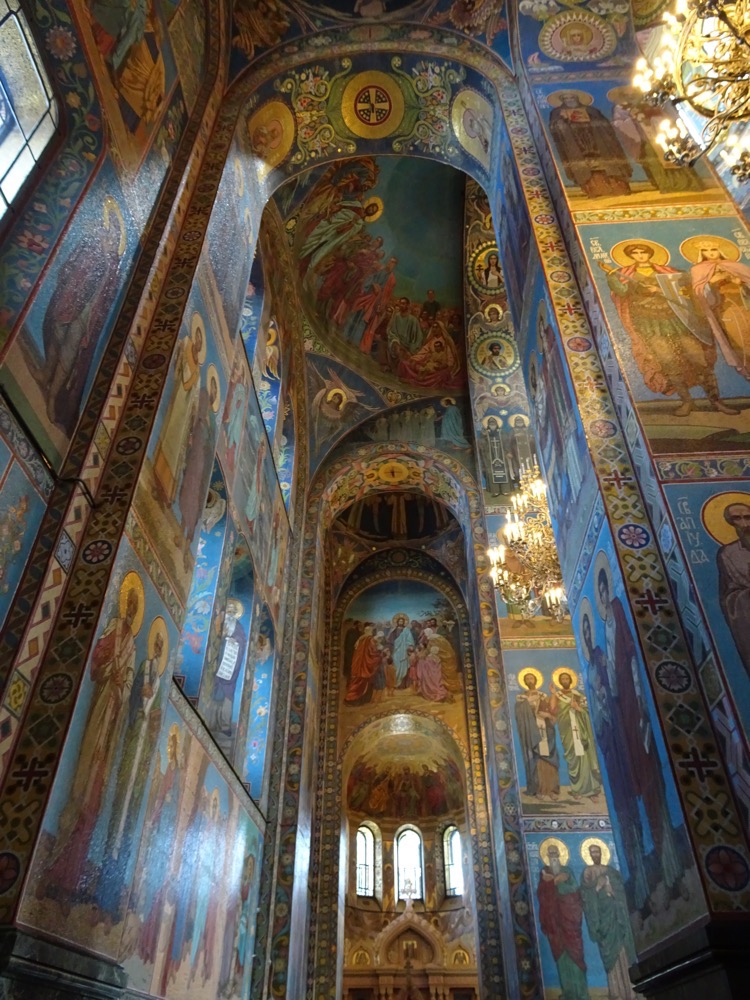
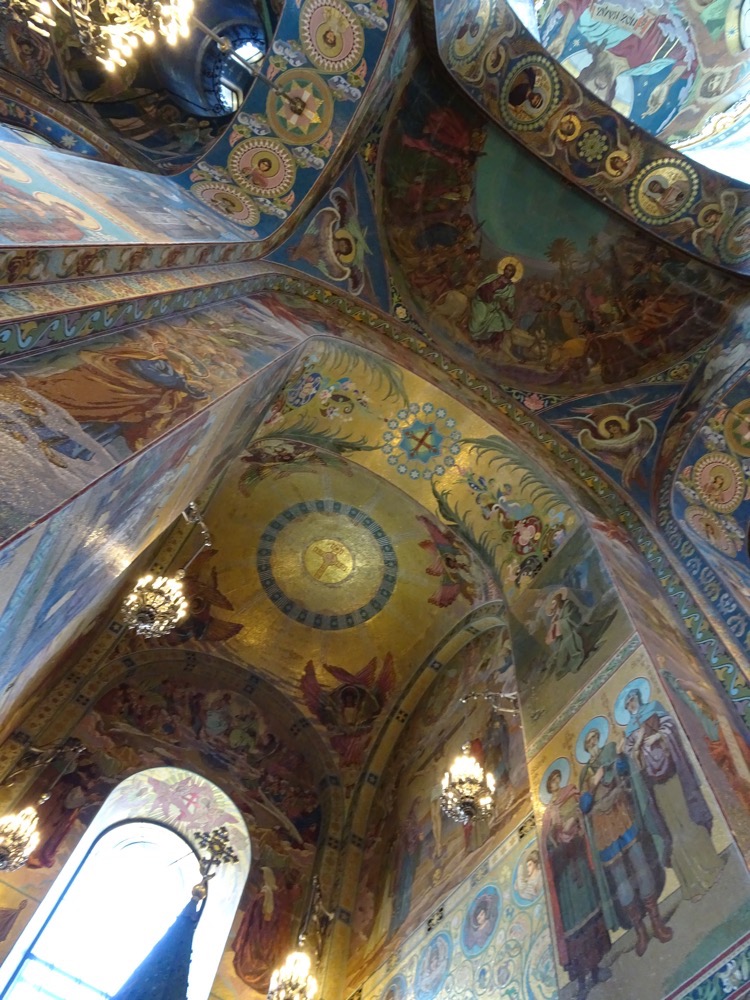
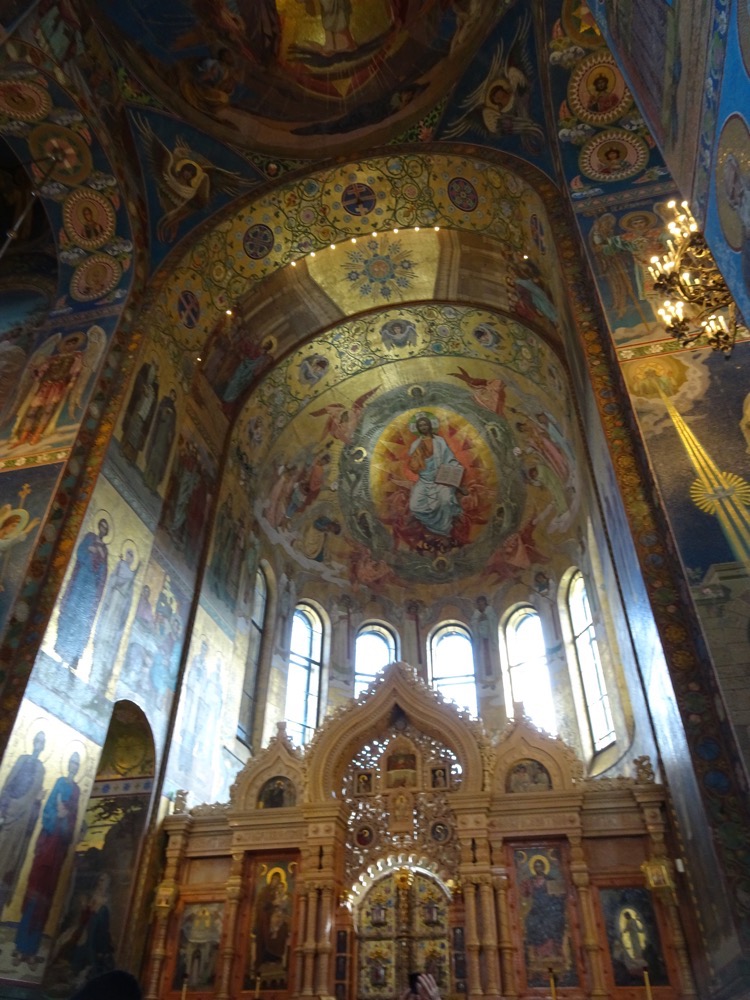 The central altar contains the Holy Gates, which were lost in the 1920s during the Soviet era, but were recreated and replaced in 2012, on the 129th anniversary of Alexander II’s assassination.
The central altar contains the Holy Gates, which were lost in the 1920s during the Soviet era, but were recreated and replaced in 2012, on the 129th anniversary of Alexander II’s assassination. 
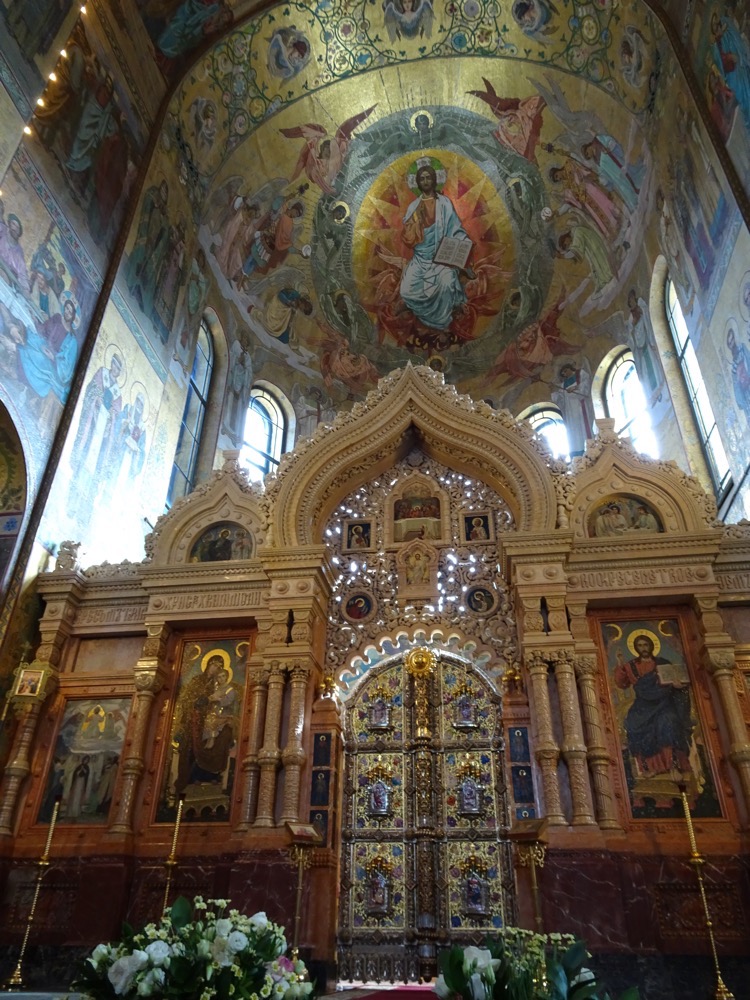

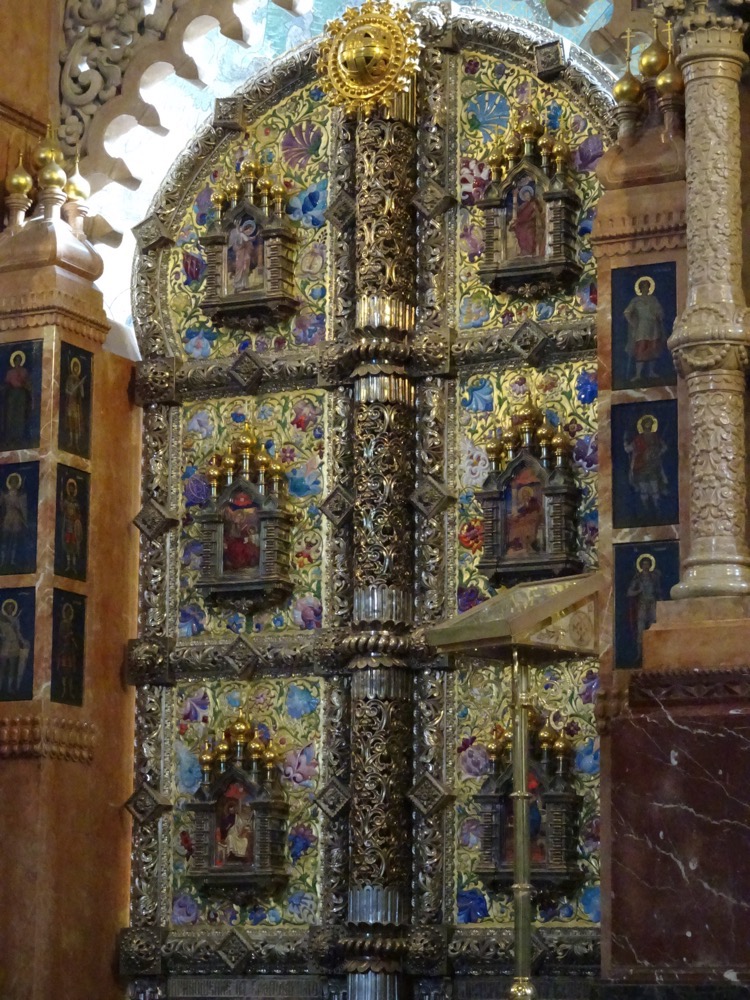 Gate detail:
Gate detail:
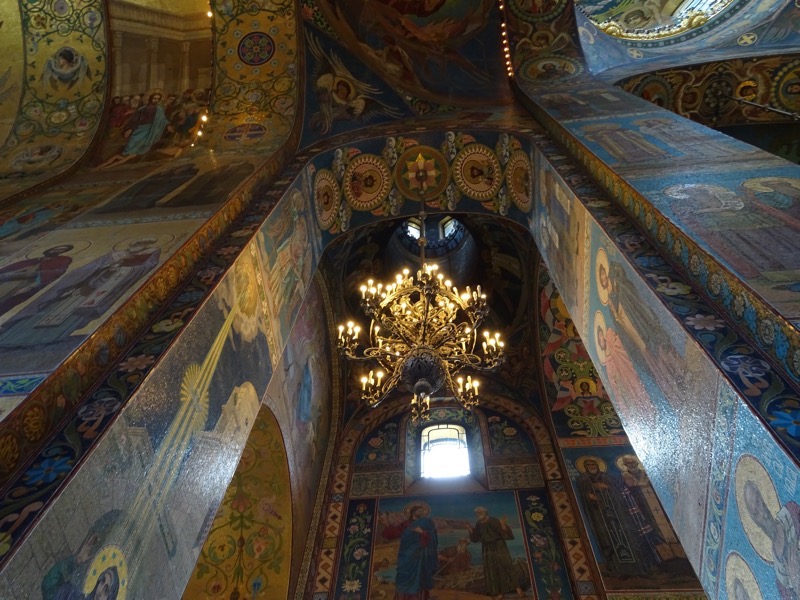 The main dome must easily be 100 feet high. Easily.
The main dome must easily be 100 feet high. Easily.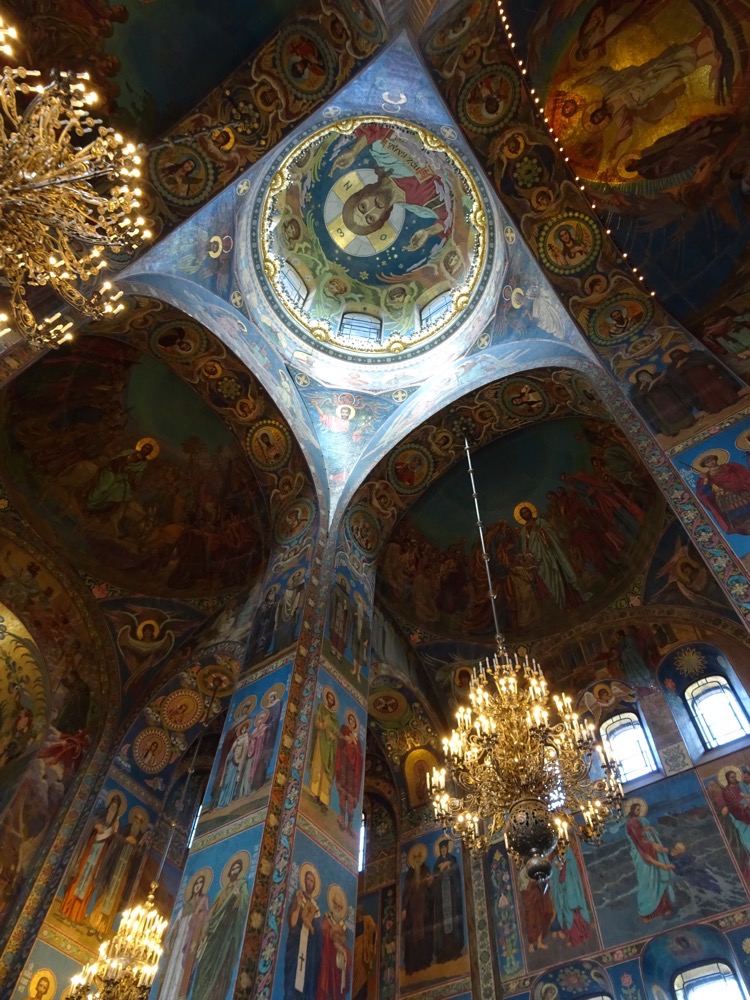

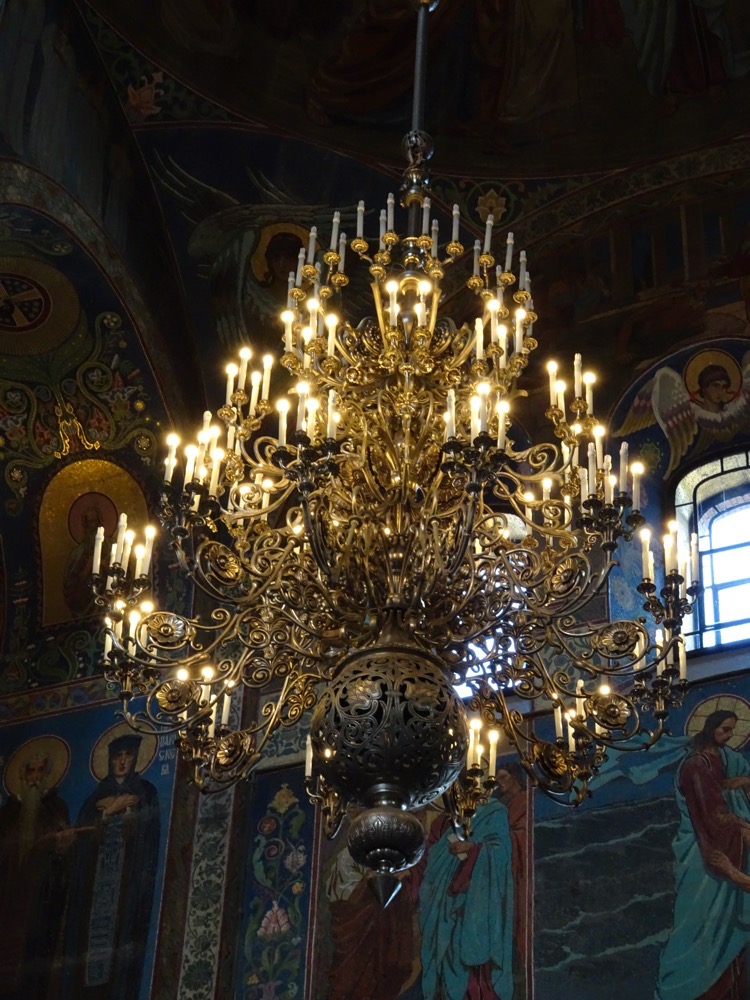 After the Russian Revolution (which saw the end of the Tsarist autocracy and the rise of the Soviet Era), the church was ransacked, looted and badly damaged – Maria described the Bolsheviks as ‘people who destroyed everything, and they build nothing’. The Soviet government actually closed the then very damaged church in 1932. During WWII, when many people were starving due to the Seige of Leningrad at the hands of Nazi Germany, the church was used as a morgue for people who died in combat, and from starvation or sickness; bit gruesome. The Church suffered, even more, damage during this period. After the war, the buildling was so little thought of, that it was used as a warehouse for vegetables, leading to the name, The Saviour of Potatoes! I just can’t imagine what led people to use a building like this to store vegetables! I guess when you are starving though, you don’t have much use for gold mosaics.
After the Russian Revolution (which saw the end of the Tsarist autocracy and the rise of the Soviet Era), the church was ransacked, looted and badly damaged – Maria described the Bolsheviks as ‘people who destroyed everything, and they build nothing’. The Soviet government actually closed the then very damaged church in 1932. During WWII, when many people were starving due to the Seige of Leningrad at the hands of Nazi Germany, the church was used as a morgue for people who died in combat, and from starvation or sickness; bit gruesome. The Church suffered, even more, damage during this period. After the war, the buildling was so little thought of, that it was used as a warehouse for vegetables, leading to the name, The Saviour of Potatoes! I just can’t imagine what led people to use a building like this to store vegetables! I guess when you are starving though, you don’t have much use for gold mosaics. 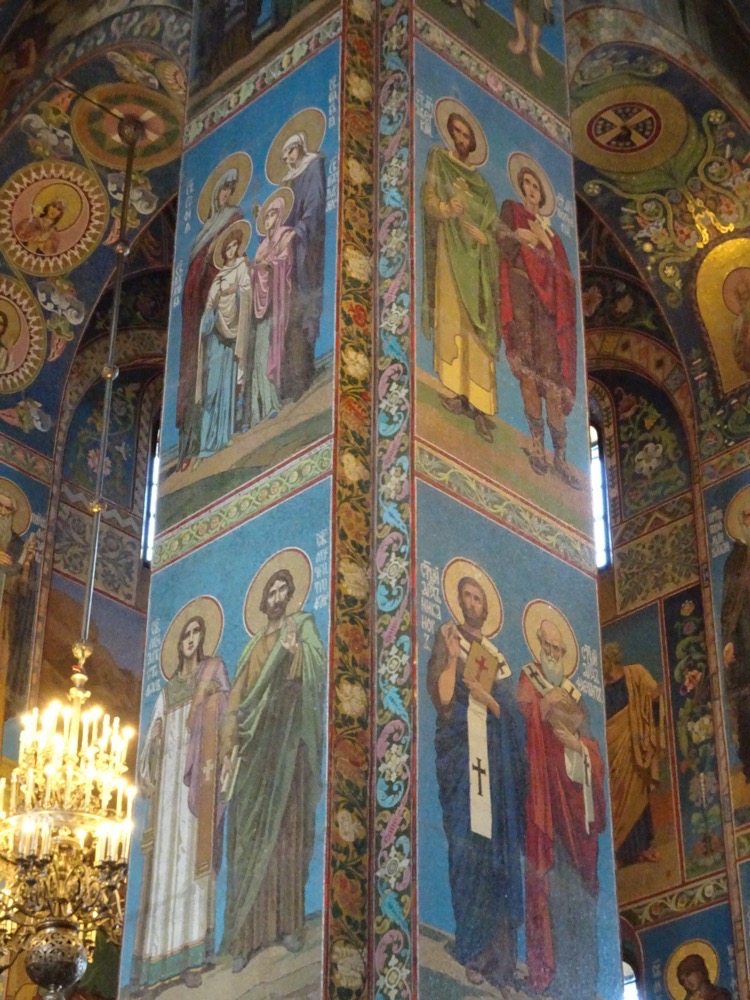
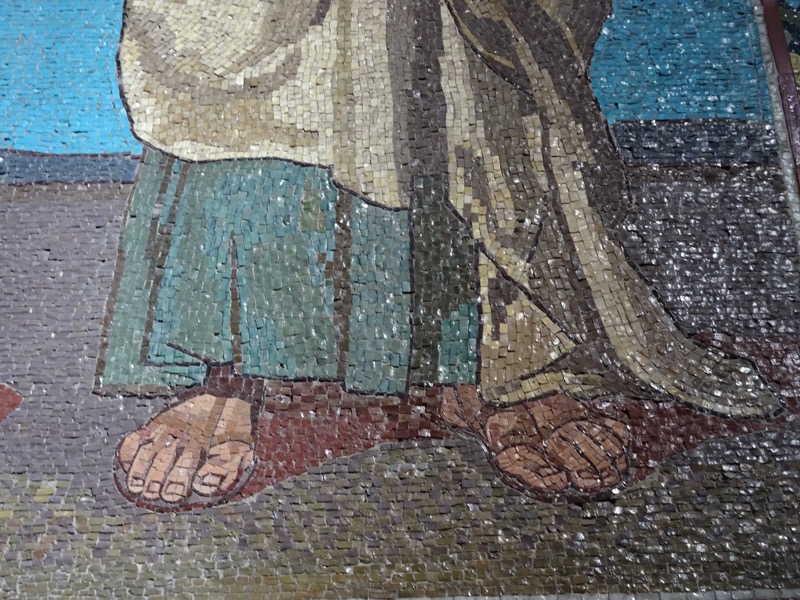
It was not until the 1970s that the management of the Church of the Spilled Blood was handed over to Saint Isaac’s Cathedral and it was turned into the mosaic museum that it is today. Proceeds from the profitable St Isaac’s Cathedral were used to fund the restoration of the church, and it was eventually reopened in 1997 after nearly 27 years of extensive restoration work. The church was never reconsecrated and is now a major tourist destination as a mosaic museum and monument to Alexander II.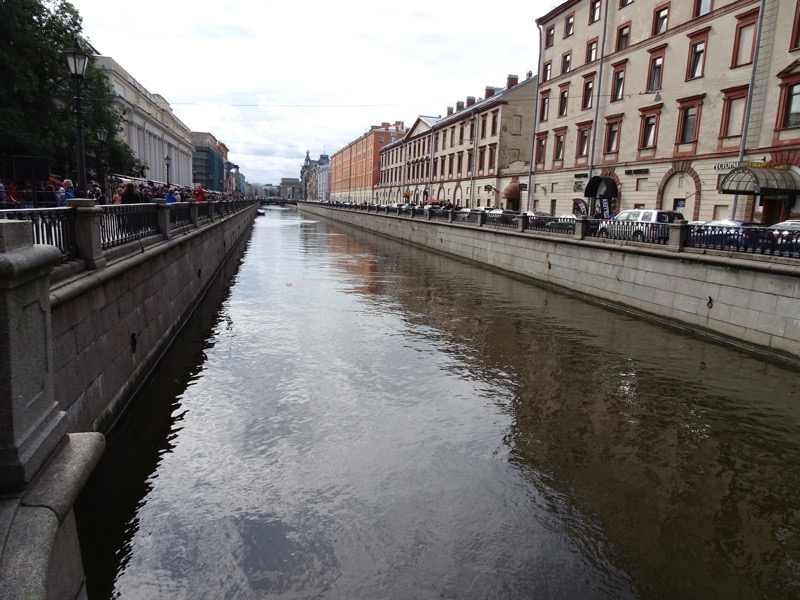 Just outside the Church of the Spilled Blood is tourist central… we were told to watch for pick pockets, but I think they are all working stalls here – souvenir prices were ridiculous!
Just outside the Church of the Spilled Blood is tourist central… we were told to watch for pick pockets, but I think they are all working stalls here – souvenir prices were ridiculous!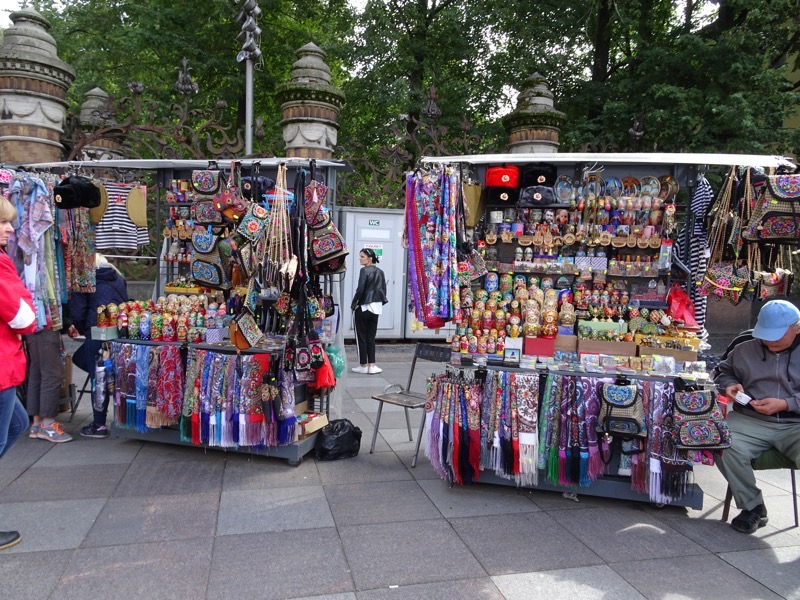
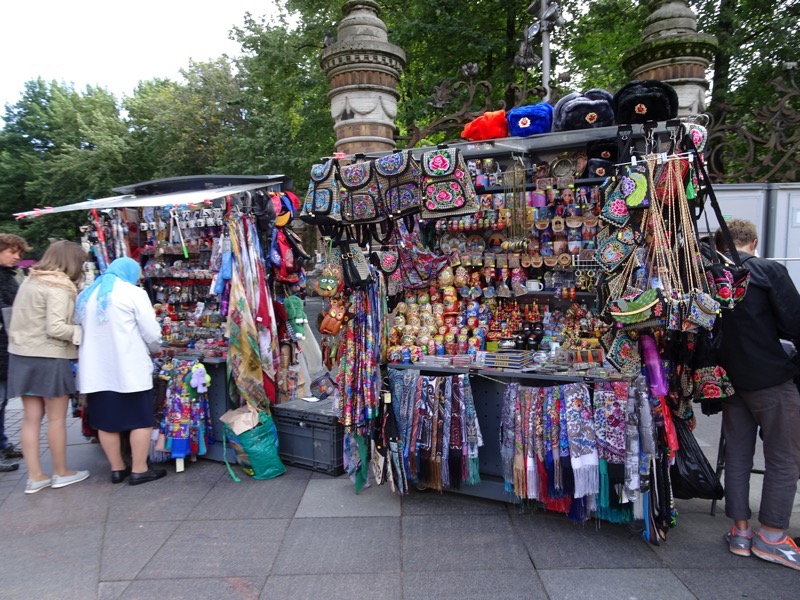
After our amazing visit to the Church of the Spilled Blood, we walked across a lovers bridge (yes another one covered in locks), to a local restaurant to have a bite for lunch. Lunch consisted of pumpkin soup, beef stroganoff (how unsual for Russia!) on mashed potatoes, and some honey cake. We had forgotten about the Russian honey cake we tried in Moscow, but I am going to have to hunt down a recipe for it, it is super sweet but quite nice.
Lunch done, we made our way to Saint Isaac’s Cathedral (aka Isaakievskiy Sobor) which is the largest Russian Orthodox cathedral in the city, and the largest Russian Orthodox Cathedral in the world, and the fourth largest cathedral of any denomination in the world (apparently – something to do with the volume of the cuppola). It is dedicated to Saint Isaac of Dalmatia, because Peter the Great (who seems to have built nearly everything in St Petersburg) was born on St Isaac’s feast day, so he adopted him as a patron saint.
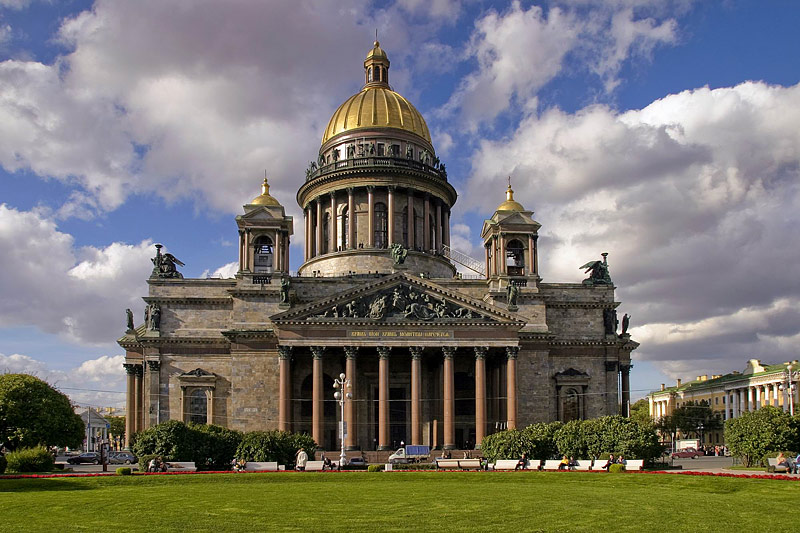 The church was built on instructions by Tsar Alexander I to replace an early chruch that had been built by Vincenzo Brenna, and it is the fourth church to be bulit on the same site. A specially formed committee examed designs until the French-born architect, August de Montferrand (1786-1858) was appointed to build the current cathedral. Montferrand, who had studied under Napoleon’s pet desinger Charles Percier, had create a design that was criticised by some members of the commision for the allegedly boring rhythm of it’s four identical octastyle porticos. Some thought that even though the design had enormous proportions, it would look short and squat and not particularly impressive. There were also apparently concerns about building a 100m tall cathedral on old and insecure foundations could be problematic. However, the emperor favoured the design and things worked out in Montferrand’s favour after all.
The church was built on instructions by Tsar Alexander I to replace an early chruch that had been built by Vincenzo Brenna, and it is the fourth church to be bulit on the same site. A specially formed committee examed designs until the French-born architect, August de Montferrand (1786-1858) was appointed to build the current cathedral. Montferrand, who had studied under Napoleon’s pet desinger Charles Percier, had create a design that was criticised by some members of the commision for the allegedly boring rhythm of it’s four identical octastyle porticos. Some thought that even though the design had enormous proportions, it would look short and squat and not particularly impressive. There were also apparently concerns about building a 100m tall cathedral on old and insecure foundations could be problematic. However, the emperor favoured the design and things worked out in Montferrand’s favour after all.



Montferrand moved to St Petersburg from 1818 to 1858 to oversee the construction which took a full 40 years to completion – the cathedral’s foundations were strengthened by driving 25,000 piles into the fenland of Saint Petersburg and innovative methods were created to erect the giant columns of the portico. Montferrand dedicated his life to creating this edifice, and his one wish was to be buried here in his creation, but the Emperor would not allow it, as Montferrand was Roman Catholic and this was an orthodox church.

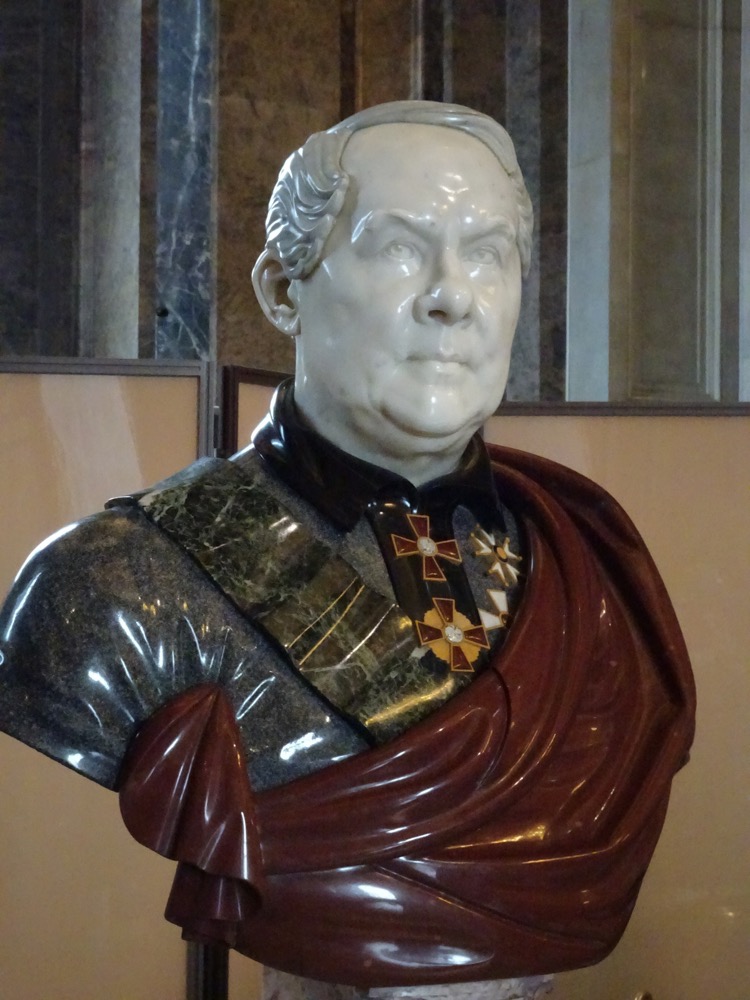
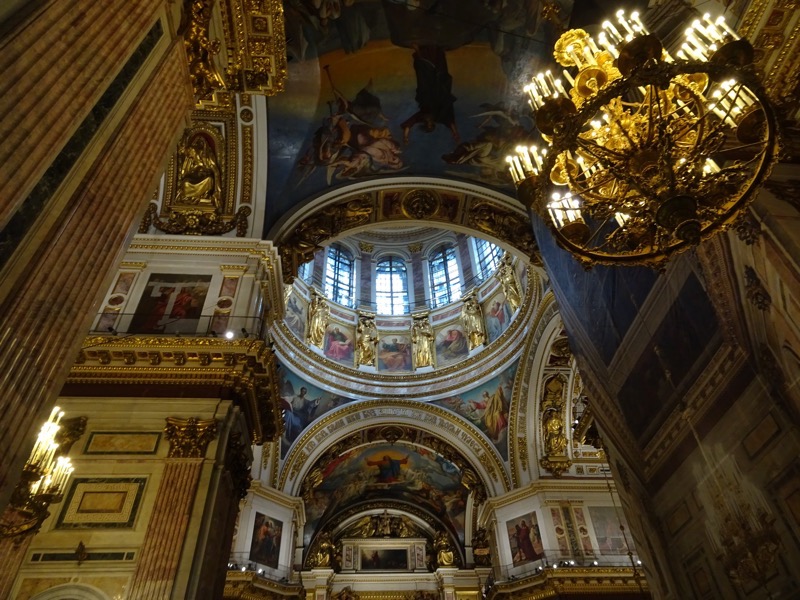
The Cathedral has had a spotted history – during the Soviet era, most of the building was stripped of its religious treasures and iconographies, and in 1931 it was turned into the Musuem of History of Relgion and Atheism. The dove sculpures were removed and replaced by a Foucault pendulum. Further, during WWII, the dome was painted over in gray paint to avoid attracting enemy air craft, and on it’s top in the skylight of the dome, a geodesical intersection point was installed to assist in determining the positions of German artillery.

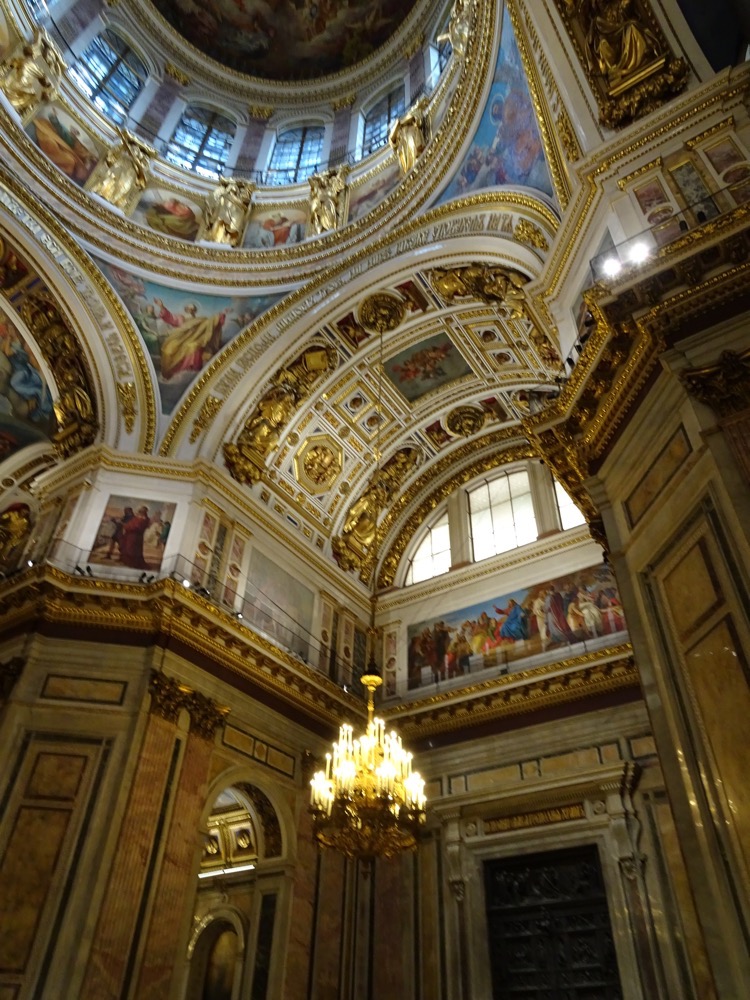
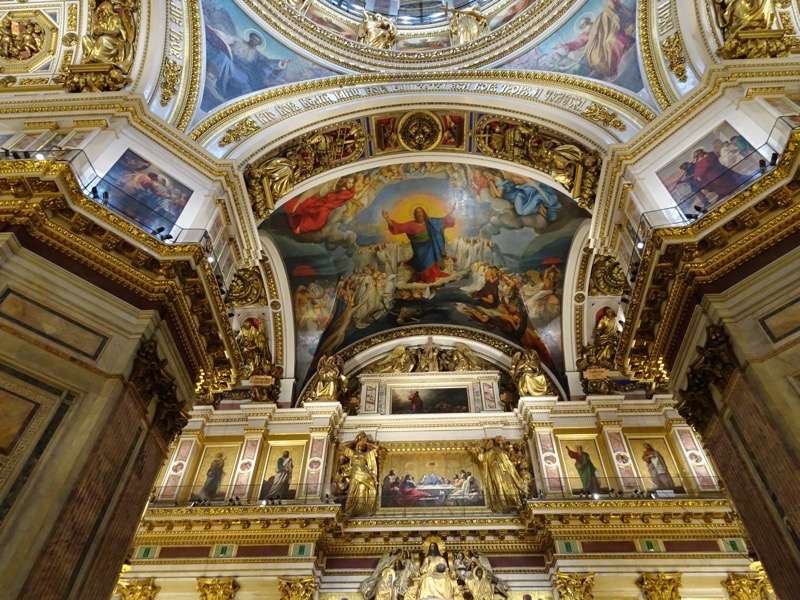
 By Maria’s account – the church continues to have a somewhat dubious place in social history. The state has funded any restoration, management and administration of the Church in recent years. It has been a pet project of Putin’s to maintain and upkeep this particular cathedral, however recently, it has been handed over to Church control, which means the income from St Isaac’s Cathedral, and the Church of the Spilled Blood will no longer be open to public scrutiny. Instead the Church will be able to do as they please with tourist income received from these two iconic sites… the people are not happy about this change of plan, and there is some speculation that Putin’s cronies stand to benefit from these new financial arrangements. So much so, that various sectors of the public and the tourism industry in particular are considering striking and protesting actions to attempt to return the control of these public treasures to public administration.
By Maria’s account – the church continues to have a somewhat dubious place in social history. The state has funded any restoration, management and administration of the Church in recent years. It has been a pet project of Putin’s to maintain and upkeep this particular cathedral, however recently, it has been handed over to Church control, which means the income from St Isaac’s Cathedral, and the Church of the Spilled Blood will no longer be open to public scrutiny. Instead the Church will be able to do as they please with tourist income received from these two iconic sites… the people are not happy about this change of plan, and there is some speculation that Putin’s cronies stand to benefit from these new financial arrangements. So much so, that various sectors of the public and the tourism industry in particular are considering striking and protesting actions to attempt to return the control of these public treasures to public administration.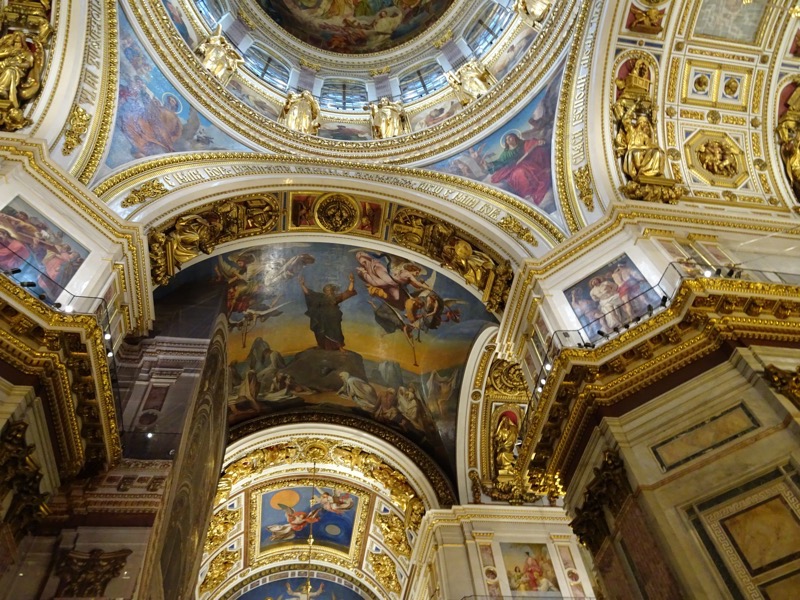
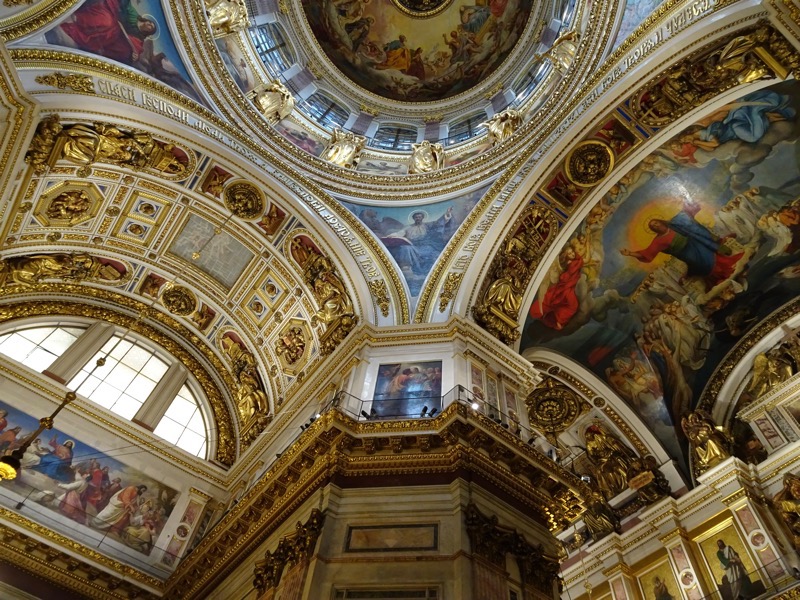
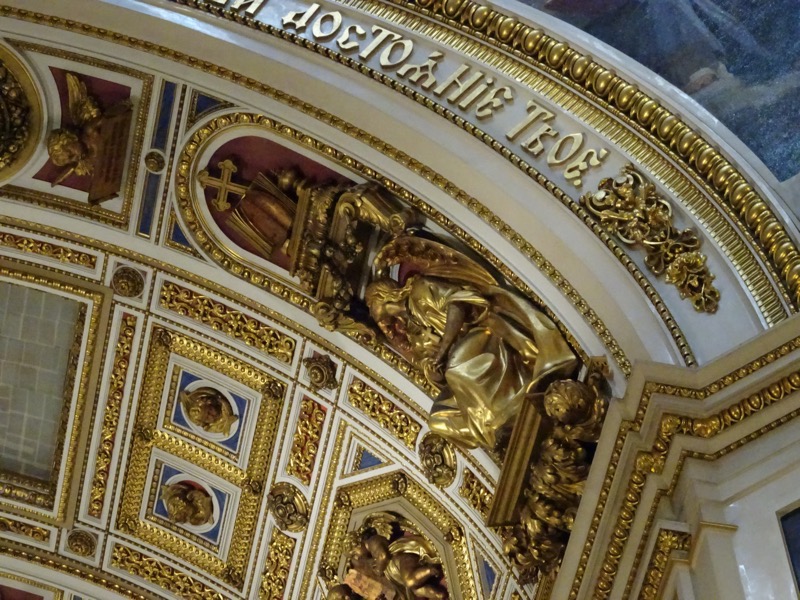
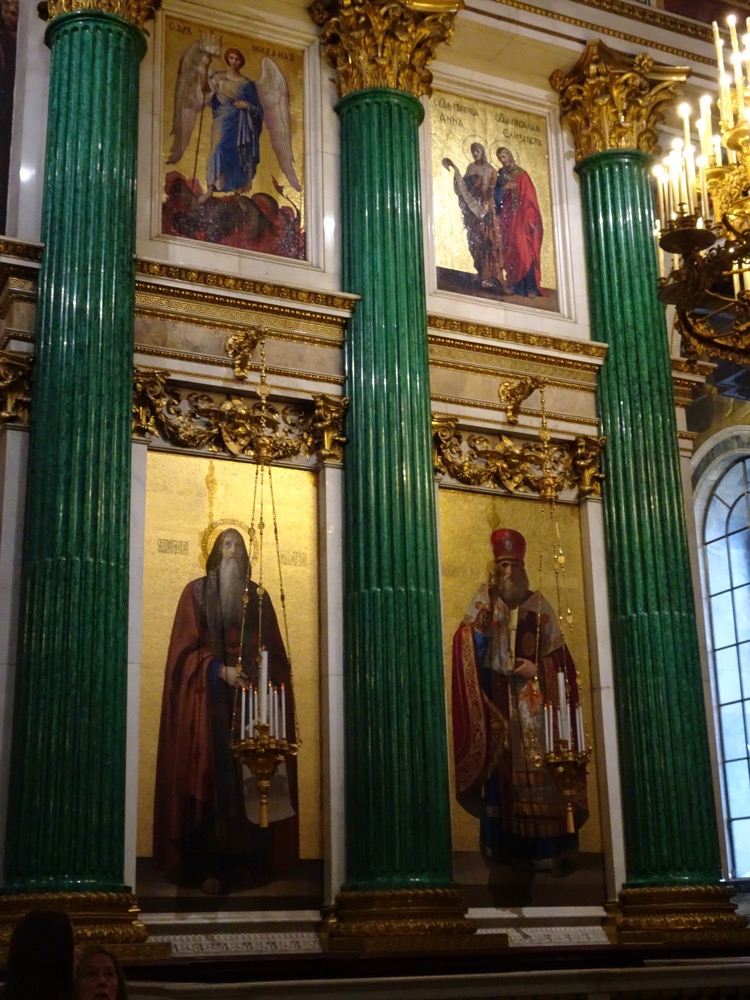
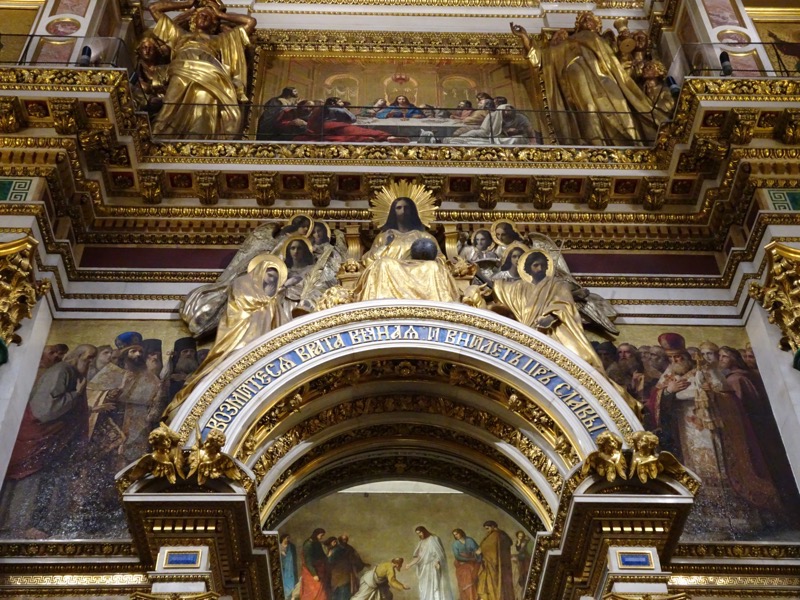
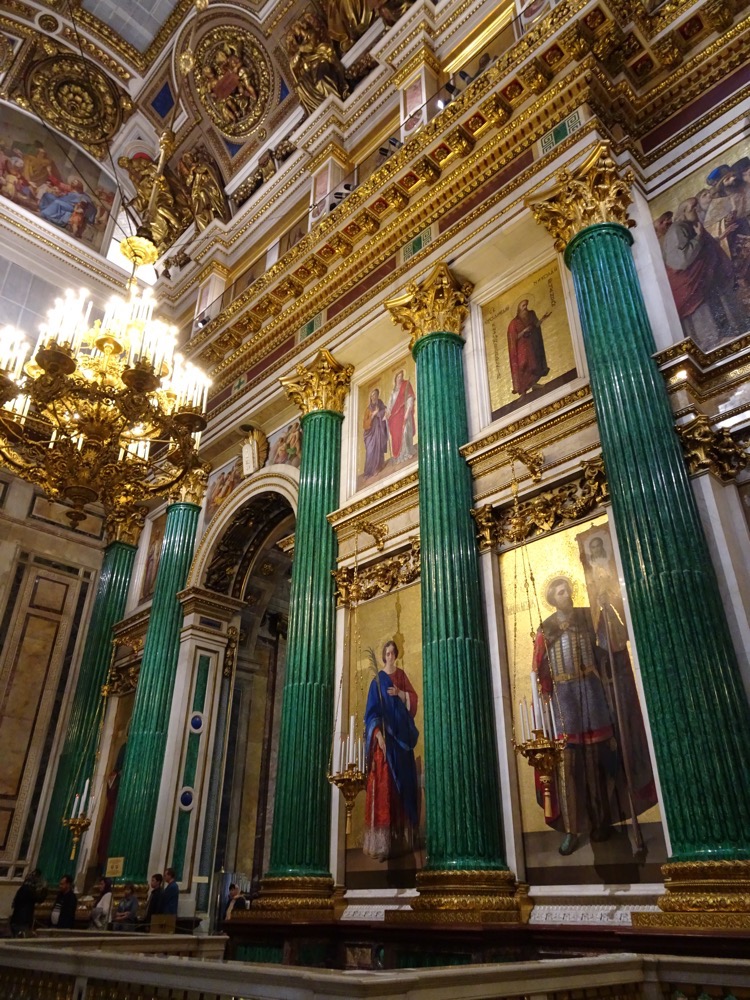 Incredible mosaic work, and so much carved and gilded timber, it was really quite breathtaking. The only church I have seen more impressive than this one was St Peter’s in Rome… and that I think was largely due to the sheer scale of it.
Incredible mosaic work, and so much carved and gilded timber, it was really quite breathtaking. The only church I have seen more impressive than this one was St Peter’s in Rome… and that I think was largely due to the sheer scale of it.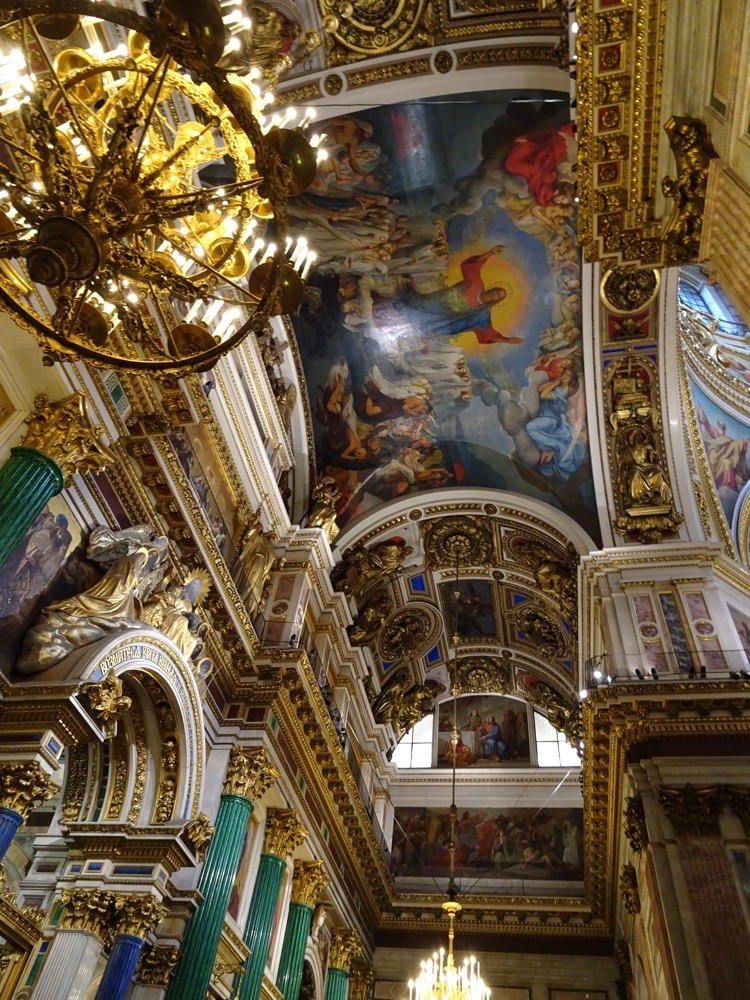
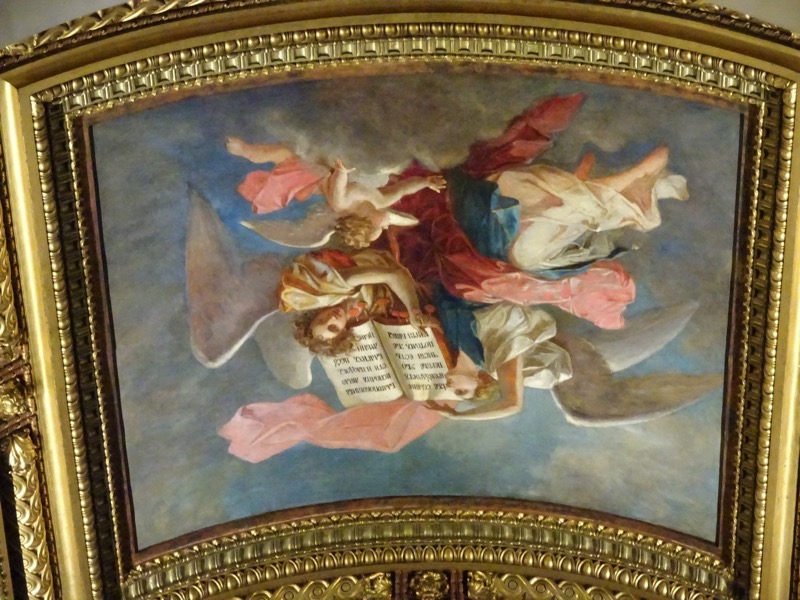 Detail of the mosaic work…
Detail of the mosaic work… 
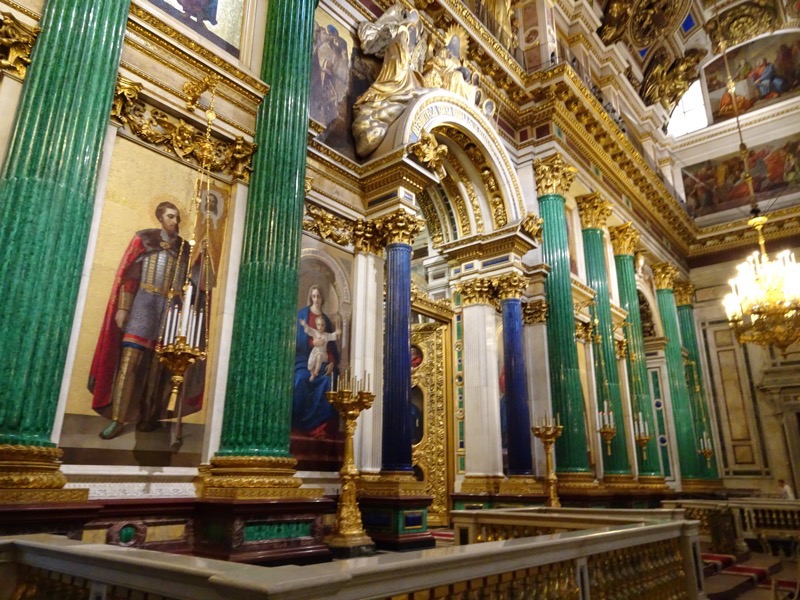



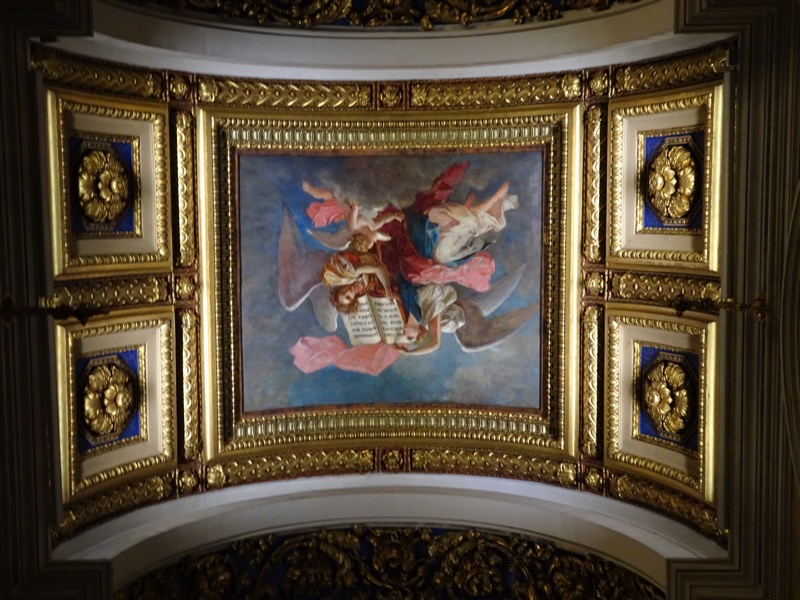
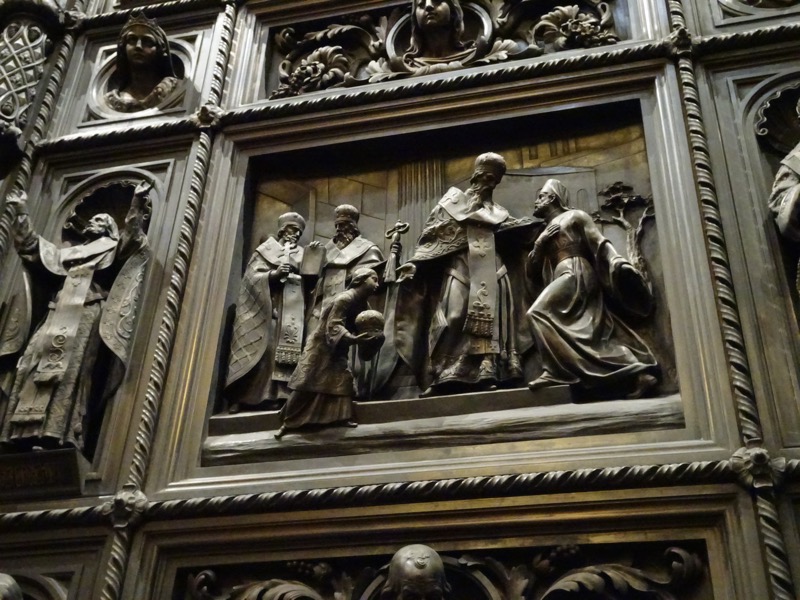
Next stop on our tour was the Yusupov Palace which was also known as the Moika Palace. It was the primary place of residence of the Family of Yusupov who were very close to the Romanovs. The building was also the place where the younger Yusupovs murdered Ra-Ra-Rasputin on December 17th, 1916.
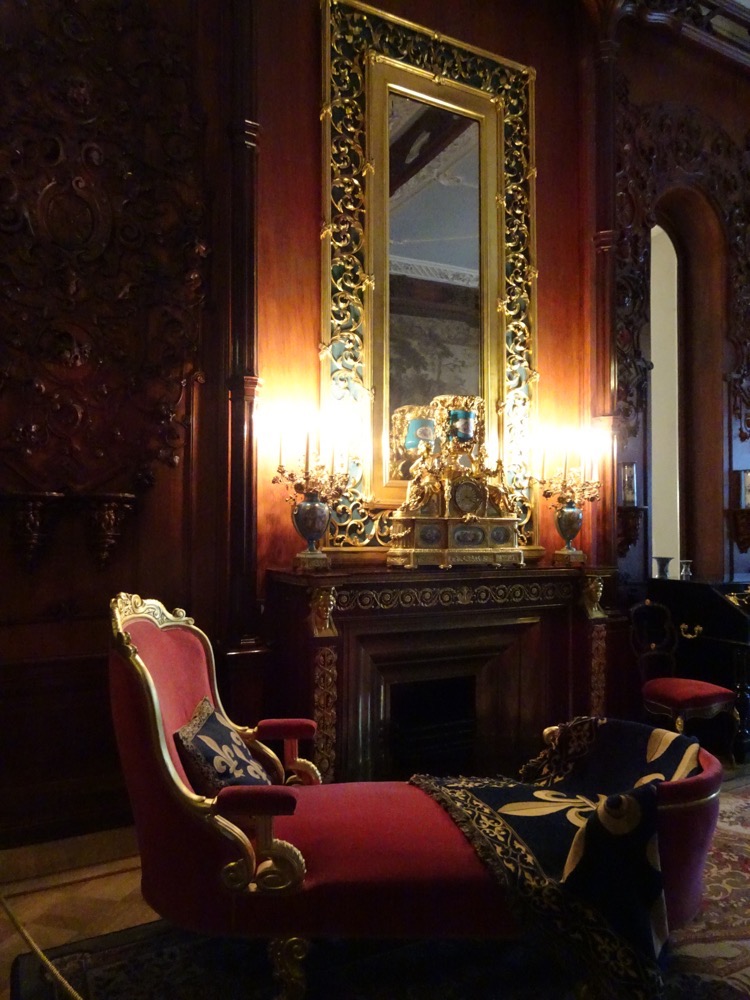
The palace was built around 1776 and from 1830 to 1917, the palace belonged to a noble Russian family called the House of Yusupov. They were immensely wealthy, close to the Romanovs and known for their philanthropic tendencies and their art collections. They had personally amassed more than 40,000 works of art, including works by Rembrandt, and expensive sculptures decorated the palace and expensive jewels decorated their persons. During the Russian Revolution, the family fled for their lives unable to take their treasured possessions with them, and the Yusupov art collection was nationalized and relocated in the Hermitage and other museums.

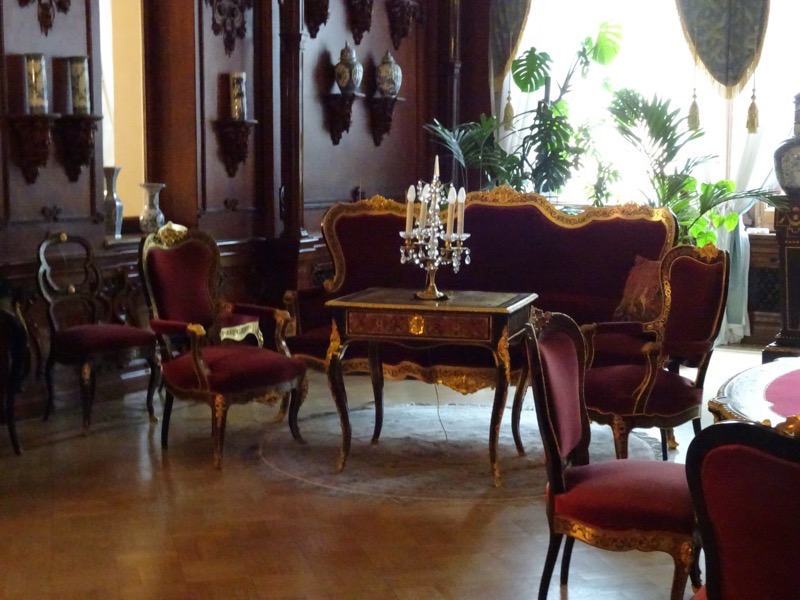 The palace was as lavishly decorated and appointed as the royal palaces of the time, the Yusupovs were extremely wealthy – though the rooms and spaces are not as large as the royal residences.
The palace was as lavishly decorated and appointed as the royal palaces of the time, the Yusupovs were extremely wealthy – though the rooms and spaces are not as large as the royal residences.
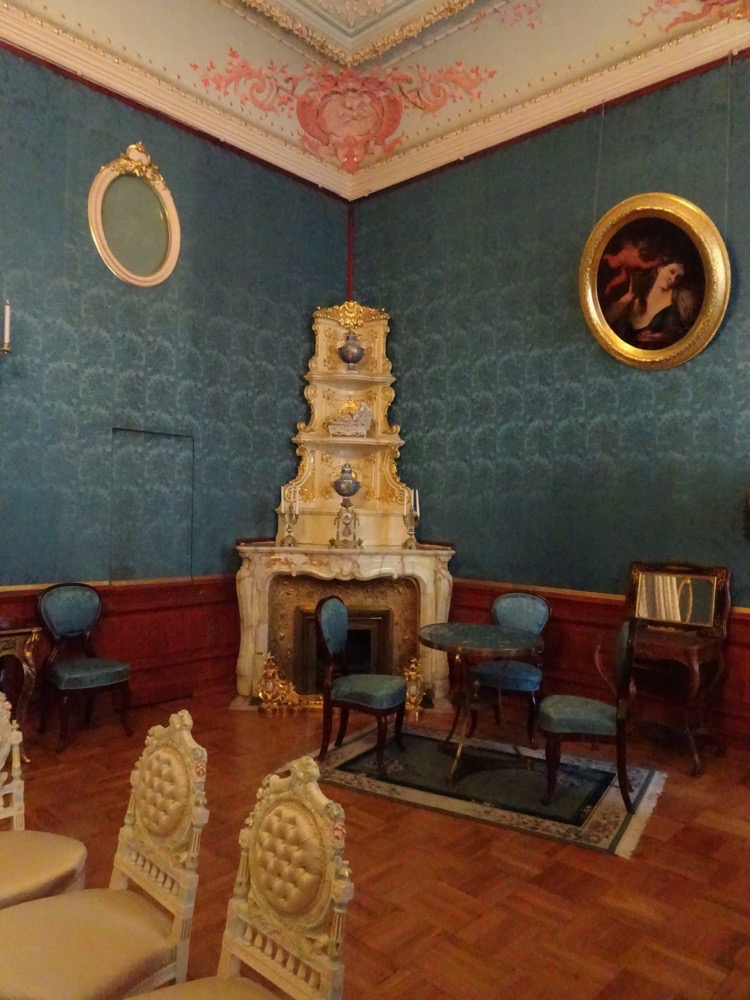
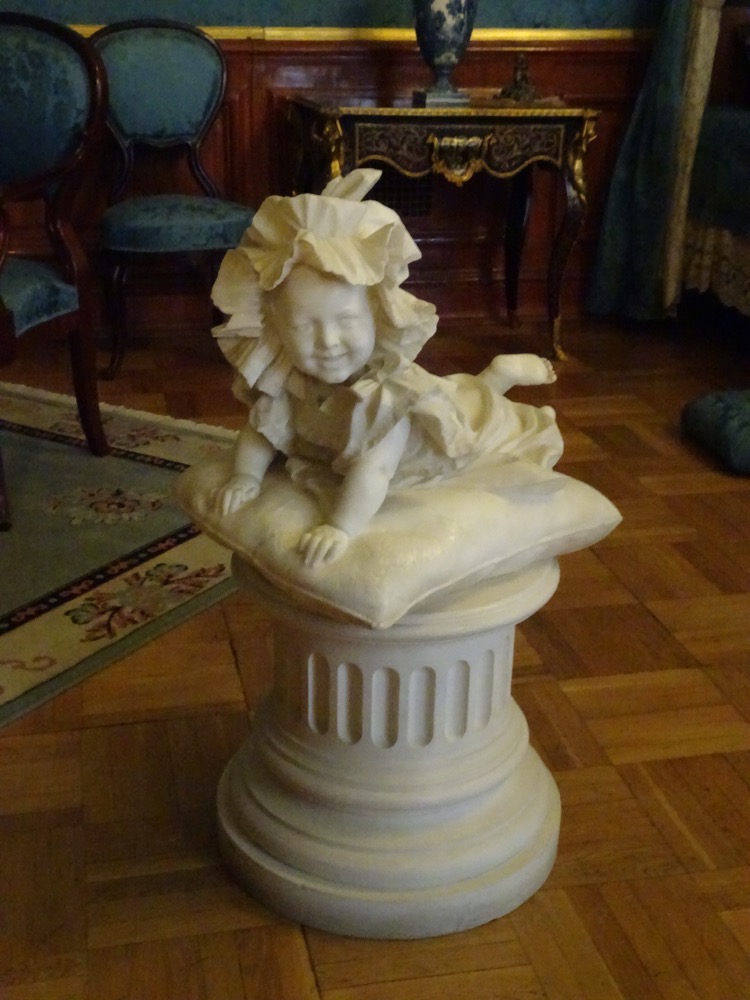


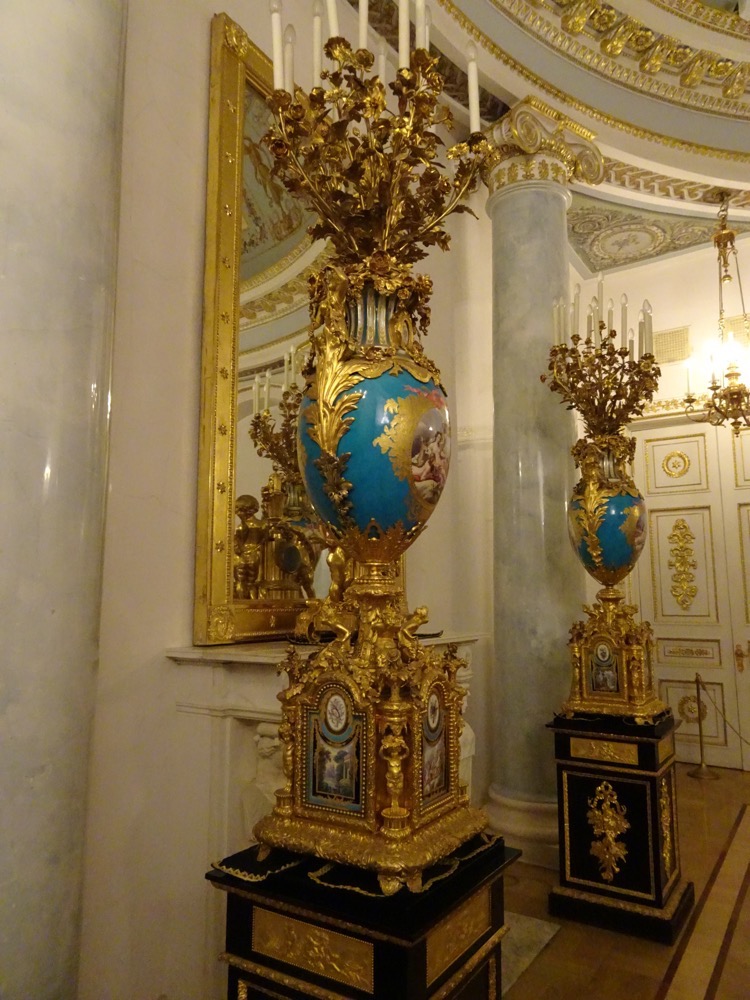


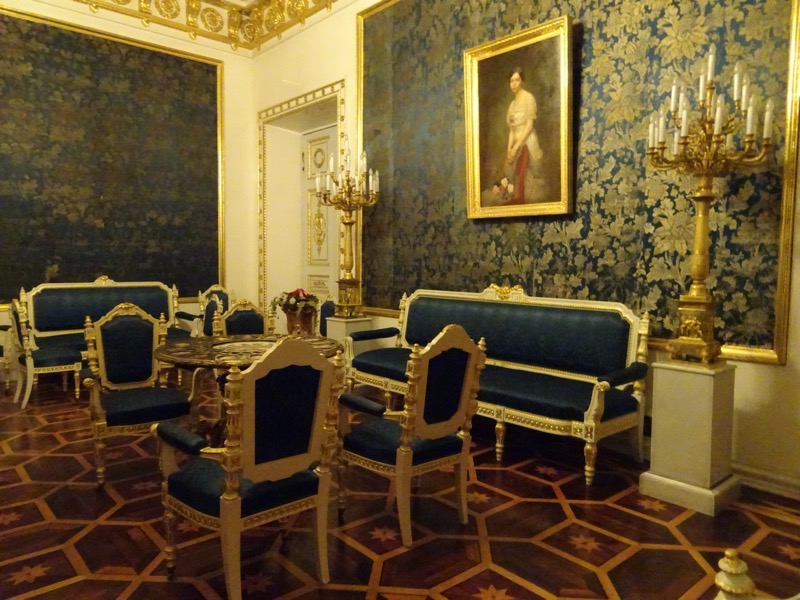


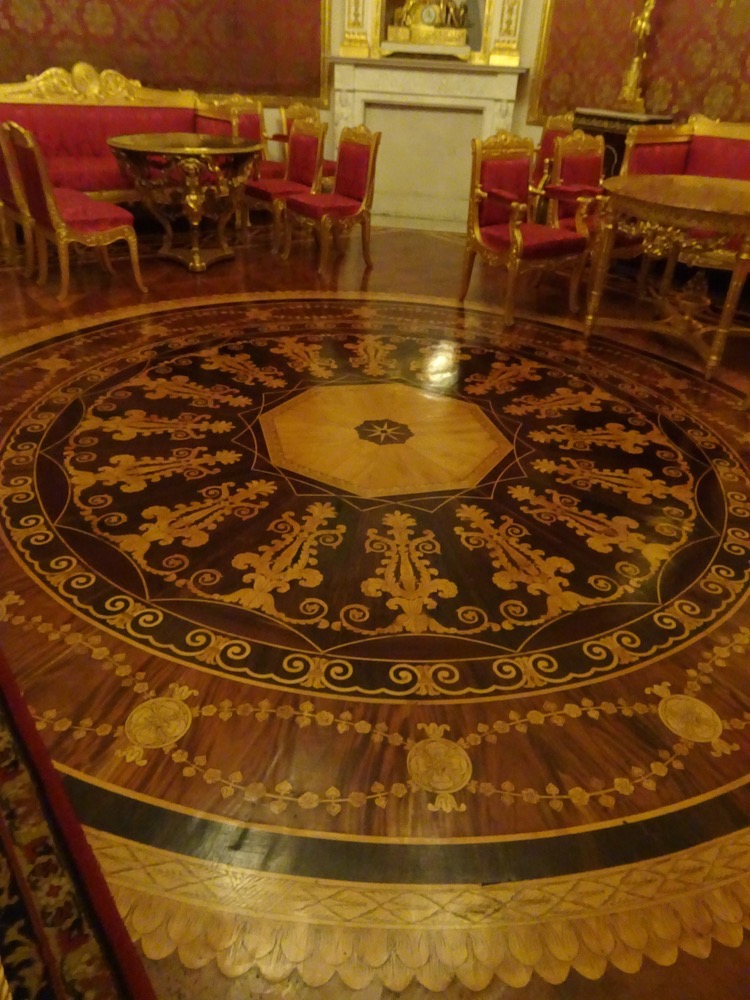
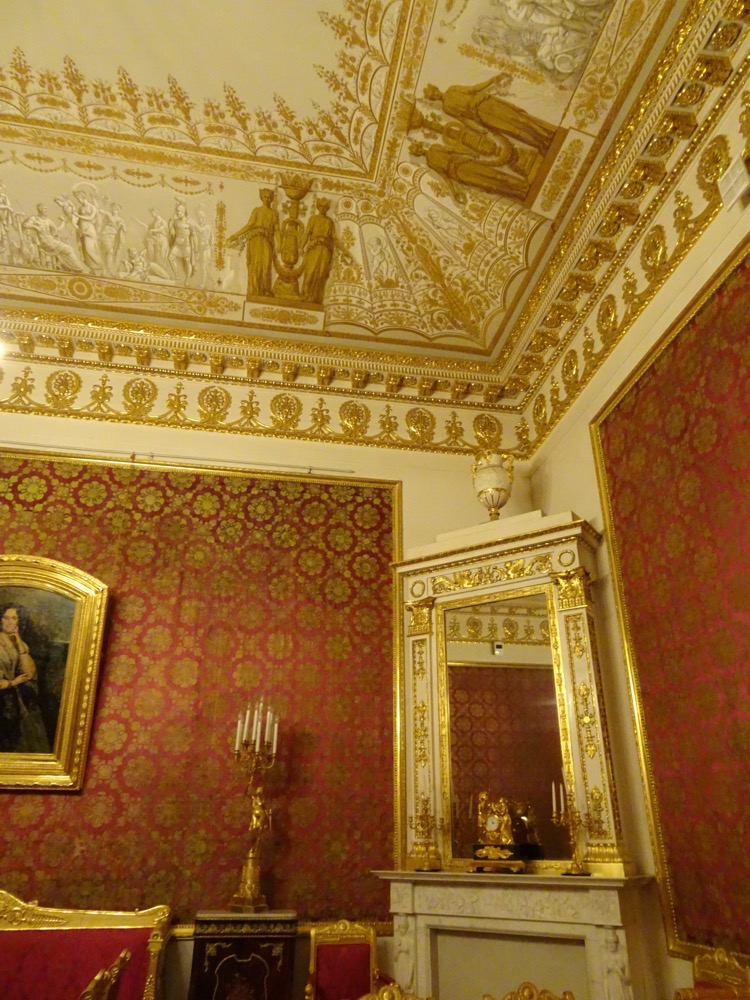
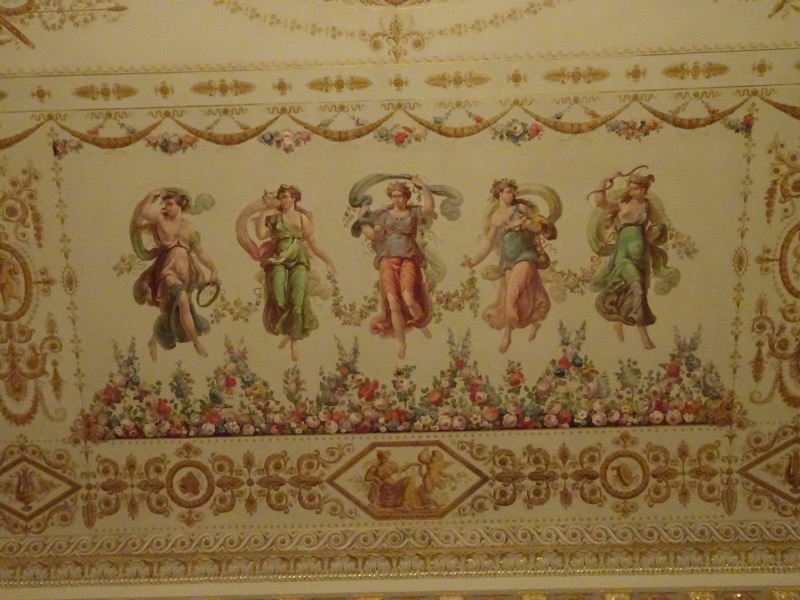
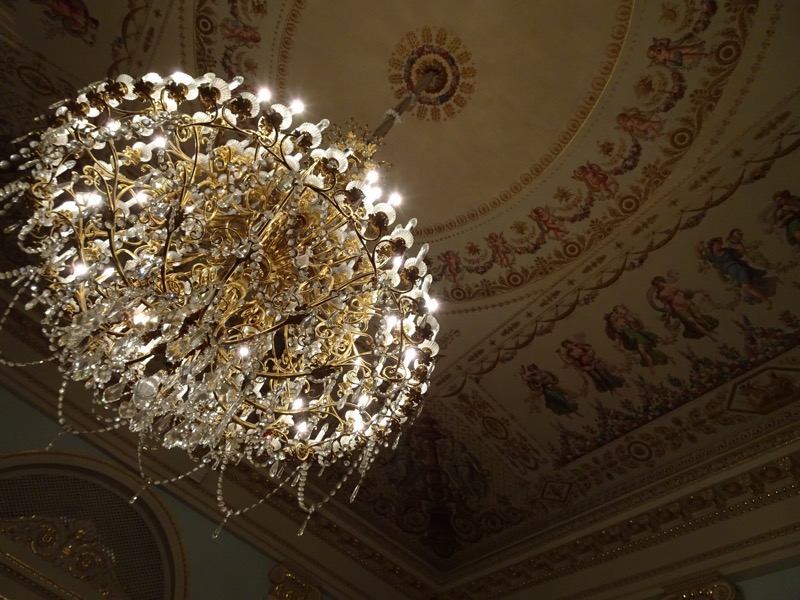
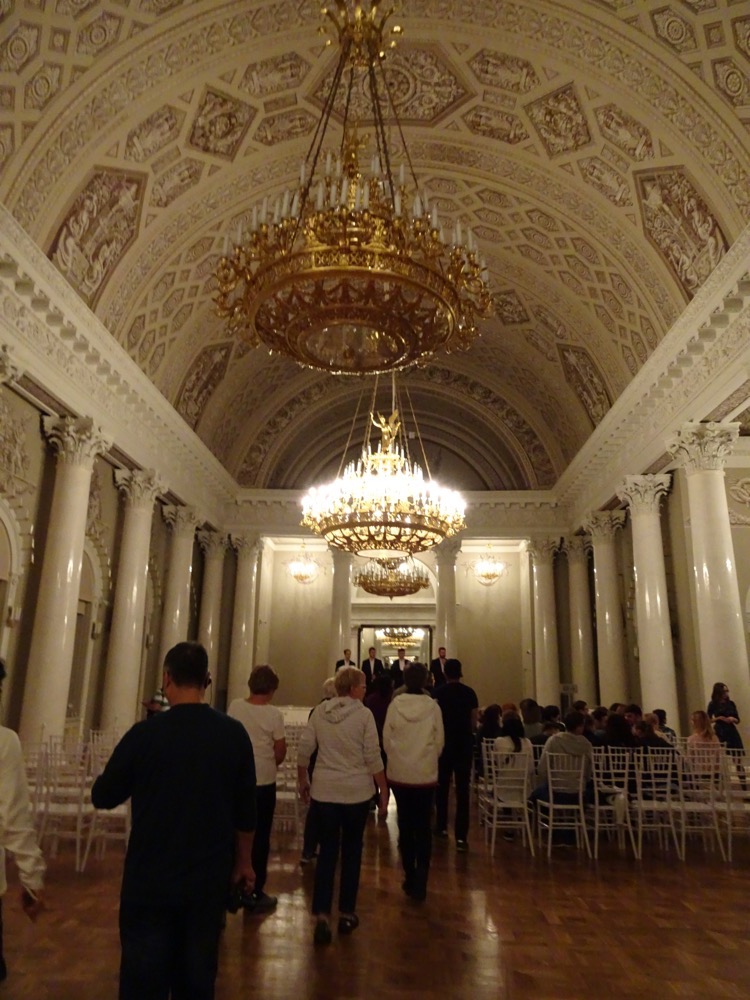
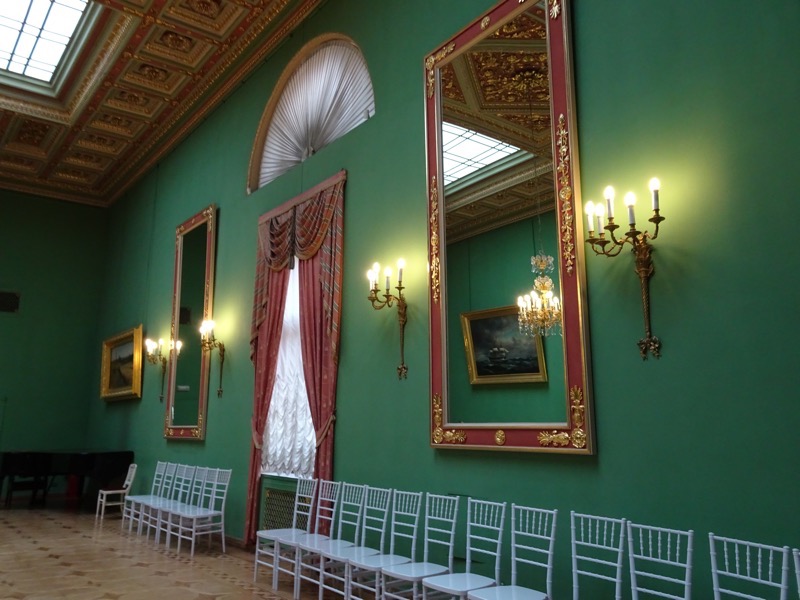


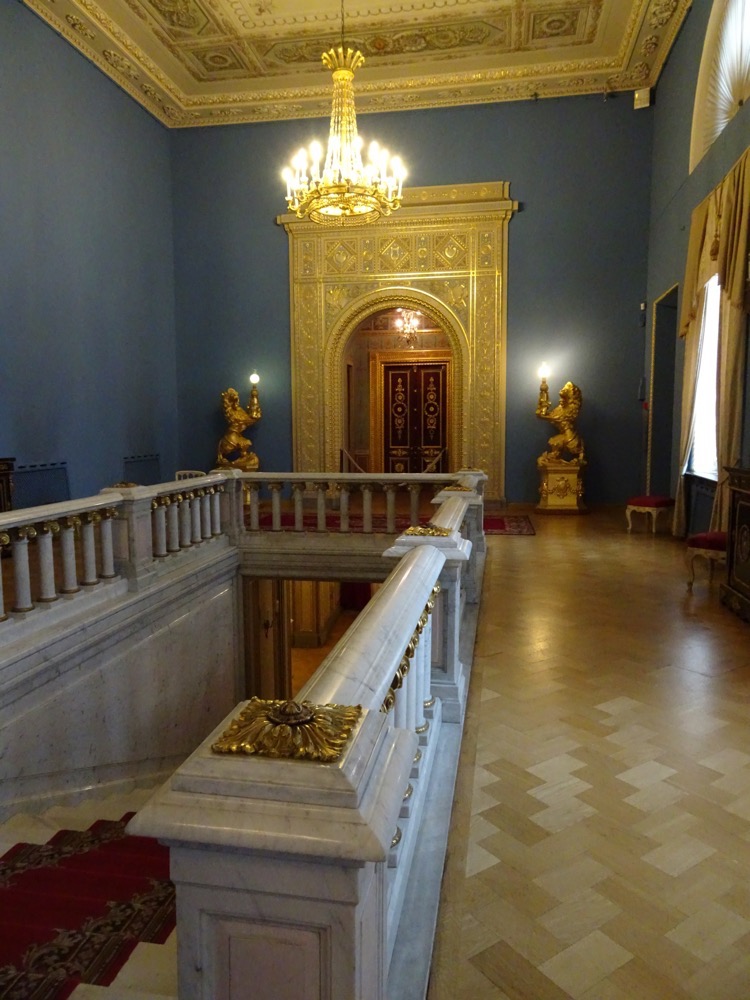 Inside the Yusupov Palace is a private theatre that was built to entertain family and friends for private ballet and opera performances. This was the start of the current home theatre trend, I am sure of it!
Inside the Yusupov Palace is a private theatre that was built to entertain family and friends for private ballet and opera performances. This was the start of the current home theatre trend, I am sure of it!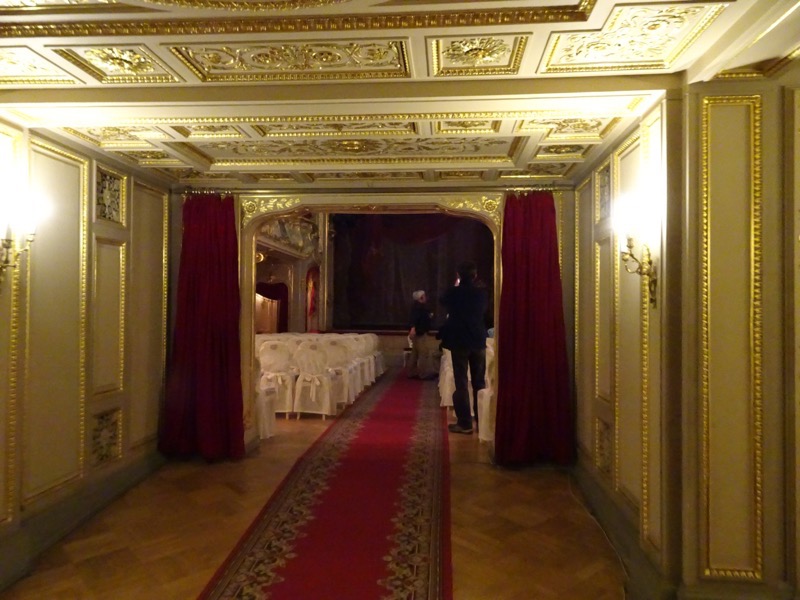

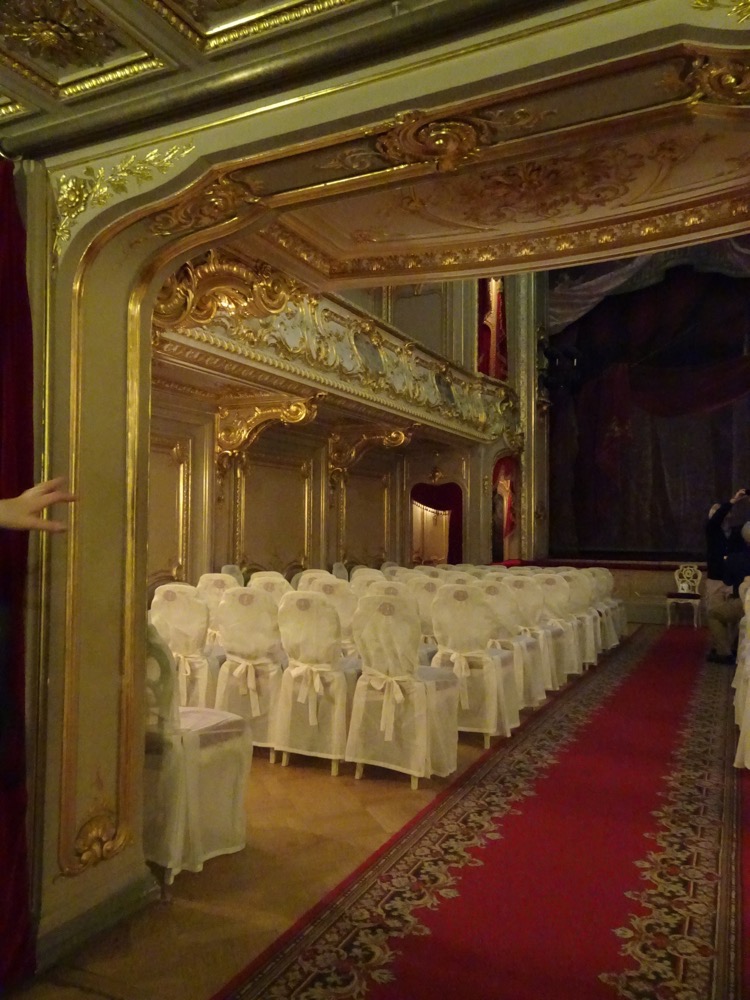 Though today, most people don’t do them in quite so much style. 😉
Though today, most people don’t do them in quite so much style. 😉 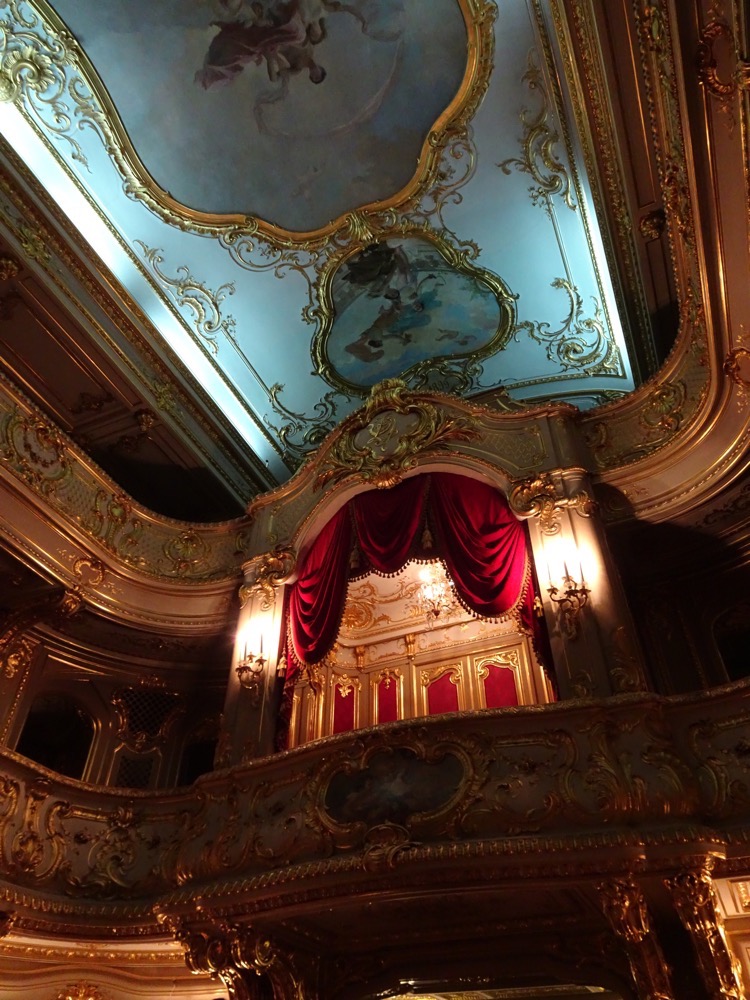



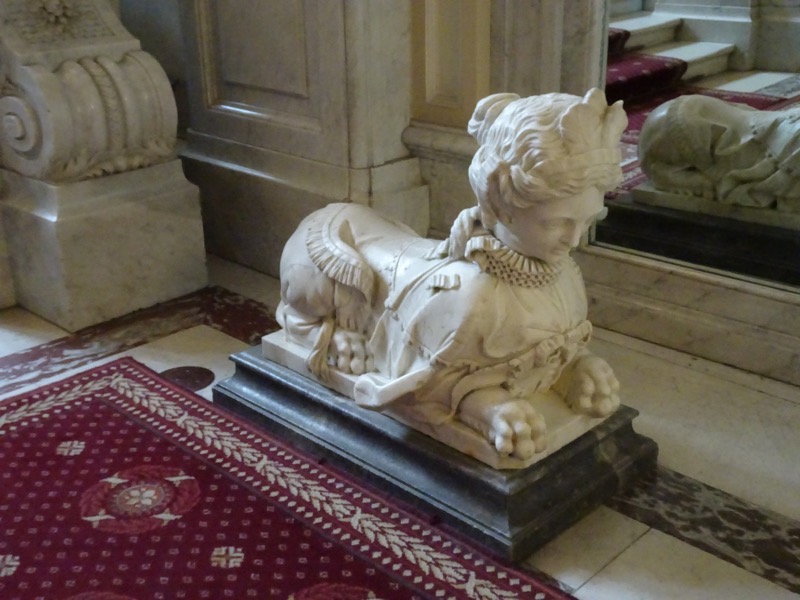
Yusupov Palace is where the assassination of Grigori Rasputin was played out. A monarchist group led by Prince Felix Yusupov, heir apparent to the vast Yusupov family fortunes, together with Vladimir Purishkevish and the Grand Duke Dimitri Pavlovich invited Rasputin to the Yusupov Palace to a dinner in Felix’s lavishly appointed private rooms in the cellar of the palace.
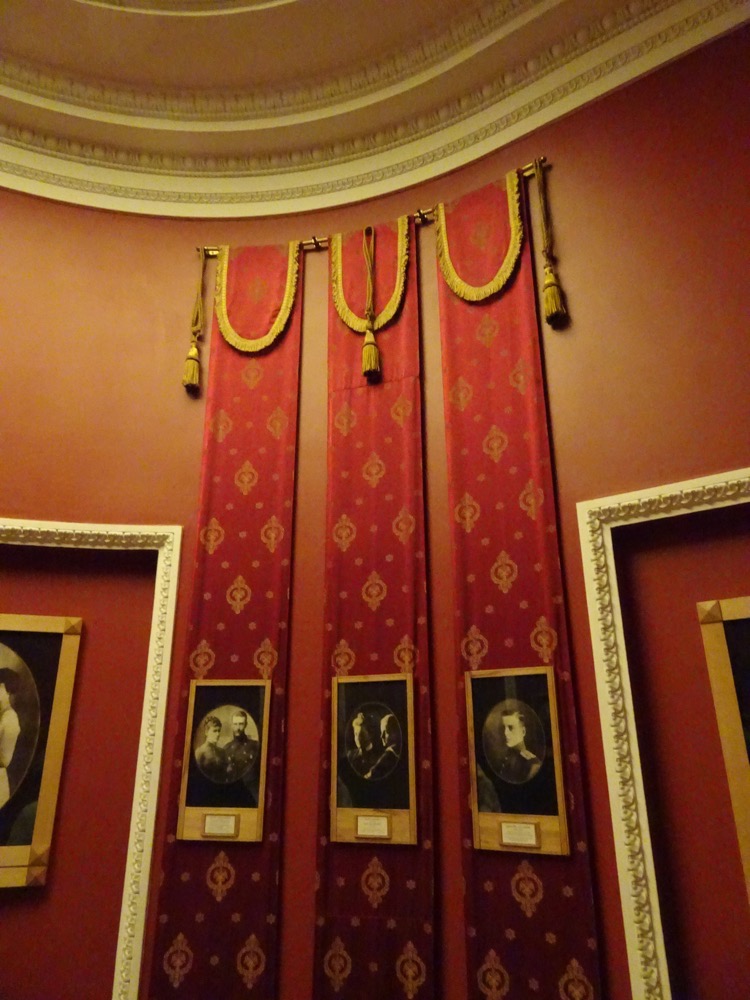

Here, Rasputin was served poisoned wine, and the others made an excuse to leave him for 30 mins. When they were sure he would be dead, Felix returned to the cellar to find him unaffected. Rasputin, immediately clued onto their surprise and knew that something was up. He attempted to run, but Felix Yusupov retrieved a revolver and shot Rasputin from the side. Felix then went back upstairs to inform the plotters that Rasputin was dead, but he took Felix’s absence as an opportunity to flee from the cellar through a side door. The plotters chased Rasputin out onto the street, where Purishkevich shot Rasputin in the back. He was then dragged back inside and a third, close range bullet, was shot into his forehead. The murderers then wrapped him up and drove outside the city to dump his body into the Neva River! Only according to Maria, they did not allow for the fact that the river was frozen, and it took them a long time to dig a hole through the ice in order to dump his body.

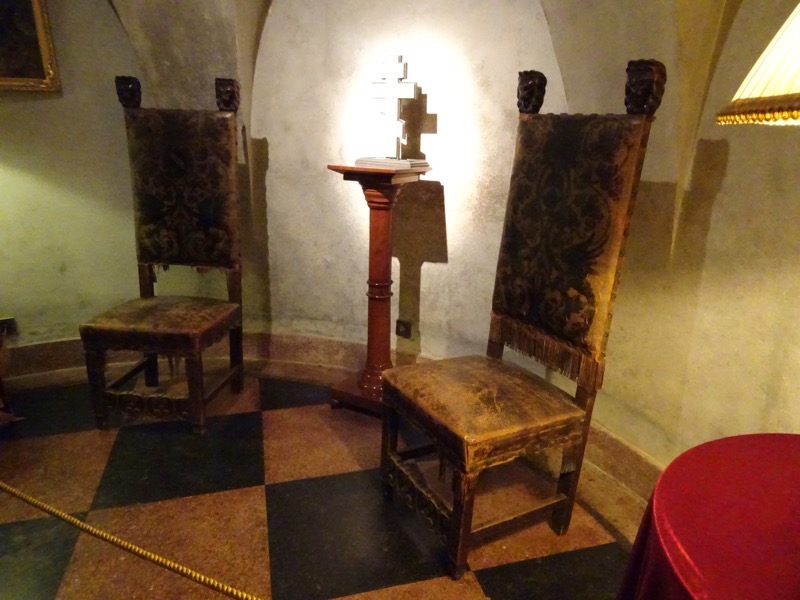 Felix Yusupov must not have been a particularly bright fellow, as he immediately started telling everyone that he had killed Rasputin and saved the aristocracy from his influence over the Romanovs, and was promptly arrested. (Gotta admit, I don’t love the wax dummies.)
Felix Yusupov must not have been a particularly bright fellow, as he immediately started telling everyone that he had killed Rasputin and saved the aristocracy from his influence over the Romanovs, and was promptly arrested. (Gotta admit, I don’t love the wax dummies.)
Well, after this it was a final stop for some souvenir shopping in lovely St Petersburg in what must have been the most expensive souvenir shop in all of Russia – or perhaps we only thought that because we had seen prices in Moscow where they don’t have thousands of cruise ship passengers to fleece on a semi-regular basis. 🙂
We had a marvelous, if hectic, two days in St Petersburg and for now, it remains firmly on my list to go back to – mostly to see the Hermitage properly. I feel we had sufficient time in each of the other historical sites we visited, and it was only here that I could have spent many, many hours wandering the galleries and corridors.
Tomorrow – Helsinki!

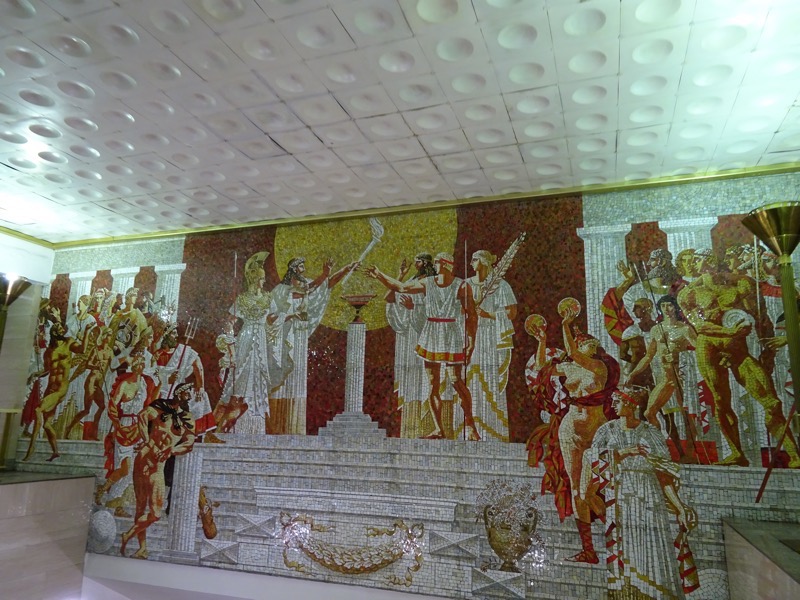

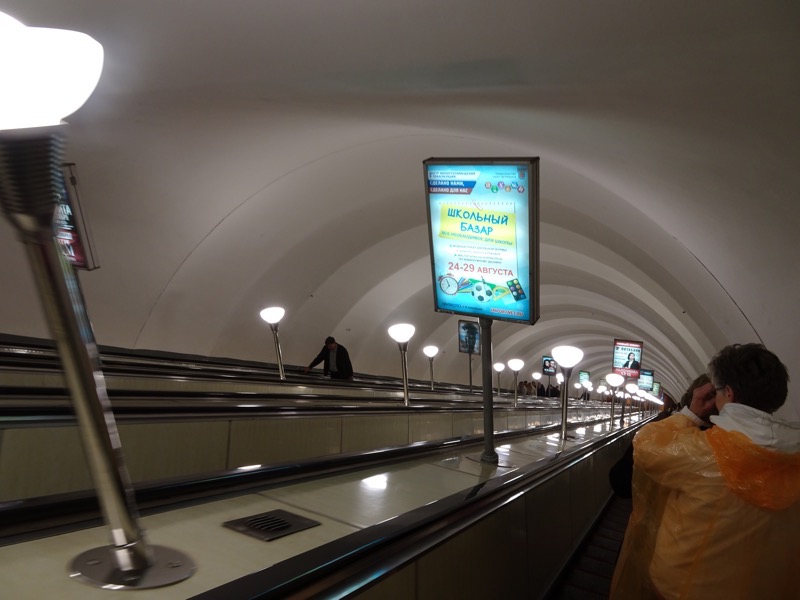
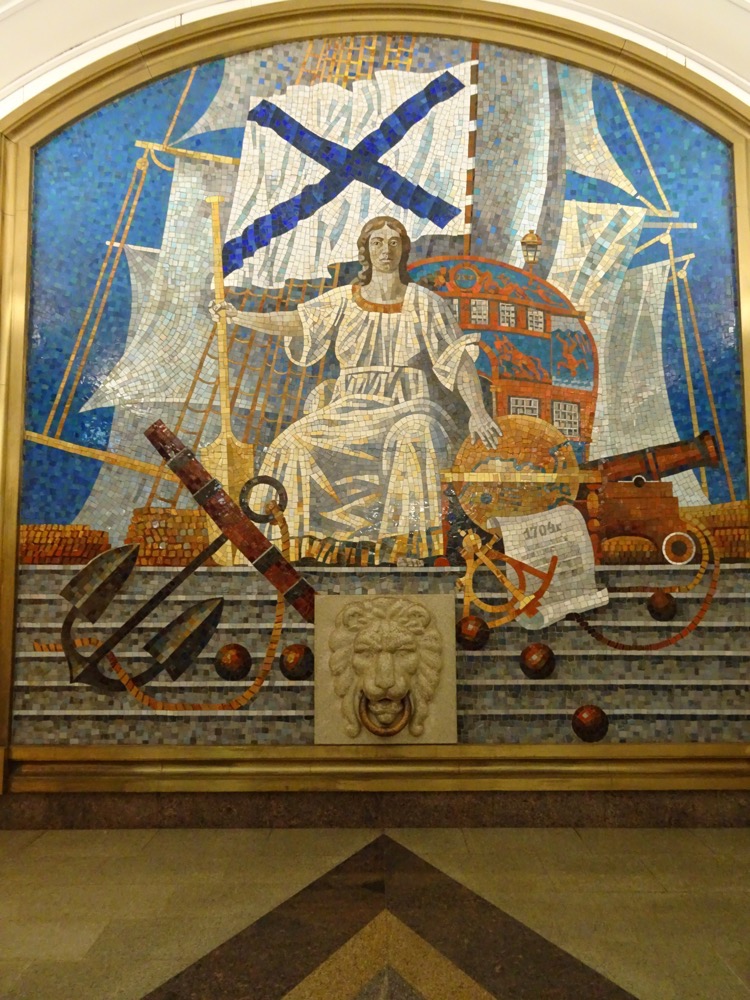
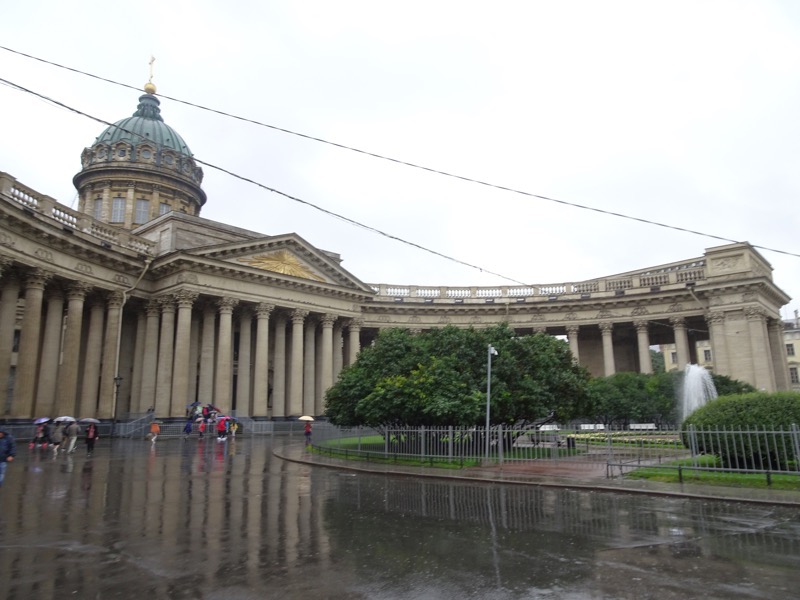 Beautiful inside, the church is still in everyday use, there was a service happening, so only a few photos from the back of the church.
Beautiful inside, the church is still in everyday use, there was a service happening, so only a few photos from the back of the church.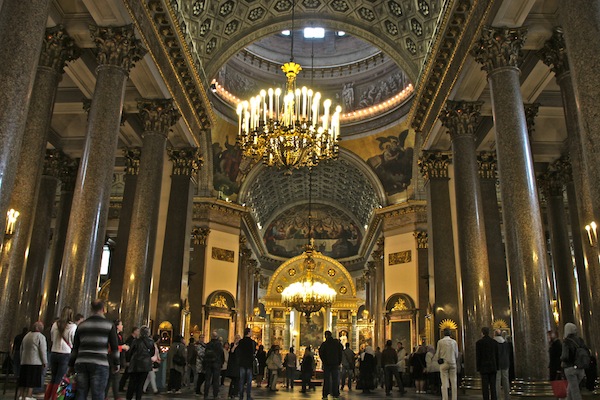
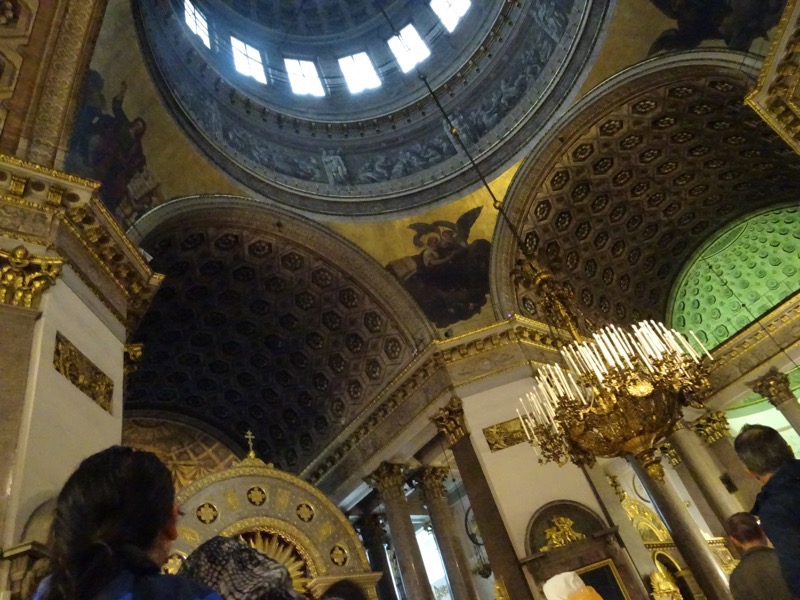
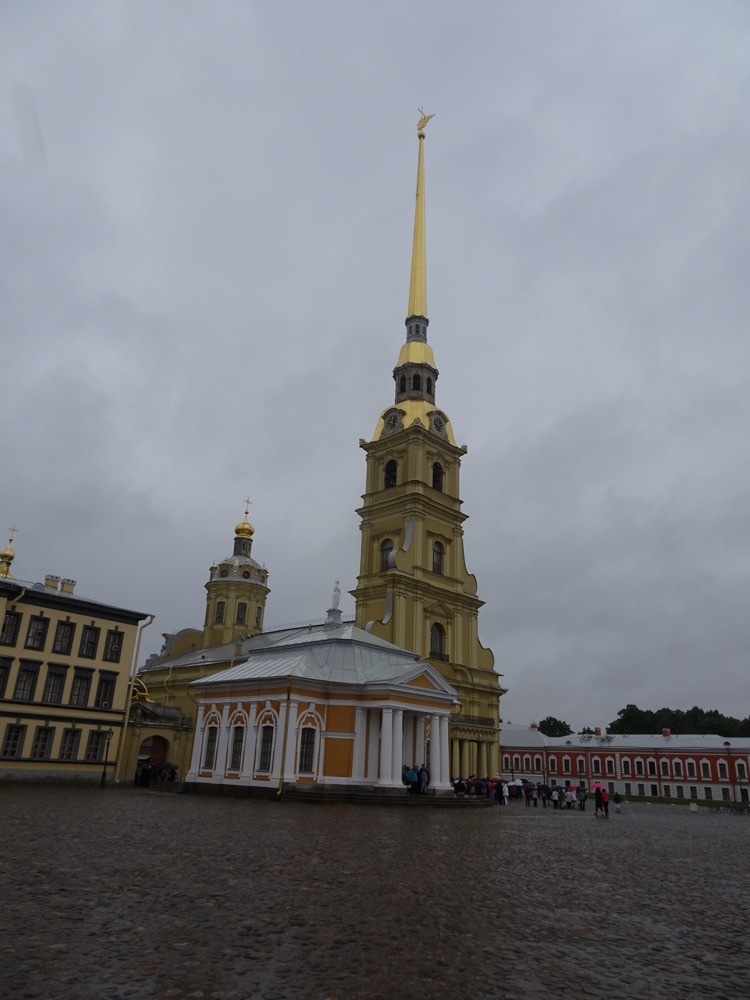 The square is normally flooded with tourists, but the rain seems to have kept many indoors this morning – there was still a ridiculous crush to get inside as the tour guides were vying to get their groups in our of the rains… seriously I got claustrophobic being pushed around in the crowd and was concerned I was going to be hurt. People need to chill out.
The square is normally flooded with tourists, but the rain seems to have kept many indoors this morning – there was still a ridiculous crush to get inside as the tour guides were vying to get their groups in our of the rains… seriously I got claustrophobic being pushed around in the crowd and was concerned I was going to be hurt. People need to chill out.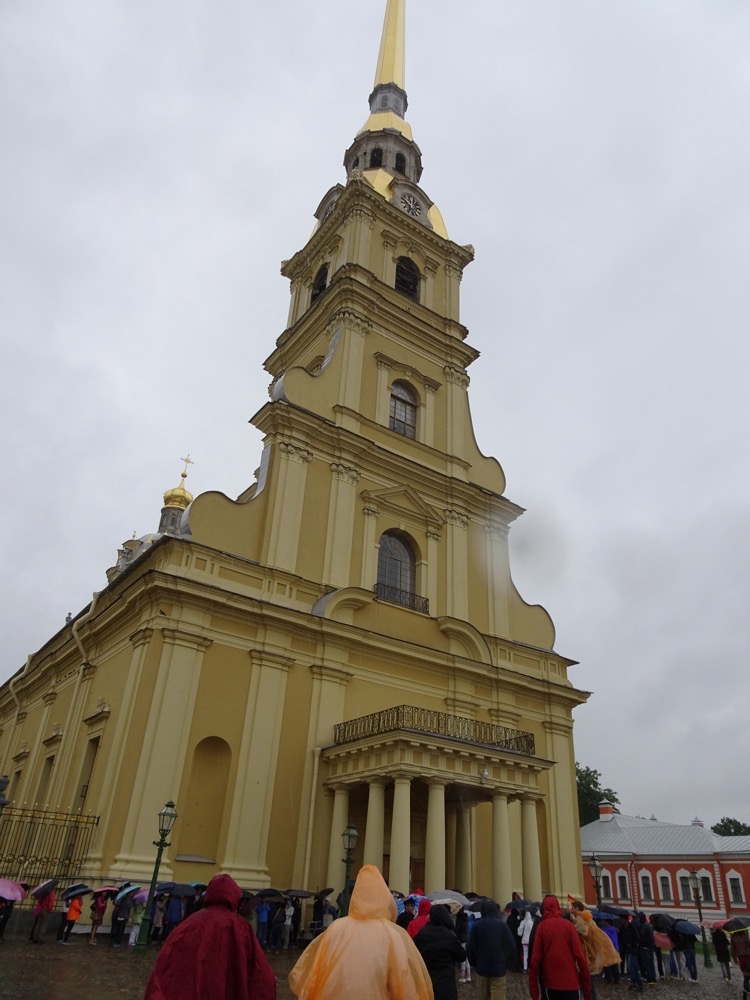 Inside is an extravagant gold leaf interior, in what would become a familiar pastel green colour that was favoured by Catherine II.
Inside is an extravagant gold leaf interior, in what would become a familiar pastel green colour that was favoured by Catherine II. 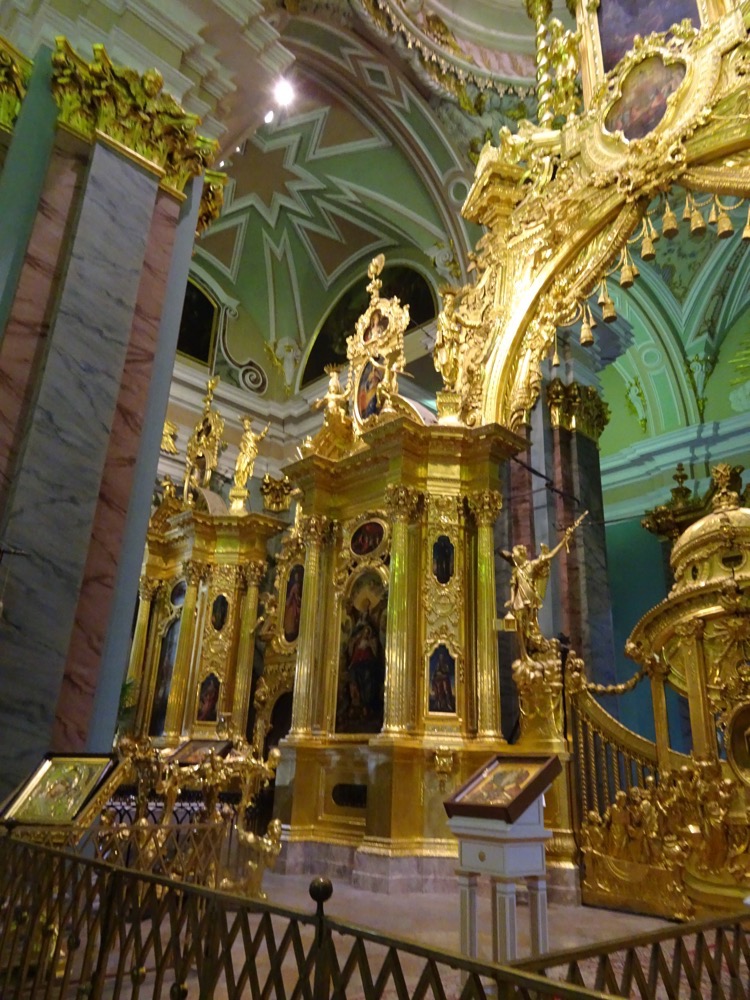
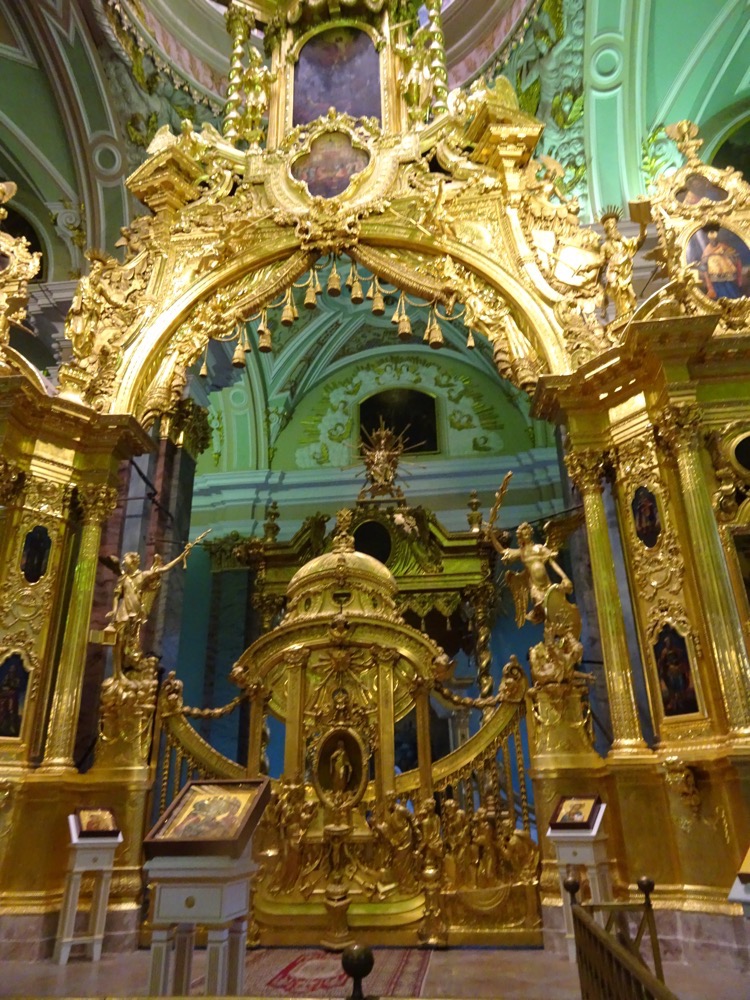
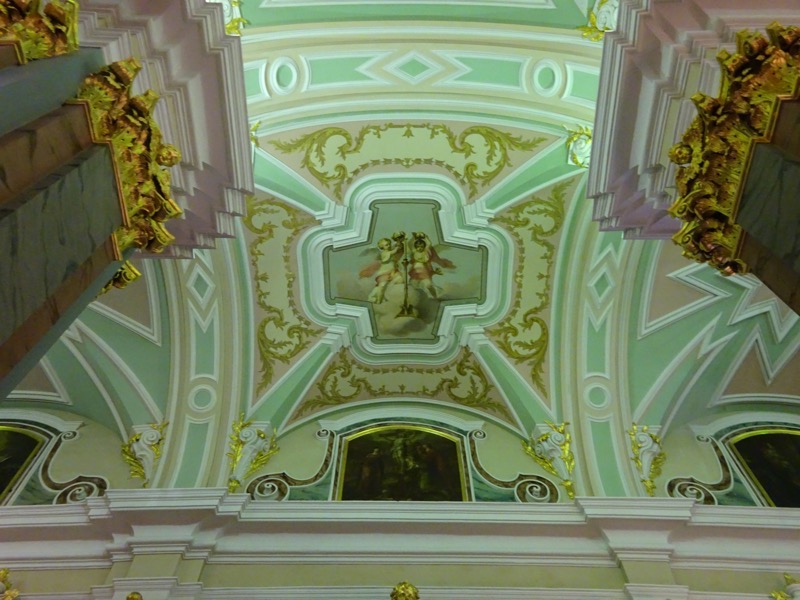 Tombs of Peter the Great, Catherine I and their daughter Alexander who played a large part in public life. The cathedral is the burial place of all the Russian tsars, from Peter I to to Alexander III (with only the exceptions of Peter II and Ivan VI).
Tombs of Peter the Great, Catherine I and their daughter Alexander who played a large part in public life. The cathedral is the burial place of all the Russian tsars, from Peter I to to Alexander III (with only the exceptions of Peter II and Ivan VI).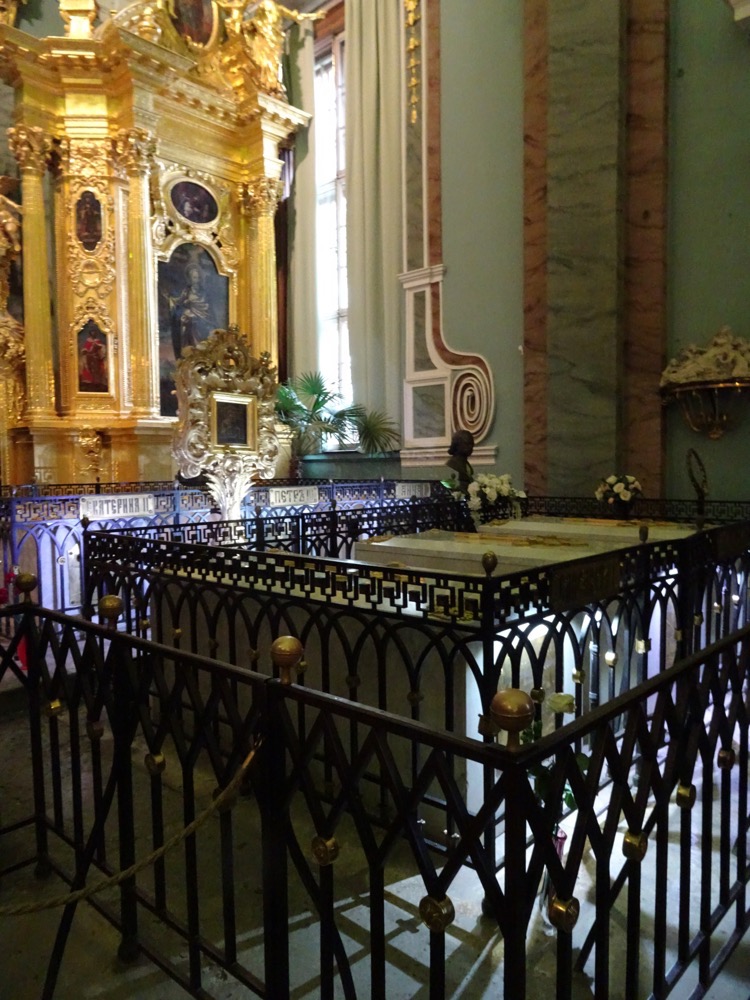
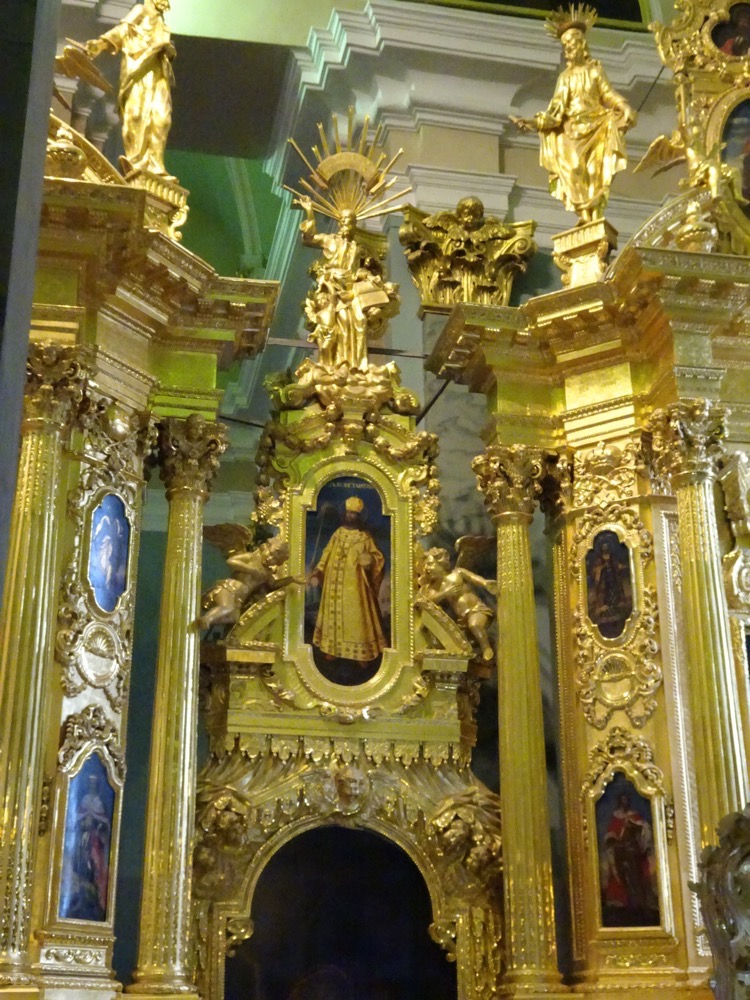
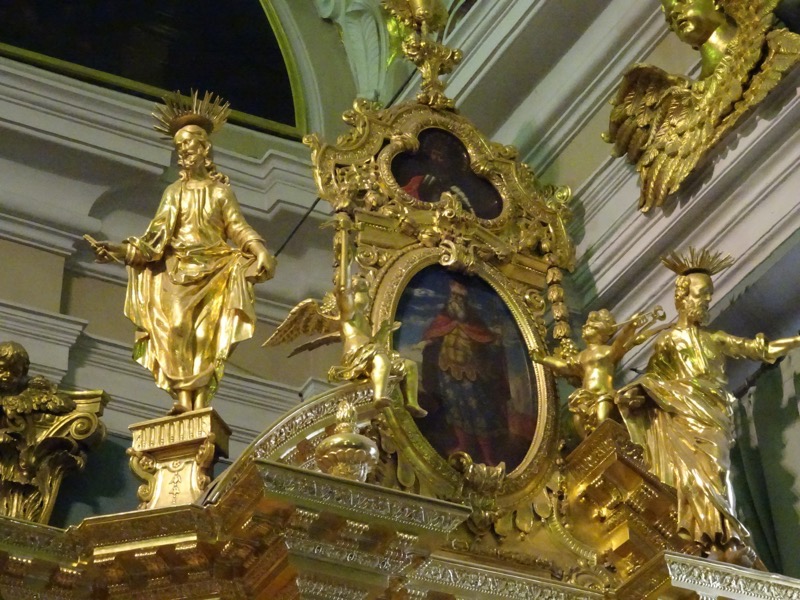 The chapel of St Catherine is dedicated to the Romanovs. The remains of Nicholas II, his entire family and entourage were reinterred here in 1998 on the 80th anniversary of their deaths. About ten years ago, the remains of Dowager Empress Maria Feodorovna were removed from Roskilde Cathedral near Copenhagen and also reinterred here, beside her husband, Alexander III.
The chapel of St Catherine is dedicated to the Romanovs. The remains of Nicholas II, his entire family and entourage were reinterred here in 1998 on the 80th anniversary of their deaths. About ten years ago, the remains of Dowager Empress Maria Feodorovna were removed from Roskilde Cathedral near Copenhagen and also reinterred here, beside her husband, Alexander III.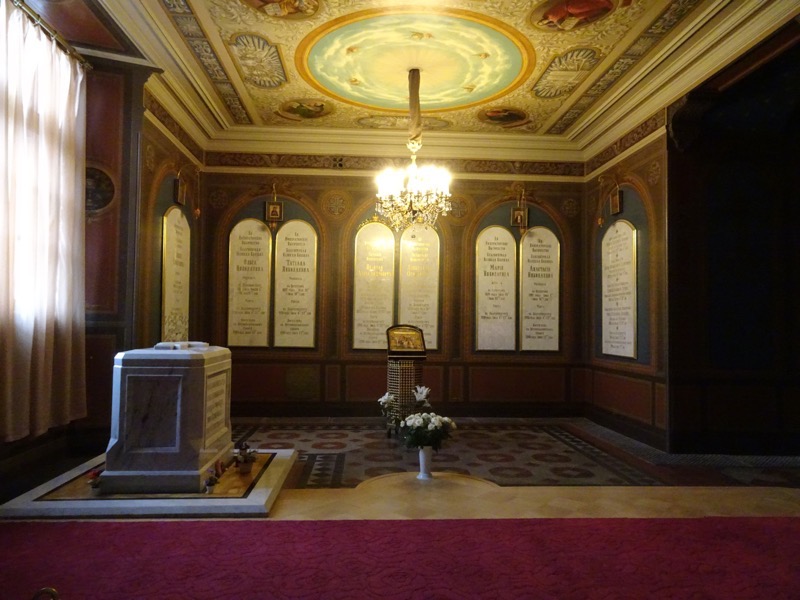

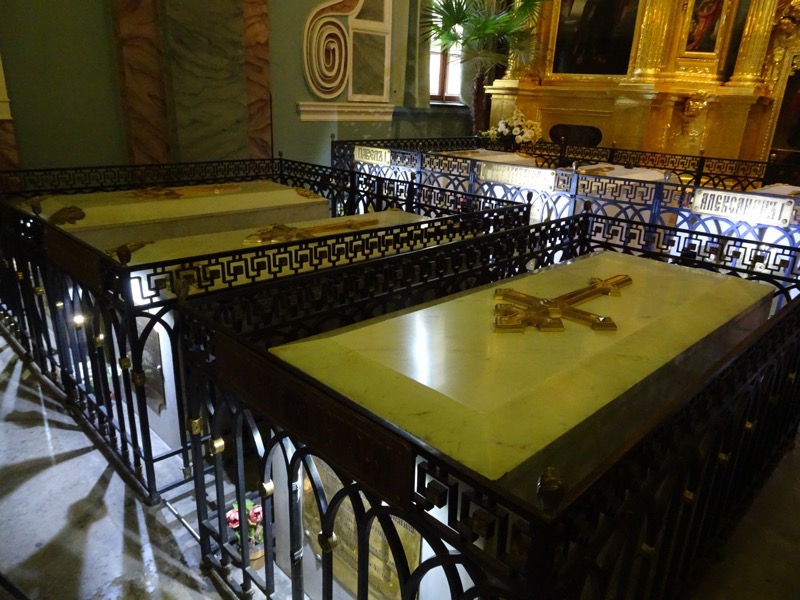
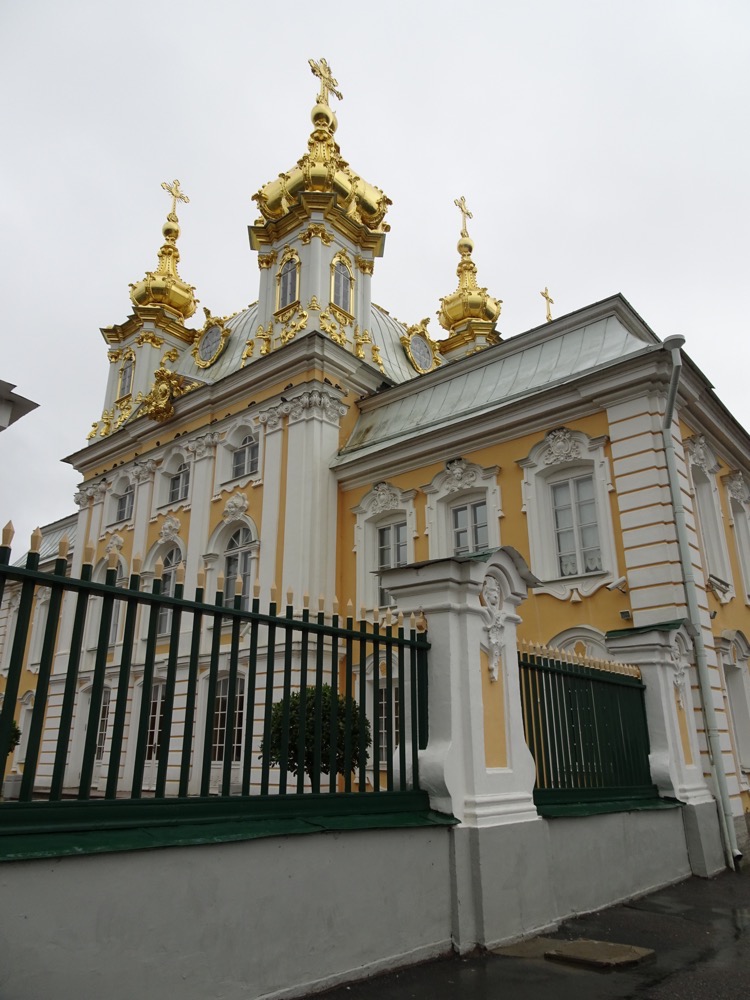 Anyway, next we were off to Peterhof Palace to see the famous, UNSECO World Heritage Site, gardens. These waterfalls are often referred to as the Russian Versailles, and it sounds very much like they were modeled on the gardens that were constructed for Louis XIV. There is a magnificent cascade made out of an artificial grotto two stories high. The water then flows into a large semi circular pool that contains a large statue of Samson tearing open the jaws of a lion, which is supposed to represent the great Russian victory over Sweden in the Great Northern War – the lion is part of the Swedish coat of arms, and the war was actually won on St Samson’s Day (learn something new every day!). From the lion’s mouth shoots a 20m vertical jet of water, which today was blowing all over the place and we couldn’t tell if the water was from the rain or the fountains. The statue was created by Mikhail Kozlovsky but was looted by invading Germans during WWI, and a replica was installed in 1847.
Anyway, next we were off to Peterhof Palace to see the famous, UNSECO World Heritage Site, gardens. These waterfalls are often referred to as the Russian Versailles, and it sounds very much like they were modeled on the gardens that were constructed for Louis XIV. There is a magnificent cascade made out of an artificial grotto two stories high. The water then flows into a large semi circular pool that contains a large statue of Samson tearing open the jaws of a lion, which is supposed to represent the great Russian victory over Sweden in the Great Northern War – the lion is part of the Swedish coat of arms, and the war was actually won on St Samson’s Day (learn something new every day!). From the lion’s mouth shoots a 20m vertical jet of water, which today was blowing all over the place and we couldn’t tell if the water was from the rain or the fountains. The statue was created by Mikhail Kozlovsky but was looted by invading Germans during WWI, and a replica was installed in 1847.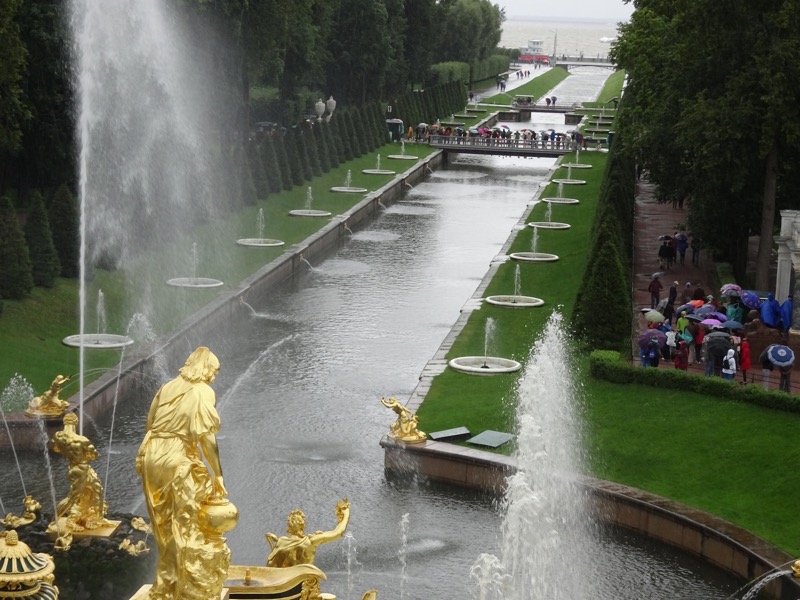

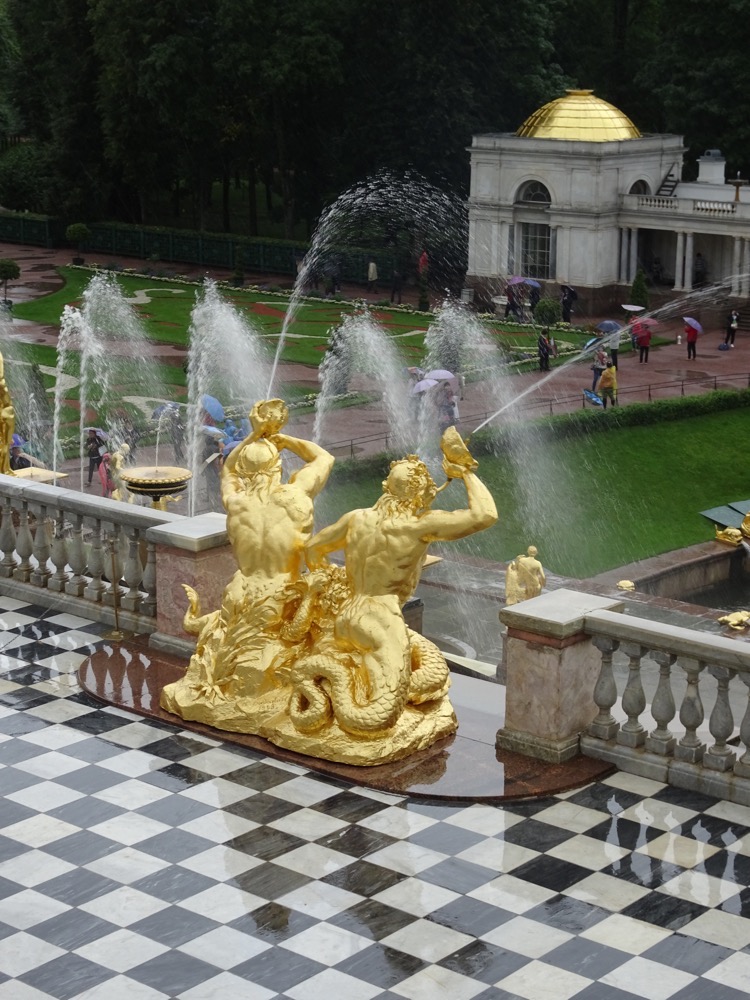
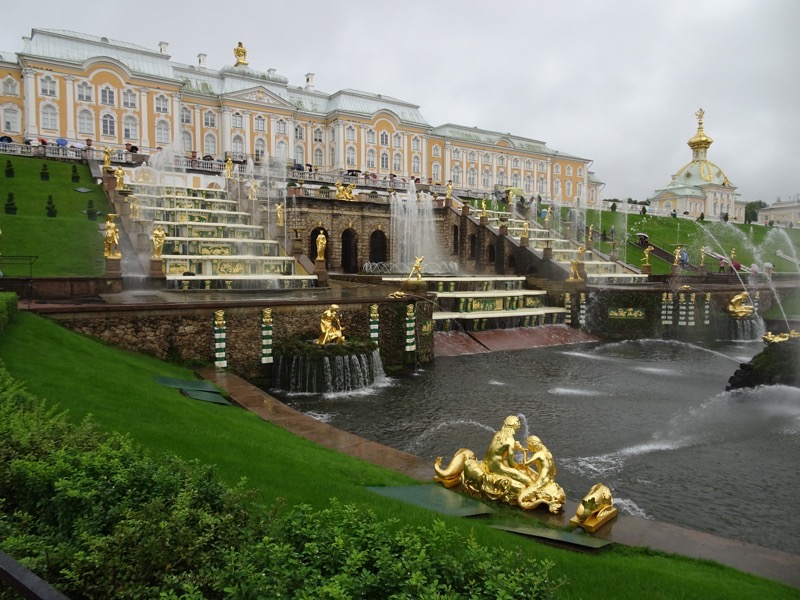
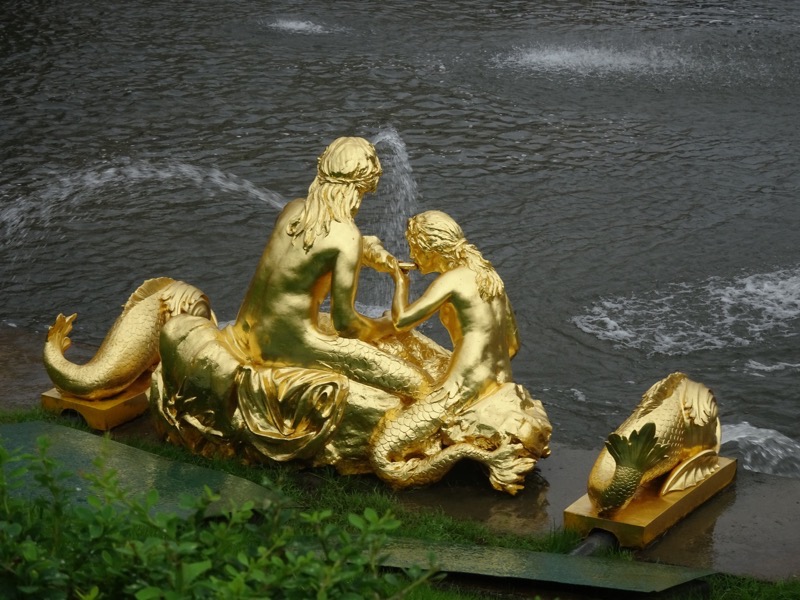 Samson is in there somewhere – there was just so much water.
Samson is in there somewhere – there was just so much water. Like Versailles, one of the greatest achievements of these gardens is that all the fountains operated without the use of water pumps. The water was supposed to come from the nearby Gulf of Finland, but eventually, architects decided to supply the cascade and fountains from natural springs that collect in reservoirs in the Upper Gardens. The elevation differences allow for enough pressure to create the fountains in the Lower Gardens including the cascades. The Samson Fountain has an independent aqueduct that is 4km long and draws water and pressure from a higher more distant elevation source.
Like Versailles, one of the greatest achievements of these gardens is that all the fountains operated without the use of water pumps. The water was supposed to come from the nearby Gulf of Finland, but eventually, architects decided to supply the cascade and fountains from natural springs that collect in reservoirs in the Upper Gardens. The elevation differences allow for enough pressure to create the fountains in the Lower Gardens including the cascades. The Samson Fountain has an independent aqueduct that is 4km long and draws water and pressure from a higher more distant elevation source.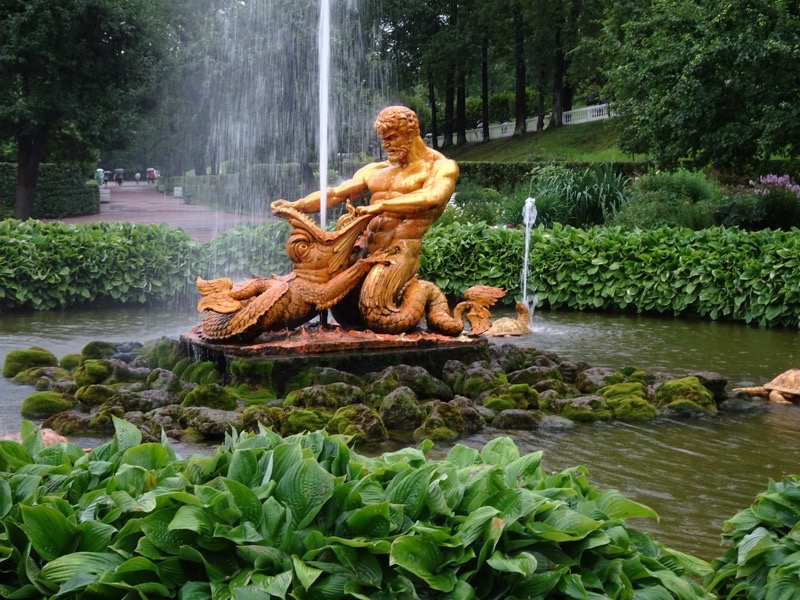
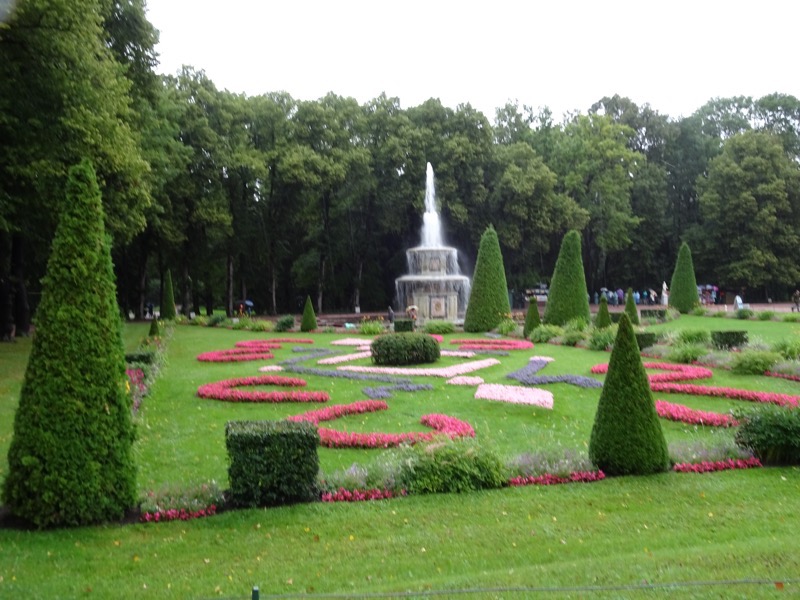
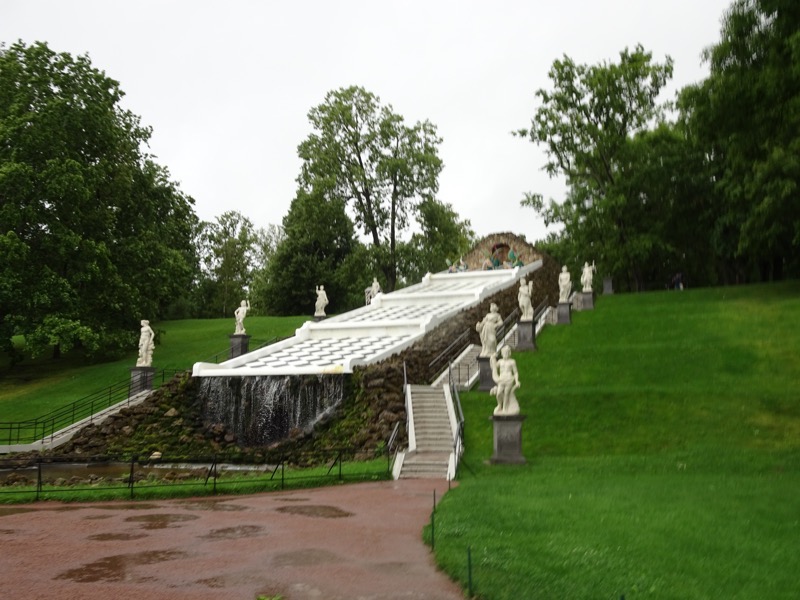

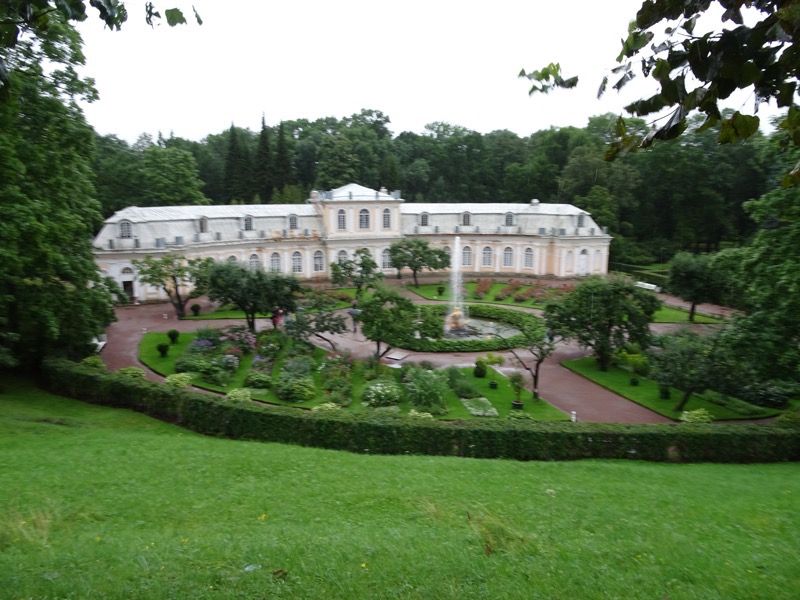
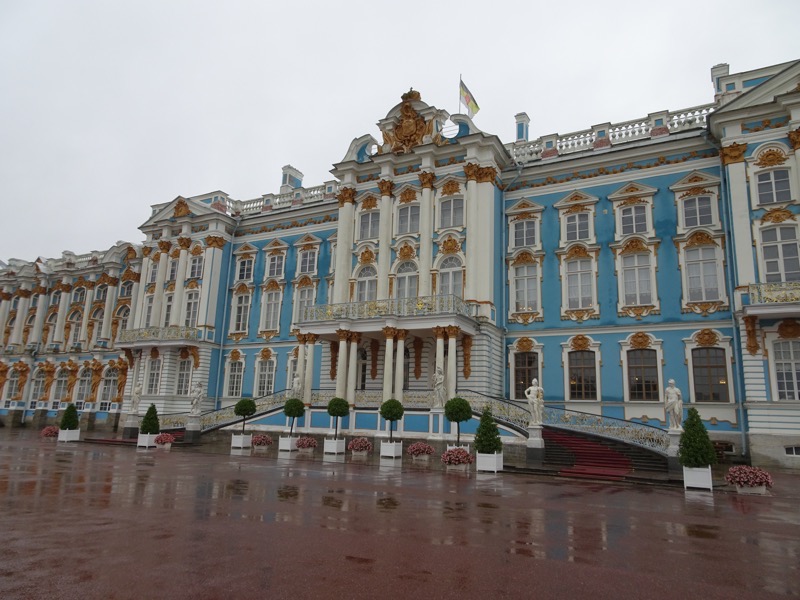
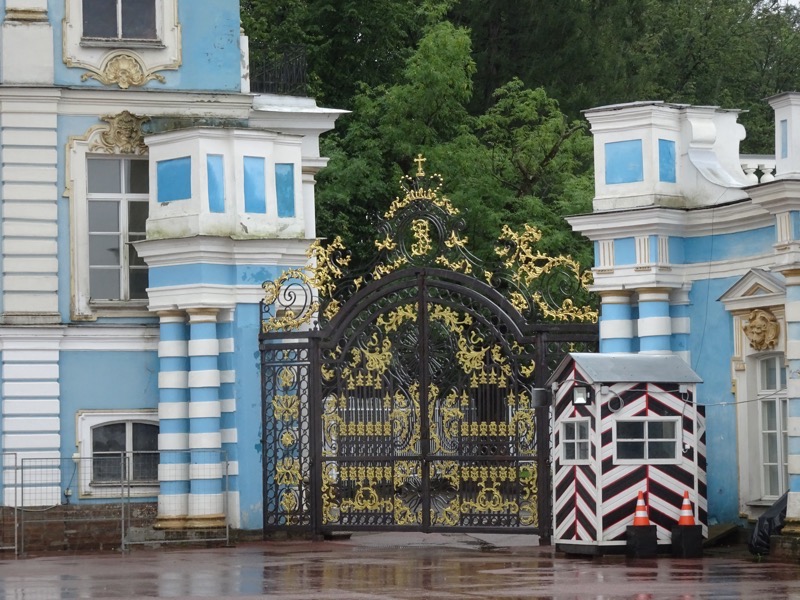
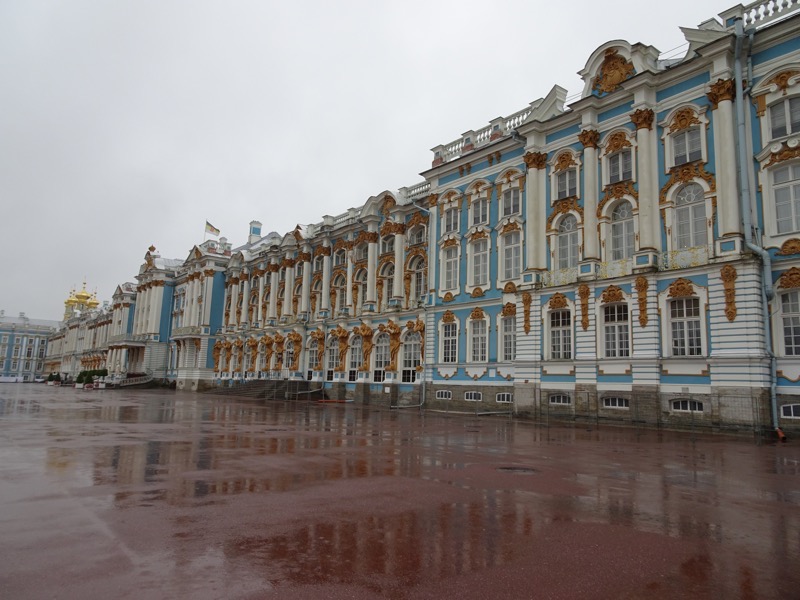 Our guide Maria, doing her best to keep everyone’s spirits up as we waiting in the rain to gain entrance to Catherine Palace… she had lots of jokes about St Petersburg weather that no doubt have been used to good effect over the years that she has been showing visitors her city.
Our guide Maria, doing her best to keep everyone’s spirits up as we waiting in the rain to gain entrance to Catherine Palace… she had lots of jokes about St Petersburg weather that no doubt have been used to good effect over the years that she has been showing visitors her city.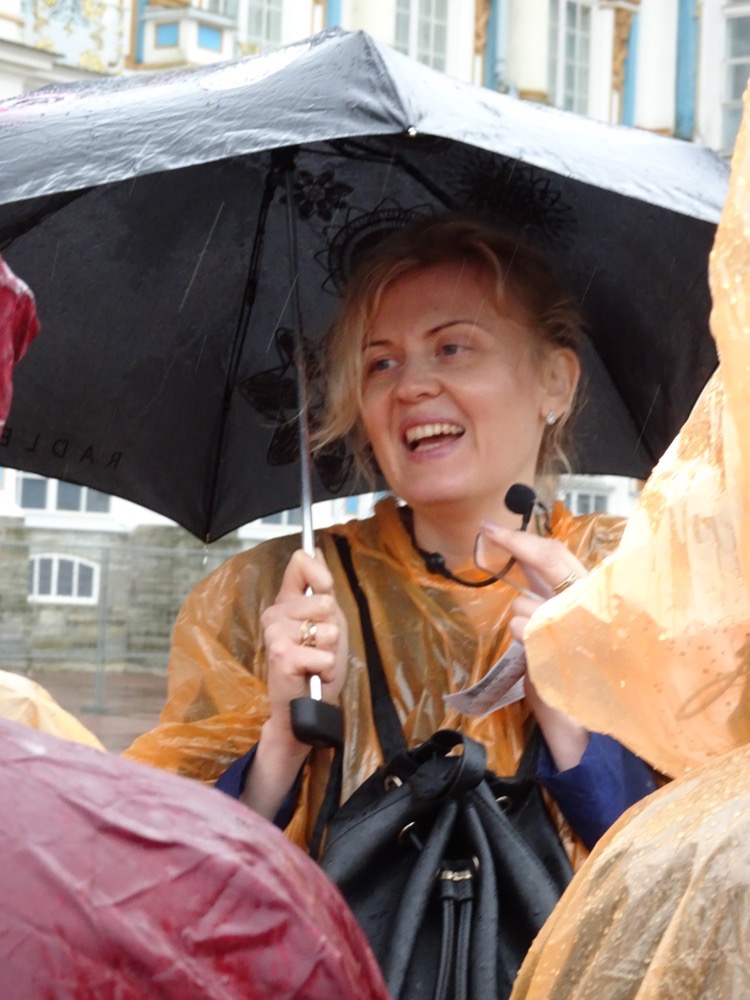
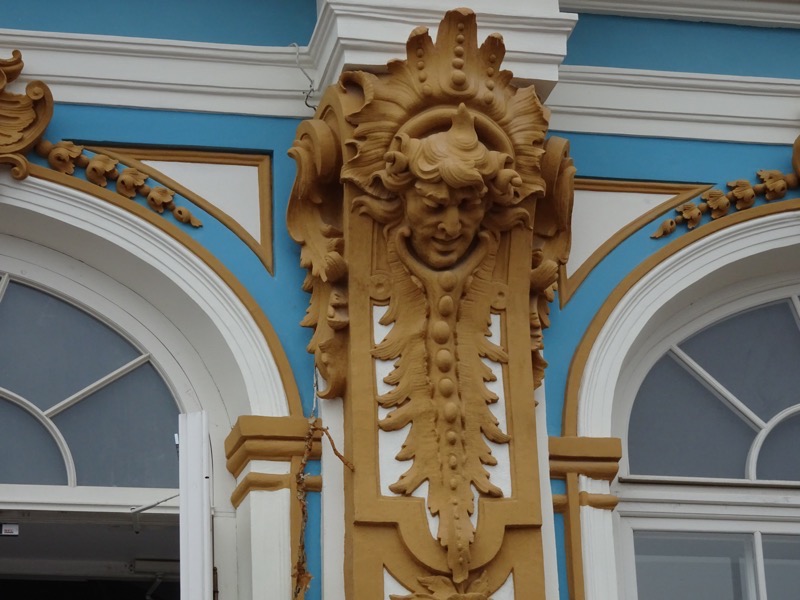 We were given lovely booties to cover our shoes – jeans all rolled up to stop the hems from getting soaked… it was cold, wet, gray and gloomy, but we were in St Petersburg! So all good. 🙂
We were given lovely booties to cover our shoes – jeans all rolled up to stop the hems from getting soaked… it was cold, wet, gray and gloomy, but we were in St Petersburg! So all good. 🙂 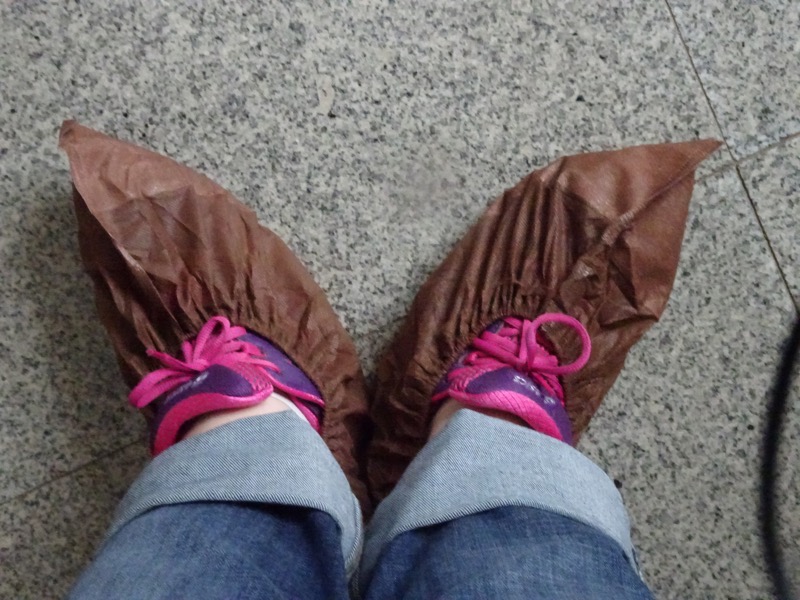
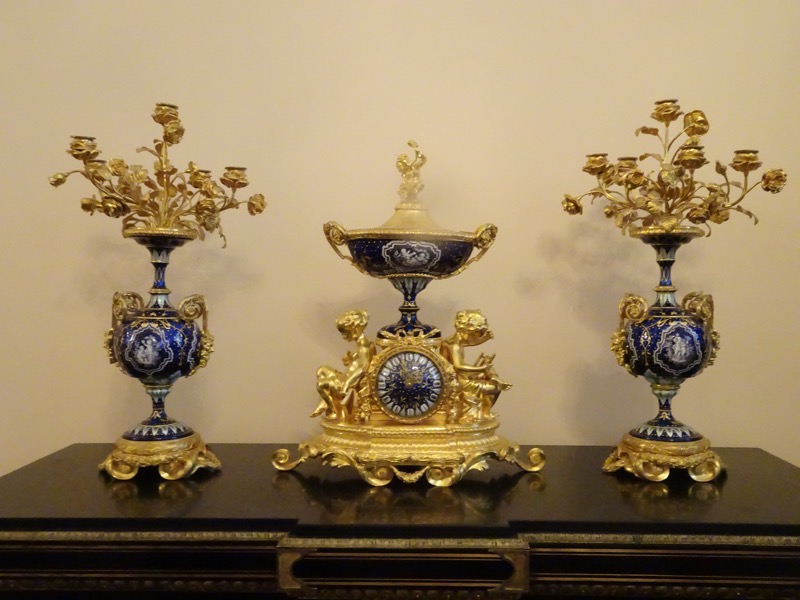 A blue ‘dressing room’. The Empress Elizabeth was reported to have had over 15,000 dresses and would change 7-9 times a day in the performing of her normal court duties of receptions and parties.
A blue ‘dressing room’. The Empress Elizabeth was reported to have had over 15,000 dresses and would change 7-9 times a day in the performing of her normal court duties of receptions and parties.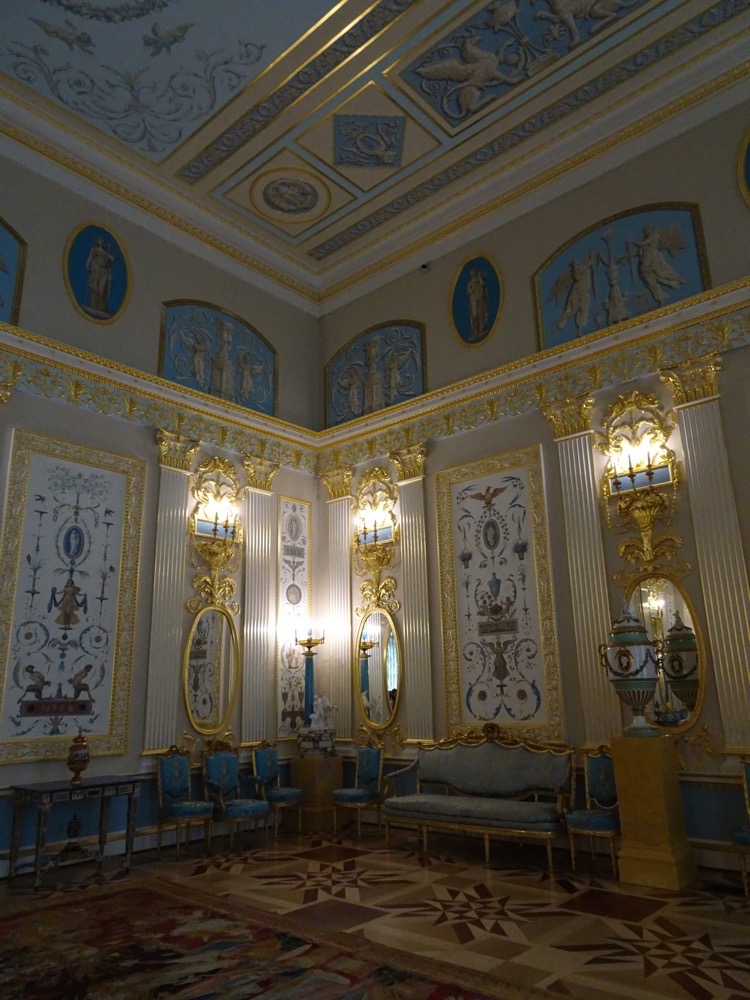 I love the ceilings – we just don’t take this sort of care in our building these days. 😉
I love the ceilings – we just don’t take this sort of care in our building these days. 😉  The grand hall… gilded carved timber as far as the eye could see. The room has large windows on both sides, along with long mirrors inserted into every panel between the windows giving the impression of more light and even more space in what must be a 20m x 10m room. The amount of light, mirrors, and gold here definitely give Versaille a run for its money.
The grand hall… gilded carved timber as far as the eye could see. The room has large windows on both sides, along with long mirrors inserted into every panel between the windows giving the impression of more light and even more space in what must be a 20m x 10m room. The amount of light, mirrors, and gold here definitely give Versaille a run for its money.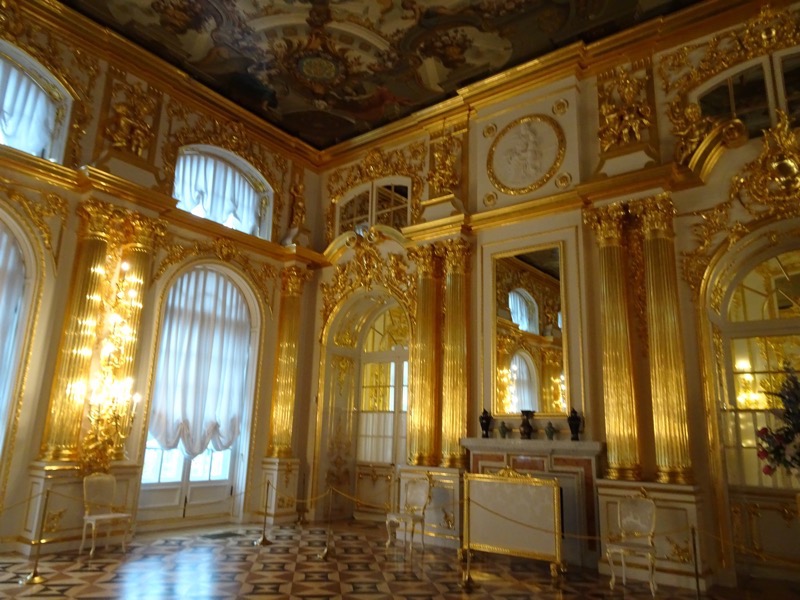
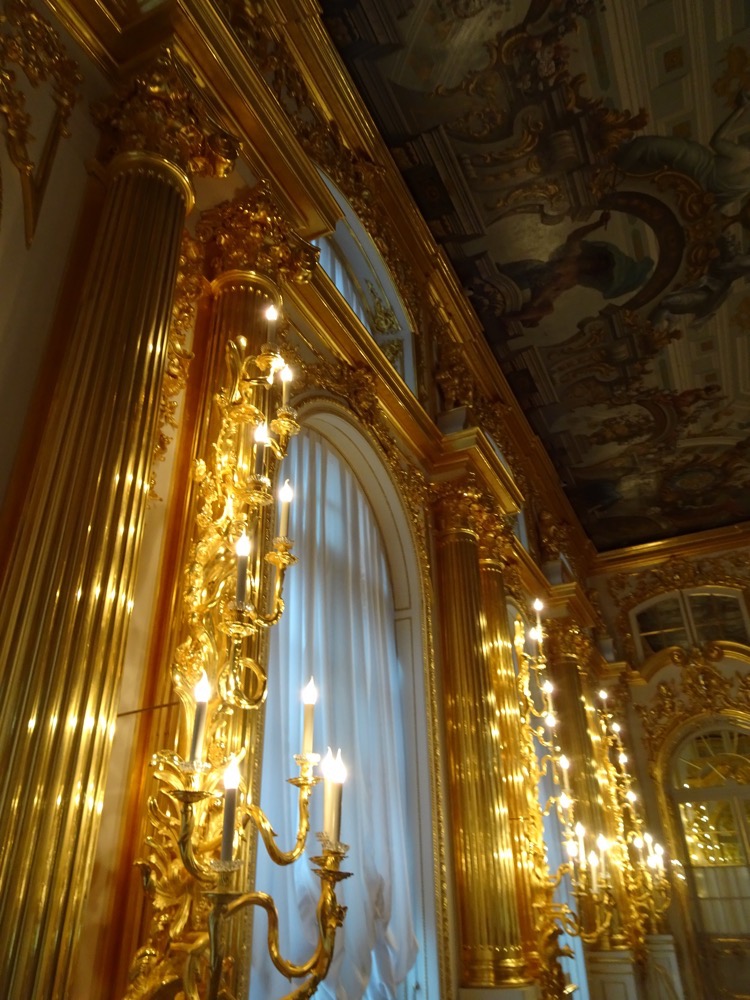
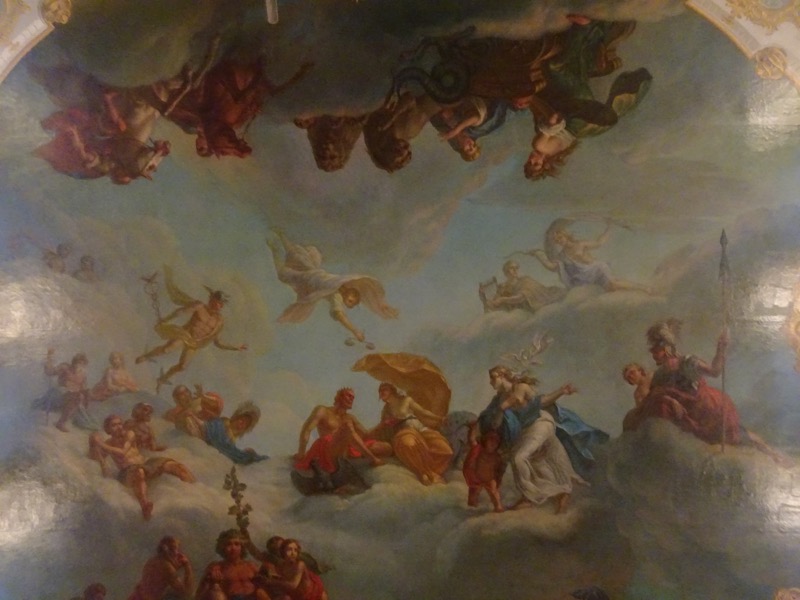

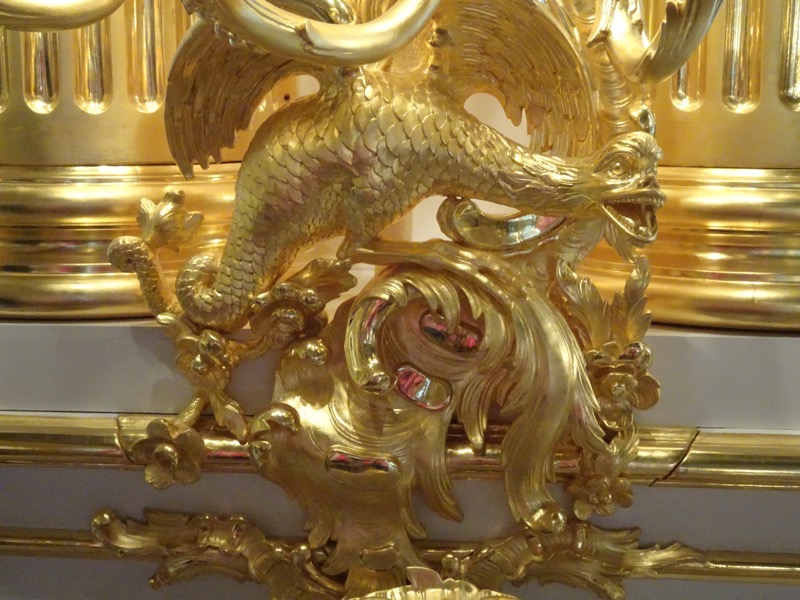
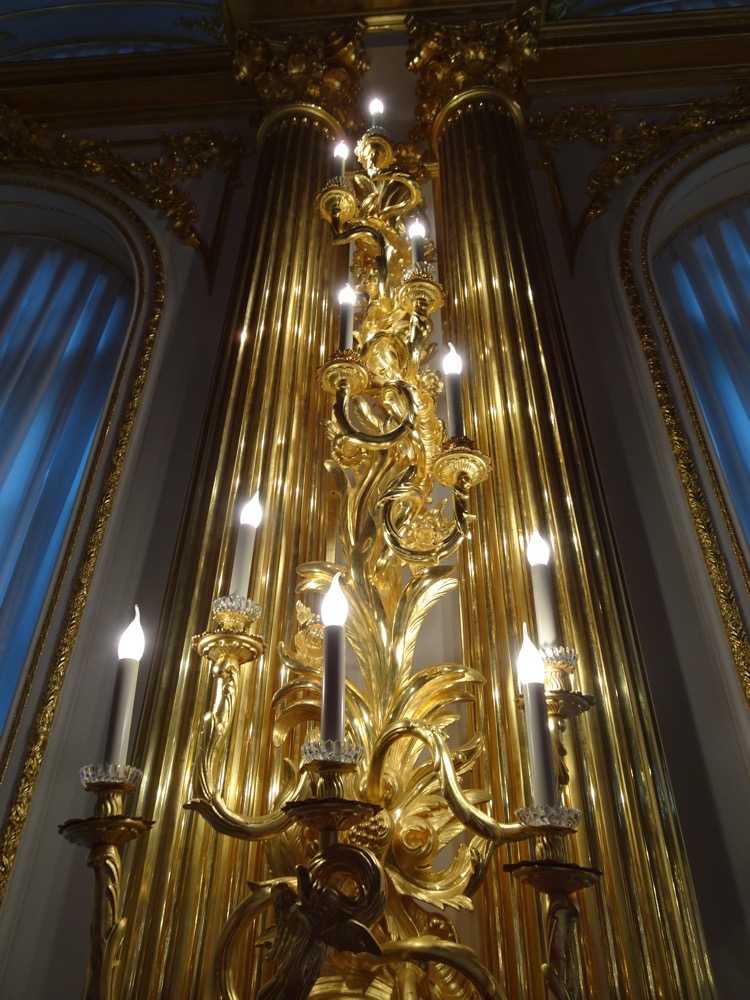 The dining room – for family parties and receptions. Mostly only family and their private guests were hosted here.
The dining room – for family parties and receptions. Mostly only family and their private guests were hosted here.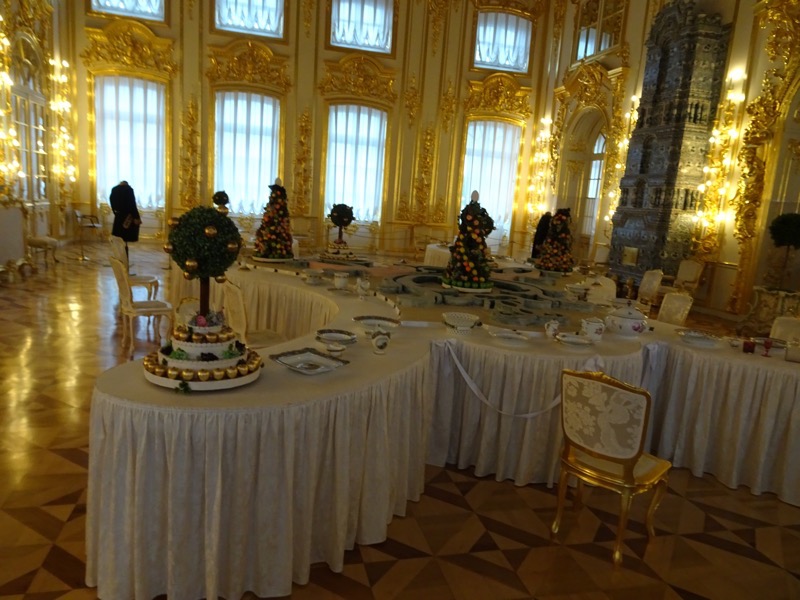 Fabulous ceramic heaters.
Fabulous ceramic heaters.
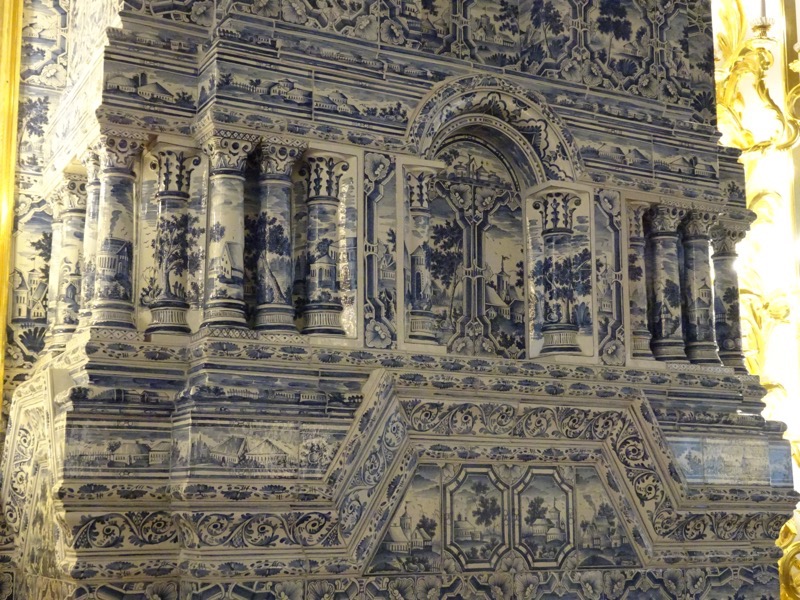
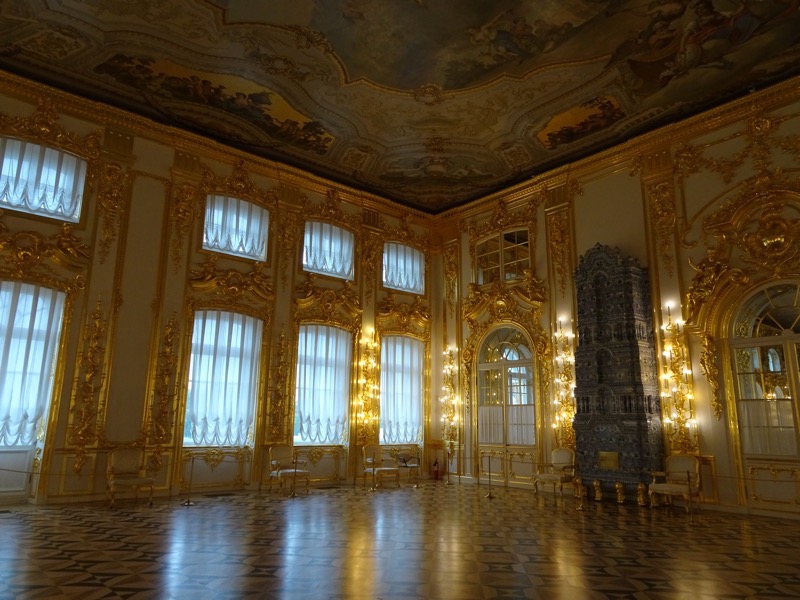
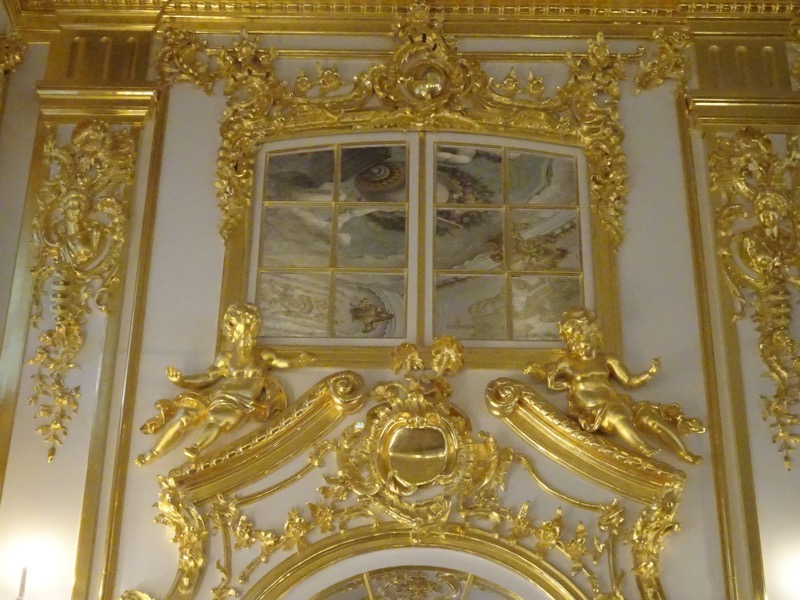 The grand ballroom – which looked as elaborate and lavish as the grand hall, but was about four times as large. Just enormous… and so much goldwork!
The grand ballroom – which looked as elaborate and lavish as the grand hall, but was about four times as large. Just enormous… and so much goldwork!
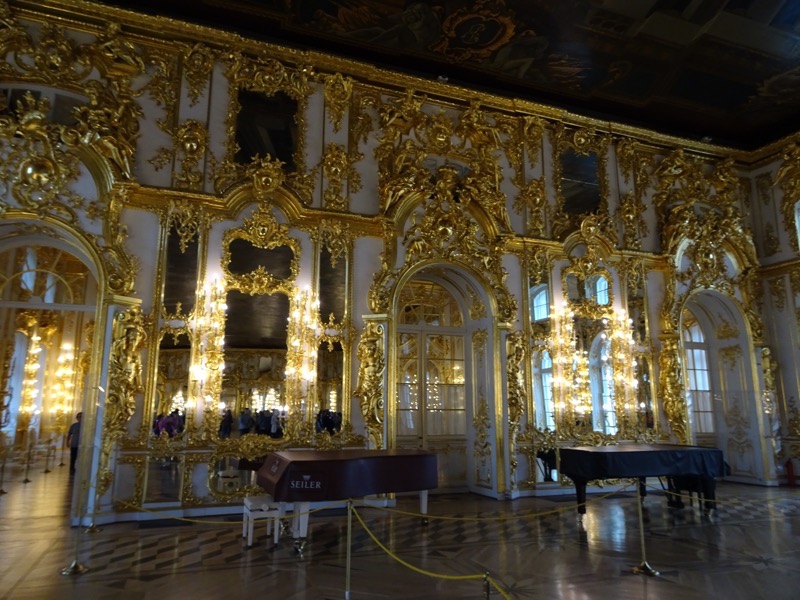 View out to the gardens.
View out to the gardens.

 A re-creation of one of Empress Elizabeth’s dresses… of which she is reputed to have had over 15,000.
A re-creation of one of Empress Elizabeth’s dresses… of which she is reputed to have had over 15,000. 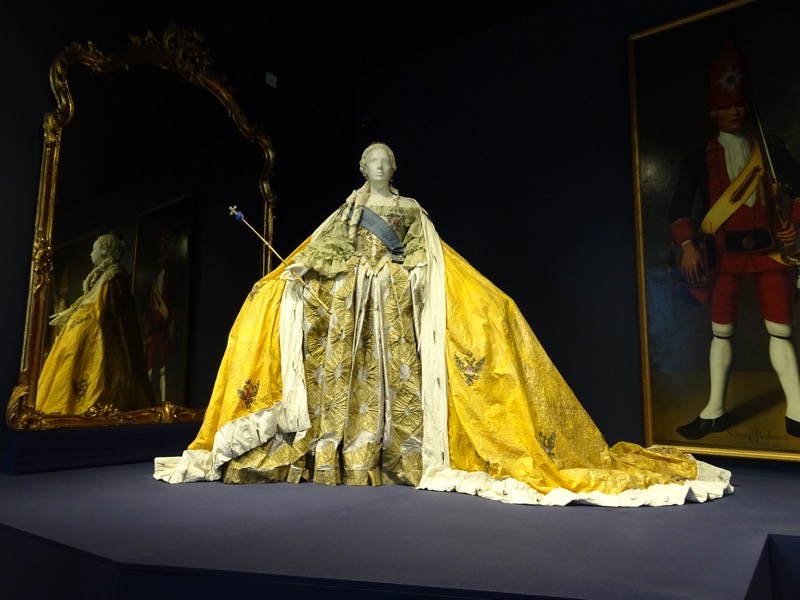
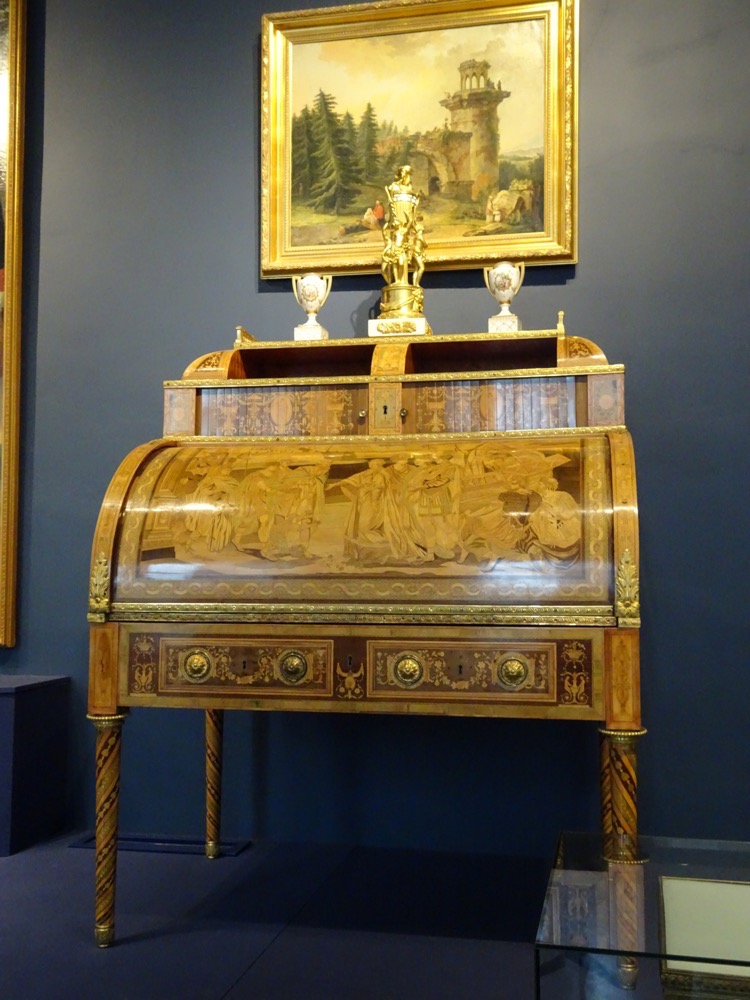
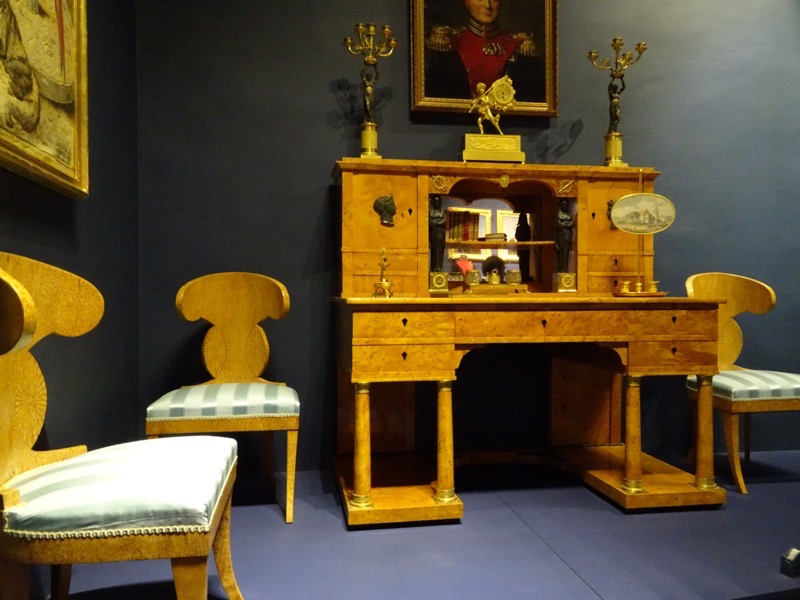
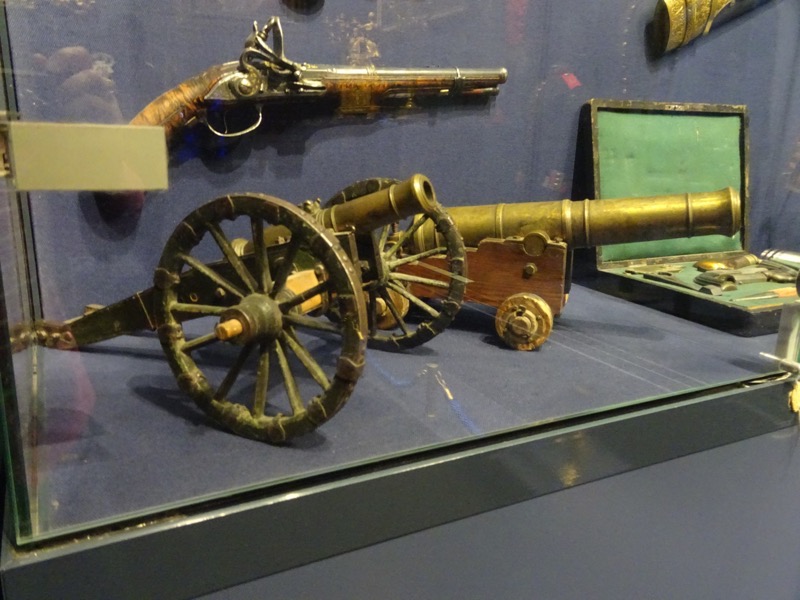 The Amber Room… has an extraordinary history – the TLDR is: this Amber Room is a recreation only, the original Amber Room was pillaged by the Germans in WWII and the location of the famous amber panels is still unknown (shortest version of that story you’ll ever see!).
The Amber Room… has an extraordinary history – the TLDR is: this Amber Room is a recreation only, the original Amber Room was pillaged by the Germans in WWII and the location of the famous amber panels is still unknown (shortest version of that story you’ll ever see!).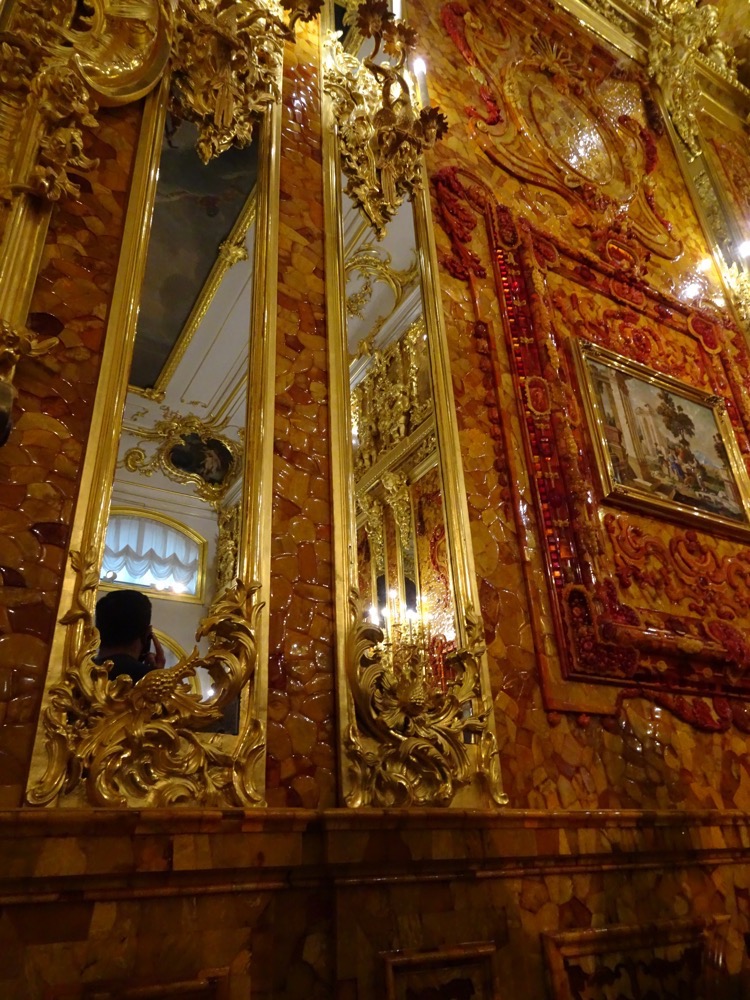
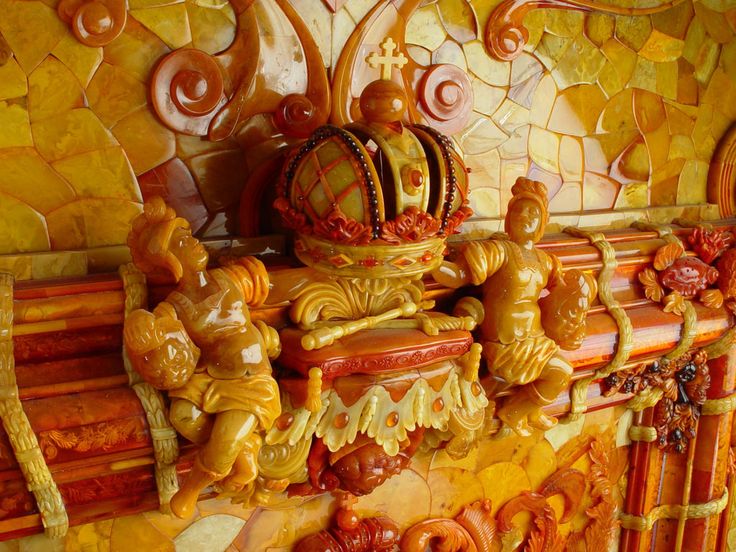
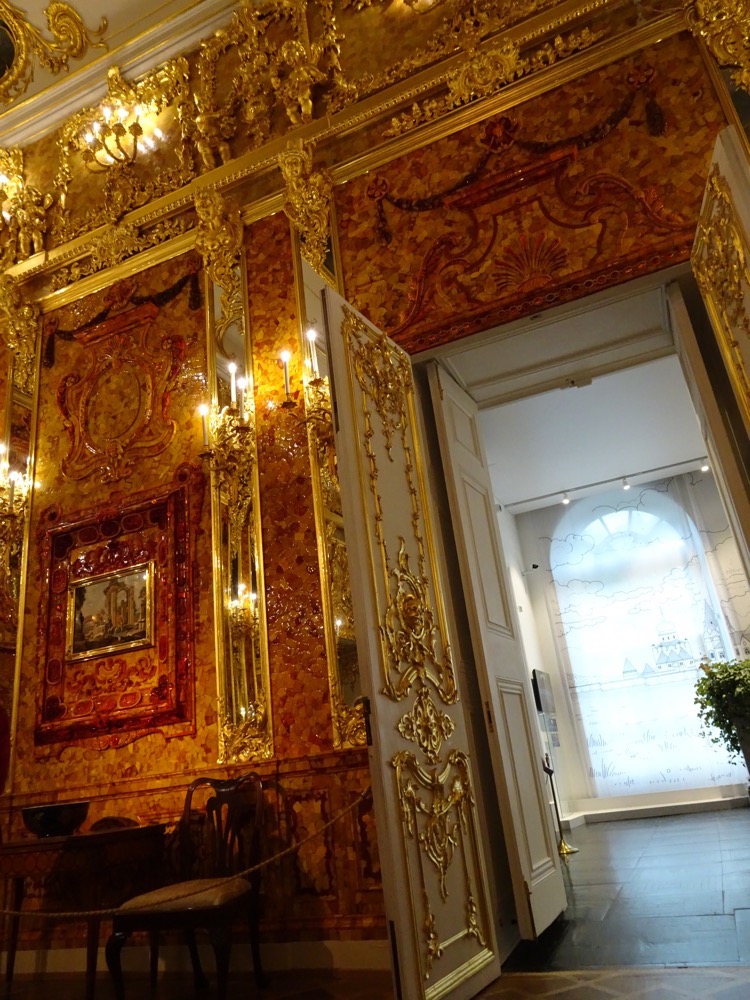
 After the Amber Room, there was another grand reception hall.
After the Amber Room, there was another grand reception hall.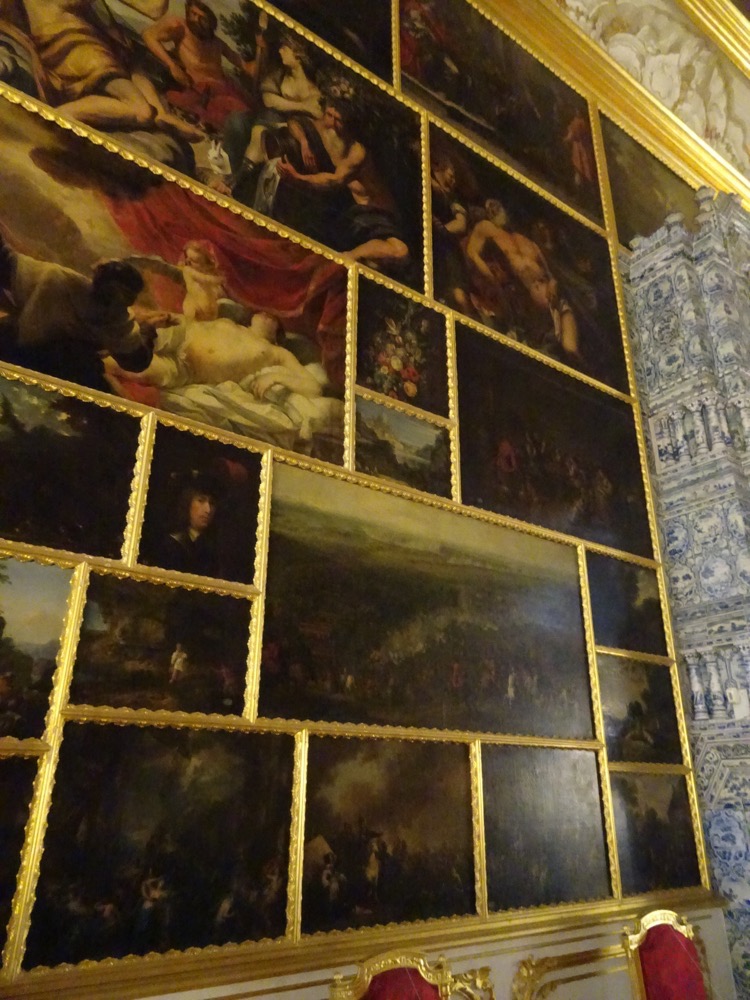
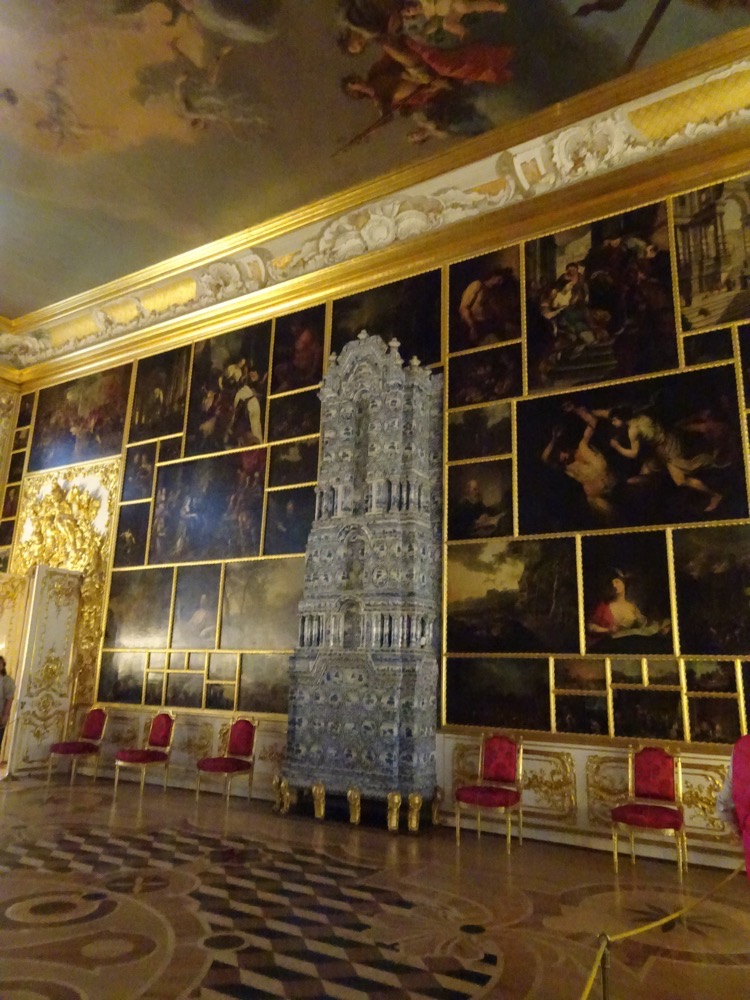
 And this was Catherine II’s favourite room… she had a penchant for pastel green and light rose decor in a Wedgewood sort of style. You can see this colour scheme evident in many spaces that were dedicated to her use. Personally, I find it rather insipid…
And this was Catherine II’s favourite room… she had a penchant for pastel green and light rose decor in a Wedgewood sort of style. You can see this colour scheme evident in many spaces that were dedicated to her use. Personally, I find it rather insipid…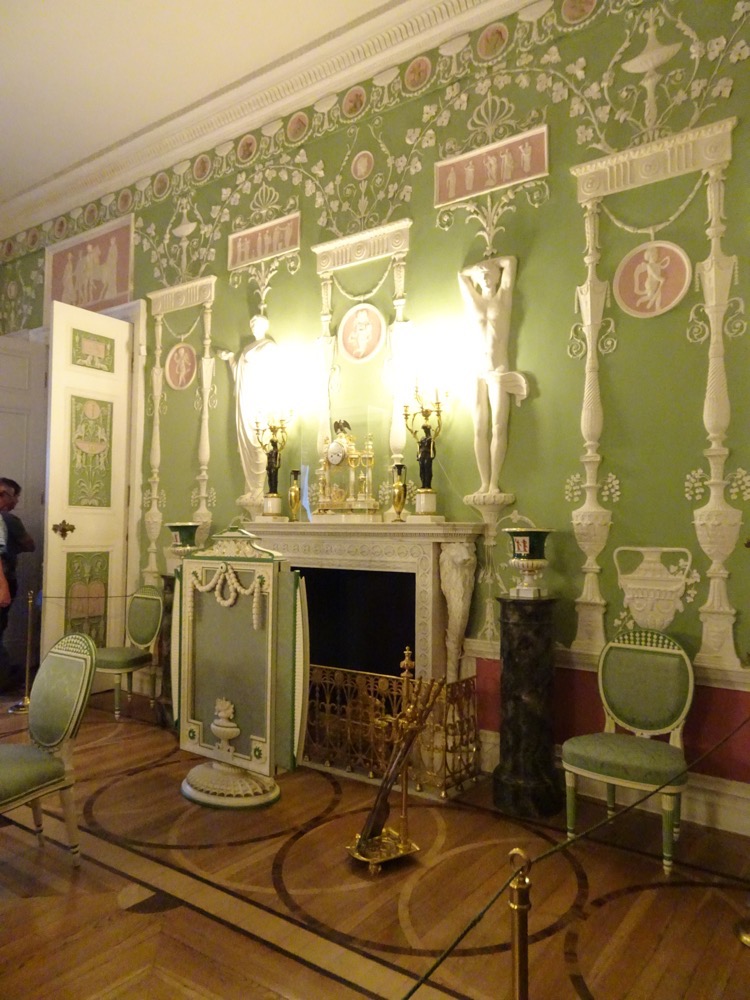
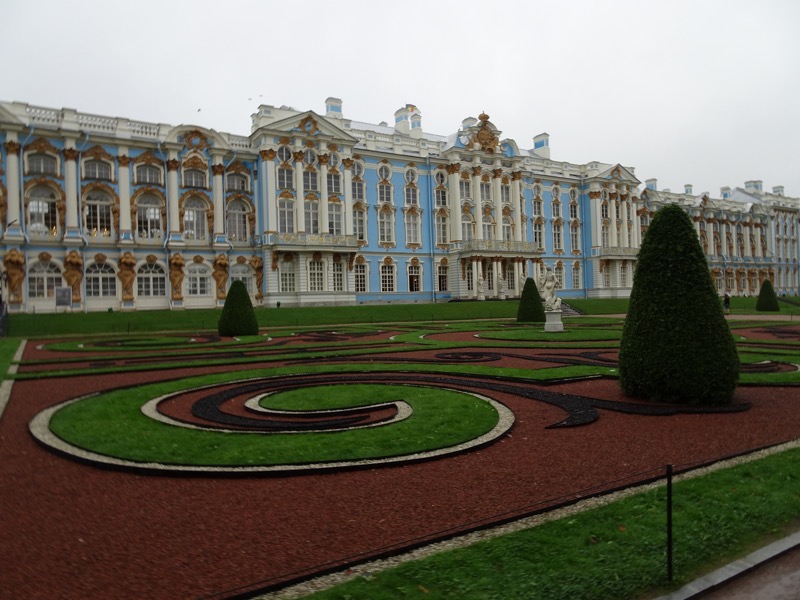


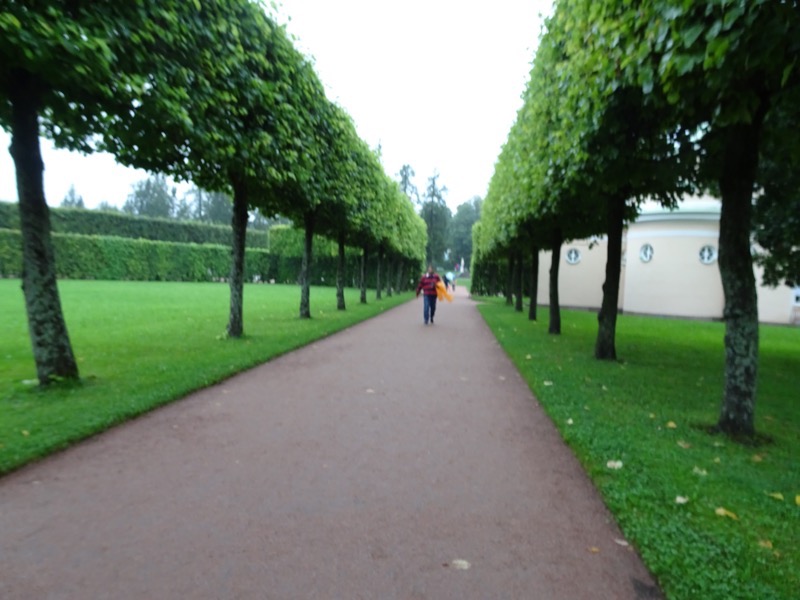
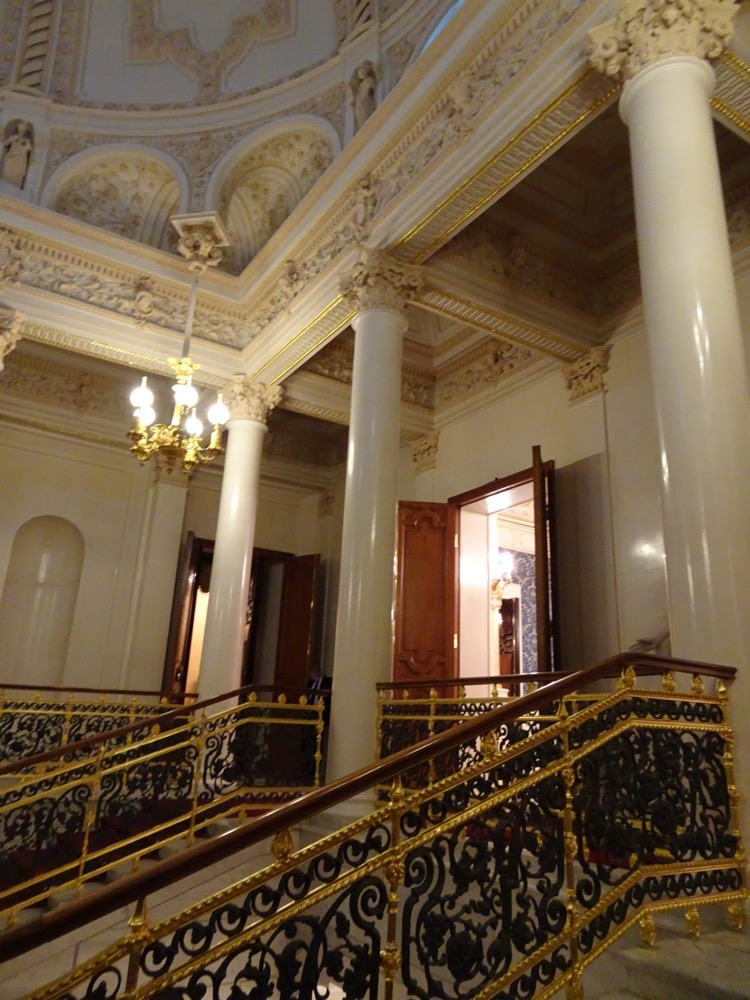 The Faberge Museum is a privately owened museum that was establised by Viktor Vekselberg’s Link of Times foundation, which attempst to repatriate lost cultural treasures to Russia. The musuem has been located in the middle of St Petersburg in a refurbished palce, called the Shuvalov Palace – I love that the city has so many run down or empty palaces that they can just appropriate an amazing building like this and turn it into a museum! The Shuvalov Palace is on the embankment of the Fontanka River and has only been renovated in the last five years or so – it now contains a fabulous collection of more than 4,000 decorative arts objects, including gold and silver items, porcelain, paintings, bronze ware and so many many beautiful things. The centrepiece of the collection is the Imperial Easter Eggs created by Faberge for the last two Russian Tsars.
The Faberge Museum is a privately owened museum that was establised by Viktor Vekselberg’s Link of Times foundation, which attempst to repatriate lost cultural treasures to Russia. The musuem has been located in the middle of St Petersburg in a refurbished palce, called the Shuvalov Palace – I love that the city has so many run down or empty palaces that they can just appropriate an amazing building like this and turn it into a museum! The Shuvalov Palace is on the embankment of the Fontanka River and has only been renovated in the last five years or so – it now contains a fabulous collection of more than 4,000 decorative arts objects, including gold and silver items, porcelain, paintings, bronze ware and so many many beautiful things. The centrepiece of the collection is the Imperial Easter Eggs created by Faberge for the last two Russian Tsars.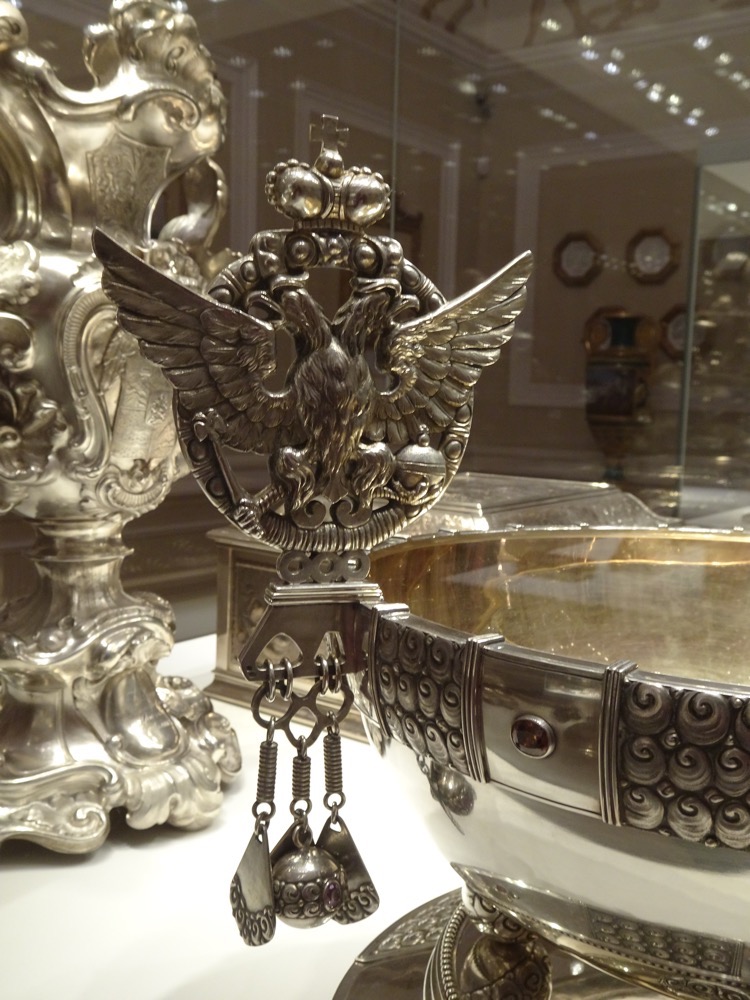
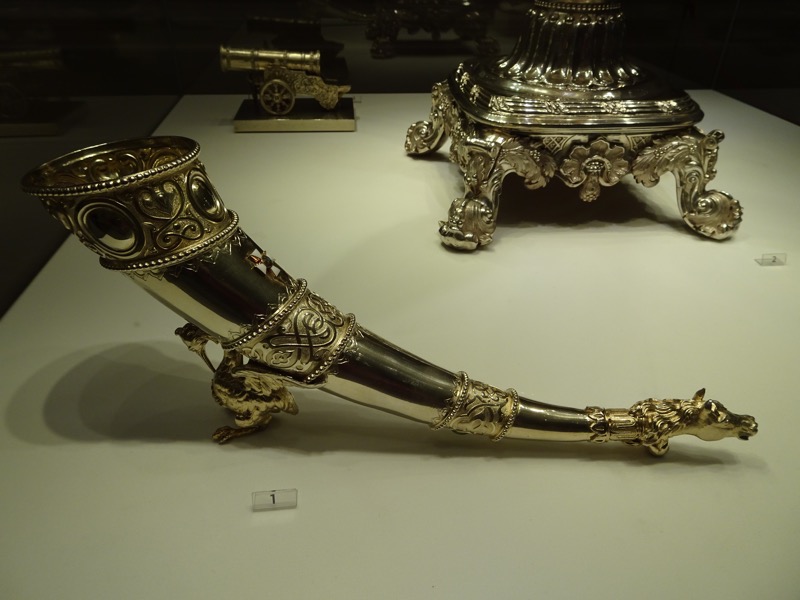
 19th century model of the Tsar’s Canon that we saw in Moscow at the Kremlin.
19th century model of the Tsar’s Canon that we saw in Moscow at the Kremlin.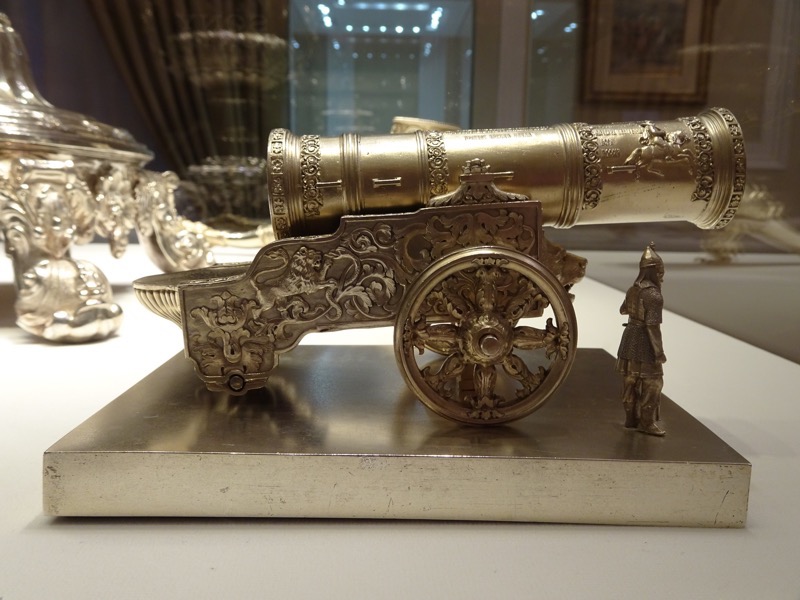
 Beautiful 18th – 19th century enamel pieces filled cabinet after cabinet.
Beautiful 18th – 19th century enamel pieces filled cabinet after cabinet.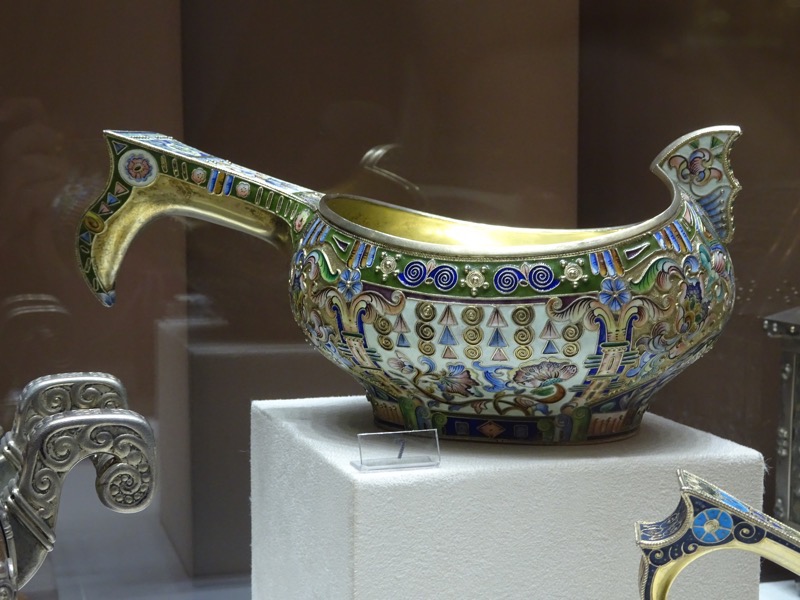
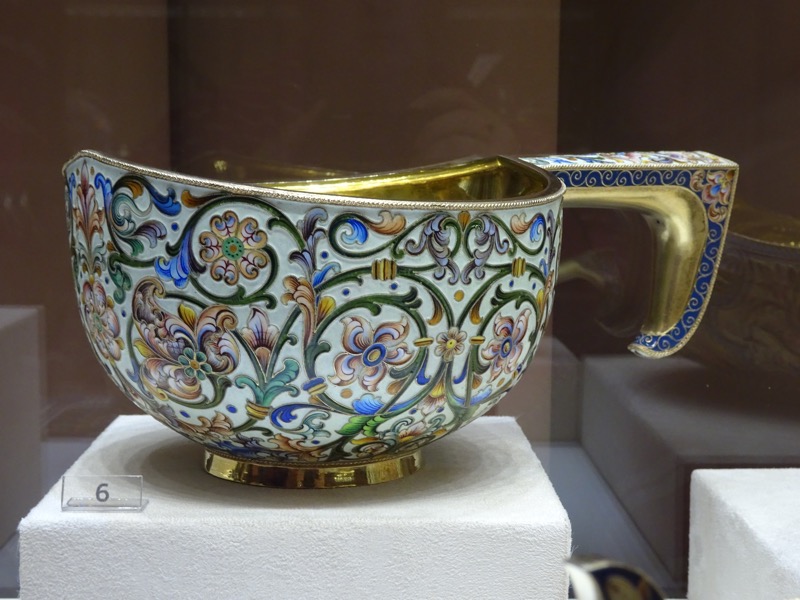
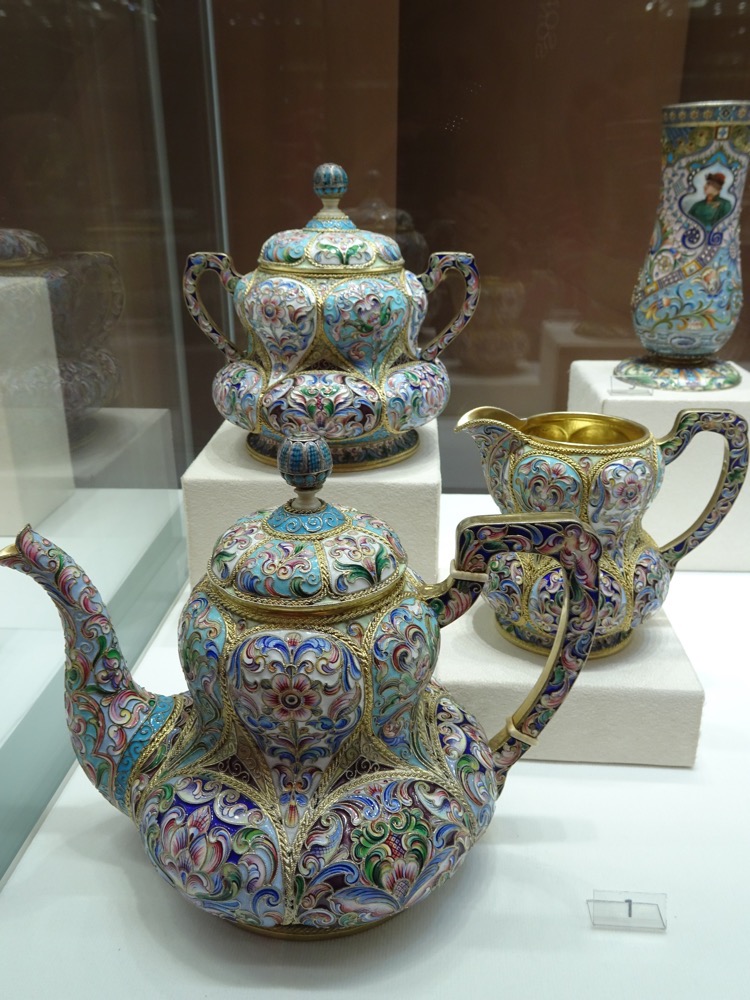 A card holder designed to hold visiting cards, displaying the imperial arms.
A card holder designed to hold visiting cards, displaying the imperial arms.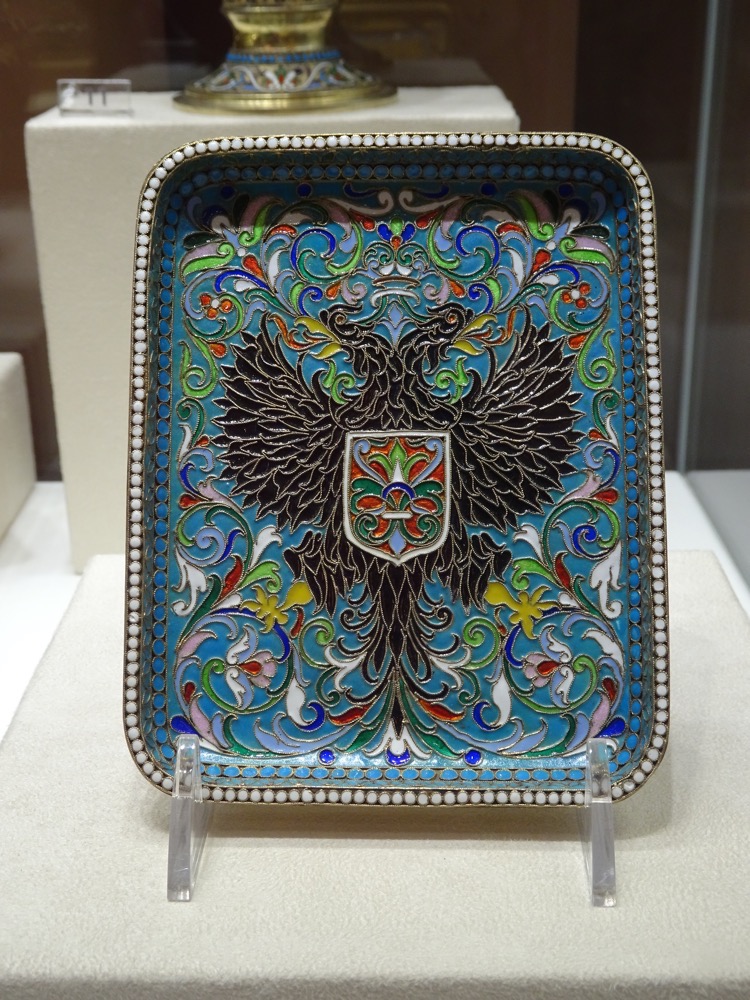
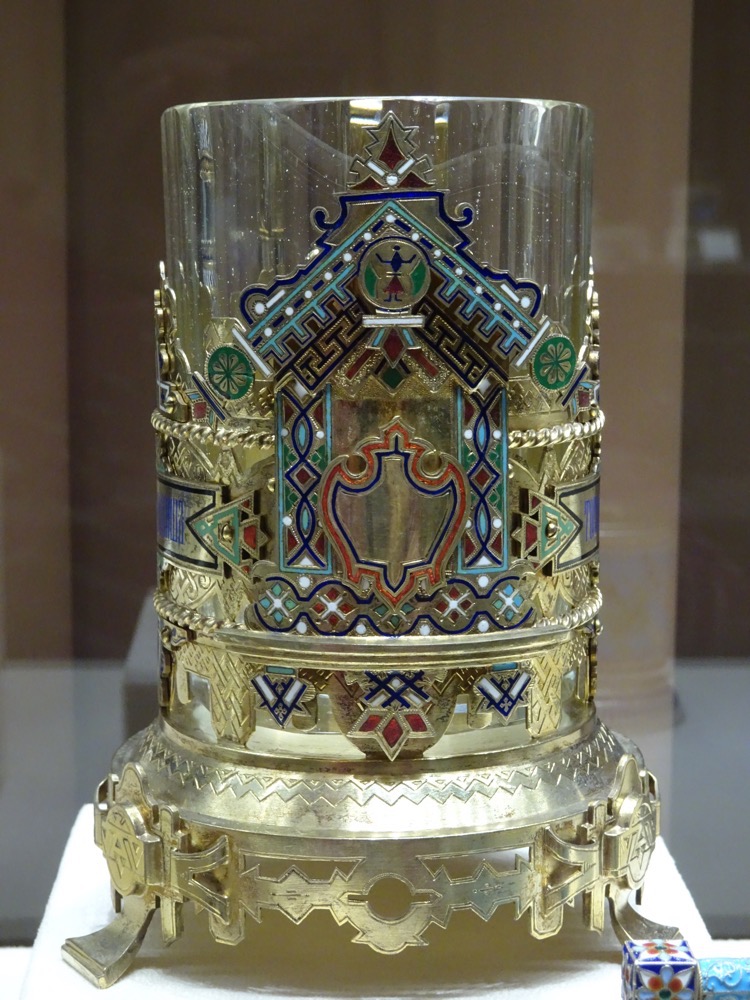
 Tea/coffee set.
Tea/coffee set.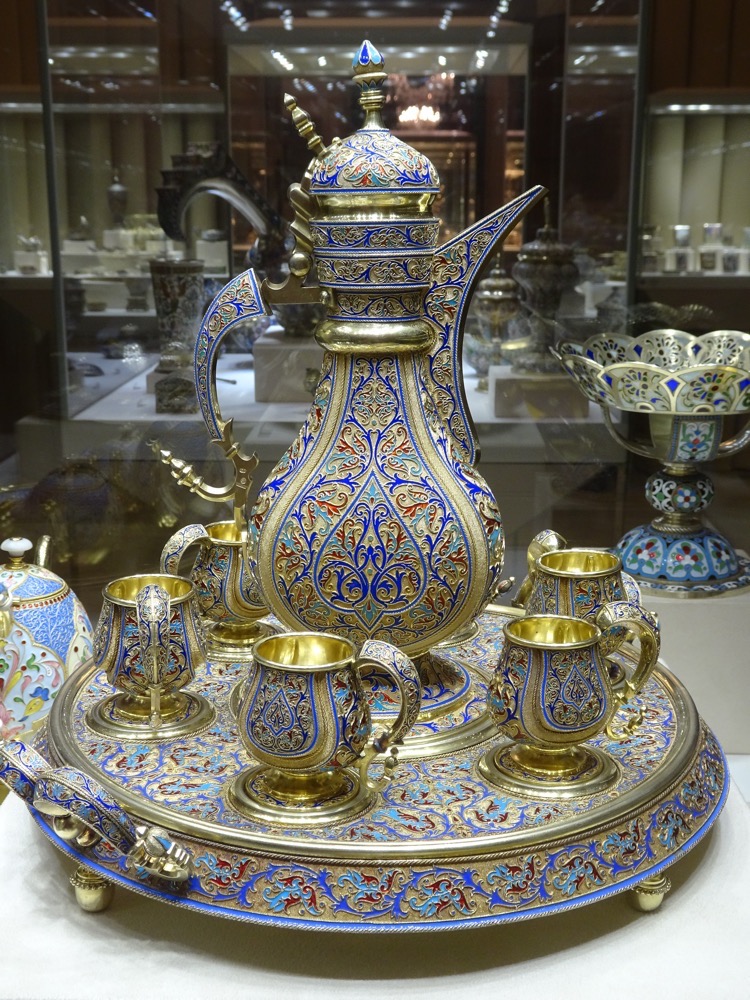
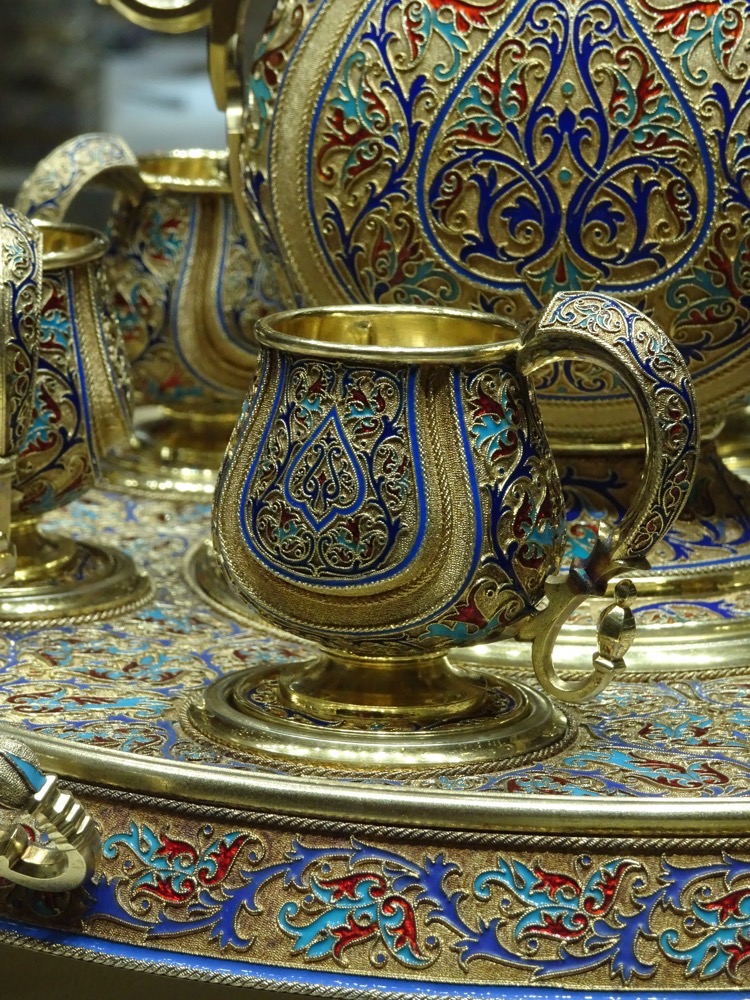
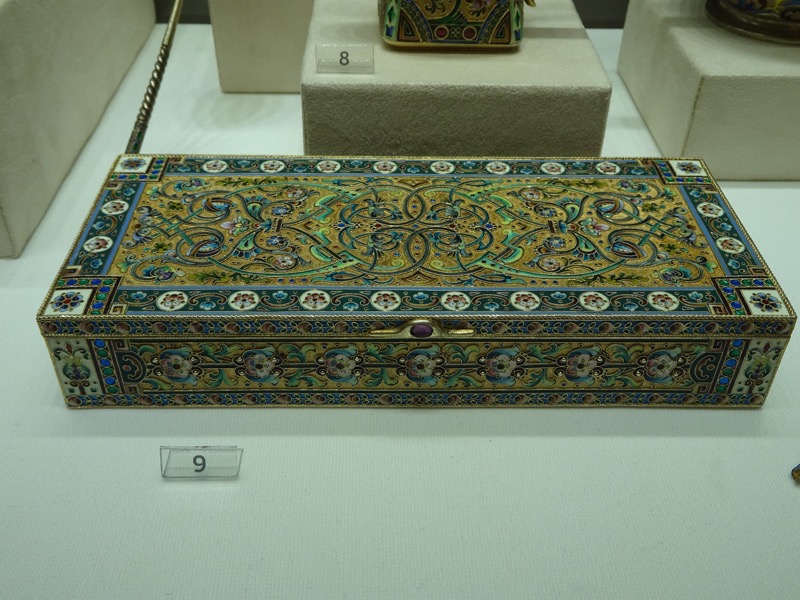
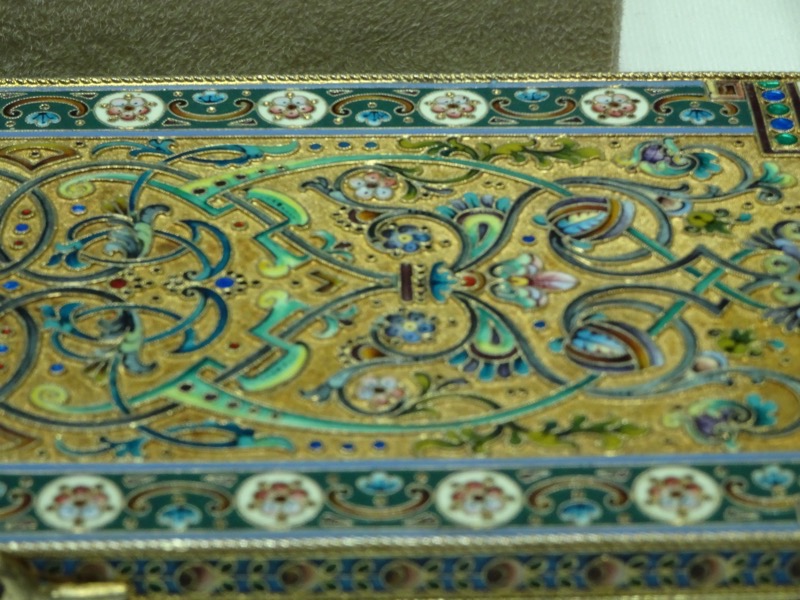 This item appealed to me a great deal – anyone interested in decorative arts would recognise this design as appearing on marble/stone work in places like Athens, Pompeii and Ephesus, though to art nouveau pieces, to the edging on the carpet in my dining room! It is a truly classical design motif that has been continuously replicated through the ages.
This item appealed to me a great deal – anyone interested in decorative arts would recognise this design as appearing on marble/stone work in places like Athens, Pompeii and Ephesus, though to art nouveau pieces, to the edging on the carpet in my dining room! It is a truly classical design motif that has been continuously replicated through the ages. Imperial design on a tea spoon.
Imperial design on a tea spoon.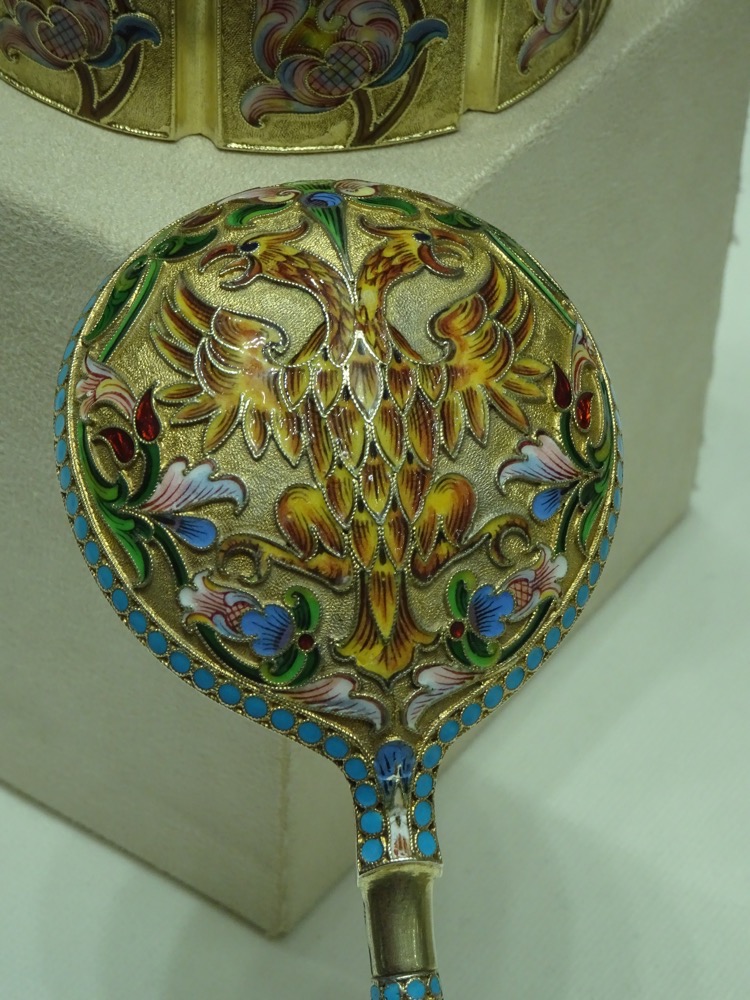
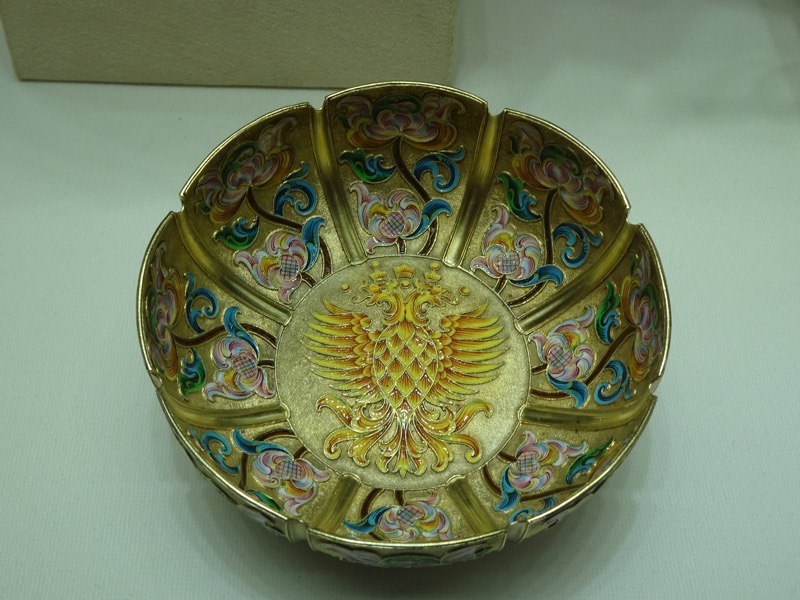 Punchbowl.
Punchbowl.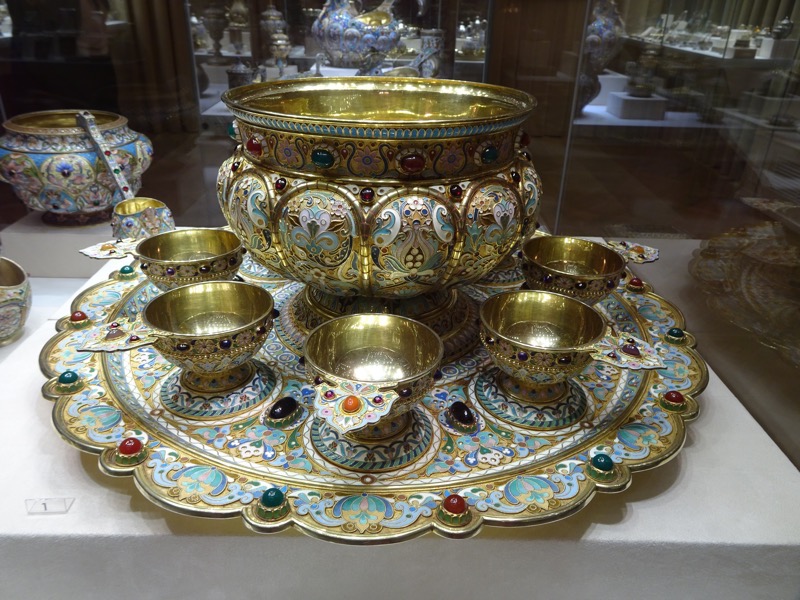
 The Red Drawing Room in the palace, with it’s beautiful silk damask wallpaper!
The Red Drawing Room in the palace, with it’s beautiful silk damask wallpaper!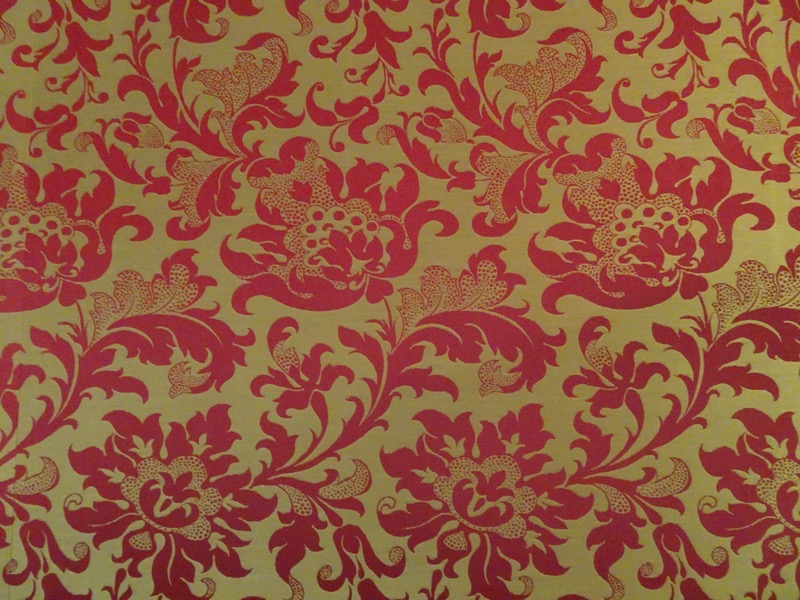
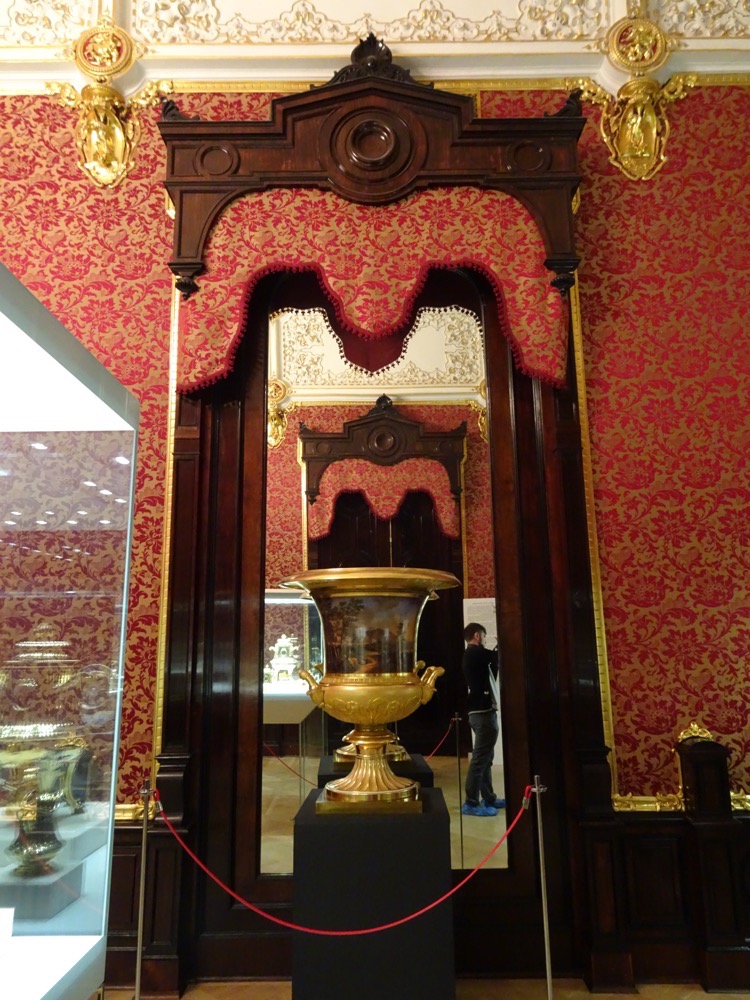
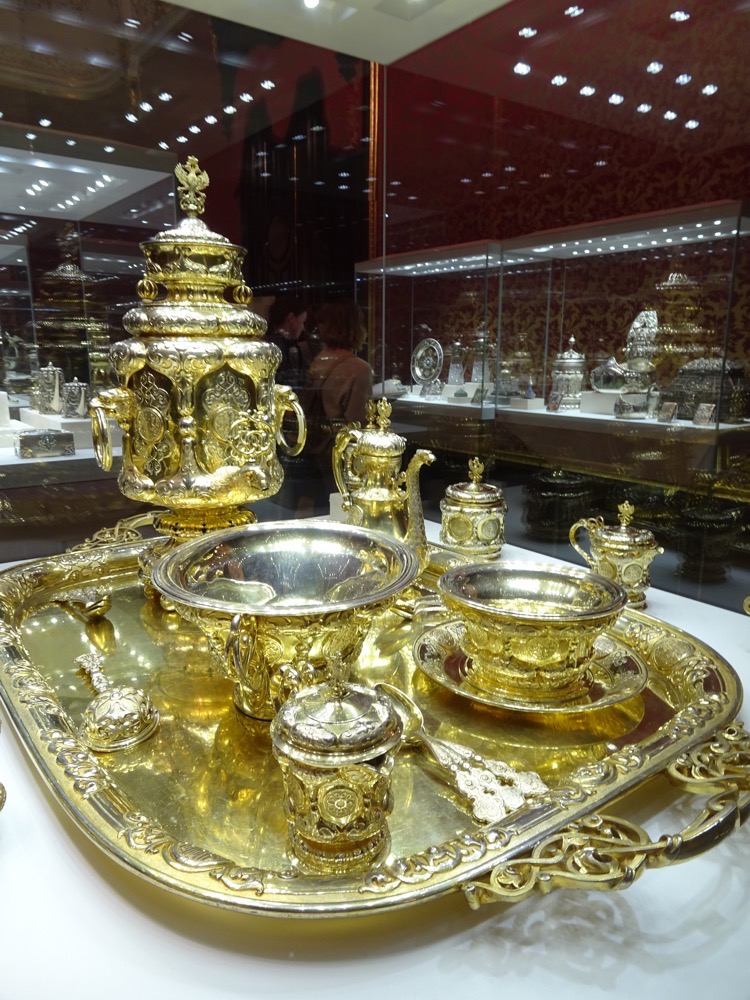 Malachite was a favoured material during the time of the Romanov Family.
Malachite was a favoured material during the time of the Romanov Family.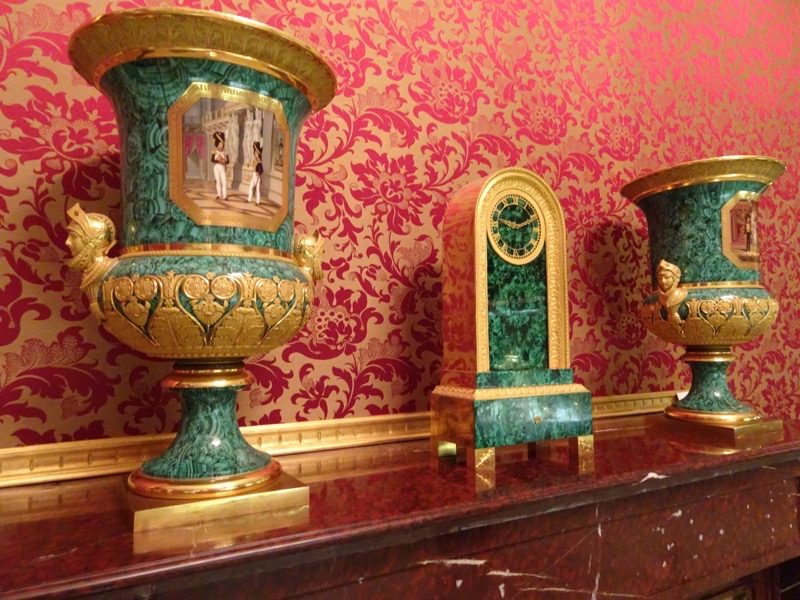
 Crazy huge drinking horn adorned by St George slaying a dragon.
Crazy huge drinking horn adorned by St George slaying a dragon.
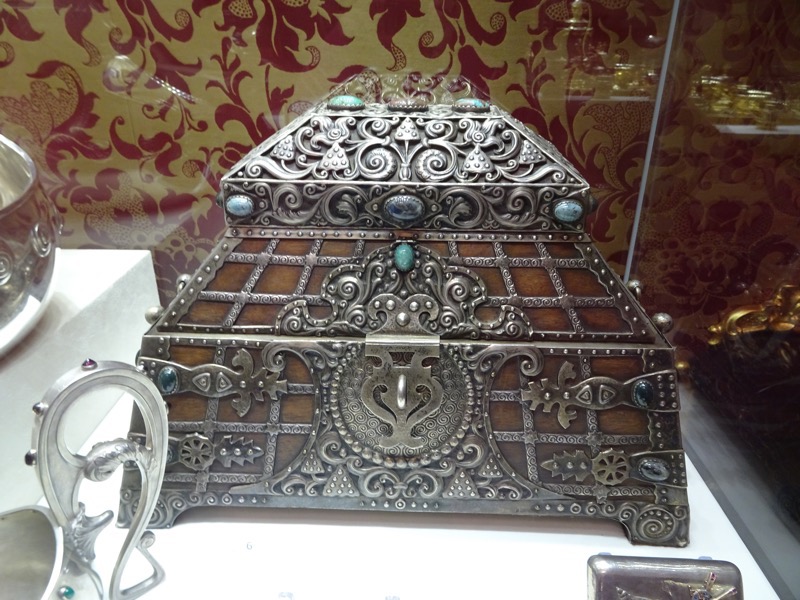 Detail in the restoration – gold filigree work added around the wallpaper.
Detail in the restoration – gold filigree work added around the wallpaper. The Blue Drawing Room which houses most of the Imperial Faberge Egg collection.
The Blue Drawing Room which houses most of the Imperial Faberge Egg collection. The Order of St George Egg.
The Order of St George Egg. The lovely blue silk damask wallpaper design…
The lovely blue silk damask wallpaper design…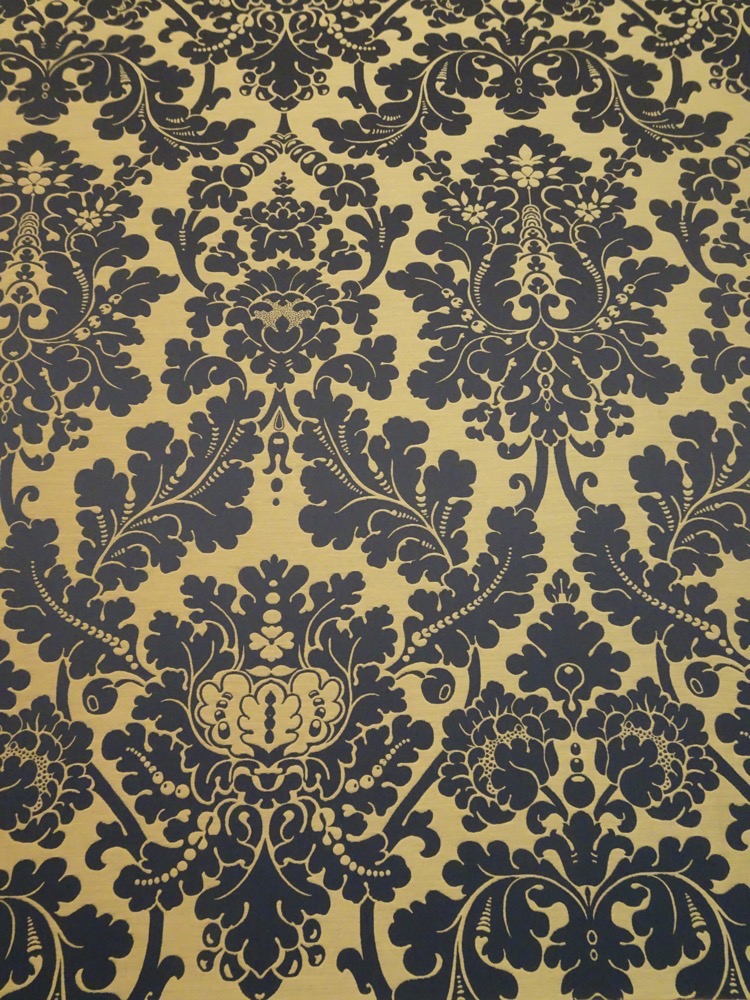 The ceiling in the Blue Drawing Room.
The ceiling in the Blue Drawing Room. The Duchess of Marlborough Egg, which is also a clock.
The Duchess of Marlborough Egg, which is also a clock.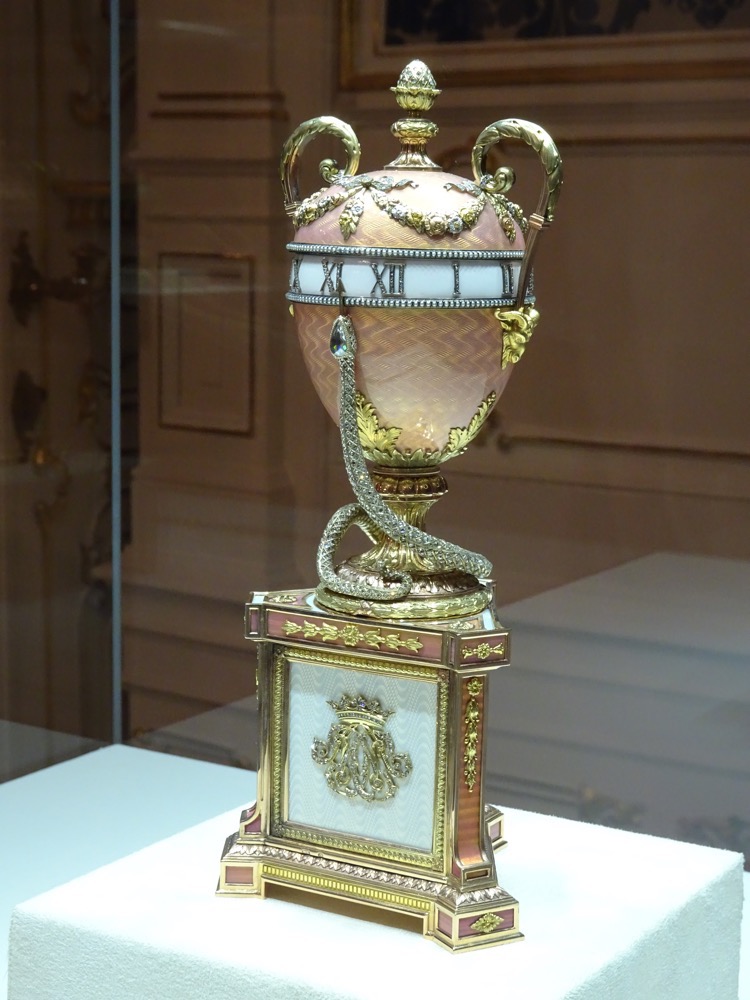
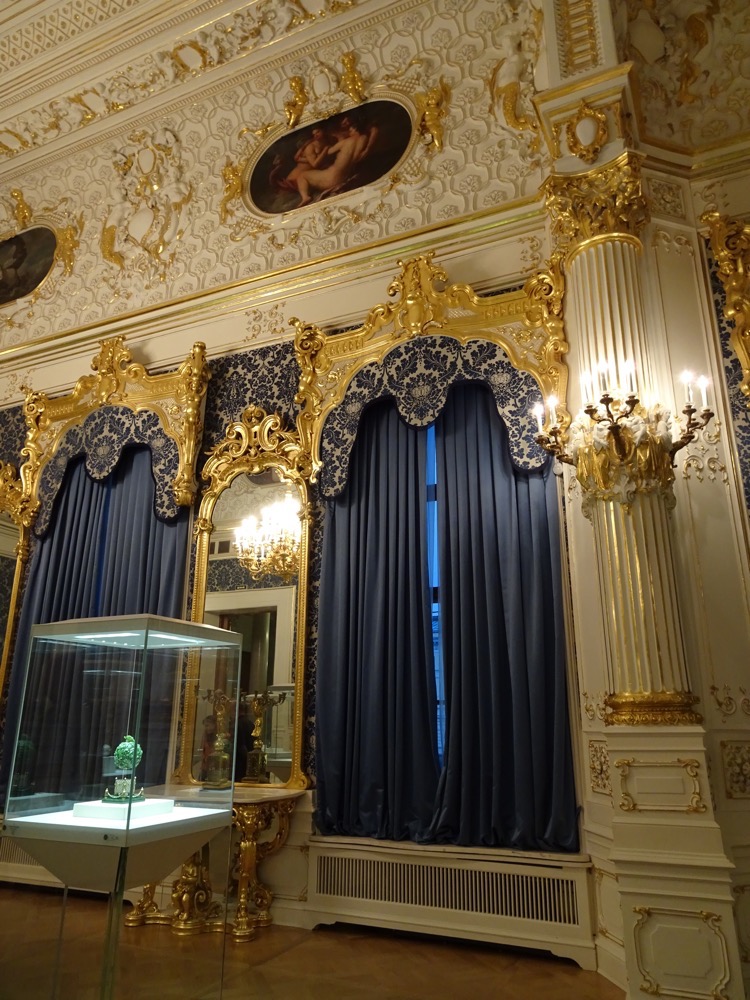 Bay Tree Egg.
Bay Tree Egg.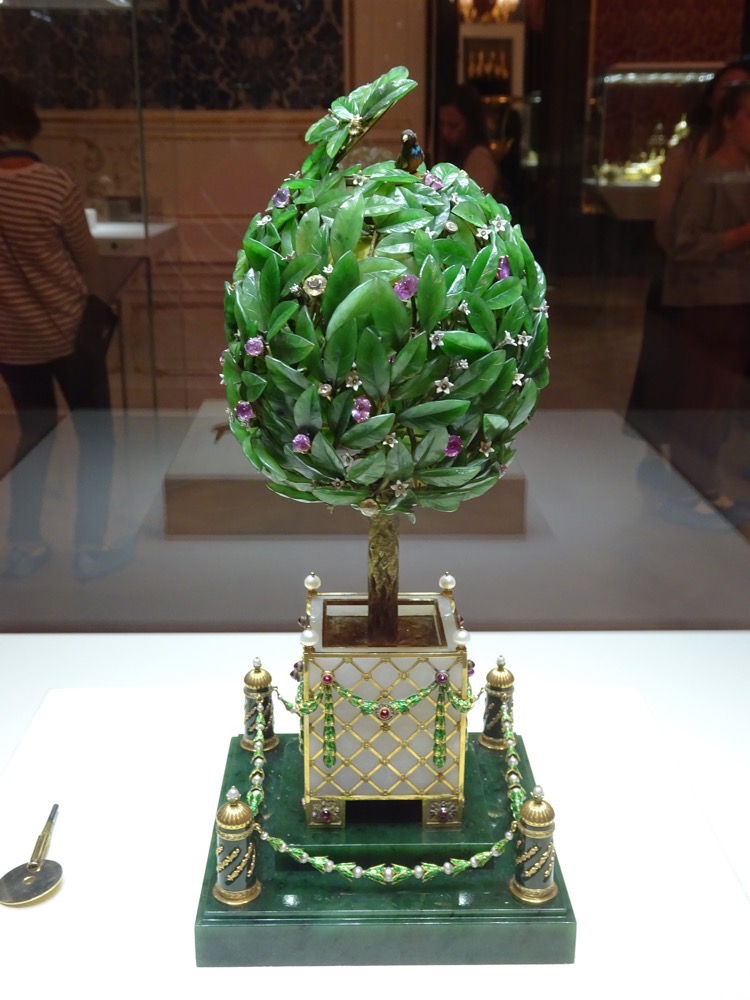
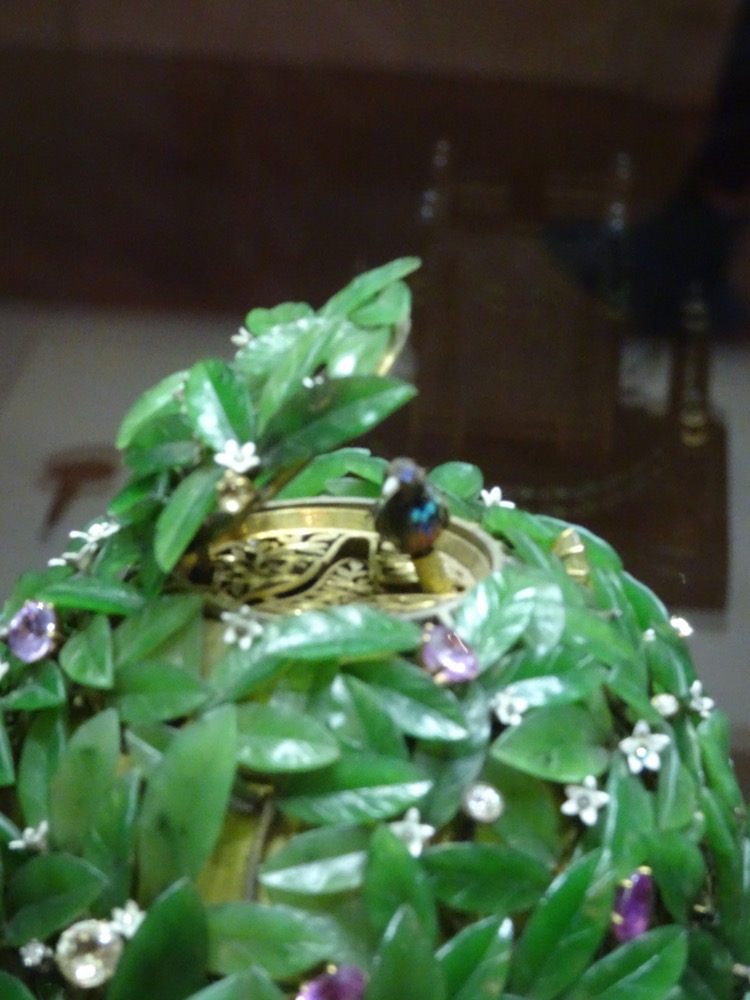 Fifteenth Anniversary Egg.
Fifteenth Anniversary Egg.
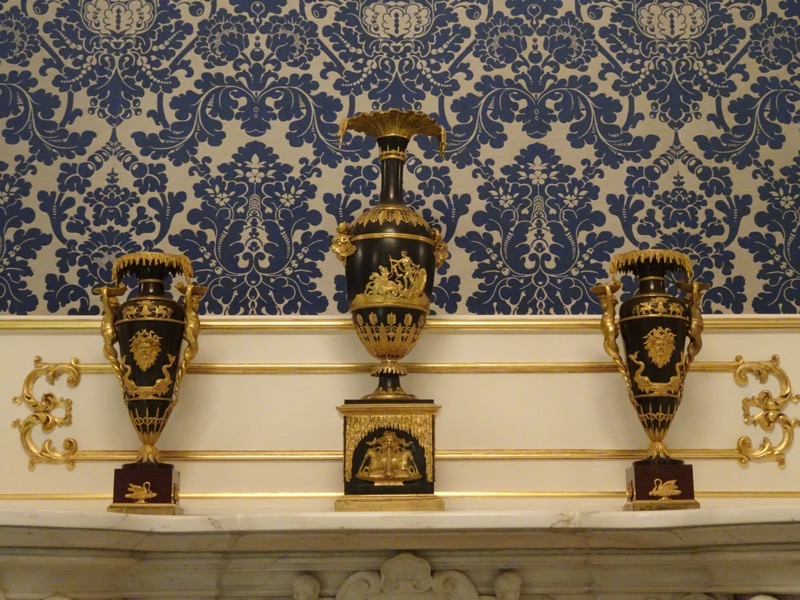 The Renaissance Egg
The Renaissance Egg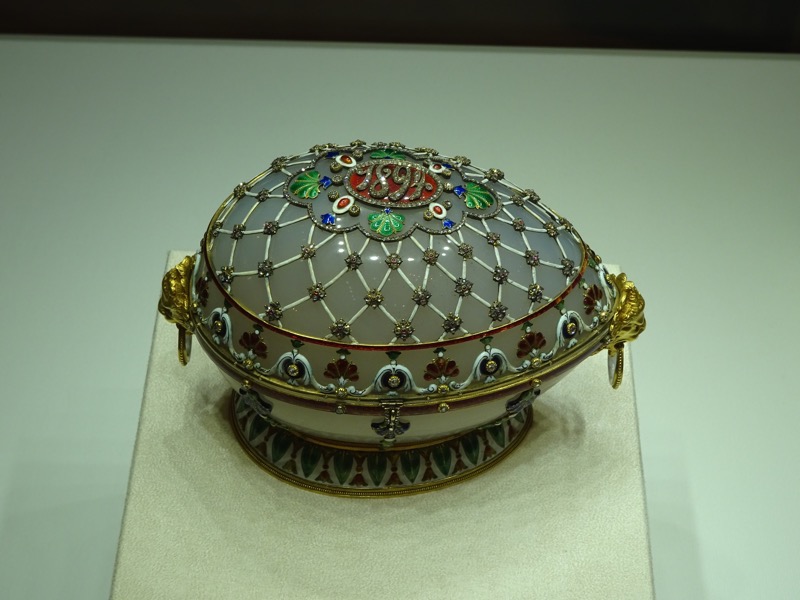
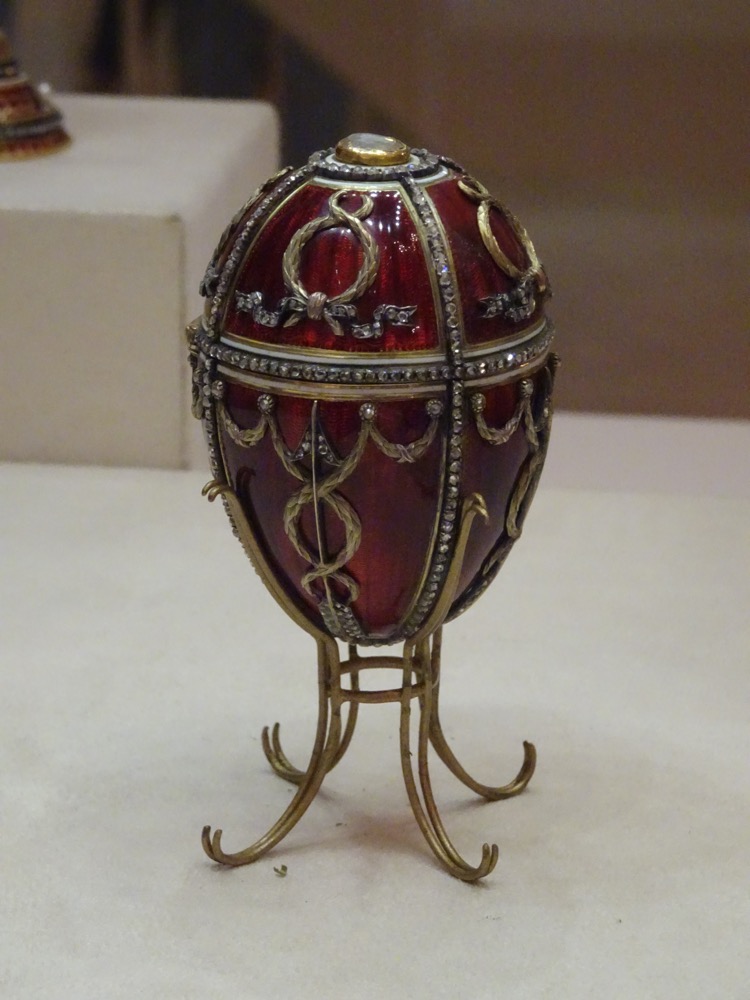 Keith Chanticleer Egg.
Keith Chanticleer Egg.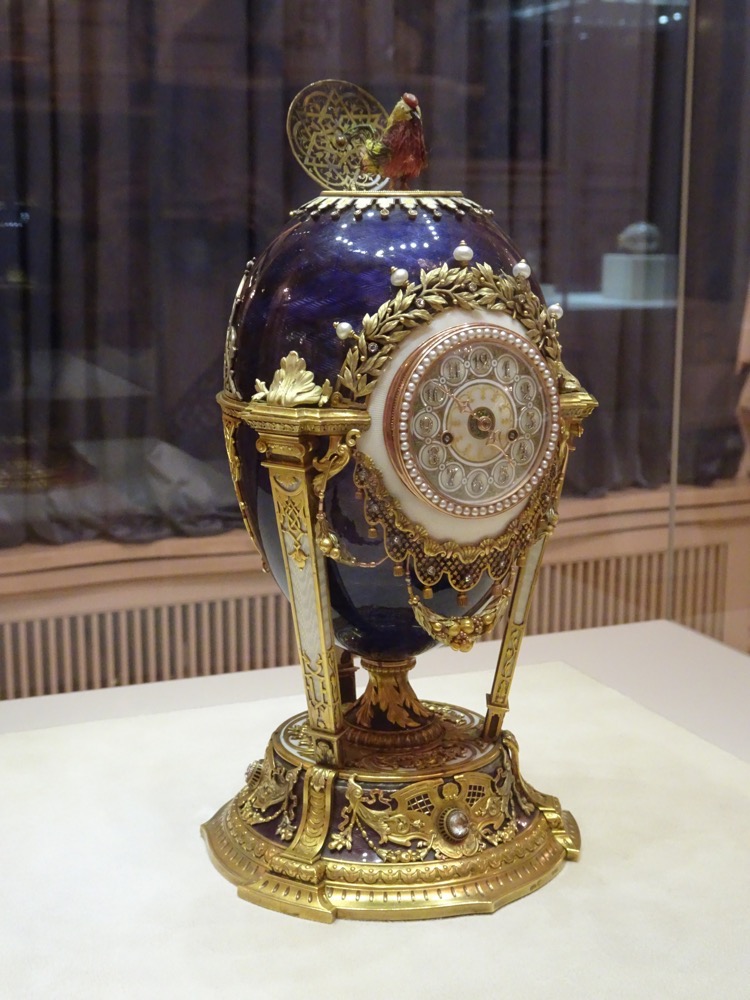
 Lillies of the Valley Egg.
Lillies of the Valley Egg.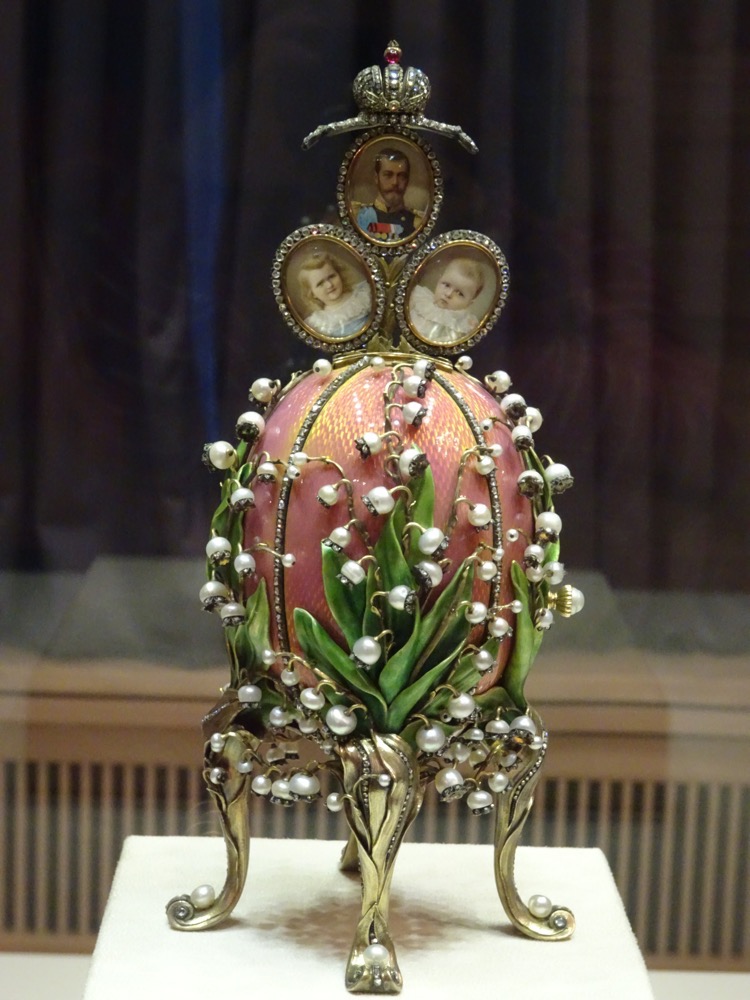 Carriage of the …
Carriage of the …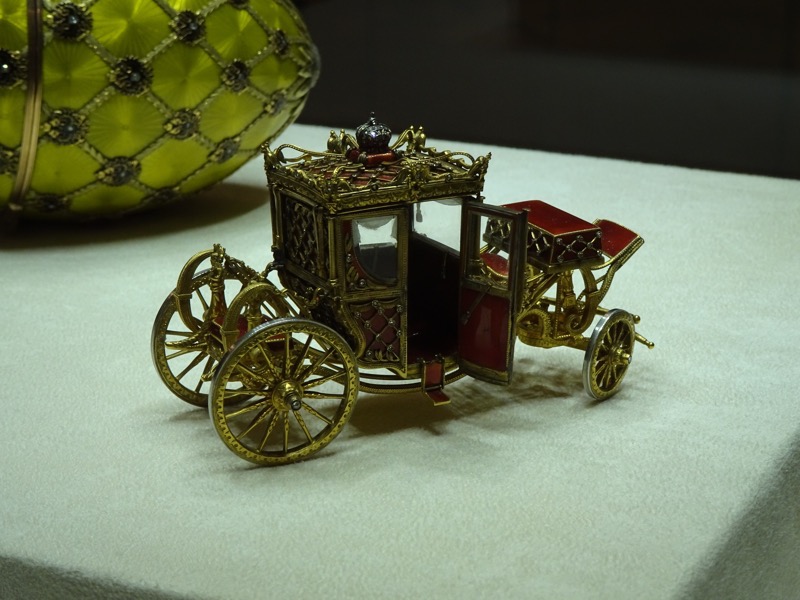 … Coronation Egg.
… Coronation Egg.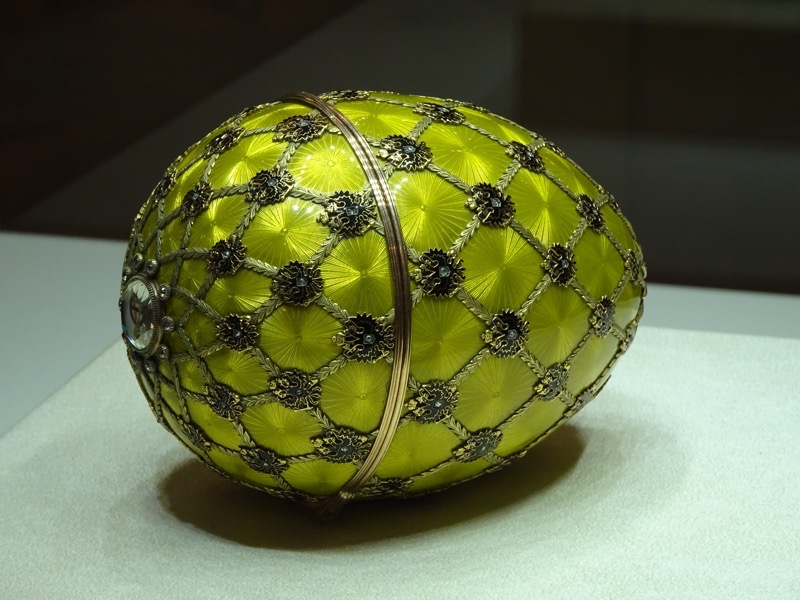 Cockerel Egg.
Cockerel Egg.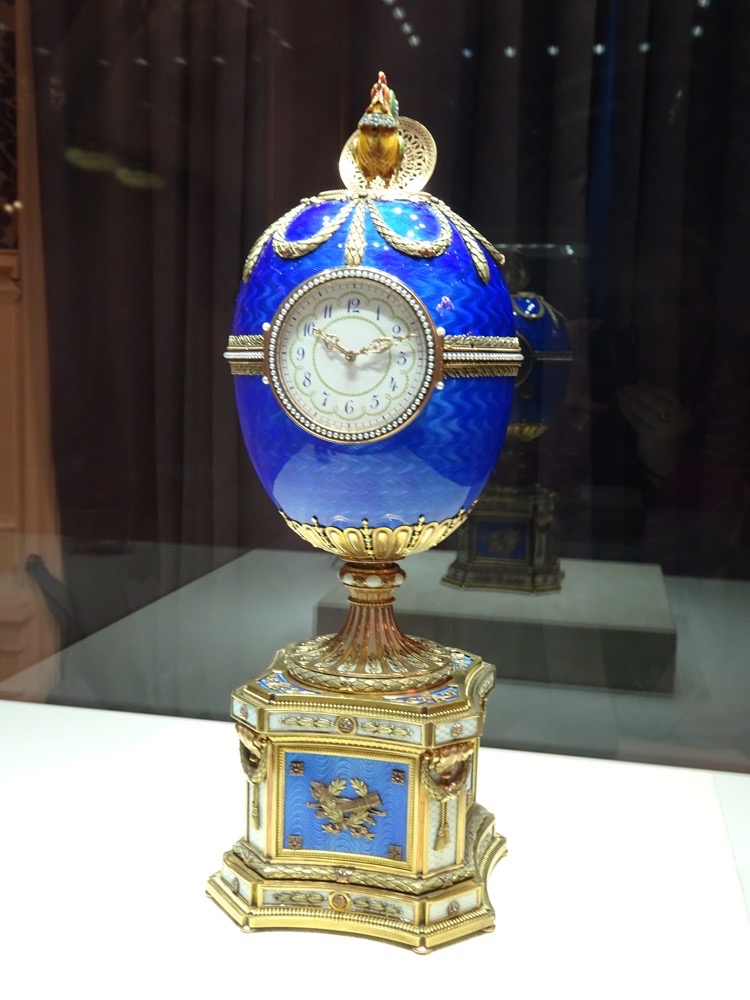

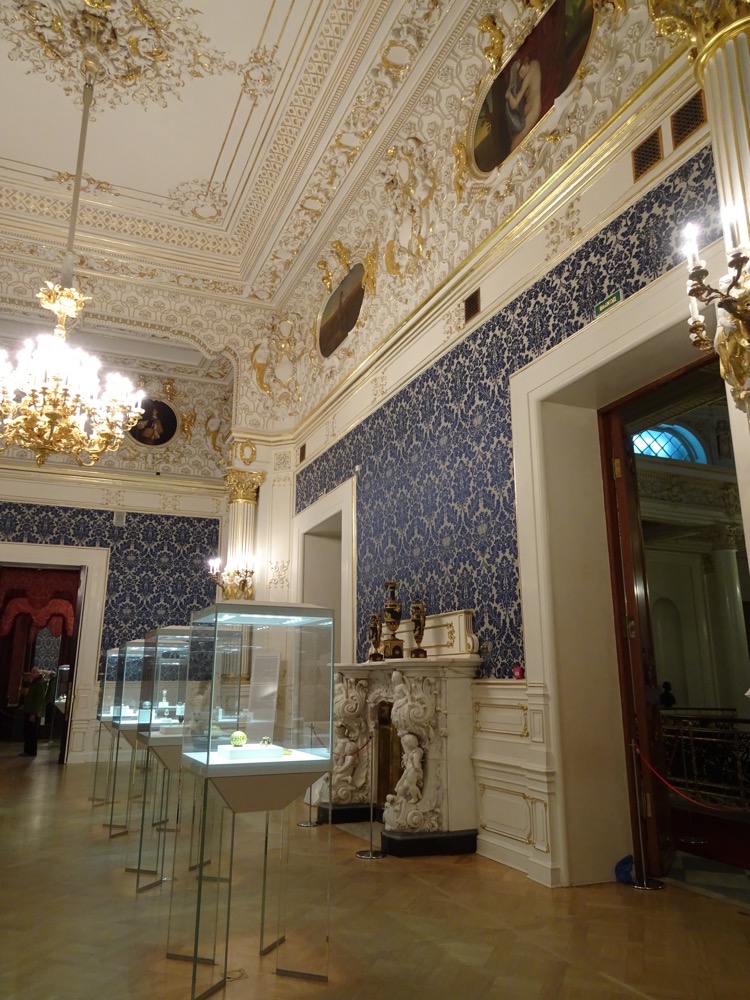 Gold Drawing Room
Gold Drawing Room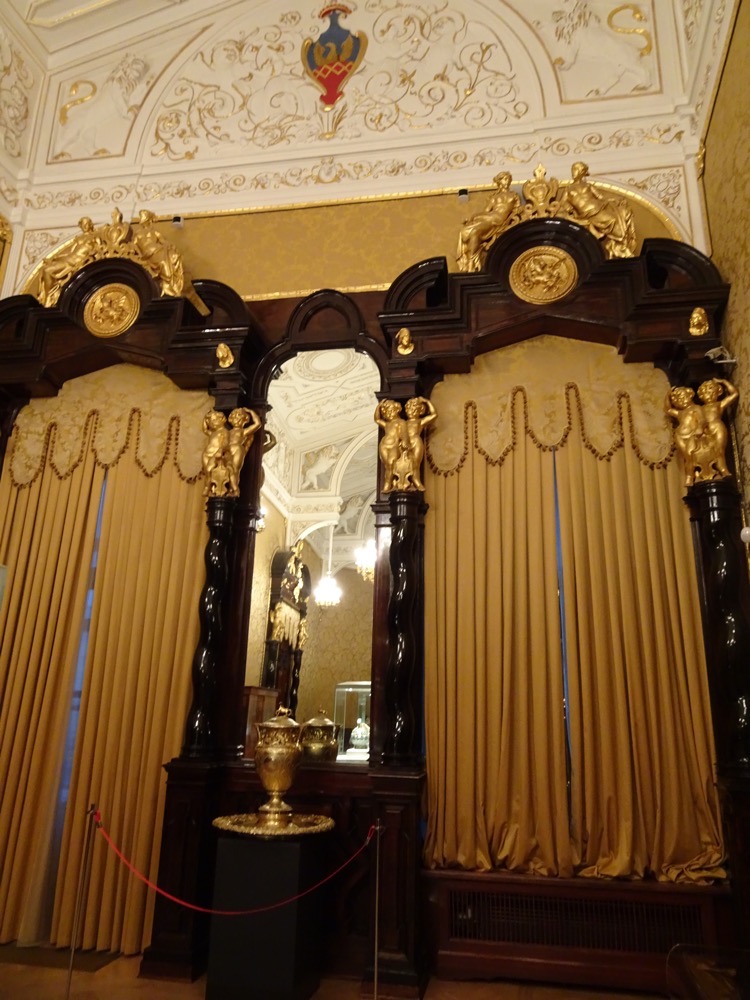
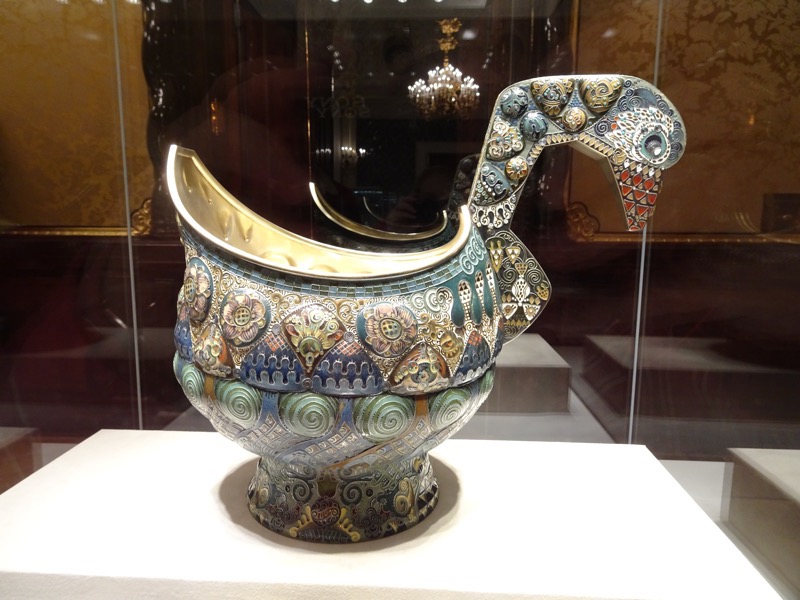
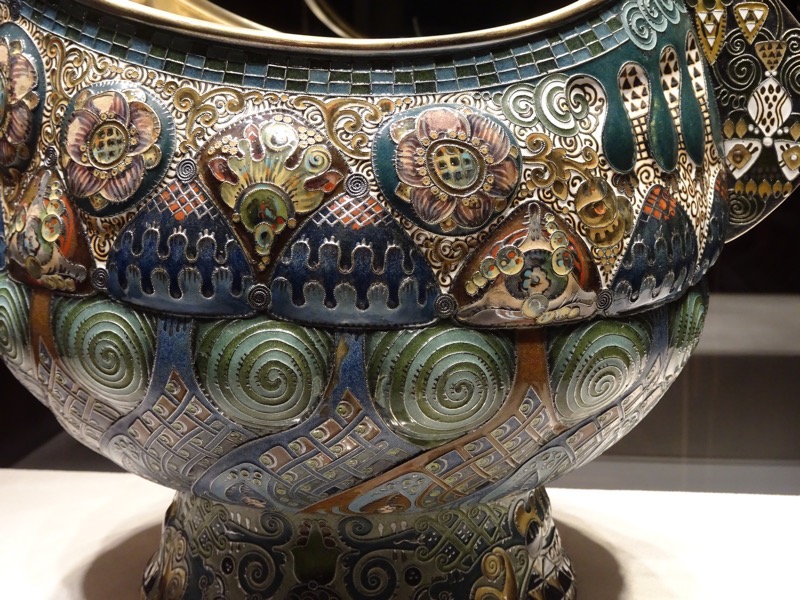

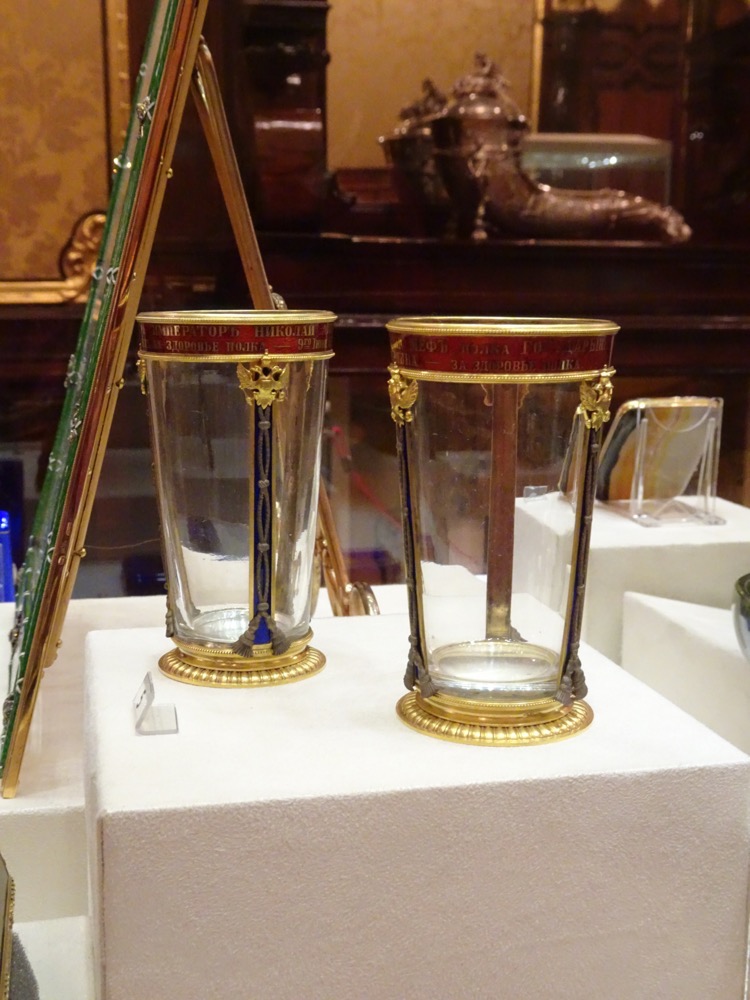
 Malachite wax seal.
Malachite wax seal.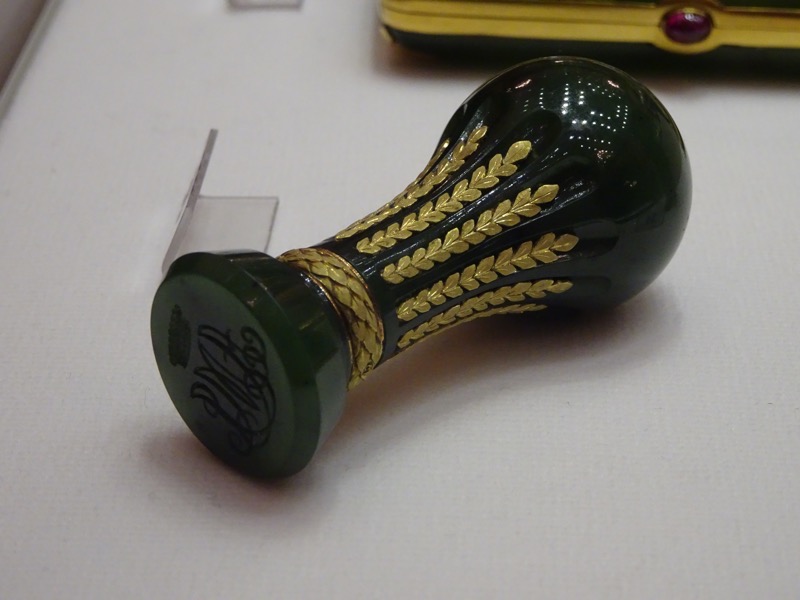
 Cigarete boxes, card boxes, pill boxes etc.
Cigarete boxes, card boxes, pill boxes etc.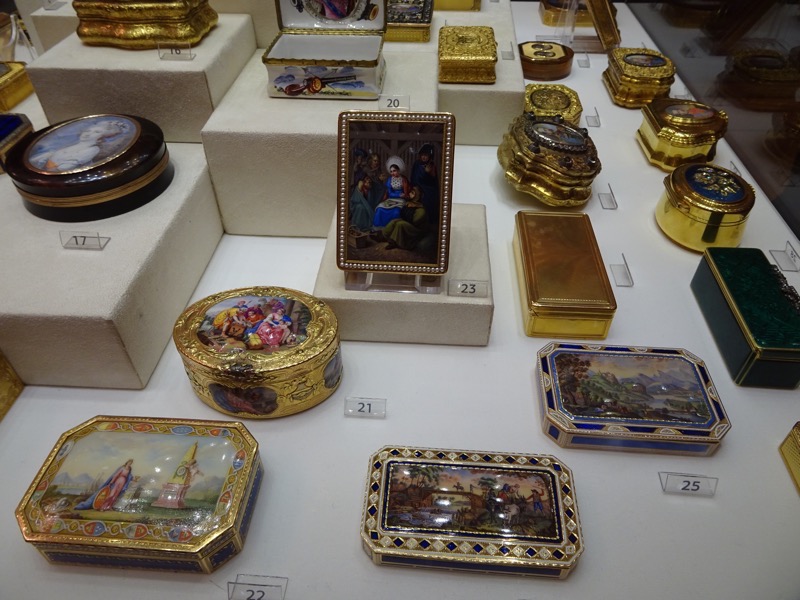
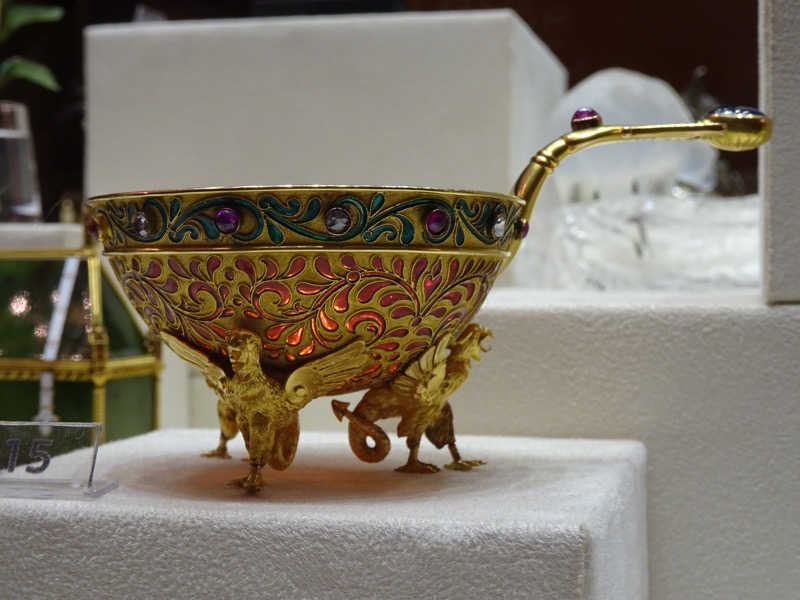
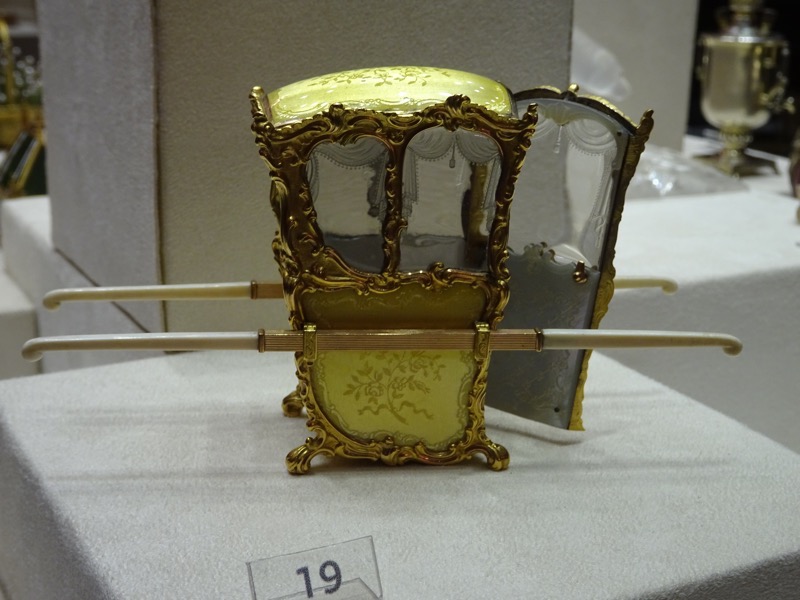 Salmon enamel work.
Salmon enamel work.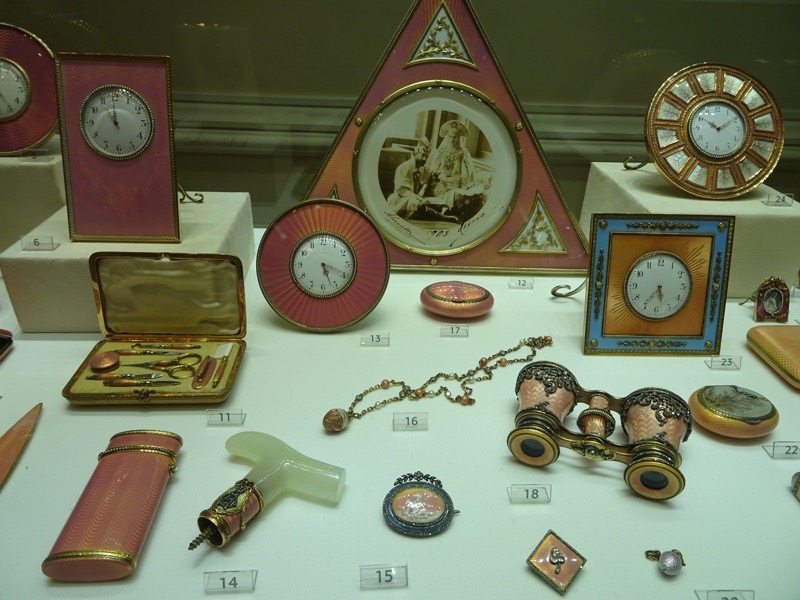
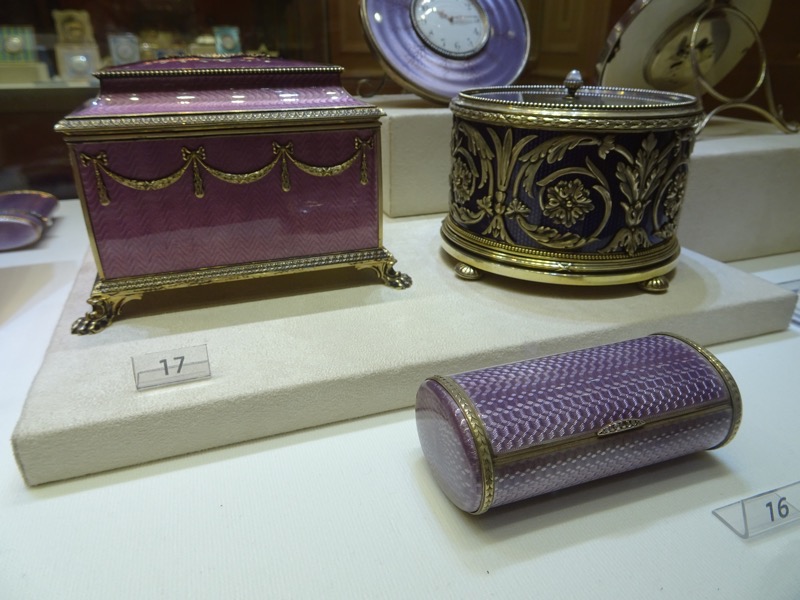
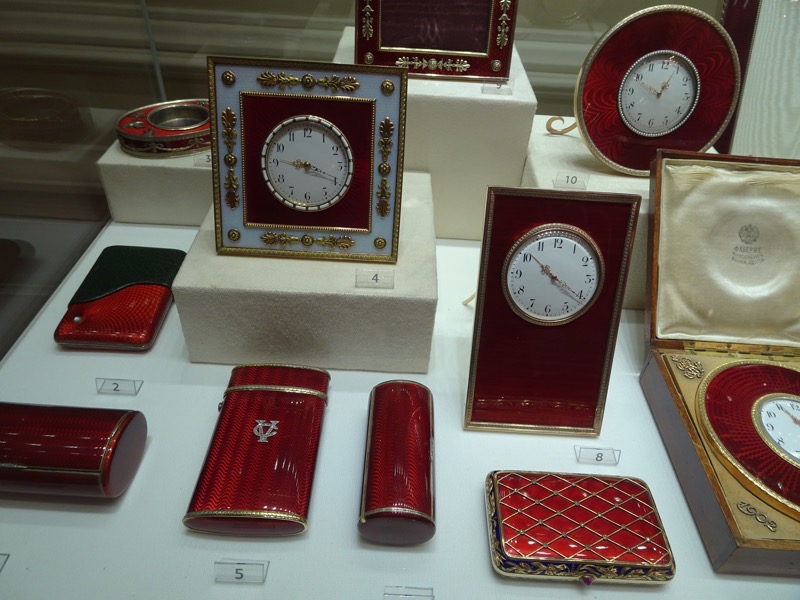


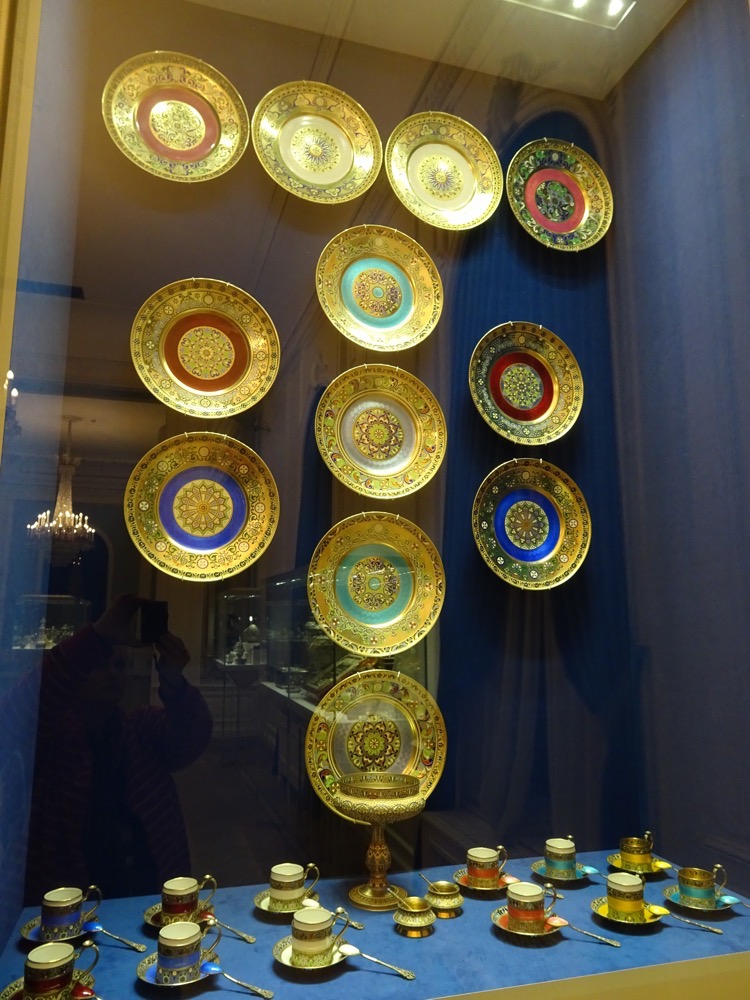
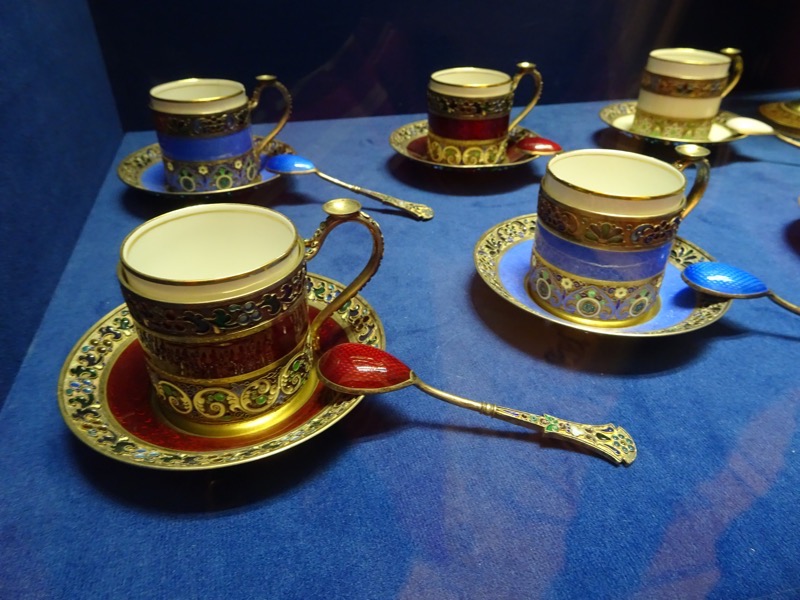
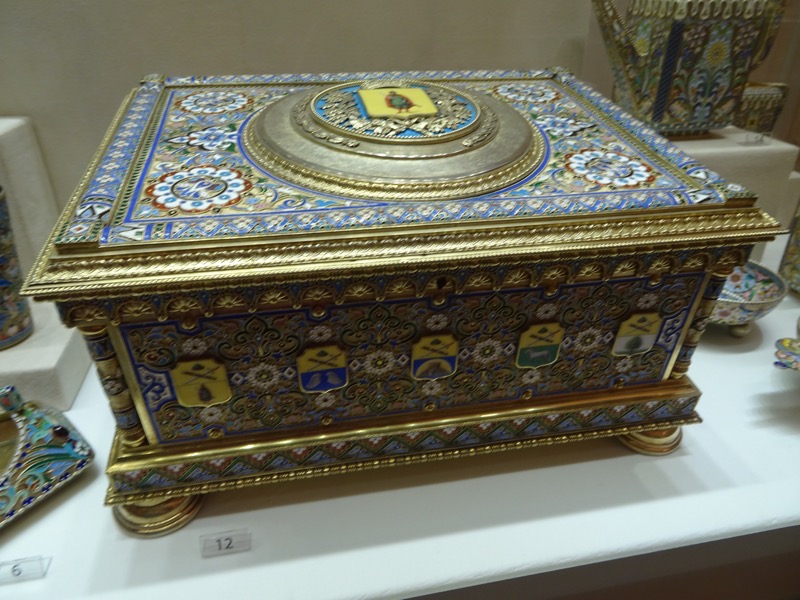

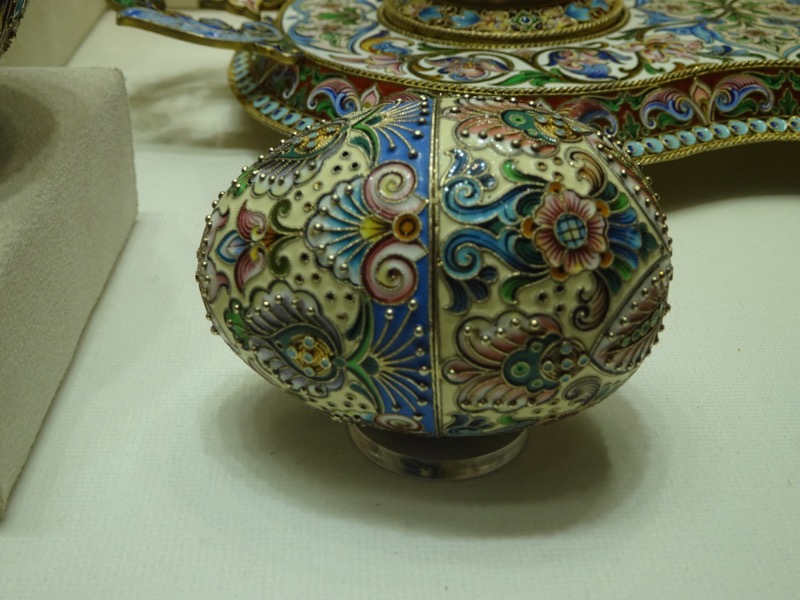
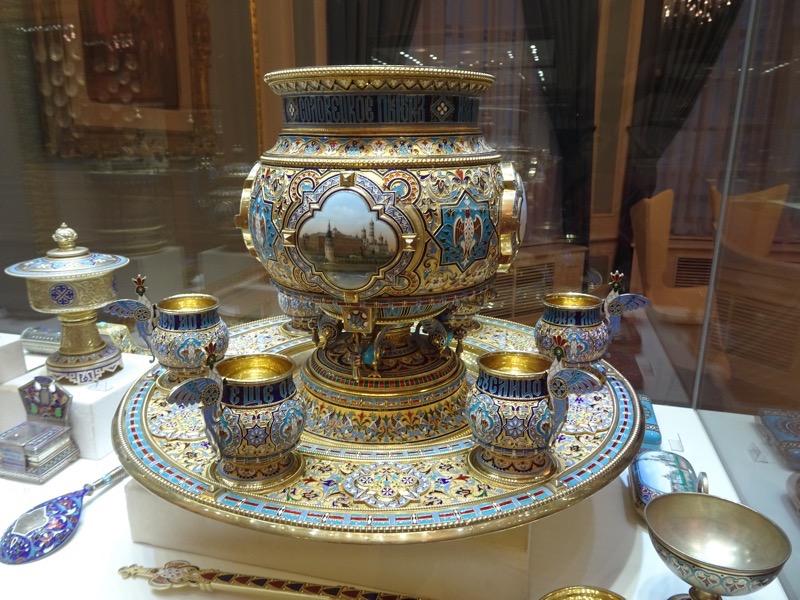
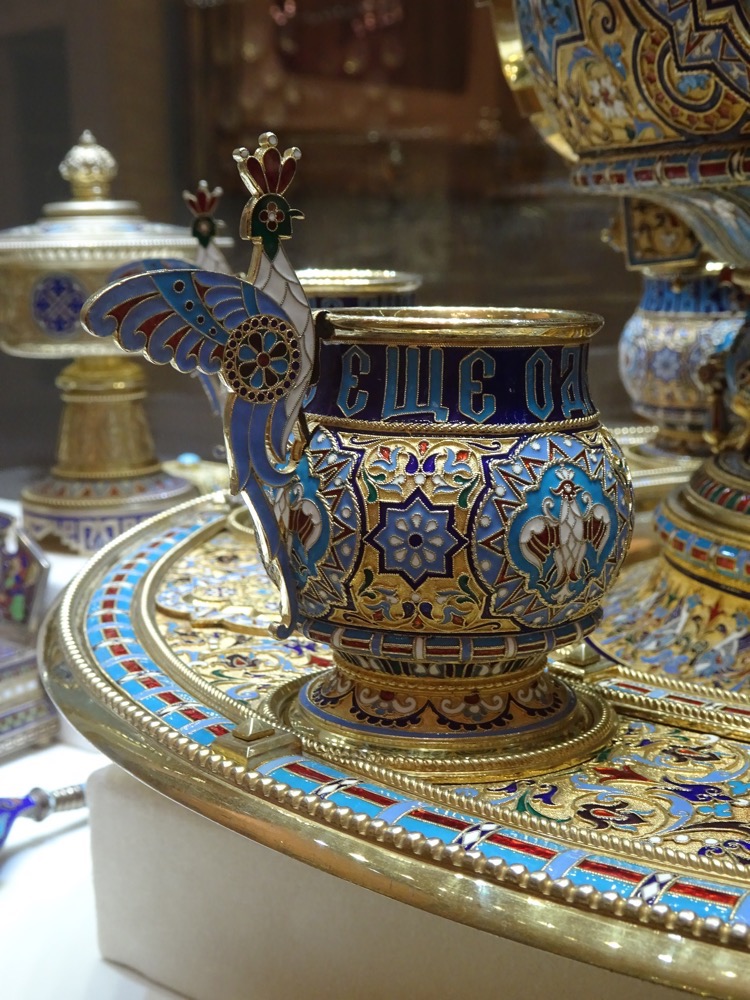
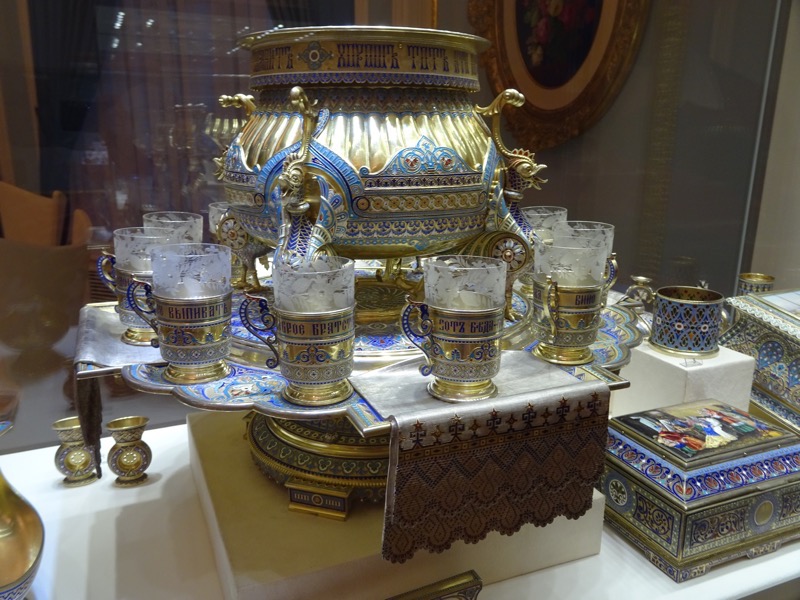
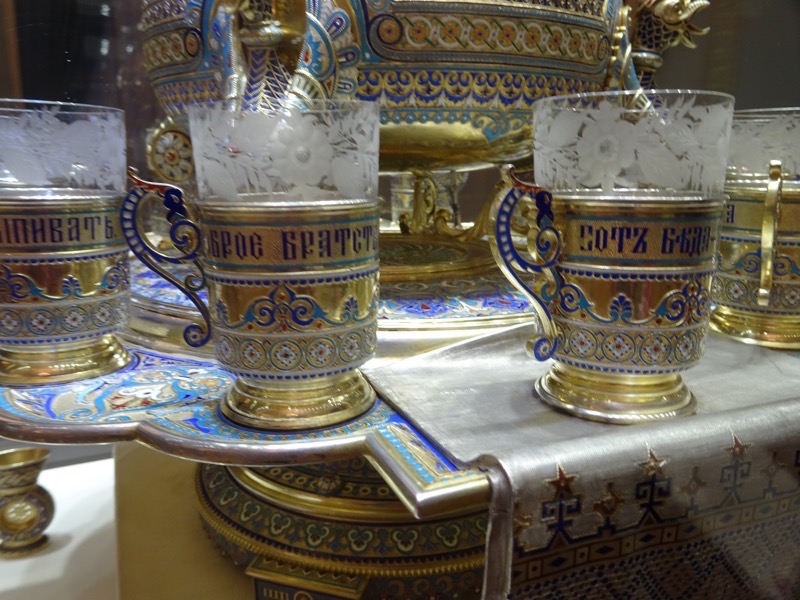
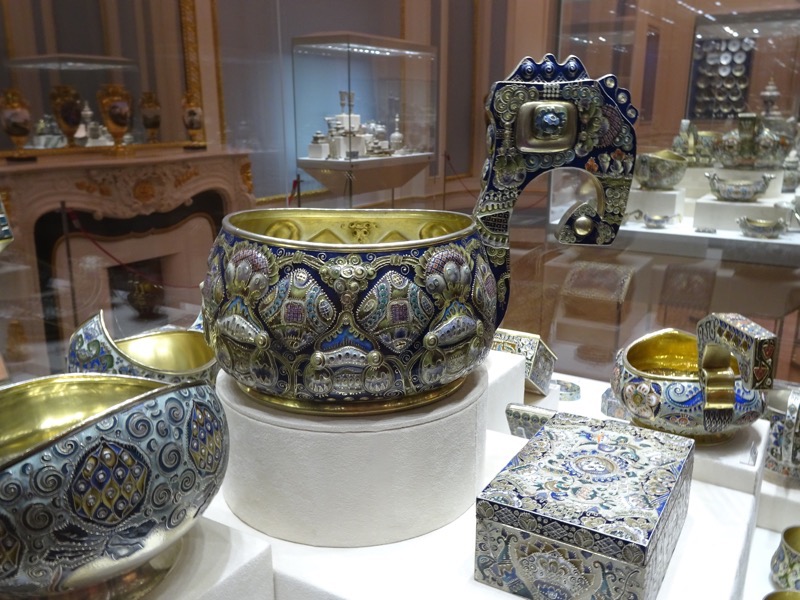
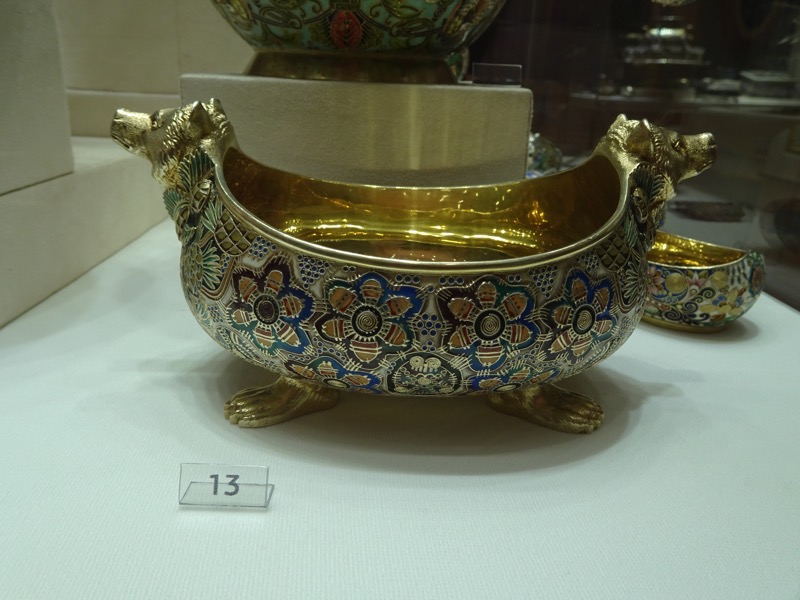

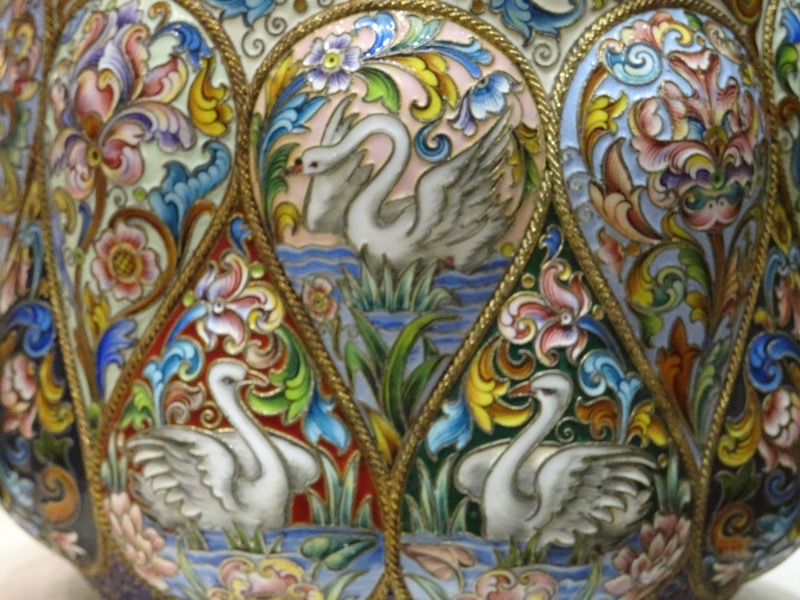
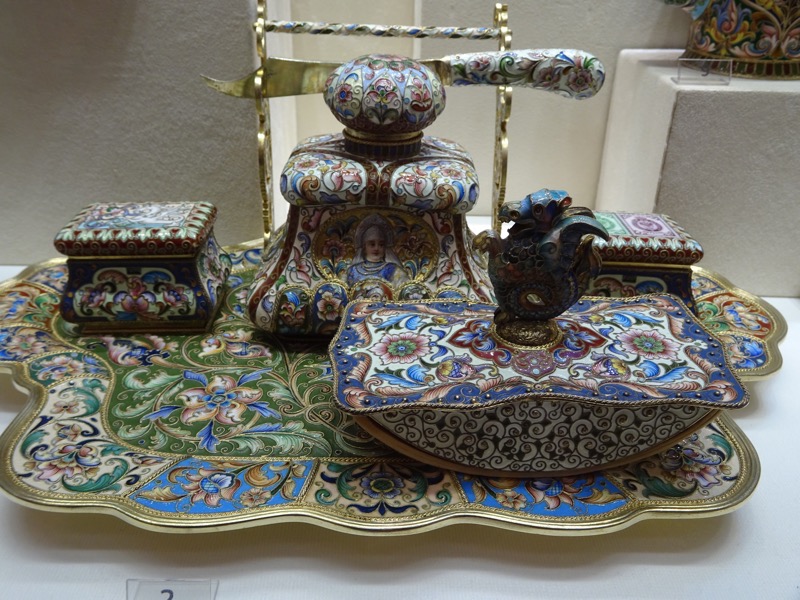
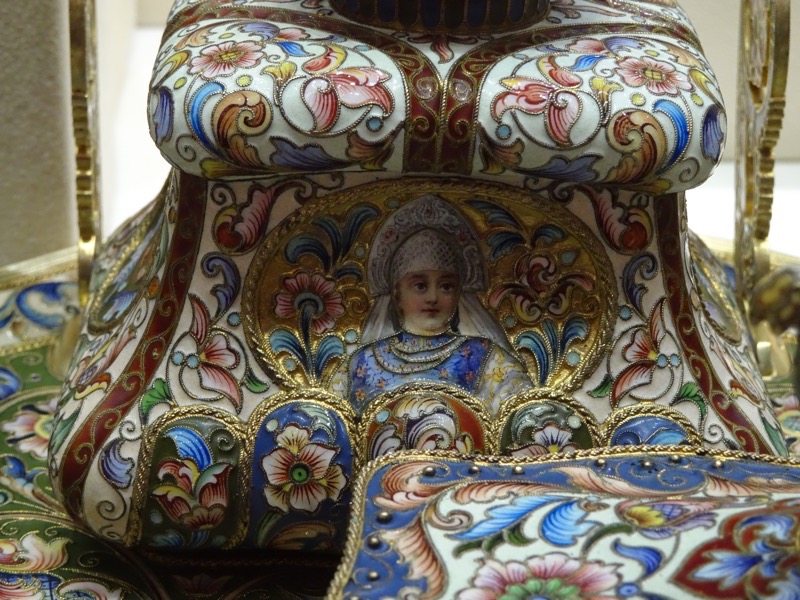 Imperial Fidget Spinner… just kidding, this was a bell. It used to have a metal dome that sat over central screw there, and was decorated with three enamel coins.
Imperial Fidget Spinner… just kidding, this was a bell. It used to have a metal dome that sat over central screw there, and was decorated with three enamel coins.
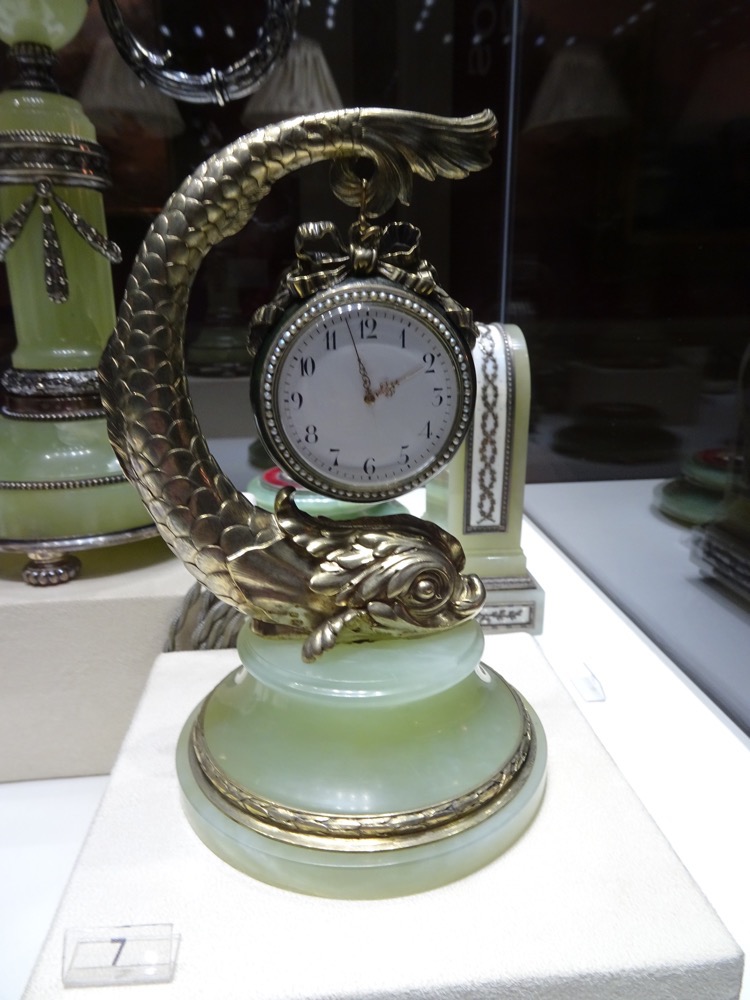 Gothic Room – most of these paintings were medeival in period, but were ‘added to’ with gold and silverwork and lavishly enameled.
Gothic Room – most of these paintings were medeival in period, but were ‘added to’ with gold and silverwork and lavishly enameled. 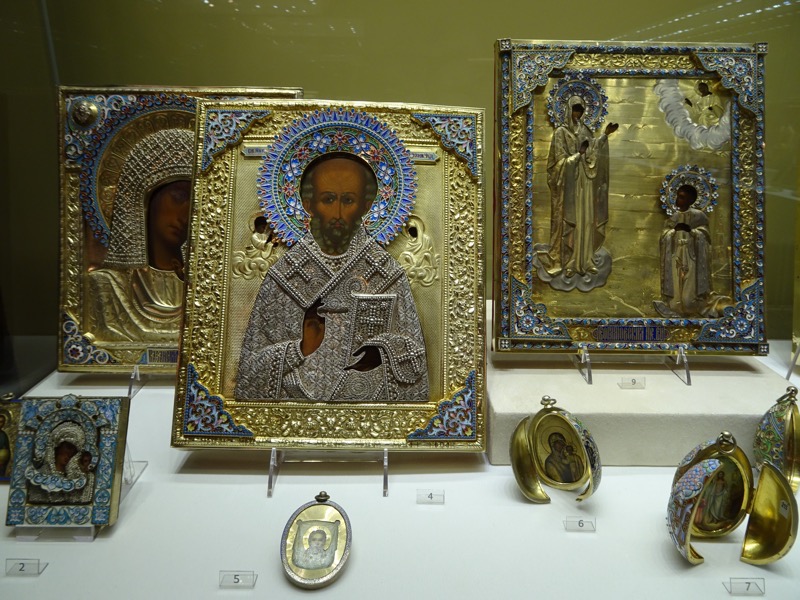


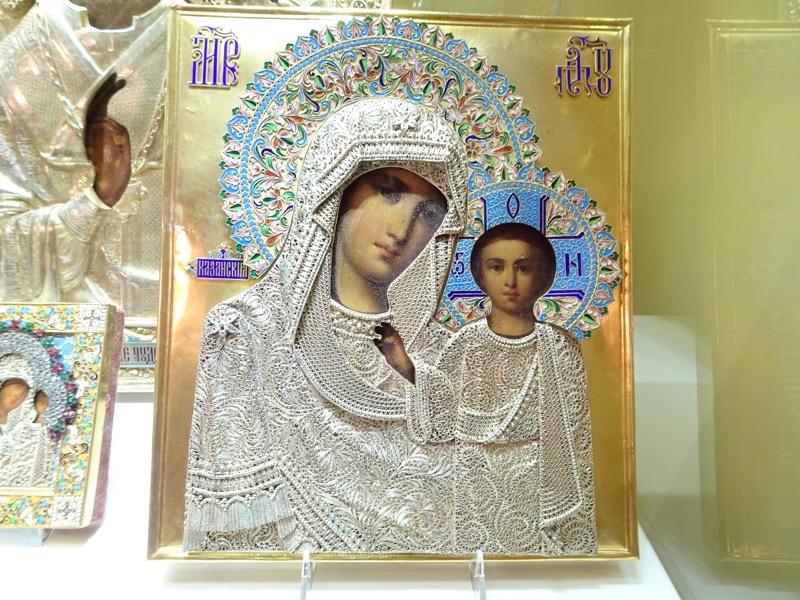



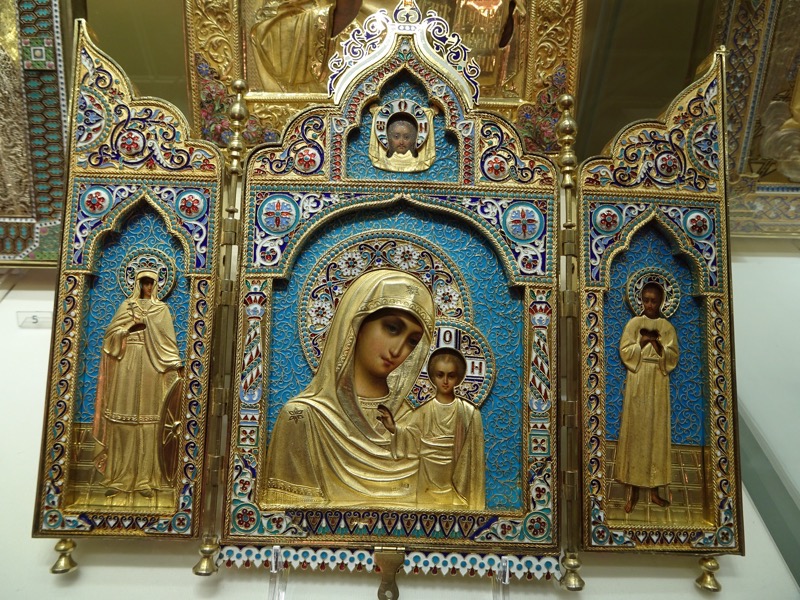
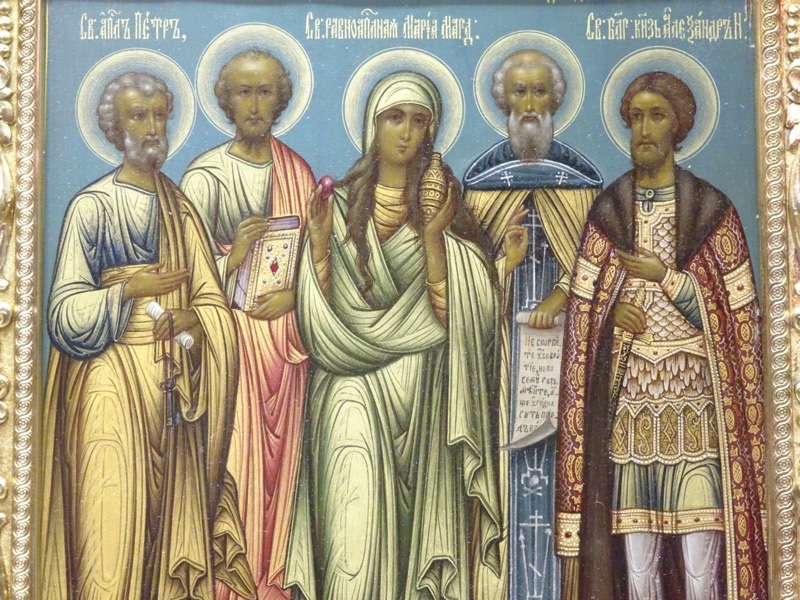 After the Faberge Museum, we drove back to the port. It was still raining and I attempted to take a photograph of a lighthouse that Mr K liked the look of… as you can see that was spectacualarly unsuccessful, but I kinda liked the image, it summed up out day – lots to see but it was pretty damn wet out!
After the Faberge Museum, we drove back to the port. It was still raining and I attempted to take a photograph of a lighthouse that Mr K liked the look of… as you can see that was spectacualarly unsuccessful, but I kinda liked the image, it summed up out day – lots to see but it was pretty damn wet out!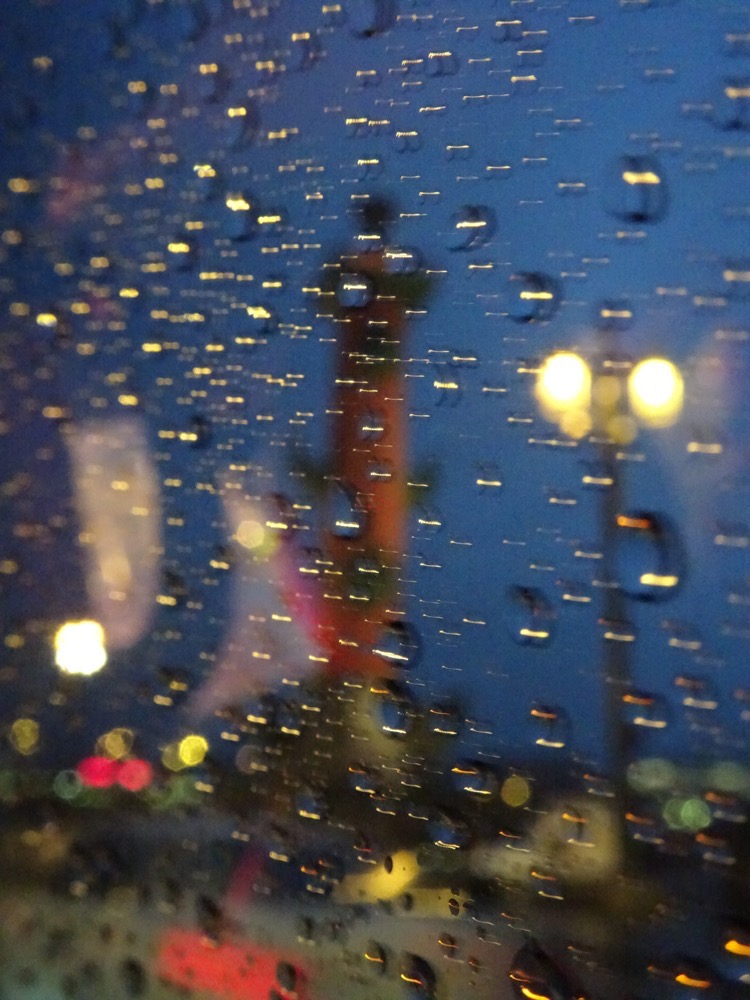 Tomorrow we have another big day – I have rushed this post so I don’t fall behind, but I am hoping to come back to it once we have our next sea day. 🙂
Tomorrow we have another big day – I have rushed this post so I don’t fall behind, but I am hoping to come back to it once we have our next sea day. 🙂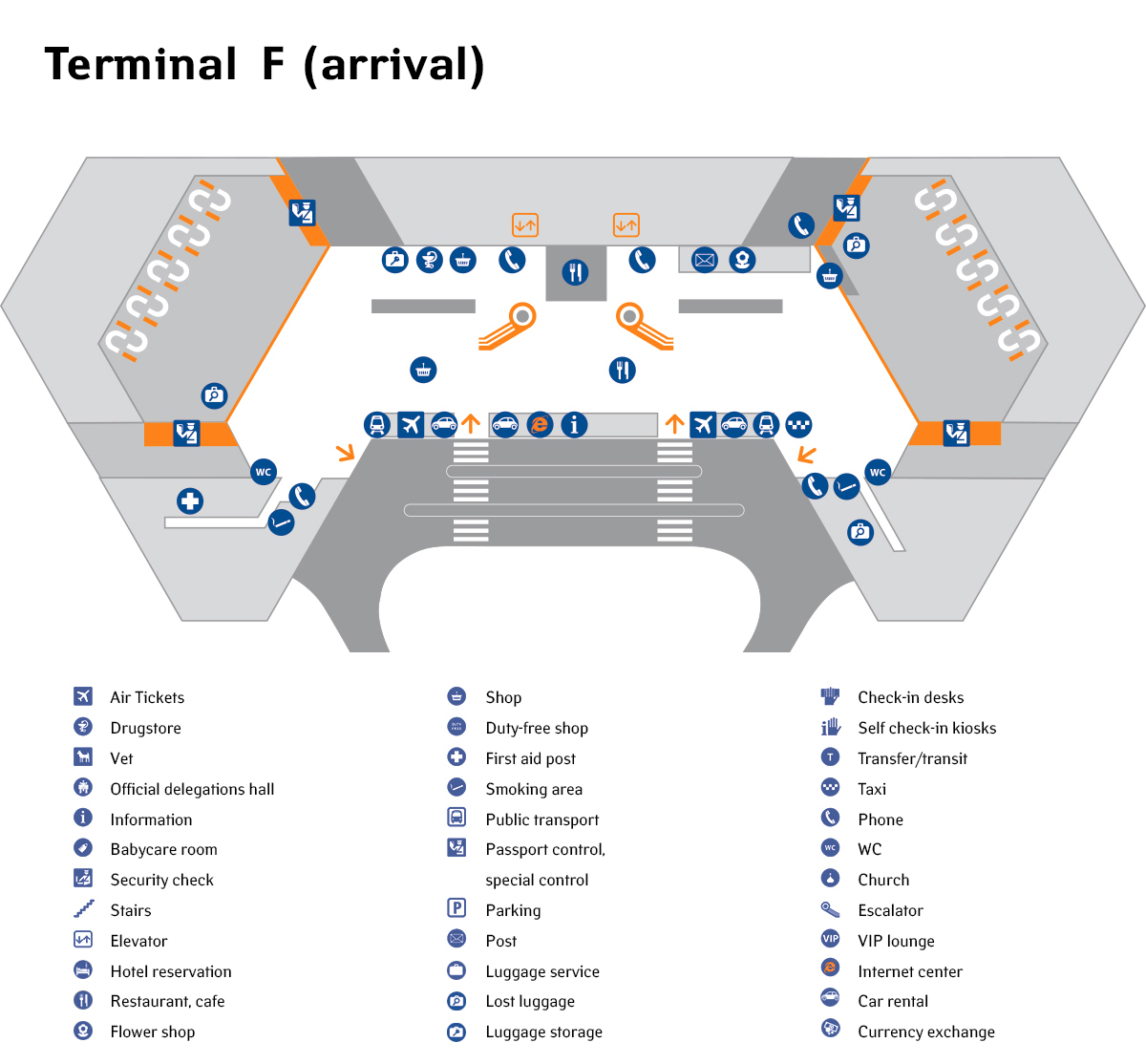 The holding area is the dark grey parallelogram shape at the top (left one for us) of this diagram next to the little customs dude icon. The unlinked circular squiggles are a baggage claim area that is roughly the size of a usual baggage claim area… meaning the holding area was stupidly fucking tiny for 700+ people to wait, cheek to jowl, for over an hour. No wonder people were getting restless and in each other’s faces. And what a bloody fire hazard!
The holding area is the dark grey parallelogram shape at the top (left one for us) of this diagram next to the little customs dude icon. The unlinked circular squiggles are a baggage claim area that is roughly the size of a usual baggage claim area… meaning the holding area was stupidly fucking tiny for 700+ people to wait, cheek to jowl, for over an hour. No wonder people were getting restless and in each other’s faces. And what a bloody fire hazard!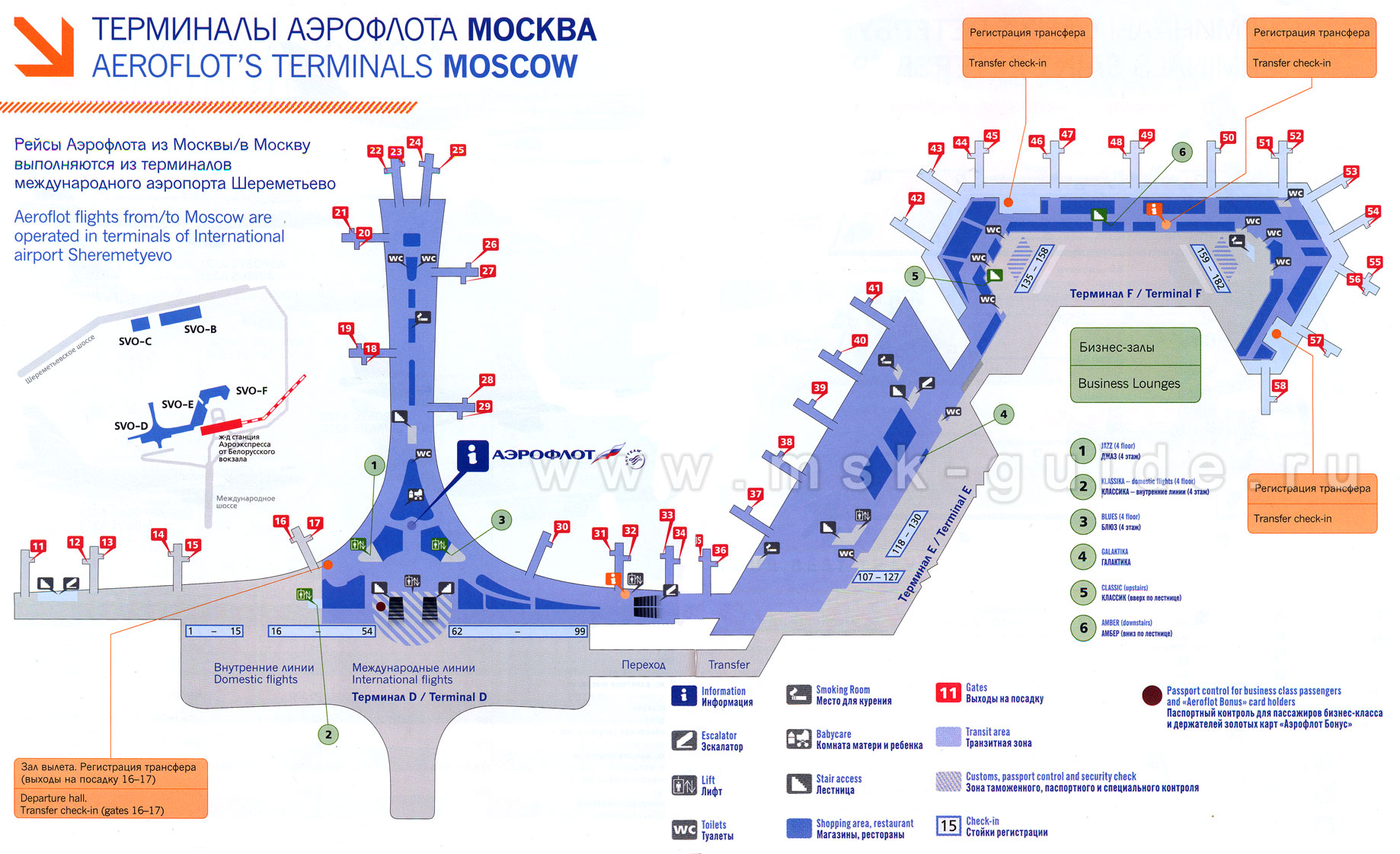 Our taxi driver dropped us off at Terminal D, as was indicated on our pre-checked in boarding passes that we printed out at the hotel, which is the grey funnel shaped area at the bottom of this picture. When we went through the process of handing over our passports and dropping off our luggage, it was just in that first grey area where there was approximately 50 or more numbered check in counters. Vitaly, who checked us in, told us our gate had changed from Gate 5 to Gate 44 and he directed us to go to Terminal F to find our gate. So, we walked all the way around to Terminal F (about 1.4kms) on the outside immigration and clearance, ‘grey area’, on the map, landing us at the red ‘i’ site on the concourse (it’s depicted just above the green text boxes in the map above). When we got there, there were check-in counters all numbered 100-150, but no signs directing patrons to Gate 44 at all. Each terminal has multiple security clearance entrance points, but we had no idea where we were going so we asked the lady as the ‘i’ site to check if we were in the right area.
Our taxi driver dropped us off at Terminal D, as was indicated on our pre-checked in boarding passes that we printed out at the hotel, which is the grey funnel shaped area at the bottom of this picture. When we went through the process of handing over our passports and dropping off our luggage, it was just in that first grey area where there was approximately 50 or more numbered check in counters. Vitaly, who checked us in, told us our gate had changed from Gate 5 to Gate 44 and he directed us to go to Terminal F to find our gate. So, we walked all the way around to Terminal F (about 1.4kms) on the outside immigration and clearance, ‘grey area’, on the map, landing us at the red ‘i’ site on the concourse (it’s depicted just above the green text boxes in the map above). When we got there, there were check-in counters all numbered 100-150, but no signs directing patrons to Gate 44 at all. Each terminal has multiple security clearance entrance points, but we had no idea where we were going so we asked the lady as the ‘i’ site to check if we were in the right area. See this map? And the icons for ‘Shop’ and ‘Dury-Free Shop’… note also how there are not present on the map? That is because the entire map would have measles if they were included.
See this map? And the icons for ‘Shop’ and ‘Dury-Free Shop’… note also how there are not present on the map? That is because the entire map would have measles if they were included.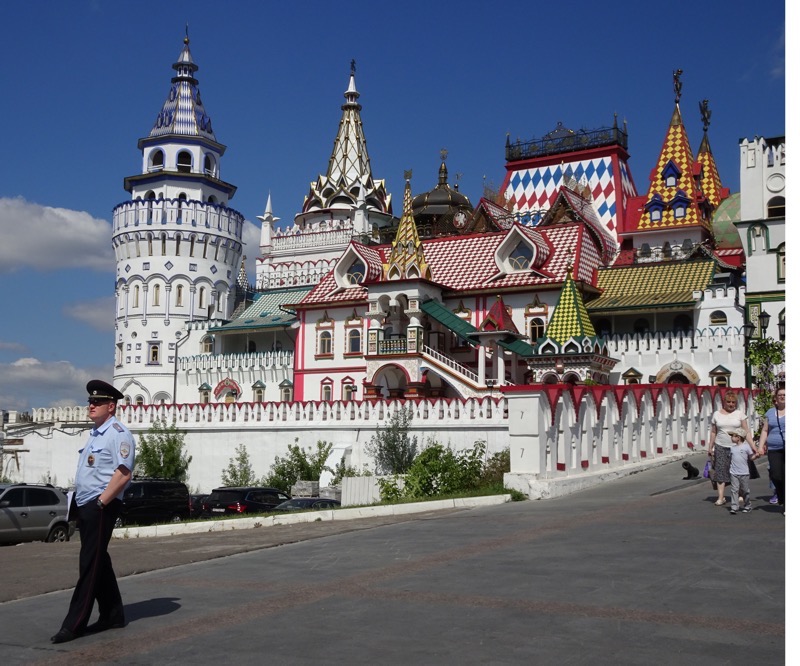
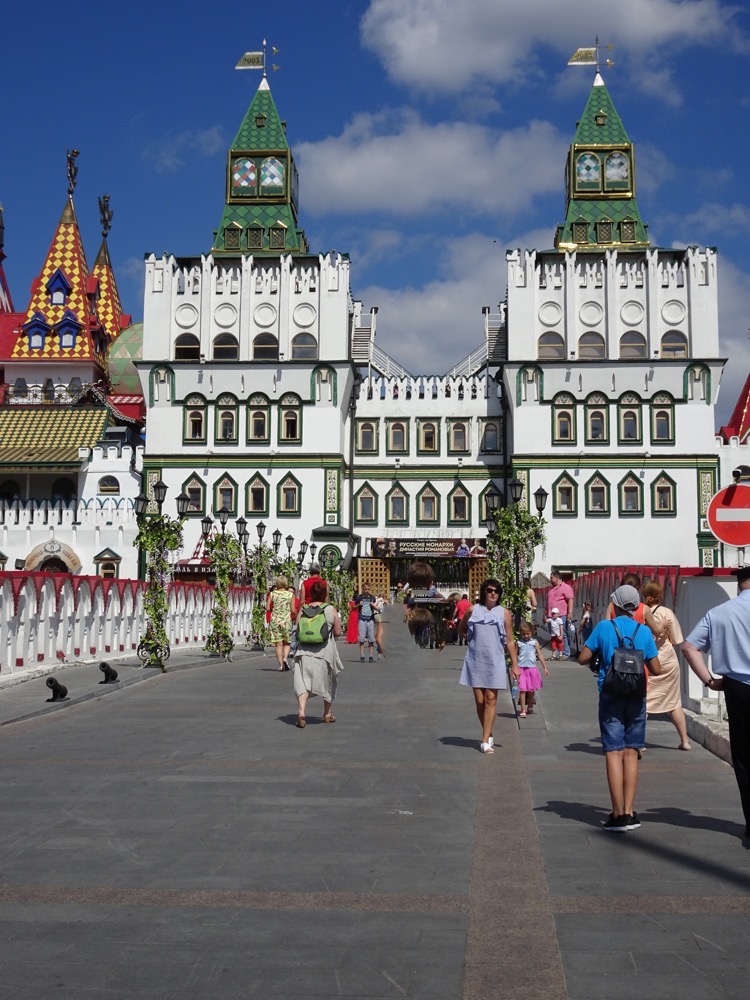
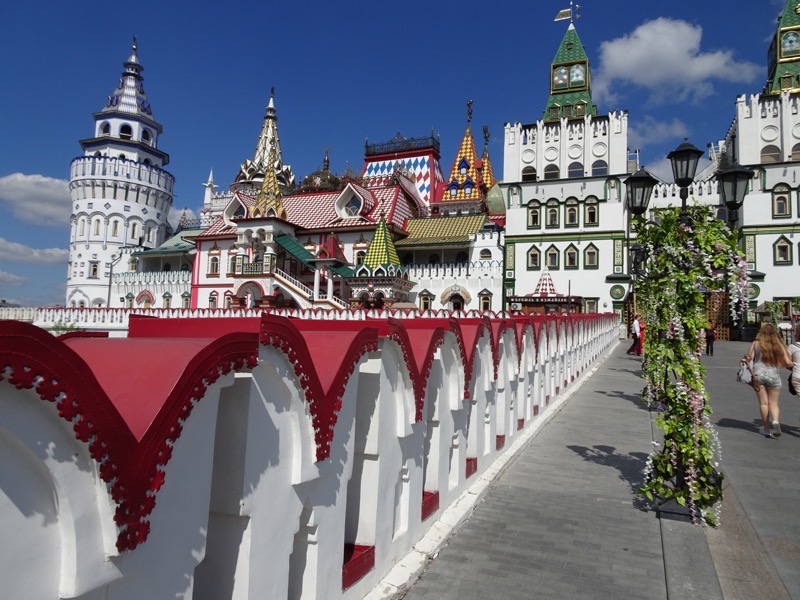

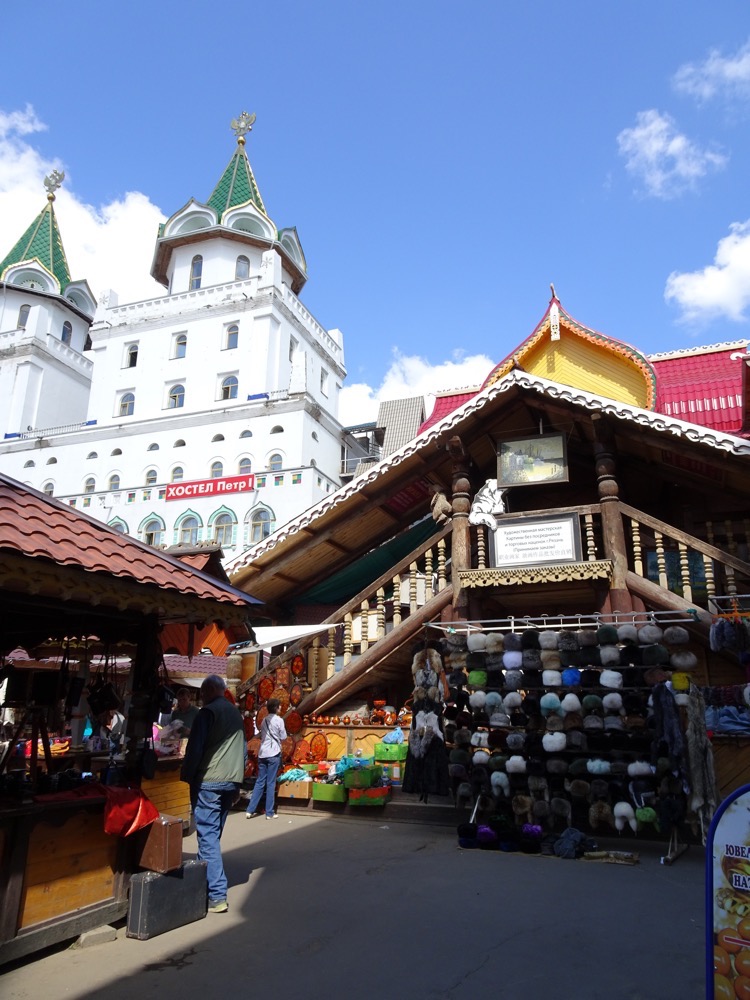

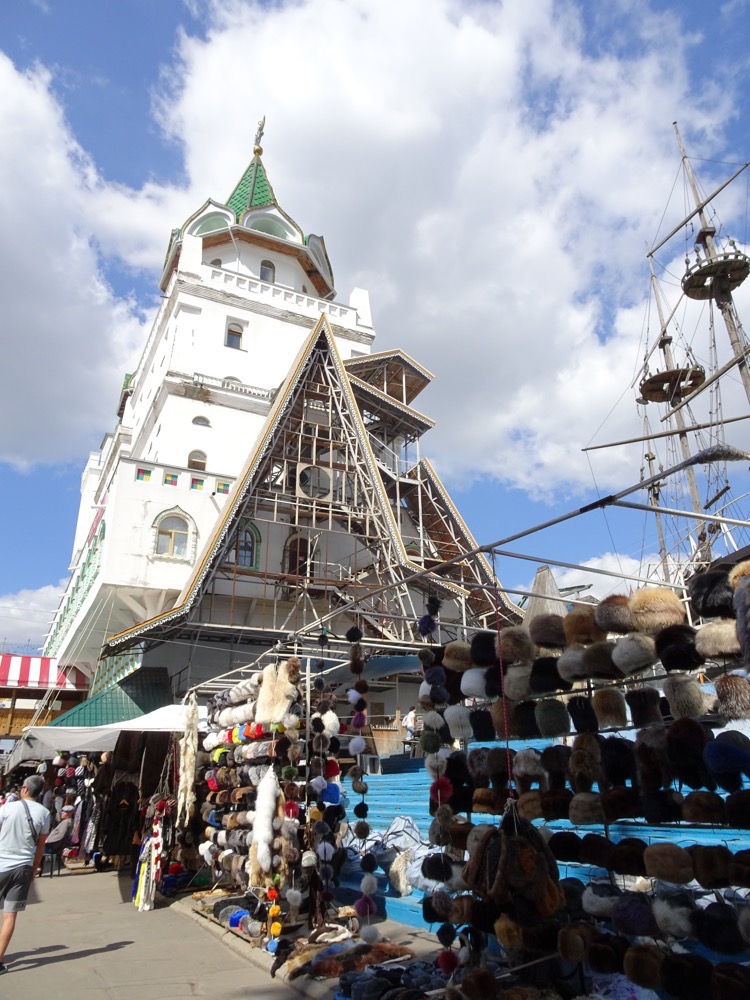
 The Izmailovsky Markets are Moscow’s largest flea markets. With plenty of permanent vendors selling all the usual tourist offerings – dolls, furs, scarves, ceramics, wooden wares – right along side part-time or one-off vendors, selling collectable coins, military paraphernalia, tools, lapidary supplies, Soviet era memorabilia, gemstones and bayonets and spare magazines for your AK47.
The Izmailovsky Markets are Moscow’s largest flea markets. With plenty of permanent vendors selling all the usual tourist offerings – dolls, furs, scarves, ceramics, wooden wares – right along side part-time or one-off vendors, selling collectable coins, military paraphernalia, tools, lapidary supplies, Soviet era memorabilia, gemstones and bayonets and spare magazines for your AK47.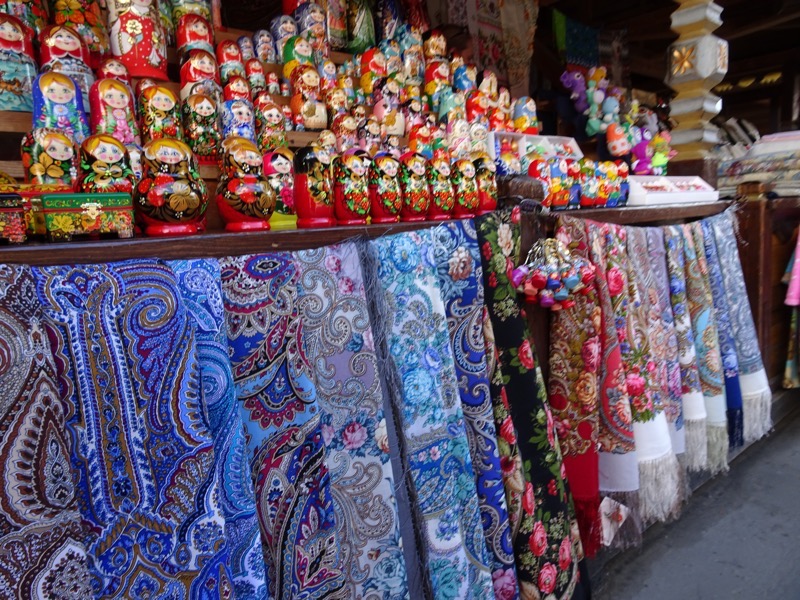
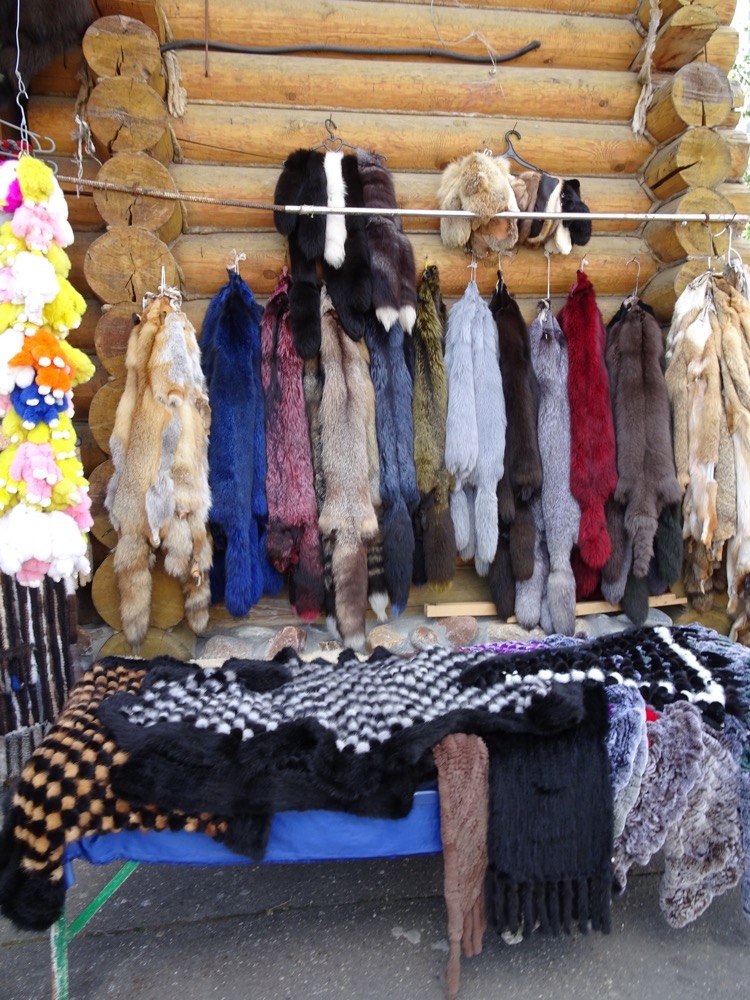
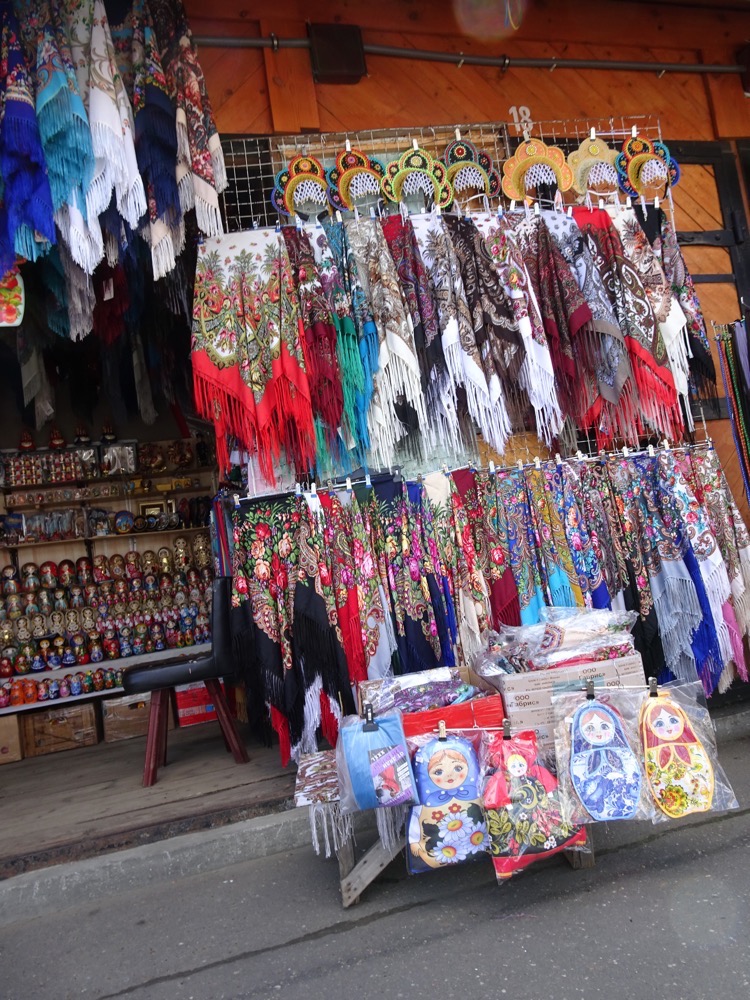
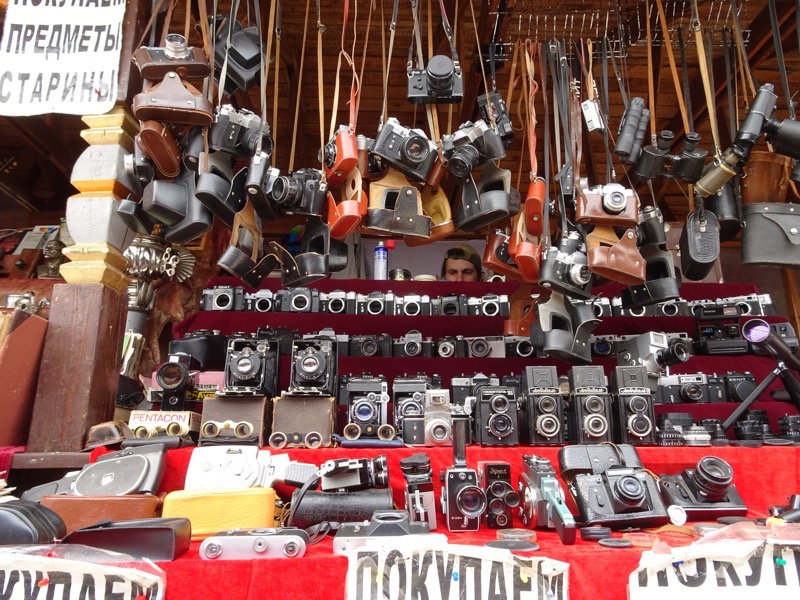


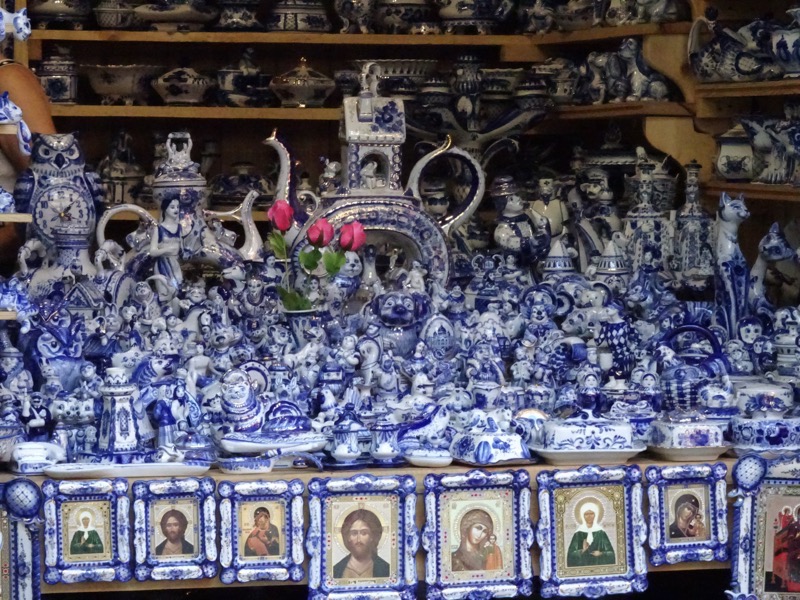
 So many dolls!
So many dolls!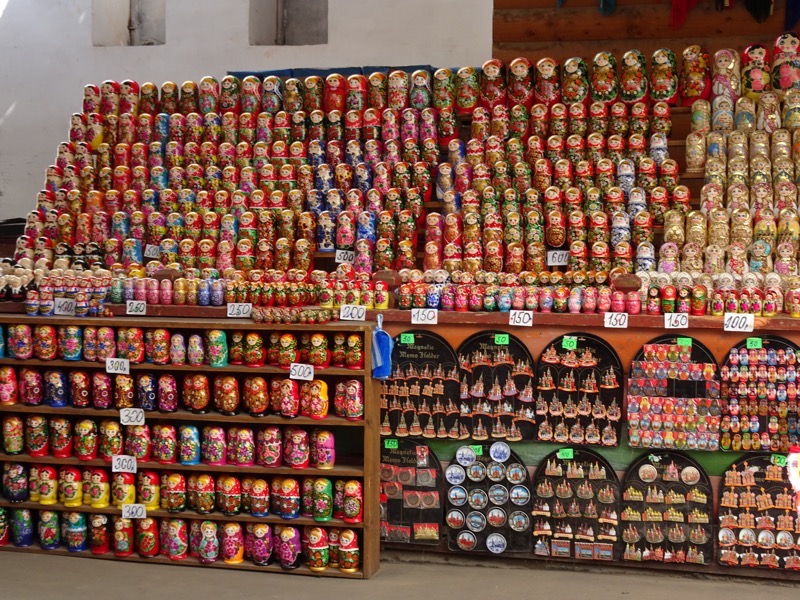
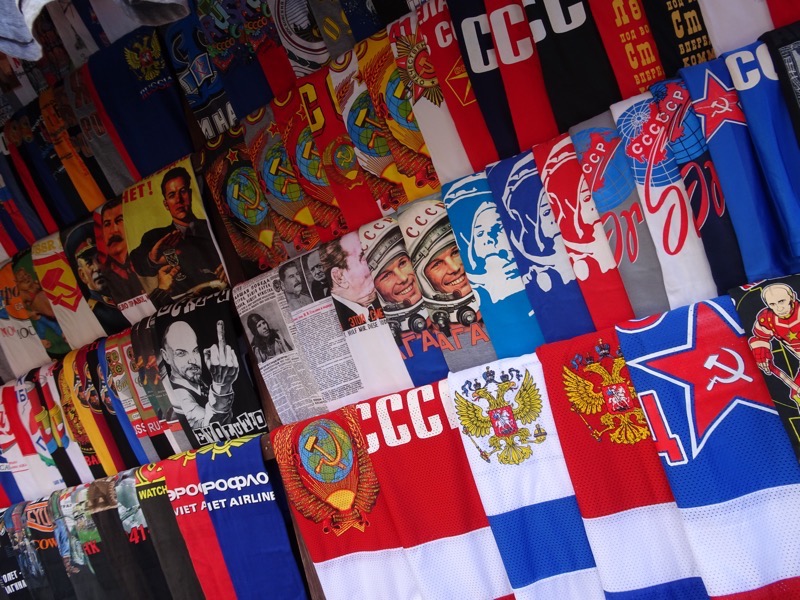




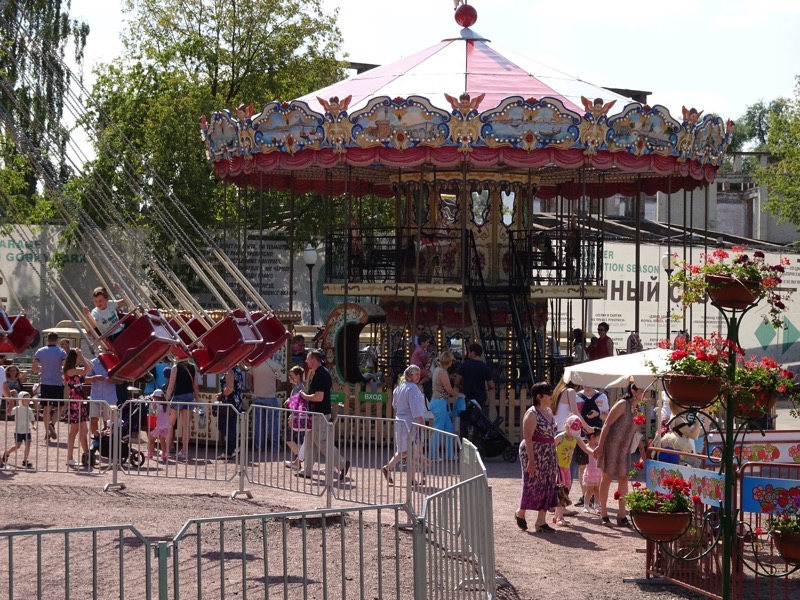
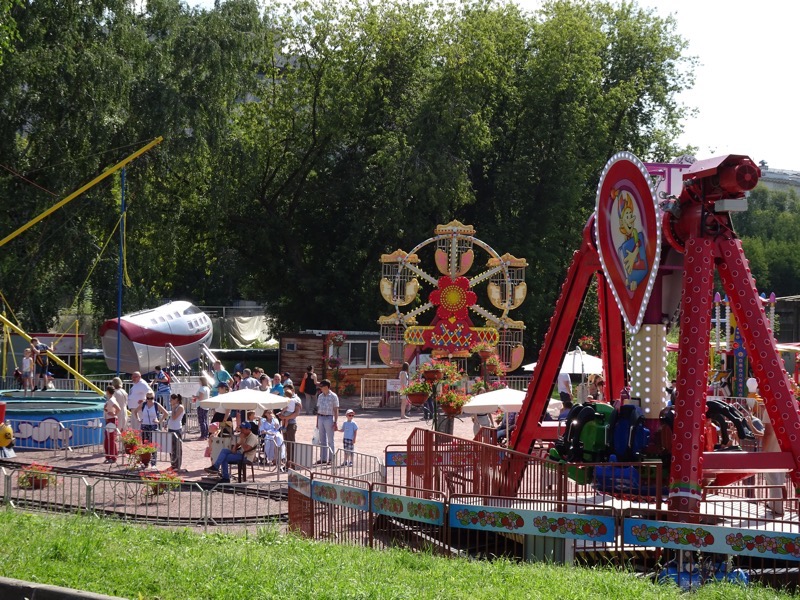
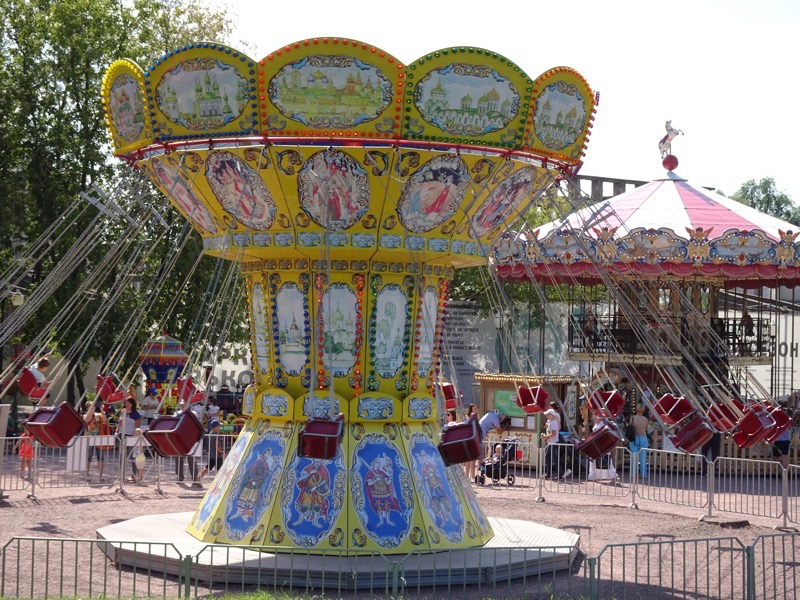
 Around the Central House of Artists are a number of these large pavillions where local artists are exhibiting and presumably selling their paintings. The artistic genres and styles vary as much as the subject matter, and it is a great place to see how Muscovites are interpreting and representing their experiences here. The artworks were very impressive, if they were not so annoying to transport home, I would have loved to have delved in and chosen a special piece.
Around the Central House of Artists are a number of these large pavillions where local artists are exhibiting and presumably selling their paintings. The artistic genres and styles vary as much as the subject matter, and it is a great place to see how Muscovites are interpreting and representing their experiences here. The artworks were very impressive, if they were not so annoying to transport home, I would have loved to have delved in and chosen a special piece.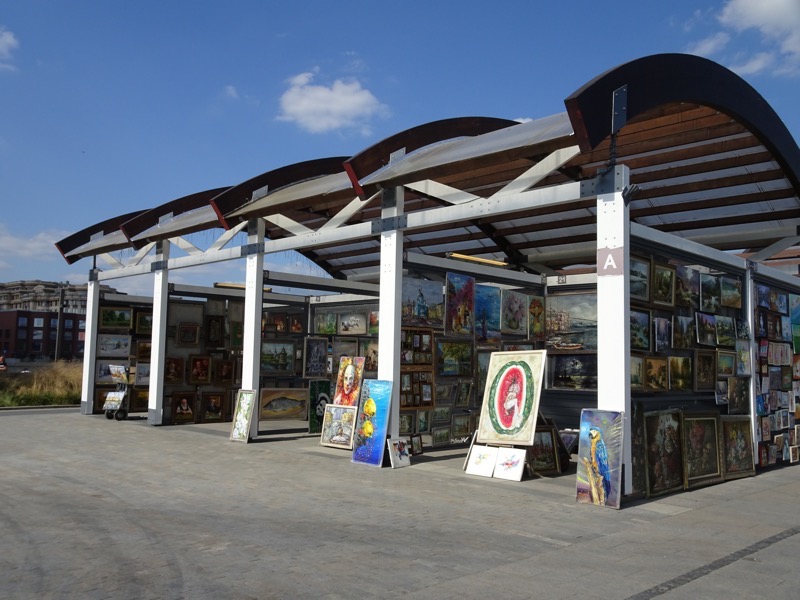
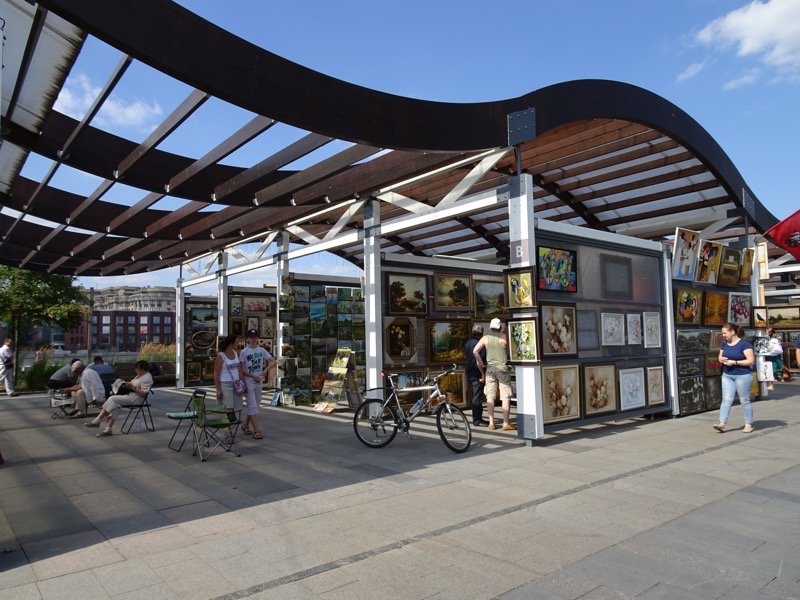
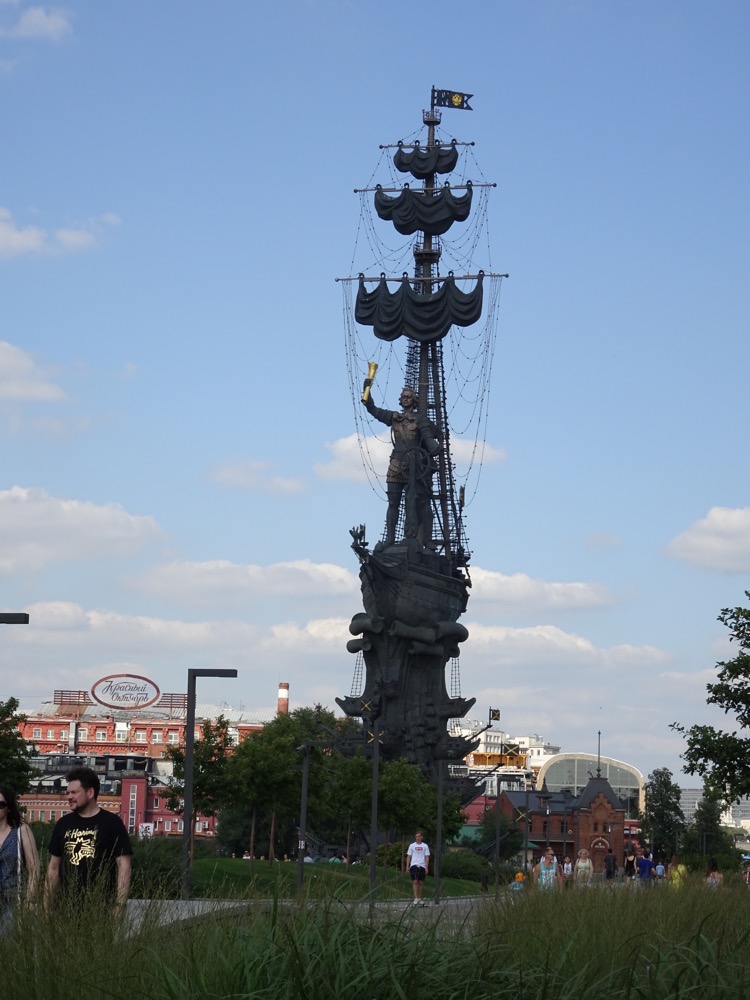

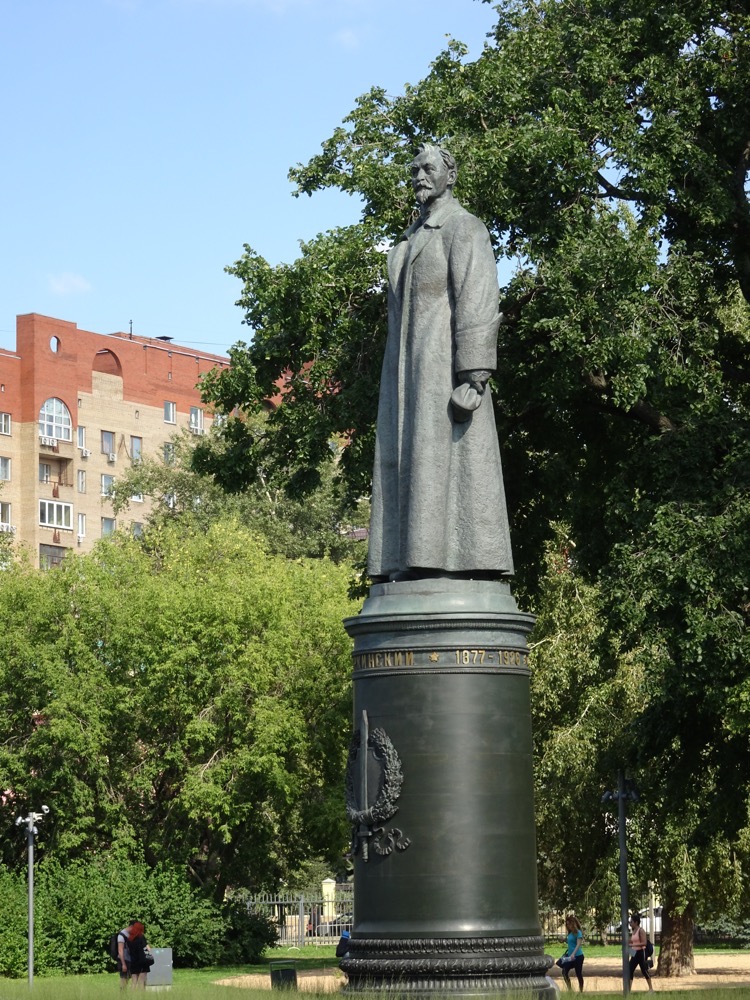
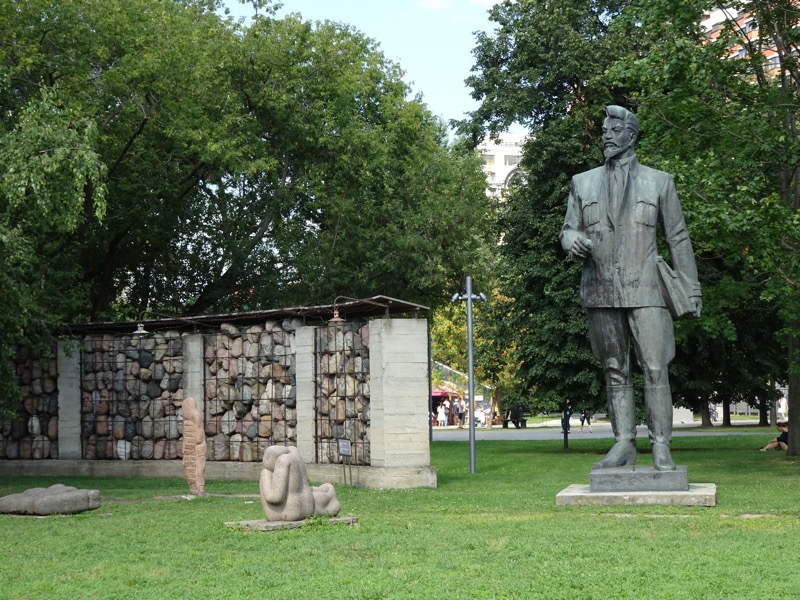
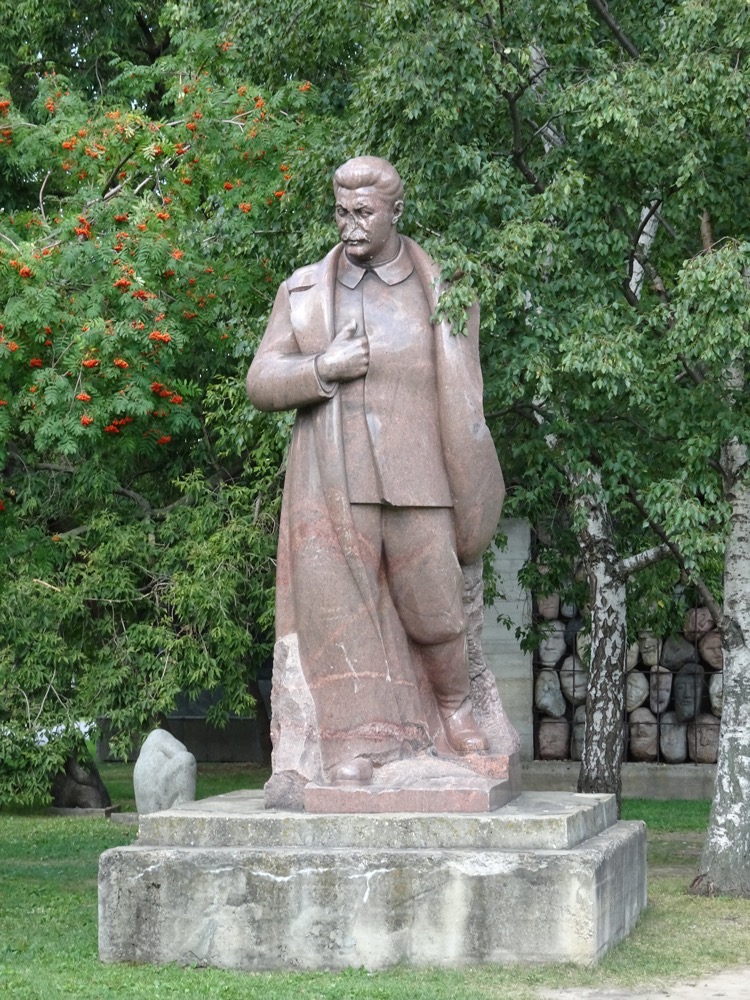
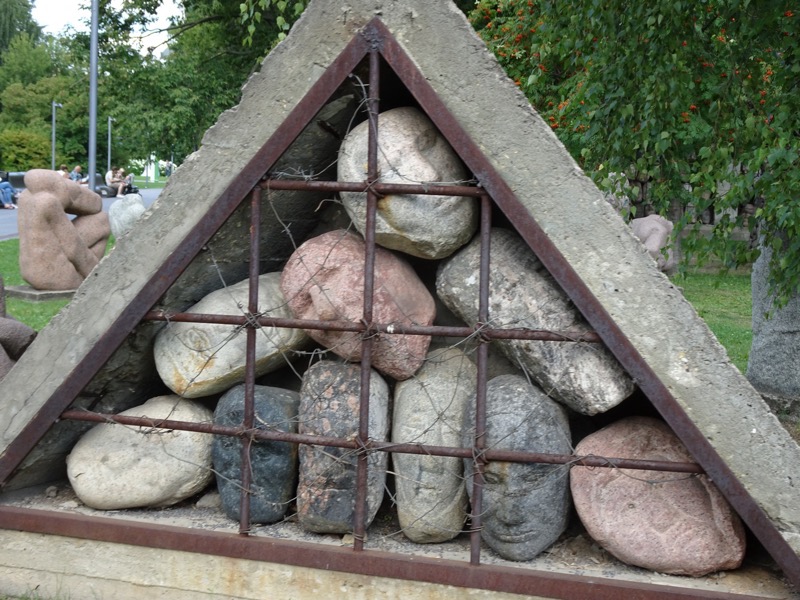
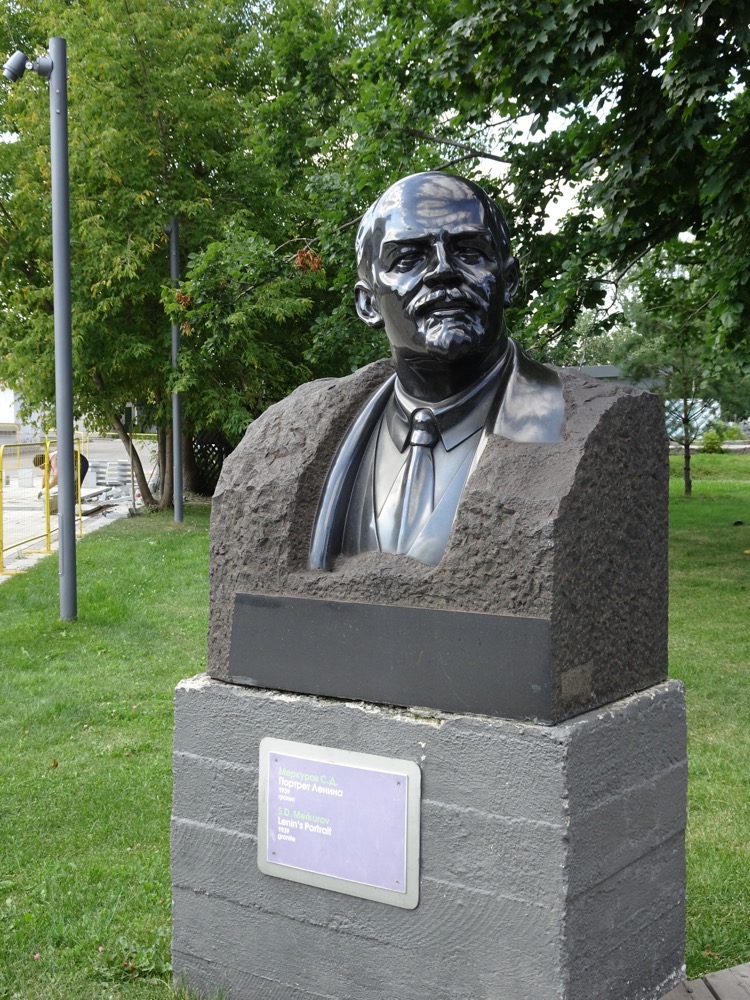
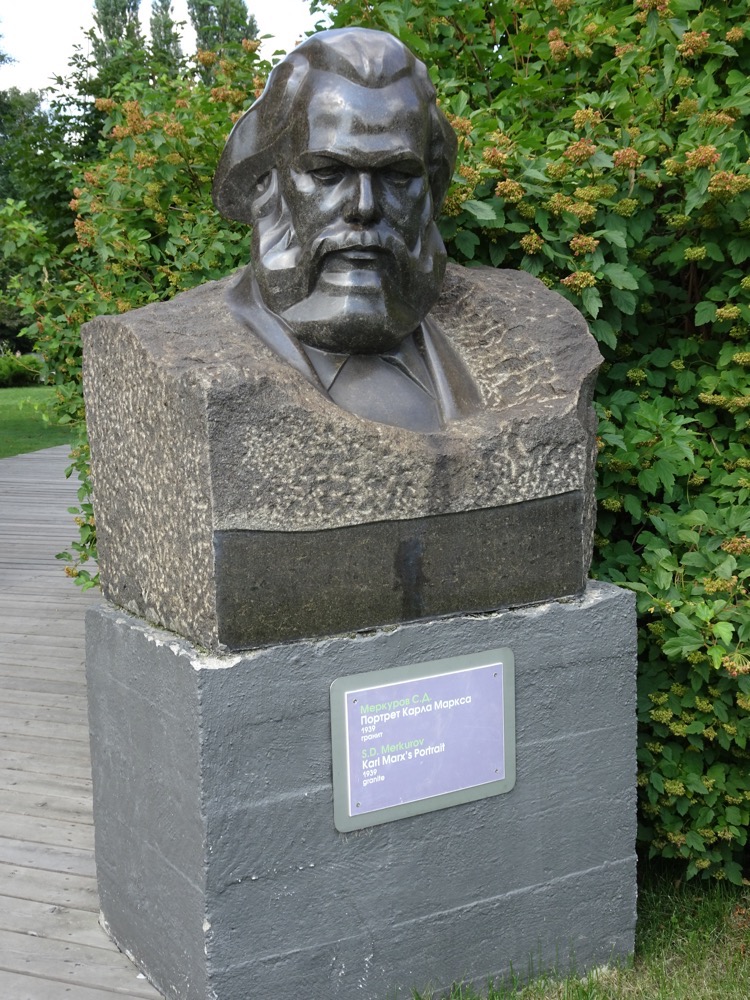

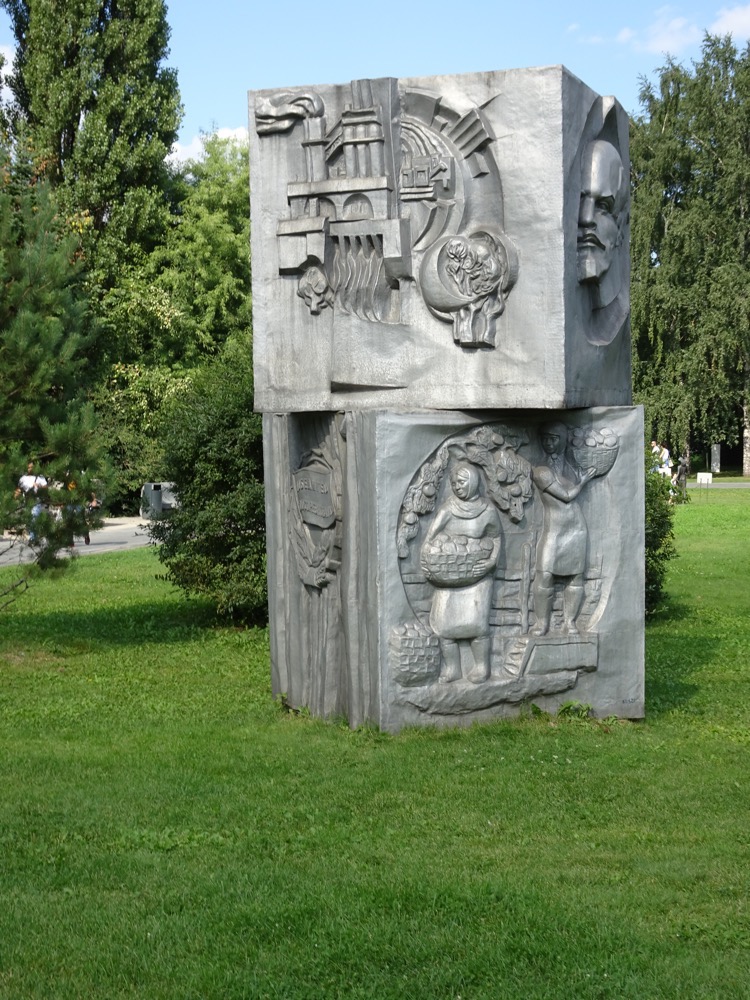


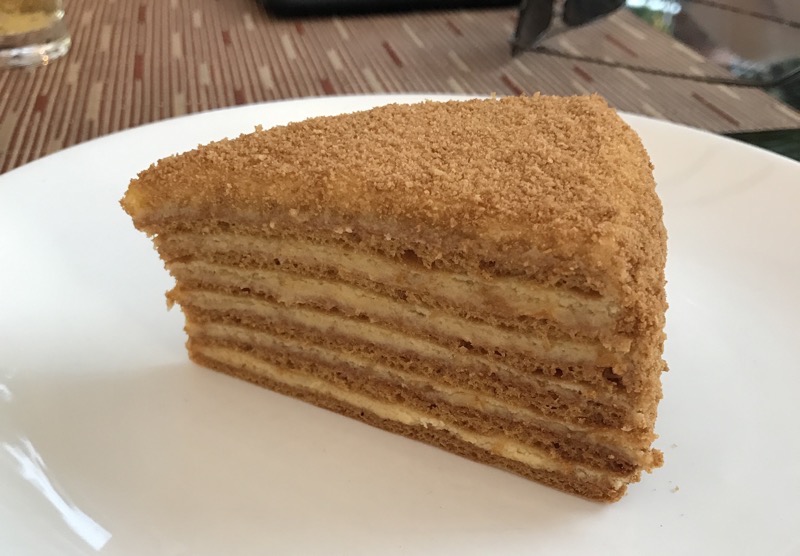
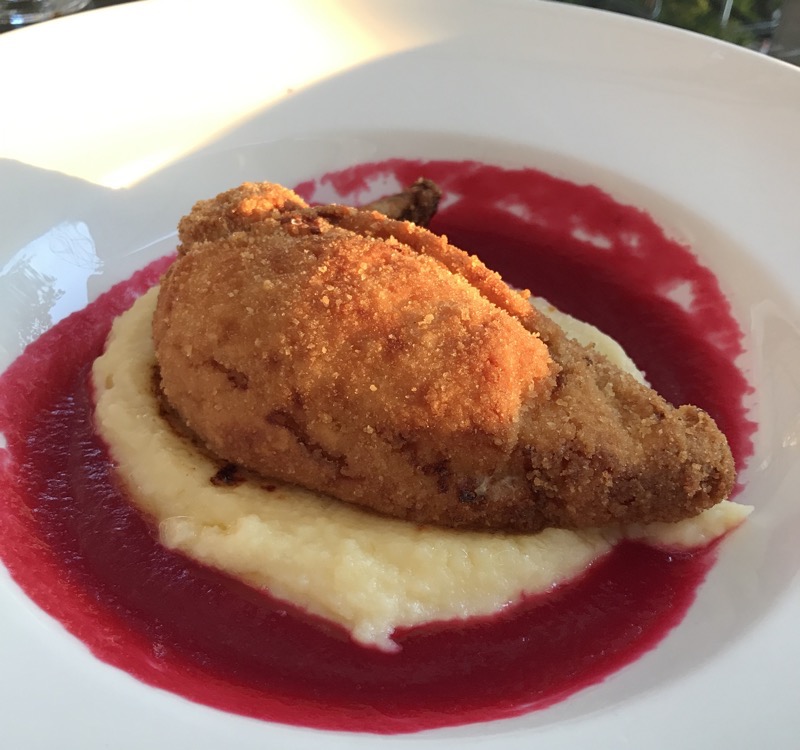
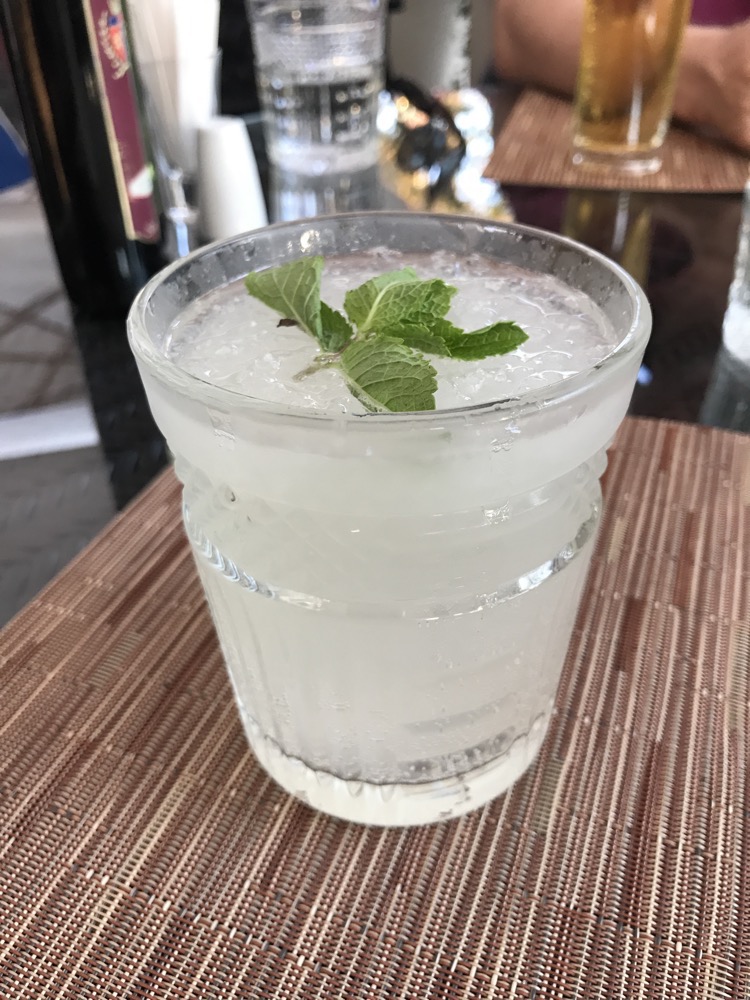
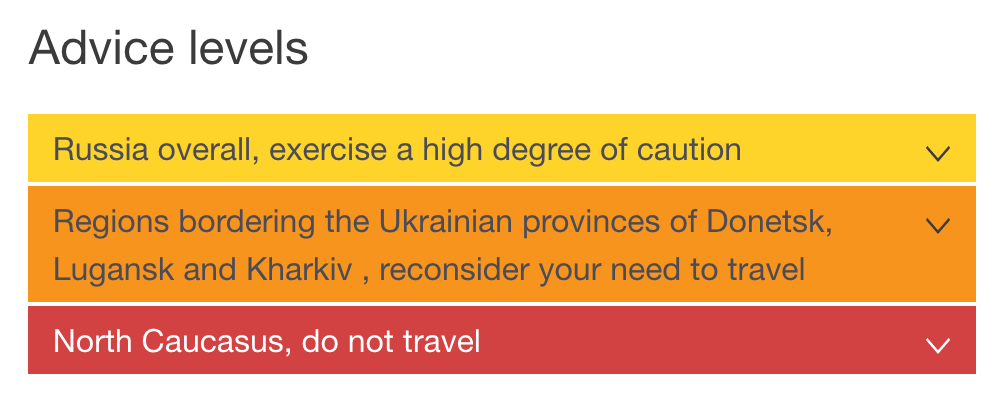 Overall, I have to ask… ‘exercise a high degree of caution’. Yeah. Why exactly? We have thoroughly enjoyed our time here and are looking forward to seeing St Petersburg in a few weeks on the way back too.
Overall, I have to ask… ‘exercise a high degree of caution’. Yeah. Why exactly? We have thoroughly enjoyed our time here and are looking forward to seeing St Petersburg in a few weeks on the way back too.
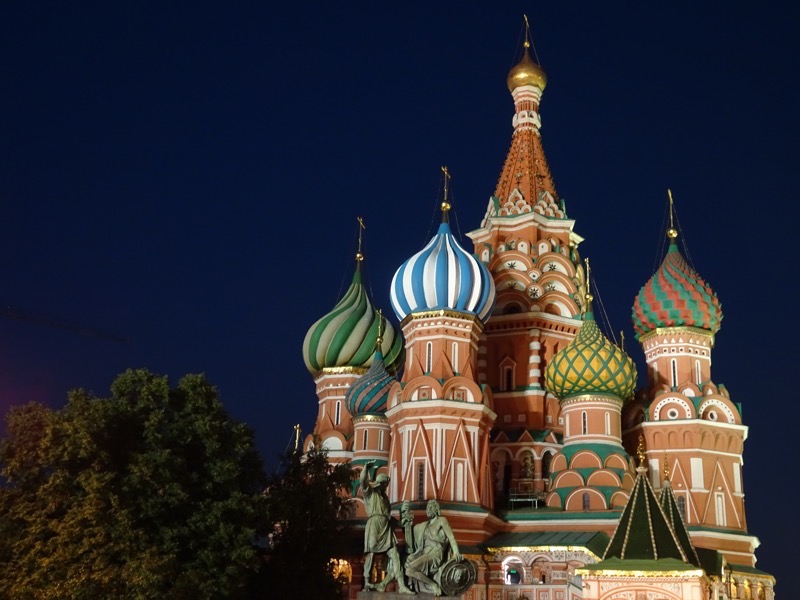
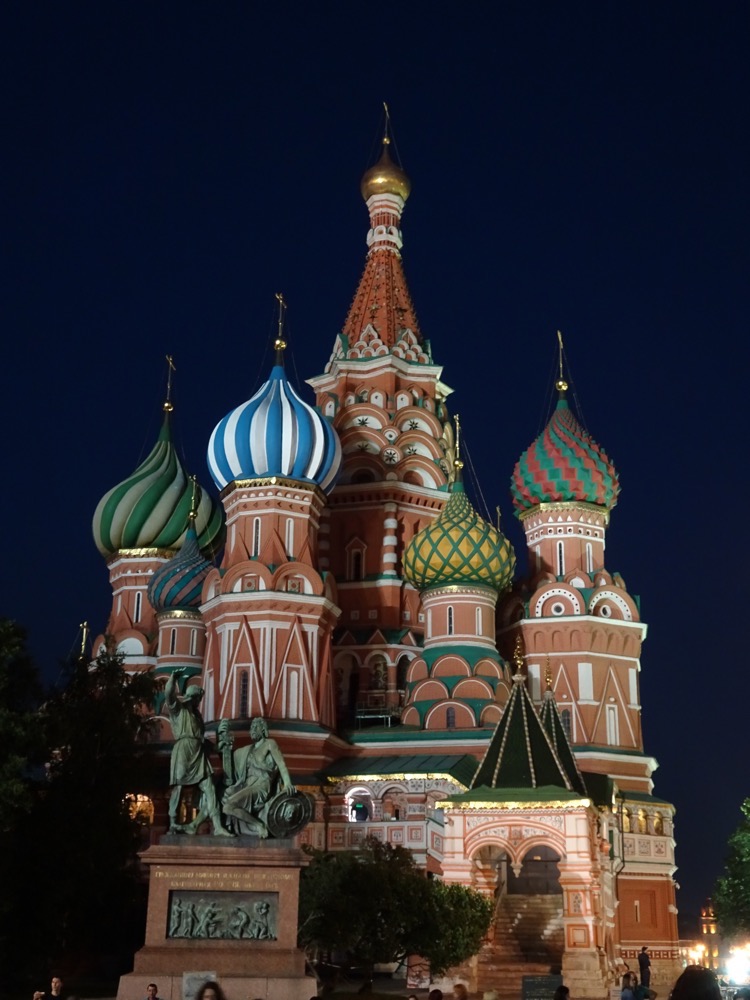
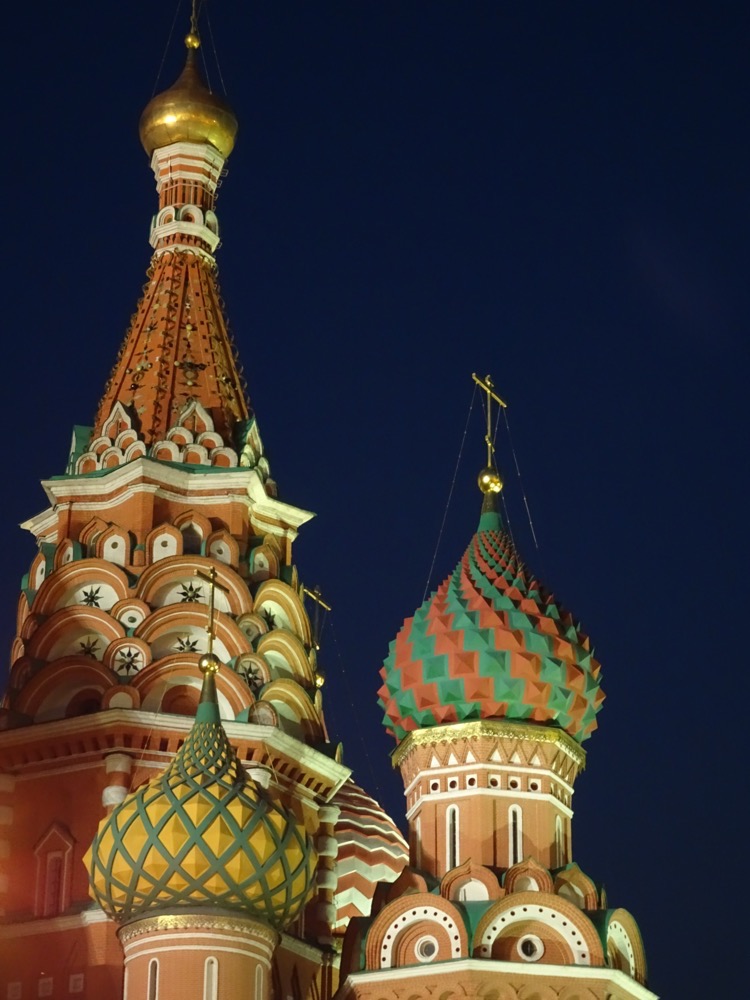 I am just in love with this building. It is simply spectacular.
I am just in love with this building. It is simply spectacular.
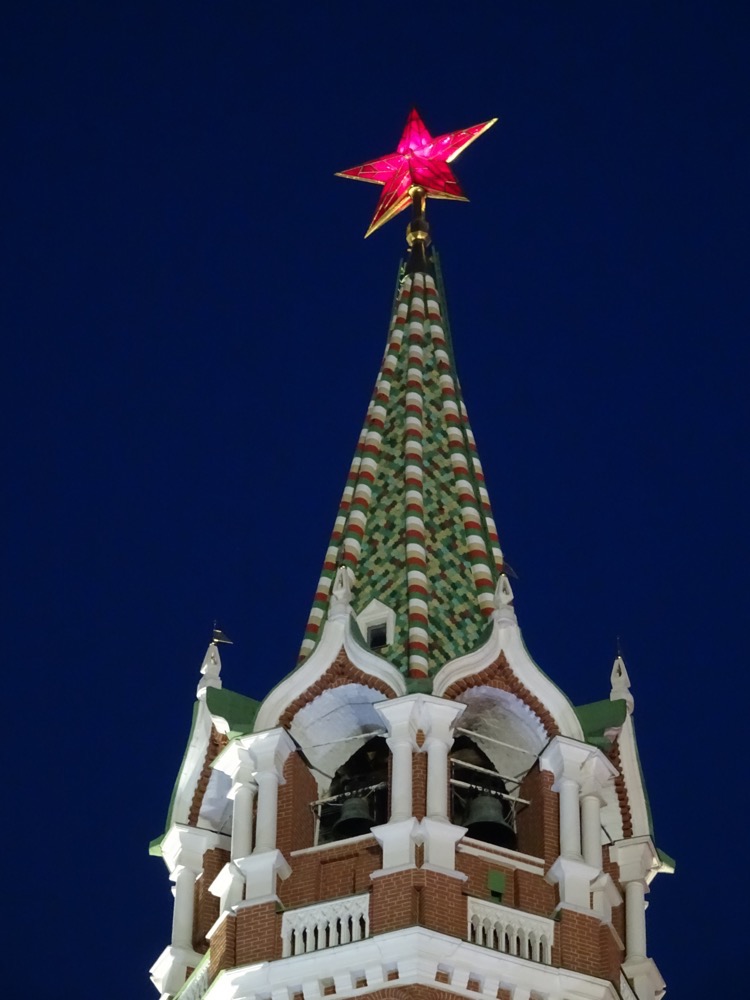


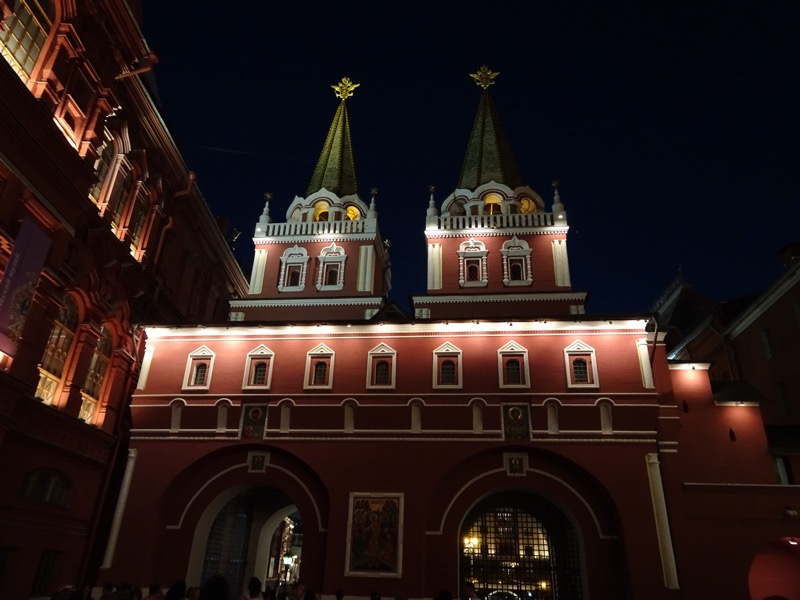
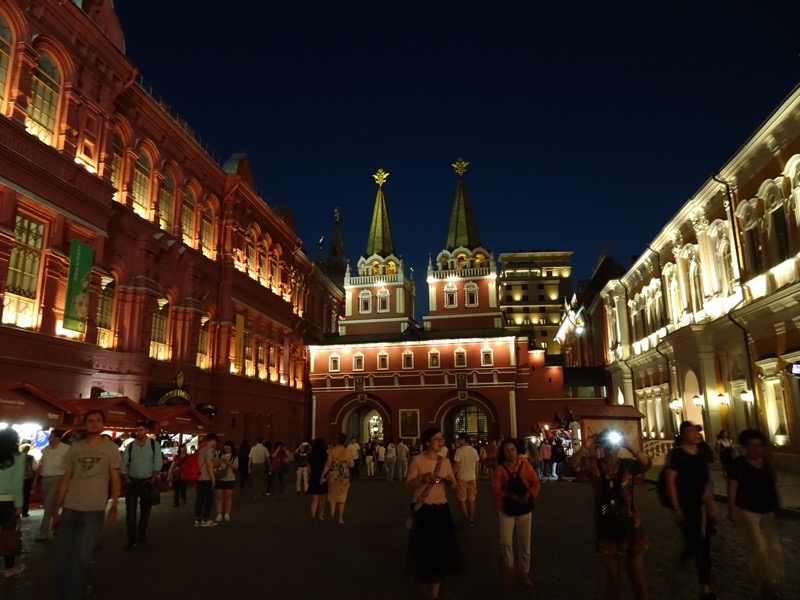
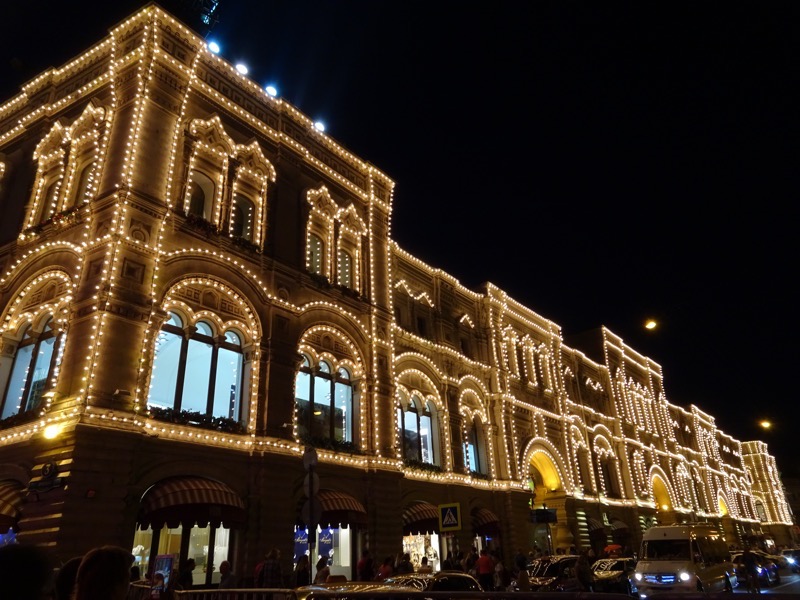 So I got some night pictures and was very happy with my wash. Another big day. Off to the hotel with us after that – we have an early start tomorrow to transit to Stockholm… and I was now officially ‘trudging’ all the way there. My poor feet!
So I got some night pictures and was very happy with my wash. Another big day. Off to the hotel with us after that – we have an early start tomorrow to transit to Stockholm… and I was now officially ‘trudging’ all the way there. My poor feet! Such an impressively unique building.
Such an impressively unique building. 
 Spasskaya Tower – currently the exit from the Moscow Kremlin State Museum precinct, which we are going to explore this morning before doubling back on St Basil’s to go inside once it is open.
Spasskaya Tower – currently the exit from the Moscow Kremlin State Museum precinct, which we are going to explore this morning before doubling back on St Basil’s to go inside once it is open. Red Square – currently drowning in bleachers under construction for an upcoming military tattoo.
Red Square – currently drowning in bleachers under construction for an upcoming military tattoo. So, first up the Kremlin. We arrived early to line up and get tickets – along with everyone else it seems! No Red Square was empty! There were hundreds of people queued here to buy tickets to enter the complex. Mr K, who like me, tends to do some research before arriving at our destination, walked right around the queues and used an automated machine in the ticket hall to buy our tickets! An hour saved right there… at least! We did, however, line up with massive lines of tour groups at the entrance gates – for about 15 minutes before realising they were staggering the entry of said large tour groups, and that people who were entering on their own could just march right around those huge groups and walk on in… which we promptly did once it dawned on us. This is one of the disadvantages of not speaking the language – there were possibly plenty of people around us saying that the long queue was for tour groups only, but we couldn’t read any of the signs and couldn’t overhear any instructions. Oh well.
So, first up the Kremlin. We arrived early to line up and get tickets – along with everyone else it seems! No Red Square was empty! There were hundreds of people queued here to buy tickets to enter the complex. Mr K, who like me, tends to do some research before arriving at our destination, walked right around the queues and used an automated machine in the ticket hall to buy our tickets! An hour saved right there… at least! We did, however, line up with massive lines of tour groups at the entrance gates – for about 15 minutes before realising they were staggering the entry of said large tour groups, and that people who were entering on their own could just march right around those huge groups and walk on in… which we promptly did once it dawned on us. This is one of the disadvantages of not speaking the language – there were possibly plenty of people around us saying that the long queue was for tour groups only, but we couldn’t read any of the signs and couldn’t overhear any instructions. Oh well.

 A medieval casket
A medieval casket I tried to sneak a photograph of this drinking vessel – it was made in Nuremberg in the 1600s in the shape of a crowned person with chicken’s feet. These style of goblets were made to be kept in cupboards to amuse guests, but not for actual use…?
I tried to sneak a photograph of this drinking vessel – it was made in Nuremberg in the 1600s in the shape of a crowned person with chicken’s feet. These style of goblets were made to be kept in cupboards to amuse guests, but not for actual use…? 



 Fresco of the Virgin Mary and the Archangels Micheal and Gabriel.
Fresco of the Virgin Mary and the Archangels Micheal and Gabriel.
 There are 246 scenes painted in the frescoes inside the church with 2066 individuals depicted… no, I didn’t count them, that is what guide books are for!
There are 246 scenes painted in the frescoes inside the church with 2066 individuals depicted… no, I didn’t count them, that is what guide books are for!

 Across Cathedral Square from the Uspensky Sobor, is the Arkhangelsky Sobor, Archangel Cathedral of the Moscow Kremlin, which is a Russian Orthodox church dedicated (oddly enough) to the Archangel Michael. It sits between the Great Kremlin Palace and the Ivan the Great Bell Tower and is the main necropolis of all the Tsars of Russia until the capital was relocated to St Petersburg. The cathedral was built by another Italian architect, Aloisio the New in 1505-08, on top of an older cathedral that was on this site since 1333. The inside of this Cathedral is also a no-photo zone and the museum staff were very diligent and very stern here. The interior is similar in style to the Assumption Cathedral, but this place is full of stone tombs, taking up nearly every bit of floor space.
Across Cathedral Square from the Uspensky Sobor, is the Arkhangelsky Sobor, Archangel Cathedral of the Moscow Kremlin, which is a Russian Orthodox church dedicated (oddly enough) to the Archangel Michael. It sits between the Great Kremlin Palace and the Ivan the Great Bell Tower and is the main necropolis of all the Tsars of Russia until the capital was relocated to St Petersburg. The cathedral was built by another Italian architect, Aloisio the New in 1505-08, on top of an older cathedral that was on this site since 1333. The inside of this Cathedral is also a no-photo zone and the museum staff were very diligent and very stern here. The interior is similar in style to the Assumption Cathedral, but this place is full of stone tombs, taking up nearly every bit of floor space.
 There is a story of questionable origins, that when Napoleon invaded Moscow in 1812 after the Battle of Borodino, he attempted to remove the cross on the central dome of the Annunciation Cathedral because he had been told it was cast in solid gold. Apparently, he confused the cathedral with the Ivan the Great Bell Tower – the cross on which is only gilded iron. Anyway, the French engineers were unable to remove it from the tower and it was only after a Russian peasant volunteered to climb up to the dome to dismantle it, that the cross was eventually lowered down on ropes. As the story has it, when the peasant approached Napoleon seeking a reward, the little man had him shot for being a traitor to his fatherland. As I said, of questionable veracity, but interesting nonetheless.
There is a story of questionable origins, that when Napoleon invaded Moscow in 1812 after the Battle of Borodino, he attempted to remove the cross on the central dome of the Annunciation Cathedral because he had been told it was cast in solid gold. Apparently, he confused the cathedral with the Ivan the Great Bell Tower – the cross on which is only gilded iron. Anyway, the French engineers were unable to remove it from the tower and it was only after a Russian peasant volunteered to climb up to the dome to dismantle it, that the cross was eventually lowered down on ropes. As the story has it, when the peasant approached Napoleon seeking a reward, the little man had him shot for being a traitor to his fatherland. As I said, of questionable veracity, but interesting nonetheless.




 Scale model of the Cathedral.
Scale model of the Cathedral. Sanctuary of St Basil the Blessed.
Sanctuary of St Basil the Blessed.


 Holy Banners bearing the Image of the Mother of God “Eleuza” (“Tenderness) of St Serafim. c1904. Copper alloy, enamel, oil; forging, stamping, embossing, engraving, gilding, and painting on metal… WOW! These are unique monuments of the church made for the 350th anniversary of the launching of the construction of the Cathedral of the Protecting Veil.
Holy Banners bearing the Image of the Mother of God “Eleuza” (“Tenderness) of St Serafim. c1904. Copper alloy, enamel, oil; forging, stamping, embossing, engraving, gilding, and painting on metal… WOW! These are unique monuments of the church made for the 350th anniversary of the launching of the construction of the Cathedral of the Protecting Veil.



 I aslo took photos of the many interiors – the Cathedral is made up of nine interconnecting chapels, so it is a winding rabbit warren of archways, corridors and small chambers. All of which is lavishly covered in colourful frescoes. I can’t include many of the photos I took here (yale will kill me for the number of images in this post already!), but here are some samples of what is inside…
I aslo took photos of the many interiors – the Cathedral is made up of nine interconnecting chapels, so it is a winding rabbit warren of archways, corridors and small chambers. All of which is lavishly covered in colourful frescoes. I can’t include many of the photos I took here (yale will kill me for the number of images in this post already!), but here are some samples of what is inside…
 Detail of frescoes:
Detail of frescoes:

 Floor – stamped copper? bronze?
Floor – stamped copper? bronze? Inside the domes:
Inside the domes: One of the cathedral altars:
One of the cathedral altars:

 Detail of the painting on the alter panels:
Detail of the painting on the alter panels:







 Everything inside is so lavishly decorated… but there are also museum artefacts in here too – most dating from the 16th to 17th centuries.
Everything inside is so lavishly decorated… but there are also museum artefacts in here too – most dating from the 16th to 17th centuries. FETTERS: Moscow, 17th century. Forged and engraved iron. Heavy chains and other metal articles such as bands, girdles and crosses. The wearing of fetters on one’s body became one of the types of Christian asceticism. Presumably the iron cap, cross and girdle belonged to St Ioann the Blessed, called the Big Cap…
FETTERS: Moscow, 17th century. Forged and engraved iron. Heavy chains and other metal articles such as bands, girdles and crosses. The wearing of fetters on one’s body became one of the types of Christian asceticism. Presumably the iron cap, cross and girdle belonged to St Ioann the Blessed, called the Big Cap…

 Church banners c.1930.
Church banners c.1930.

 Iron roof panel – forged and painted.
Iron roof panel – forged and painted. Examples of the colourful tiles on the external sections of the cathedral.
Examples of the colourful tiles on the external sections of the cathedral.

 Medieval locks.
Medieval locks. We finished up at St Basil’s around 2pm, I could have spent all day in there discovering the little chapels and photographing the tiny details of the place – but my camera battery went flat and I had to go find a cord so I could charge it over lunch. After we did this, we were having a slight change of pace and heading for the Memorial Museum of Cosmonautics which meant – hitting the Metro! Since we were going to be using the subway, we had looked up where some of the most beautiful and famous Metro stations were and circuitously planned our route to the Cosmonaut Museum via these stops.
We finished up at St Basil’s around 2pm, I could have spent all day in there discovering the little chapels and photographing the tiny details of the place – but my camera battery went flat and I had to go find a cord so I could charge it over lunch. After we did this, we were having a slight change of pace and heading for the Memorial Museum of Cosmonautics which meant – hitting the Metro! Since we were going to be using the subway, we had looked up where some of the most beautiful and famous Metro stations were and circuitously planned our route to the Cosmonaut Museum via these stops.










 So after our train adventures, we make it to the Cosmonauts Museum… which is probably all very exciting, but it turns out the bulk of the information available here is in Russian! I guess they don’t get many foreign tourists here either, as they were out of English audio guides. :/ Oh well, I have a bunch of photos so am adding them to a gallery here… Many of you may know more about all this than do!
So after our train adventures, we make it to the Cosmonauts Museum… which is probably all very exciting, but it turns out the bulk of the information available here is in Russian! I guess they don’t get many foreign tourists here either, as they were out of English audio guides. :/ Oh well, I have a bunch of photos so am adding them to a gallery here… Many of you may know more about all this than do!





 And their space craft…
And their space craft…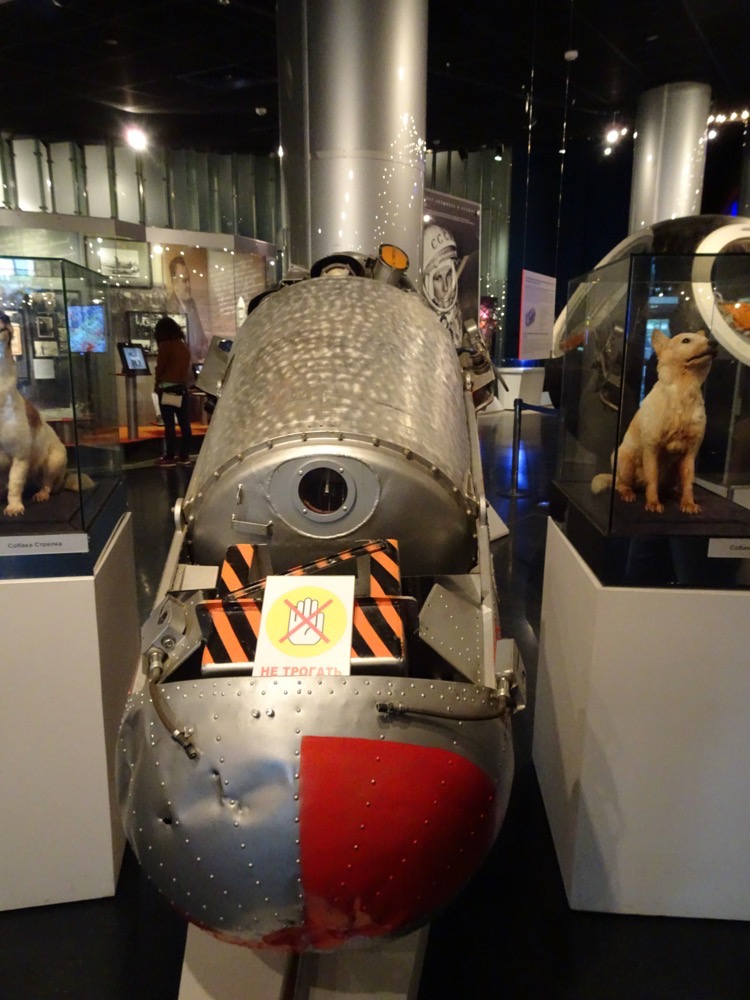
 And what Russian Cosmonautics Museum would be complete without a mixed genre modern art exhibition in a random corridor!
And what Russian Cosmonautics Museum would be complete without a mixed genre modern art exhibition in a random corridor!